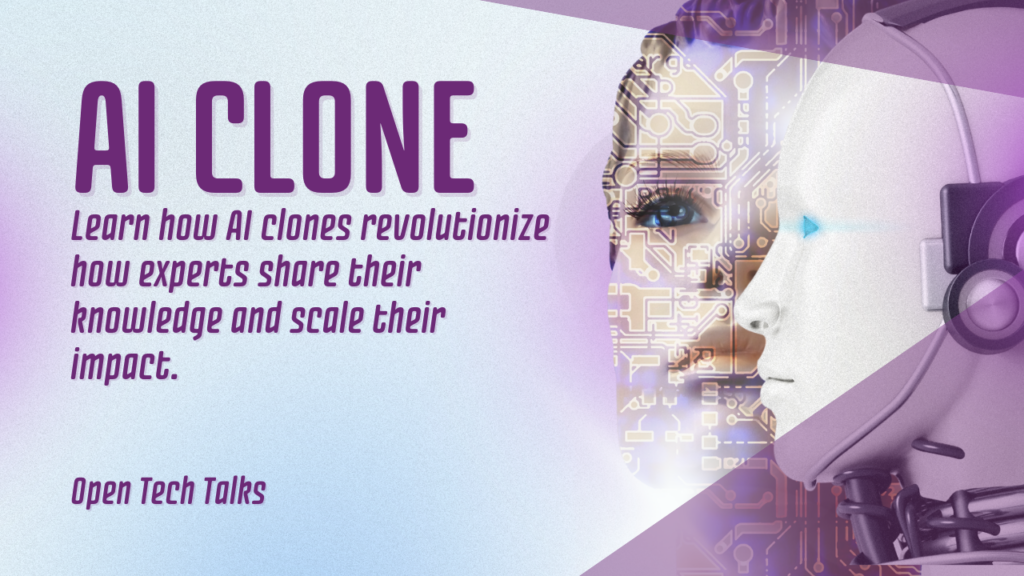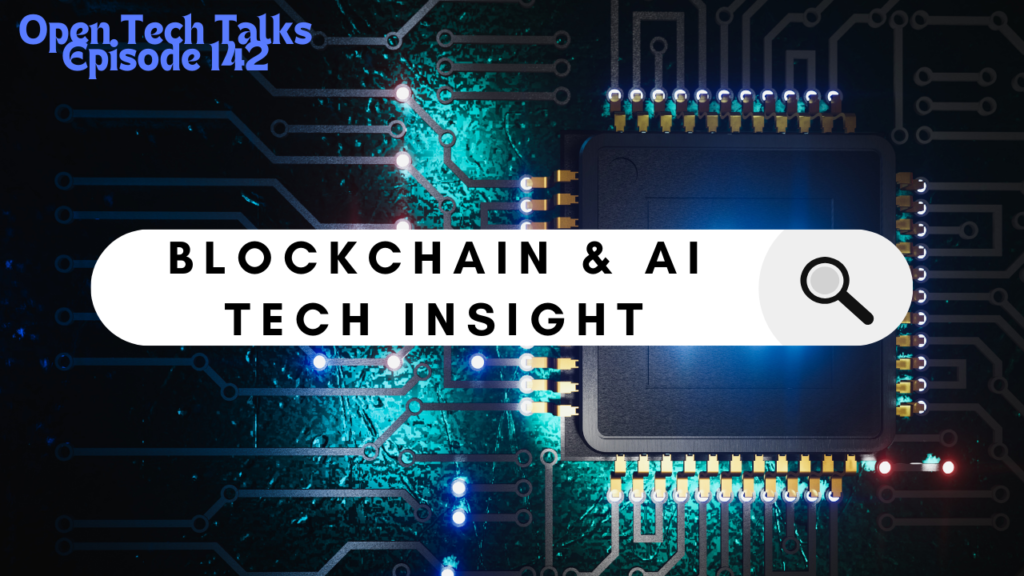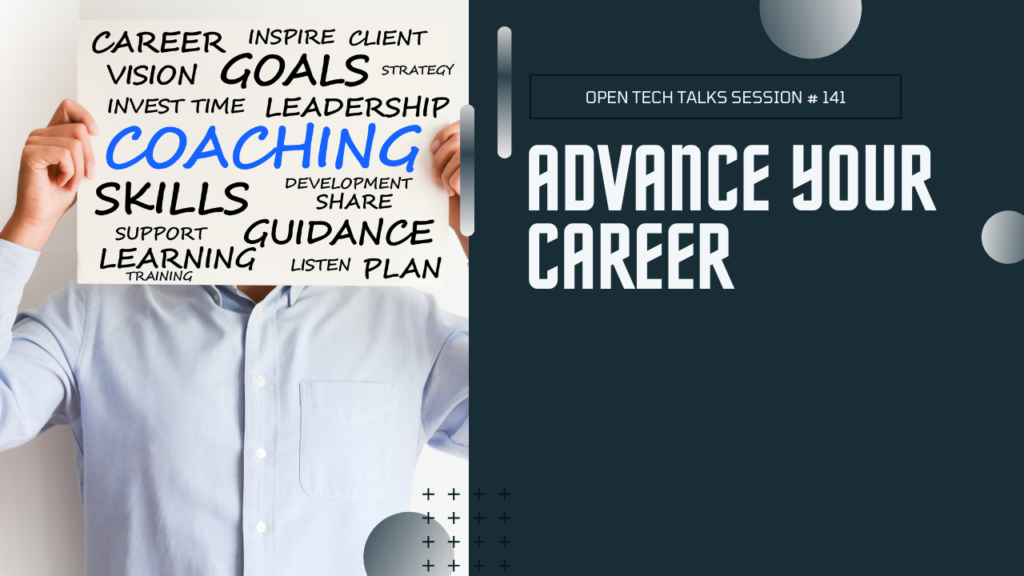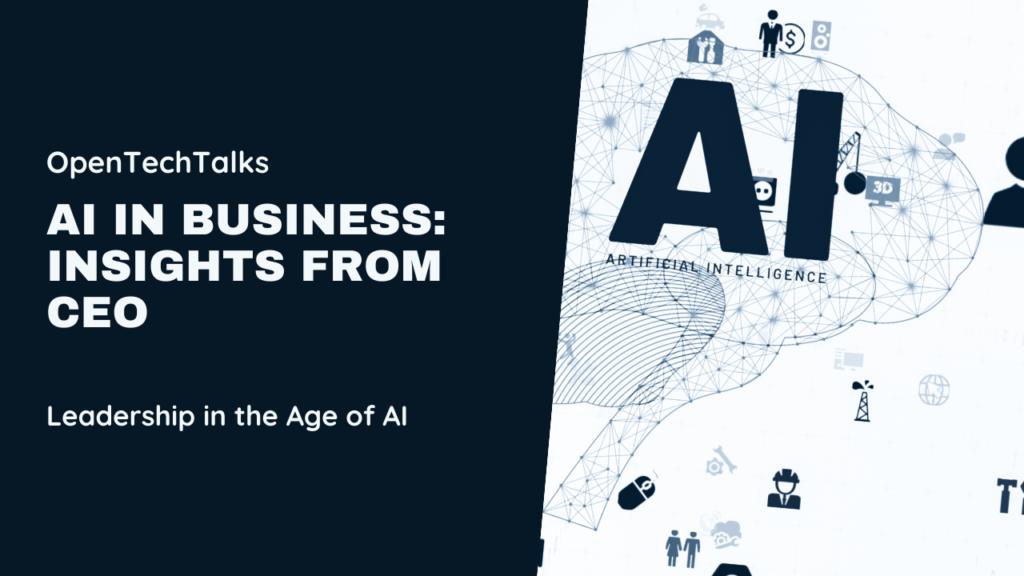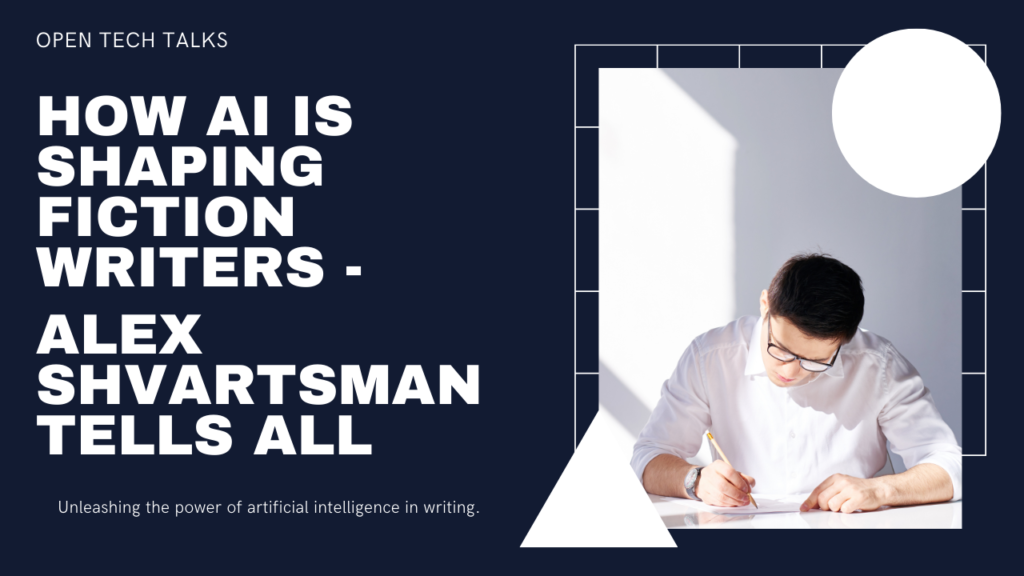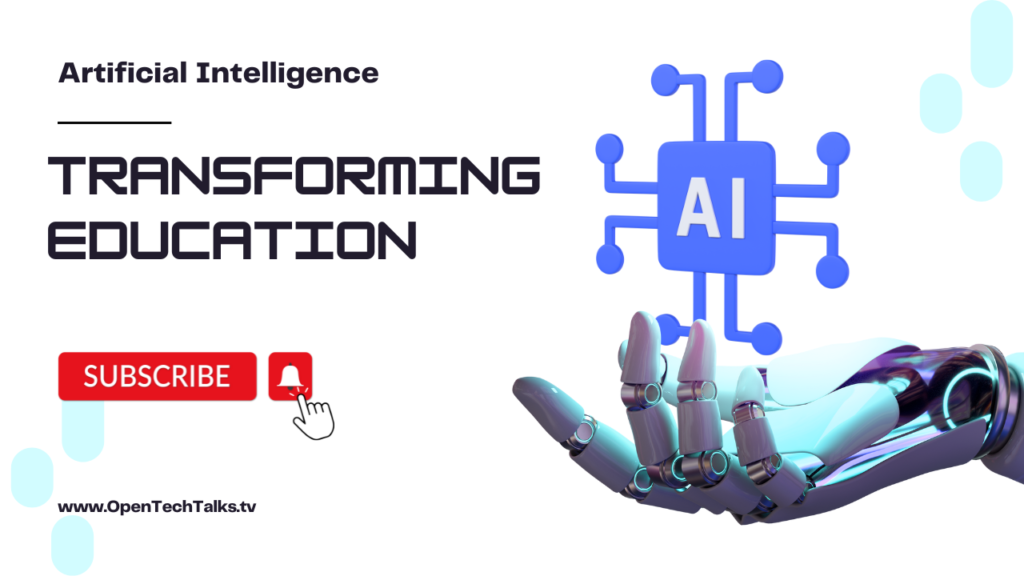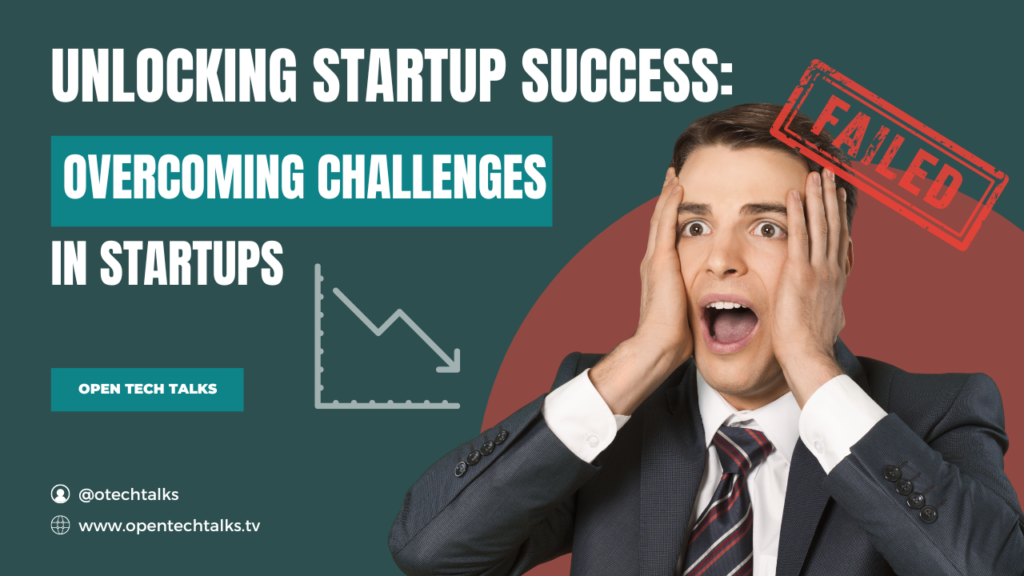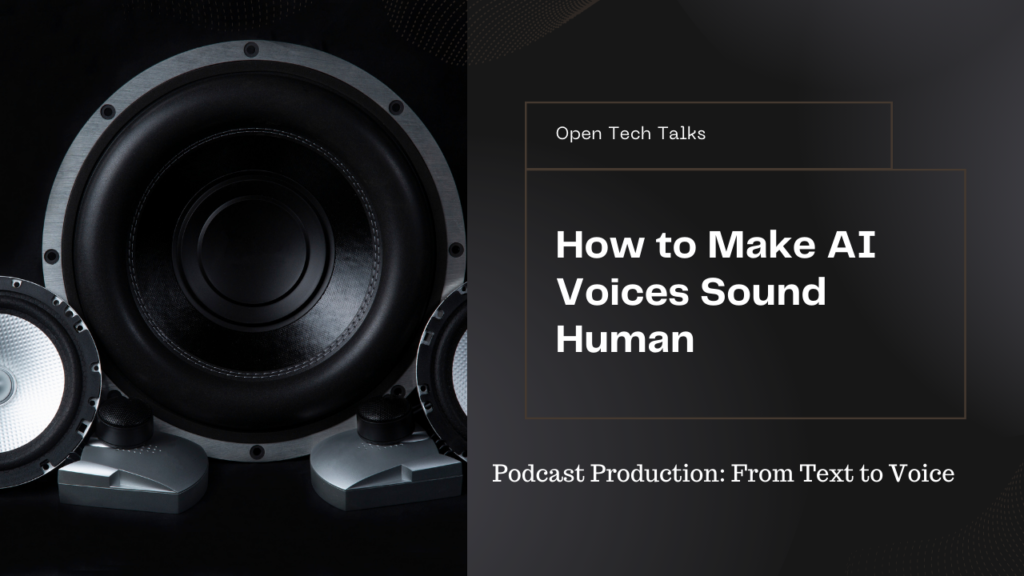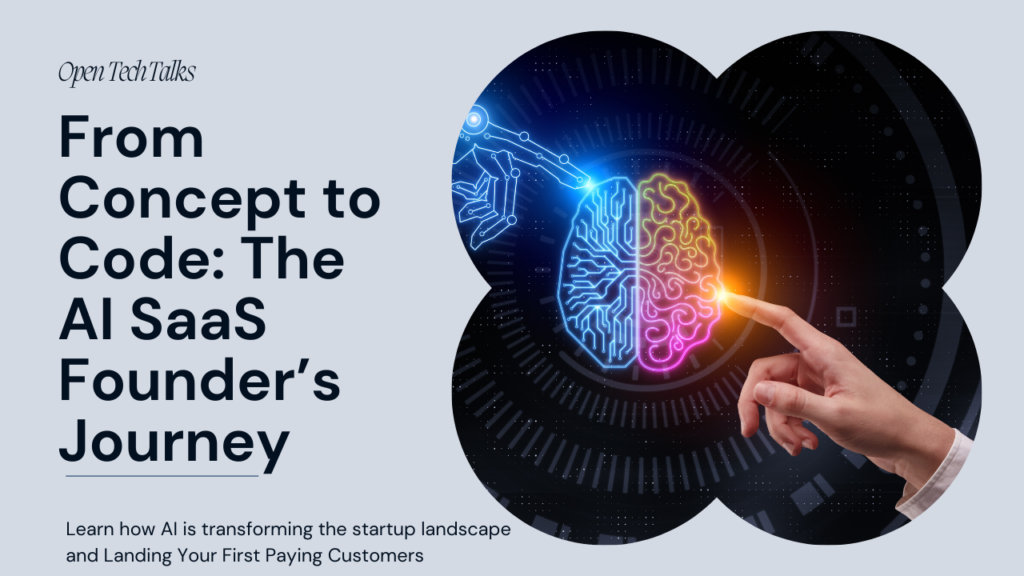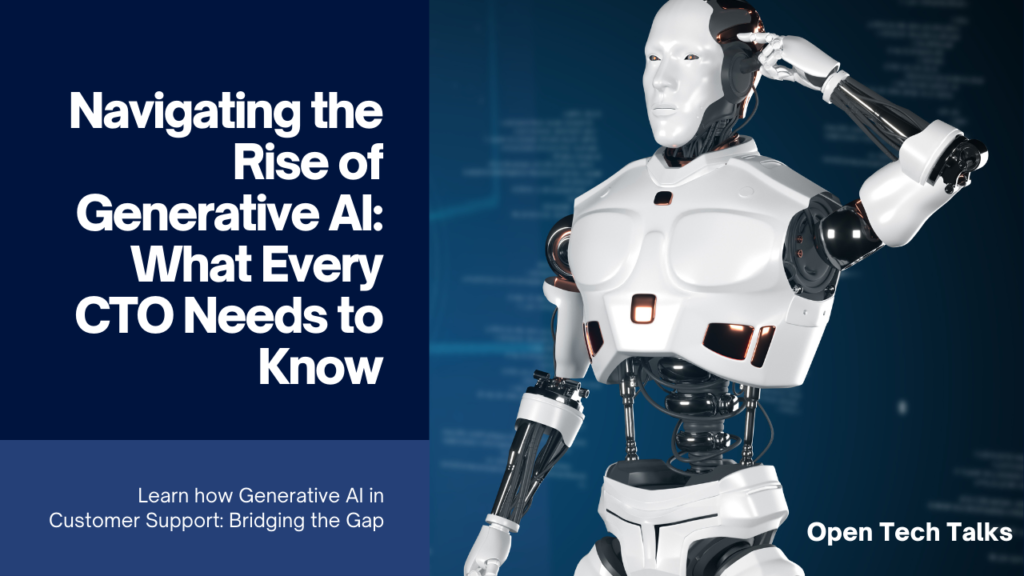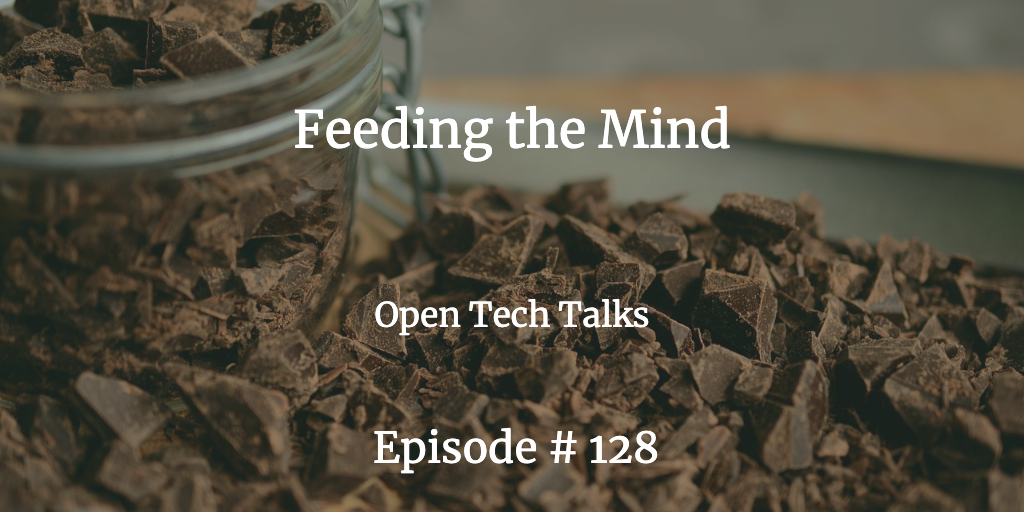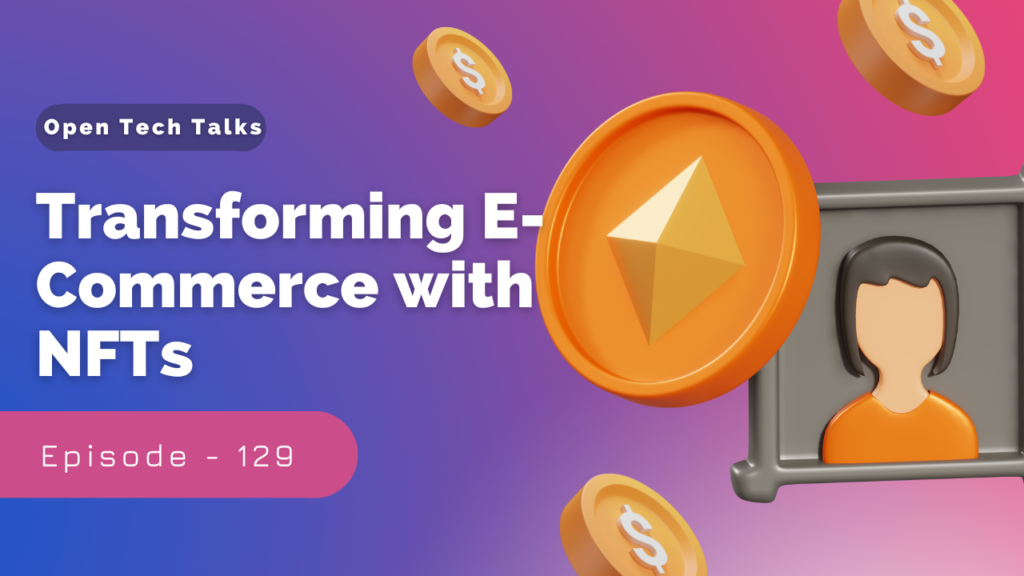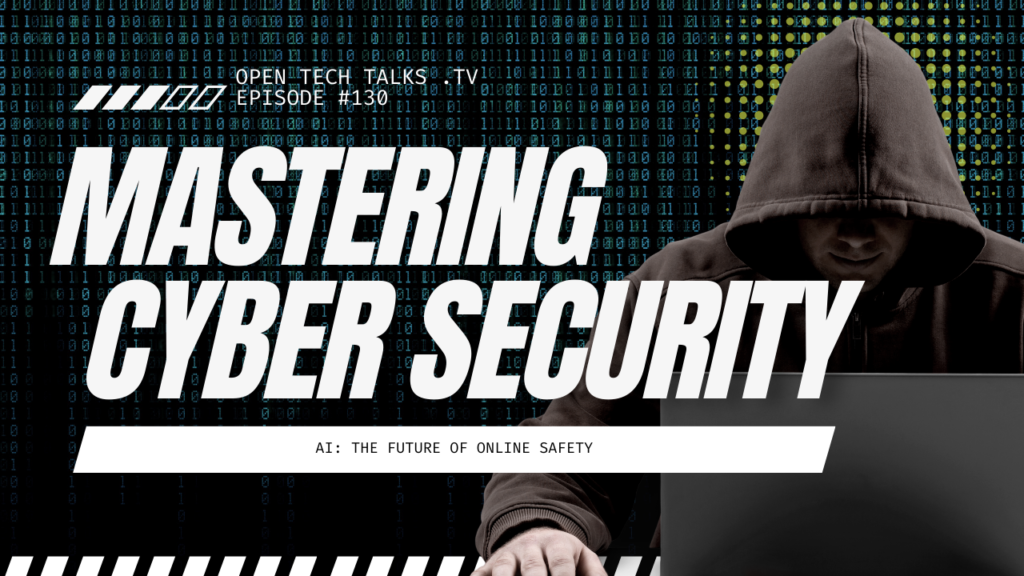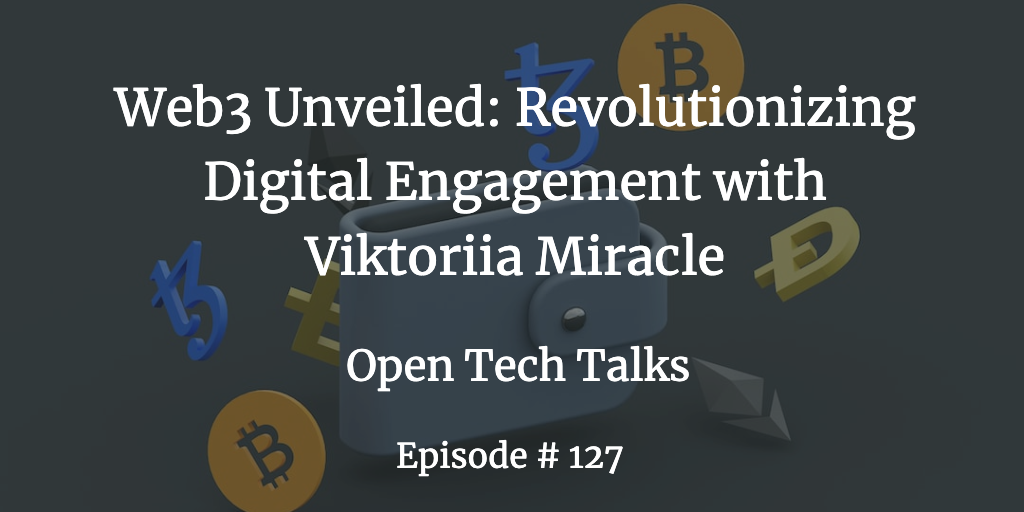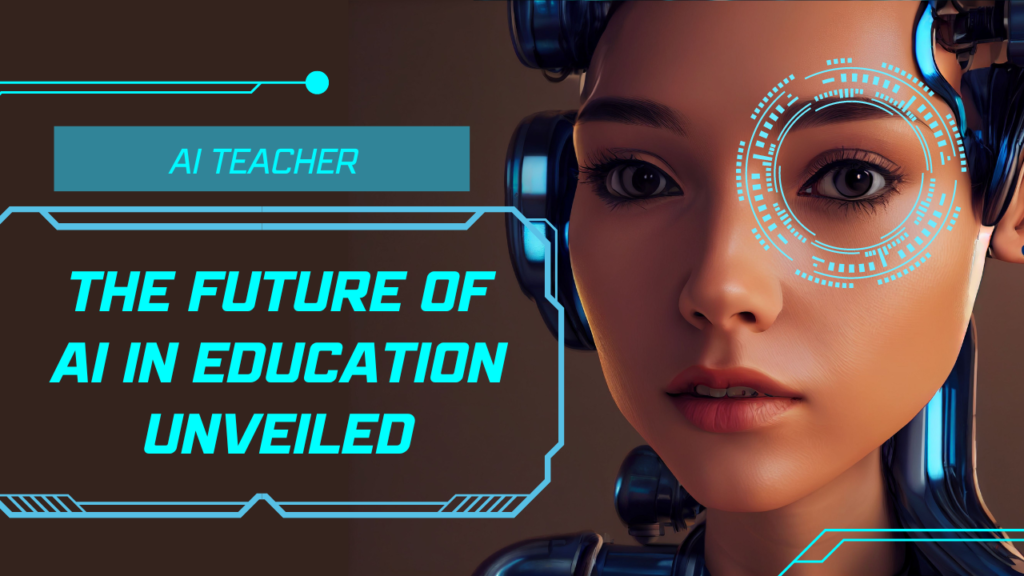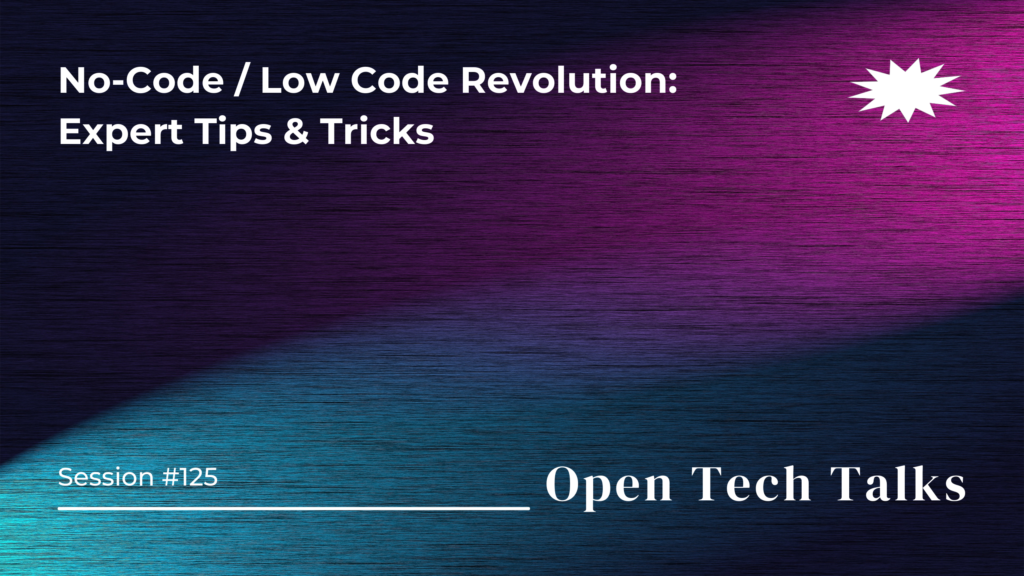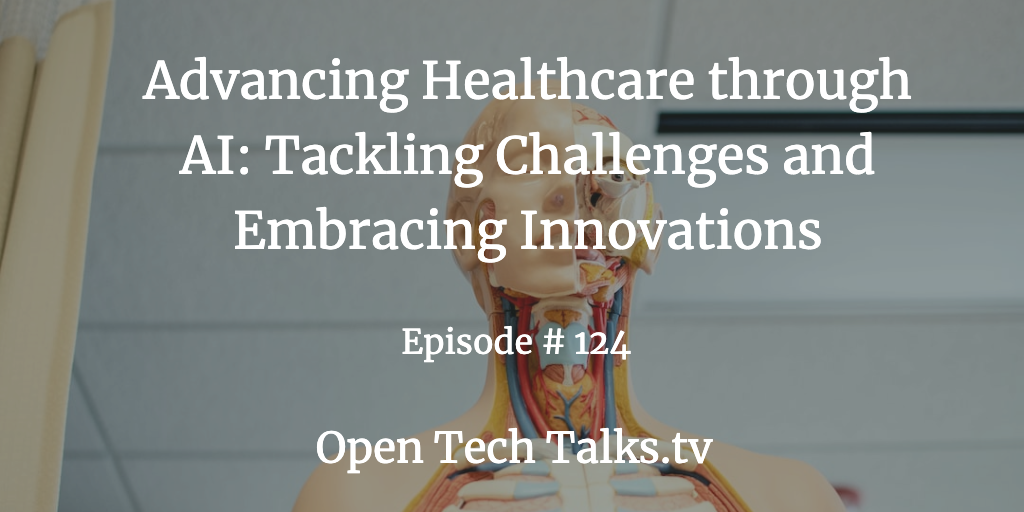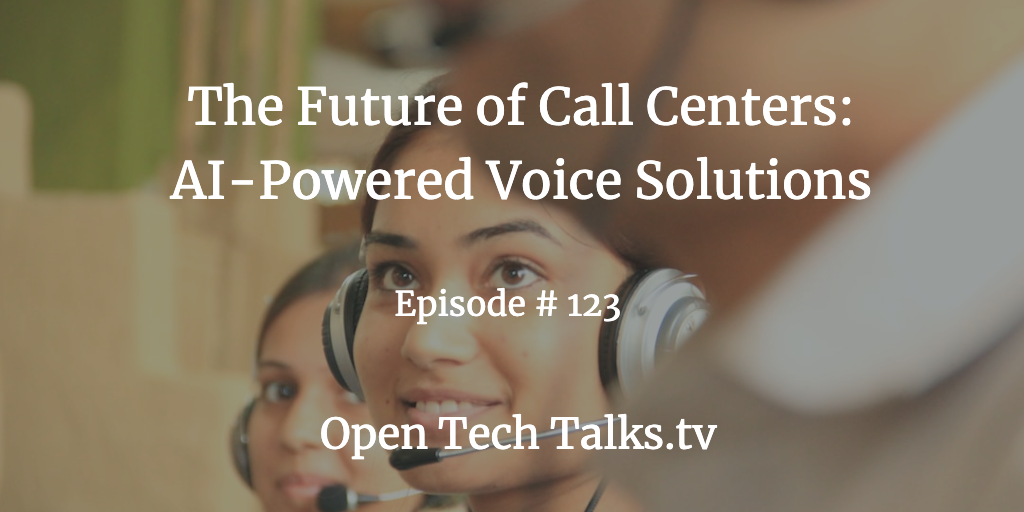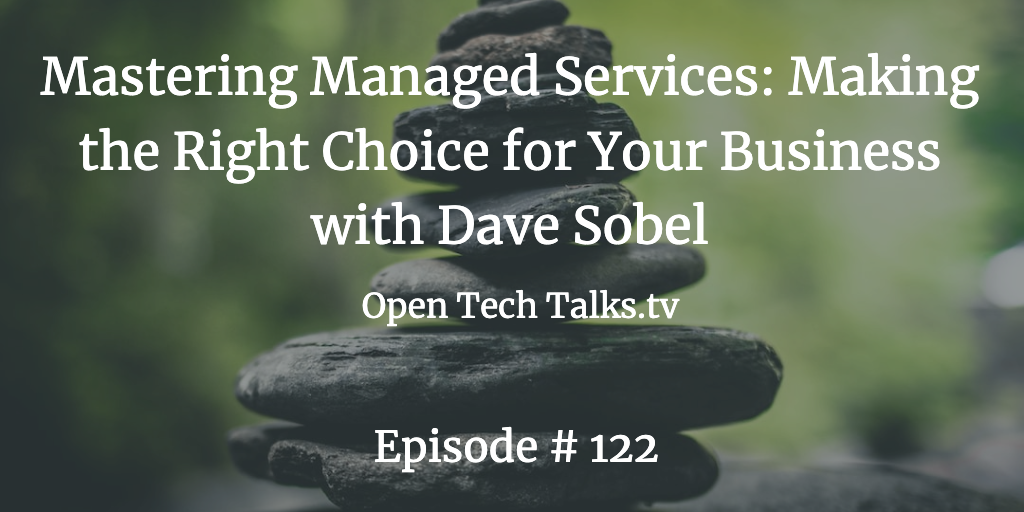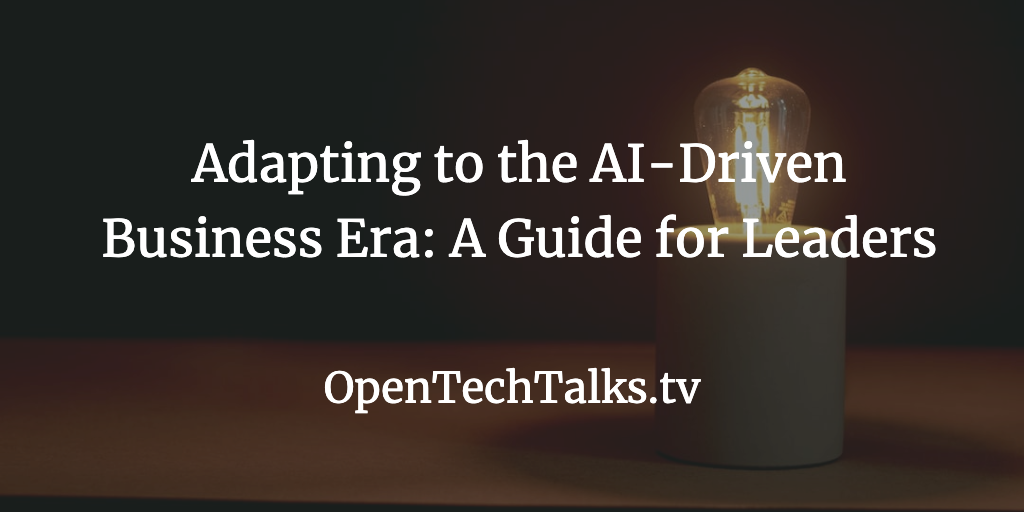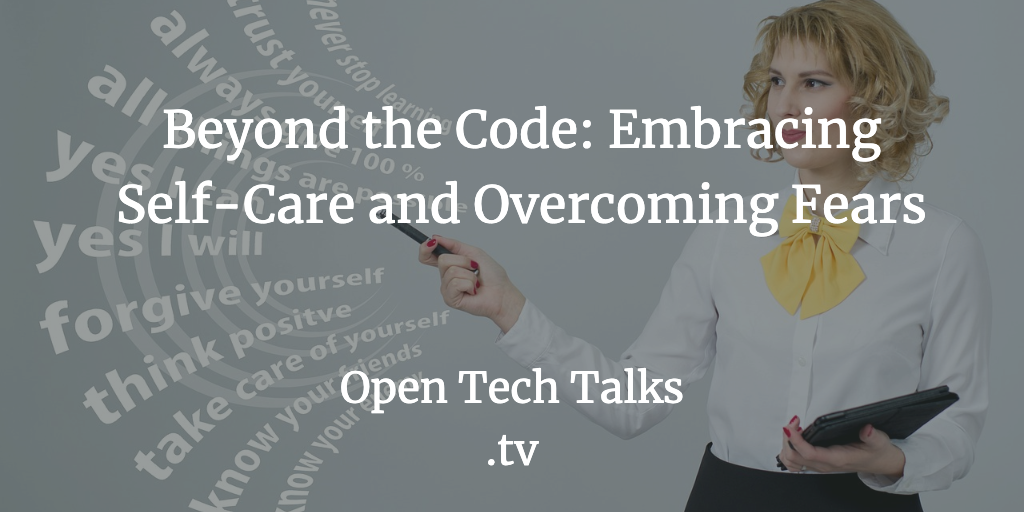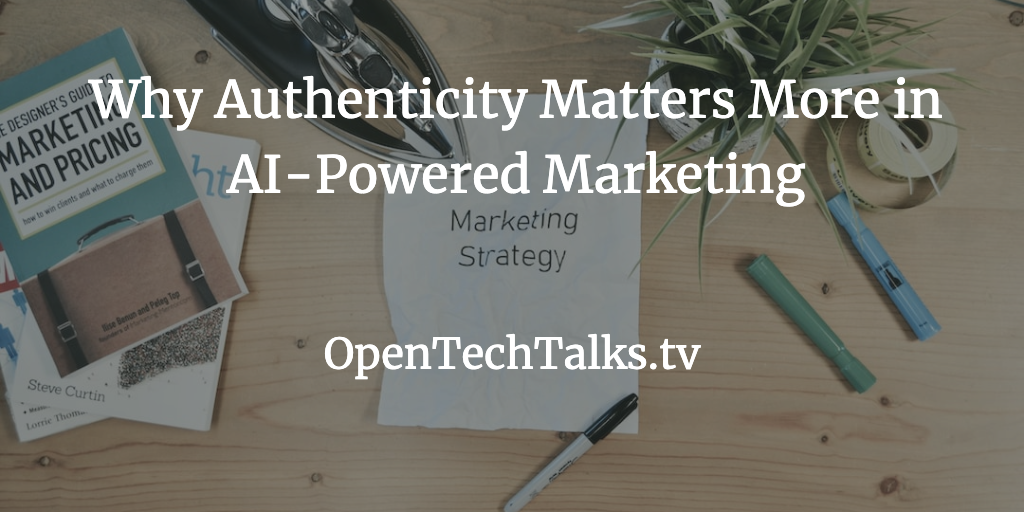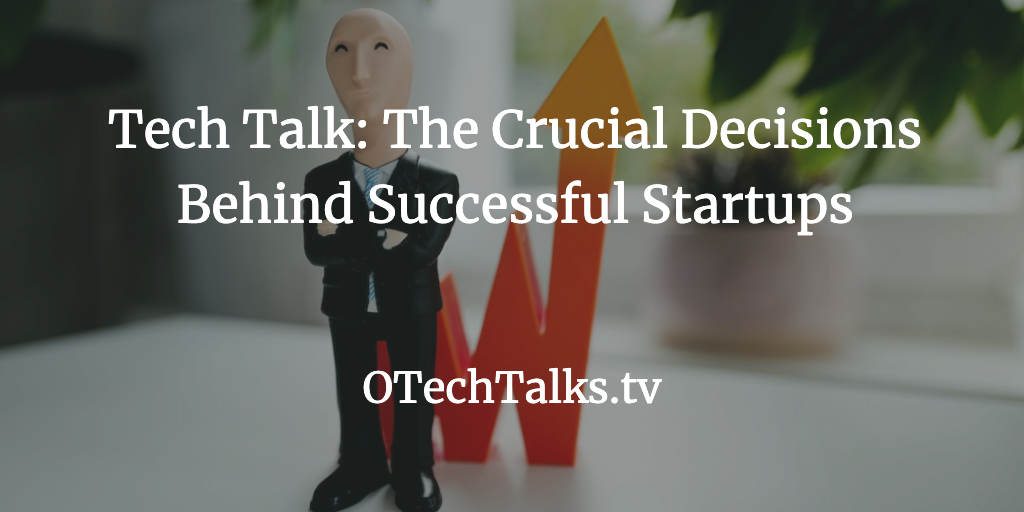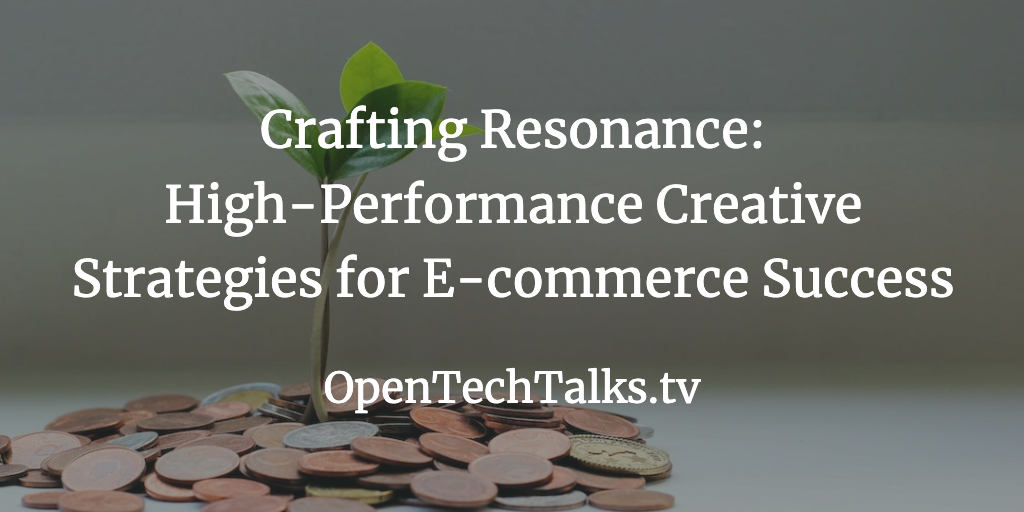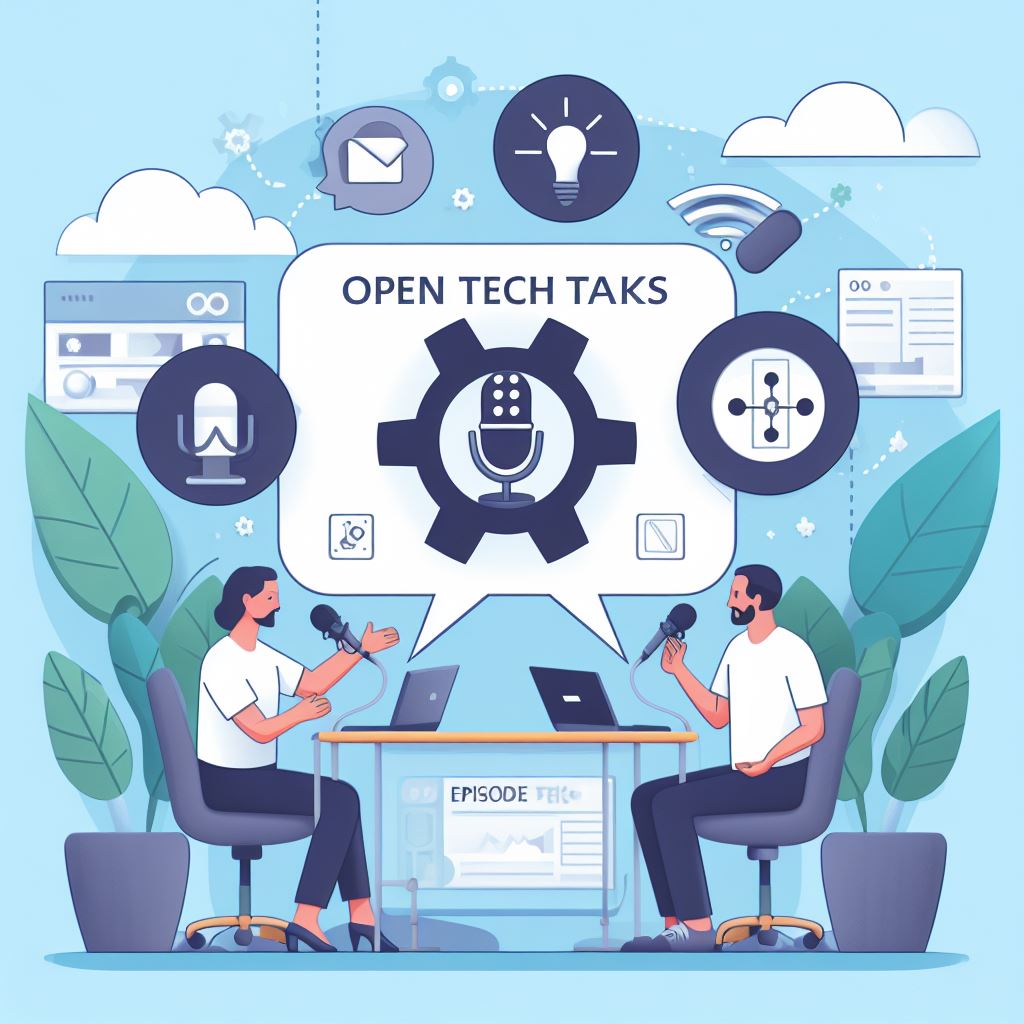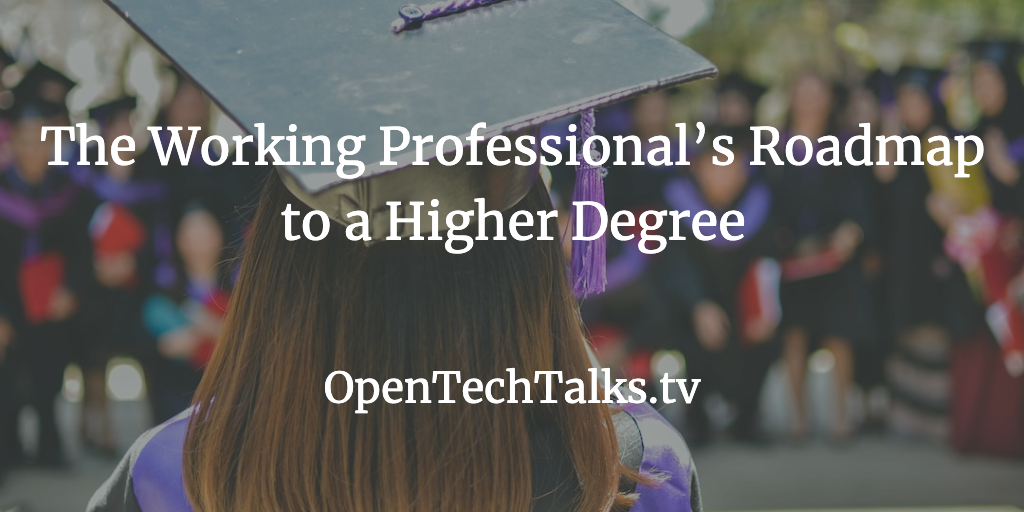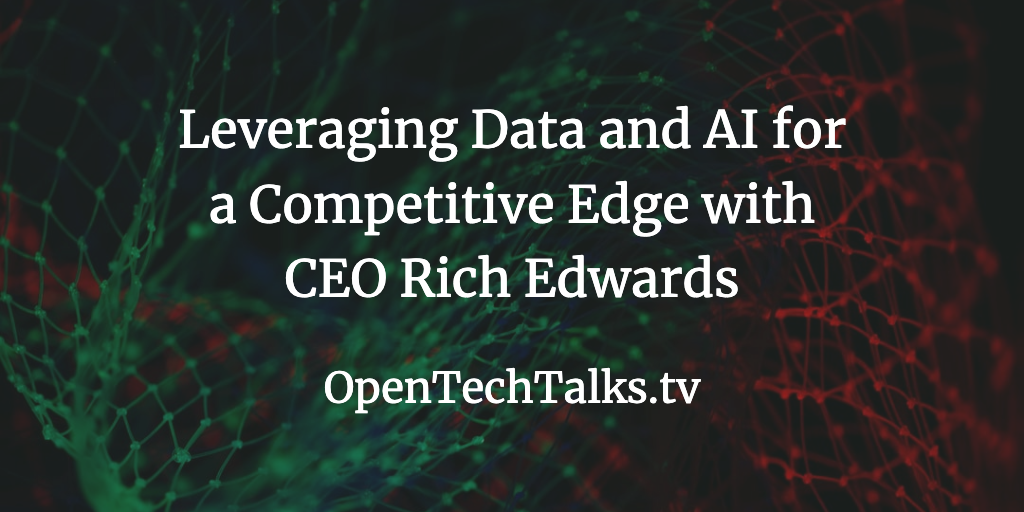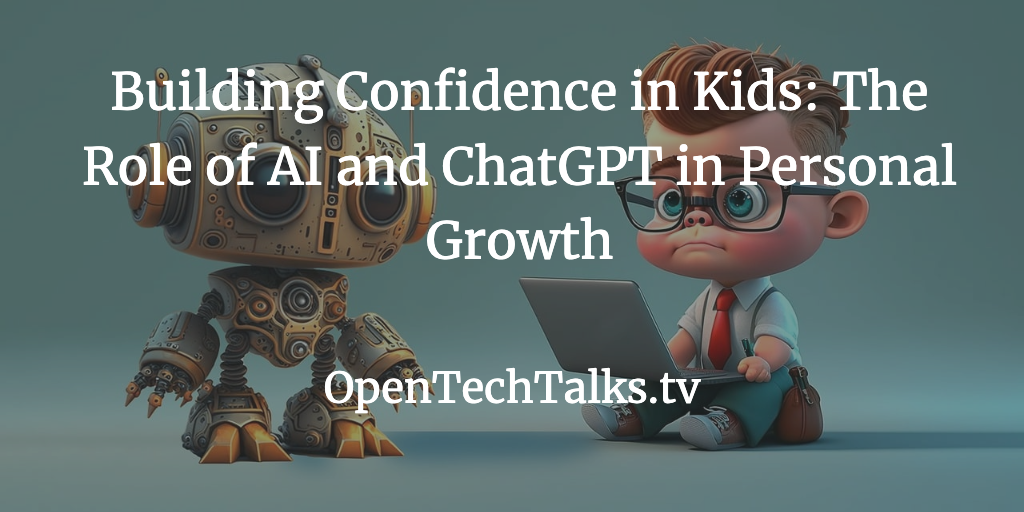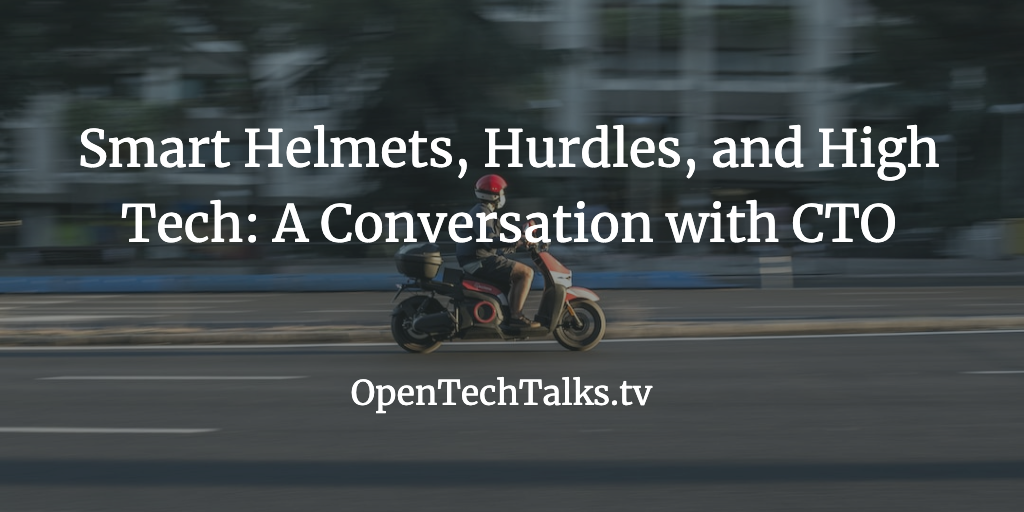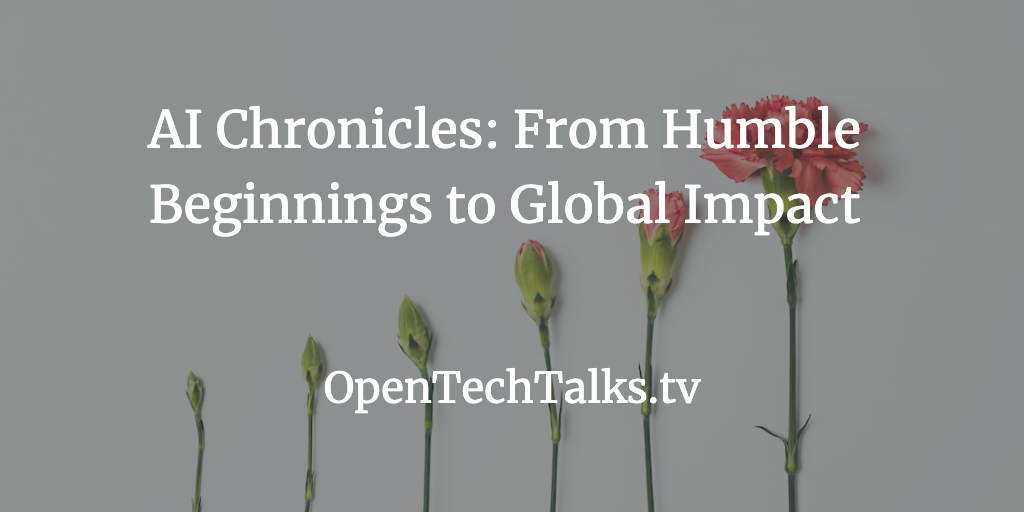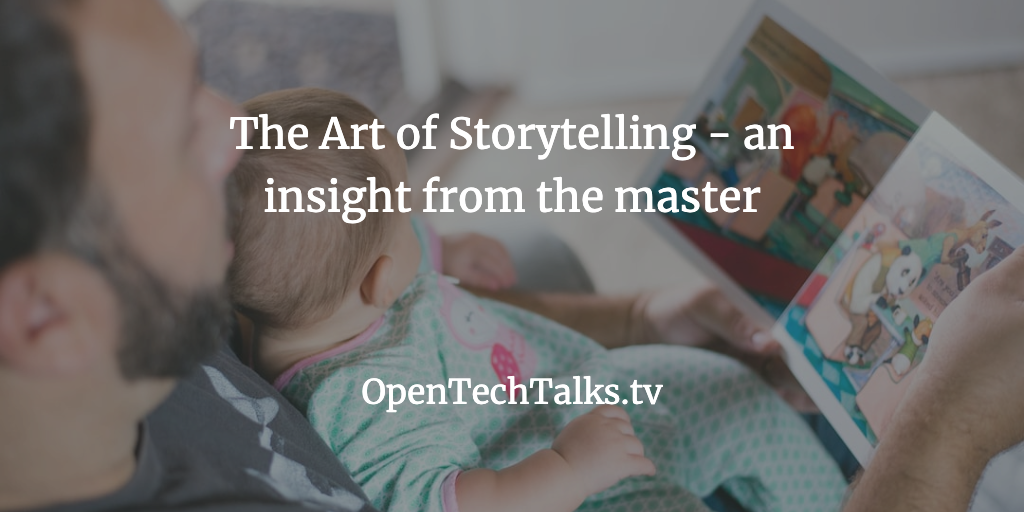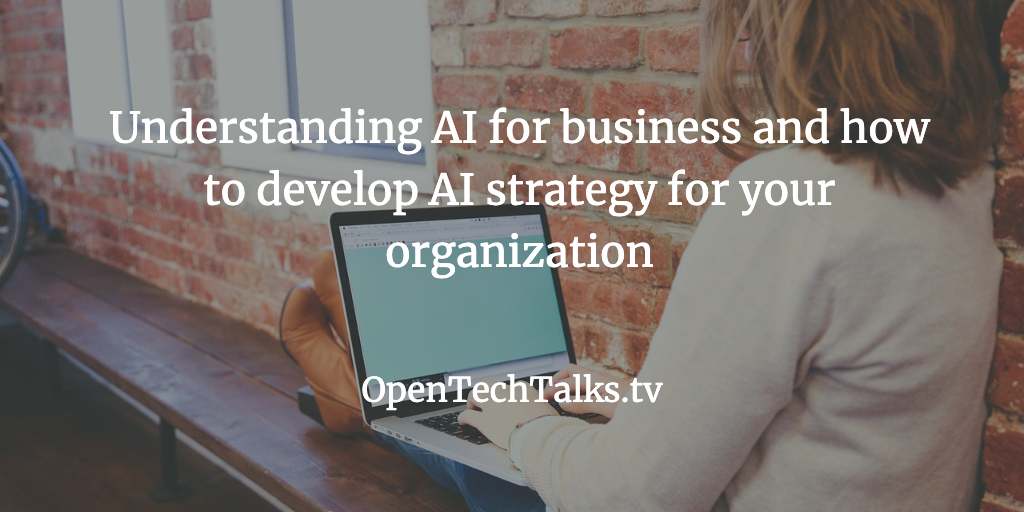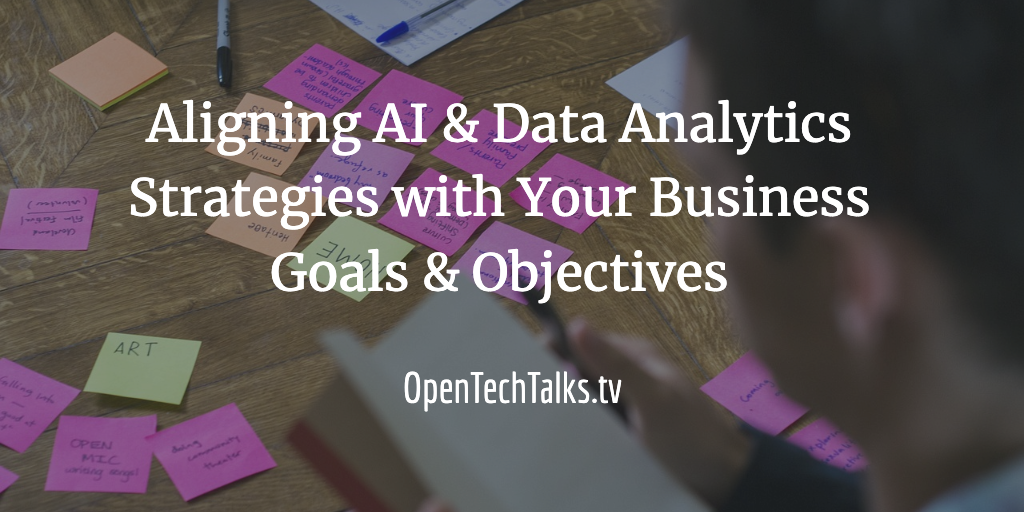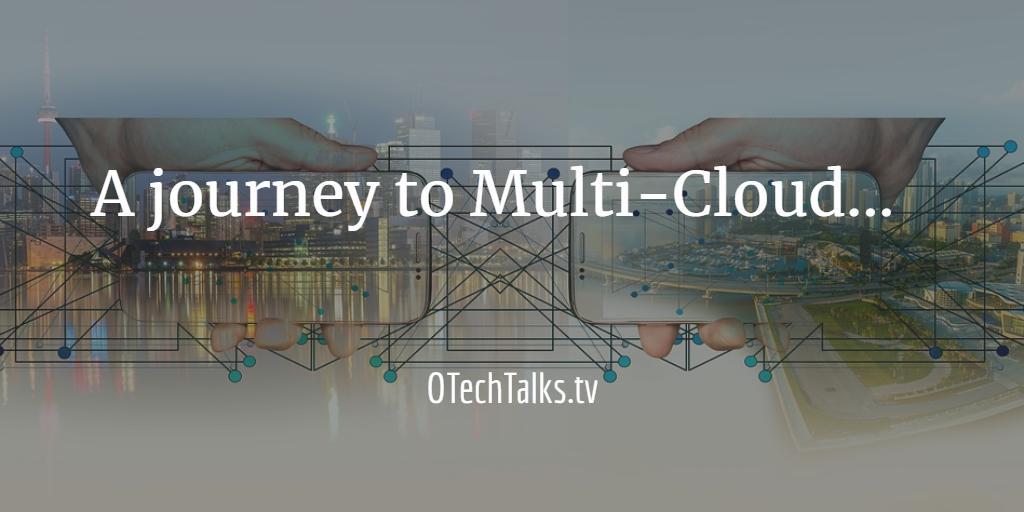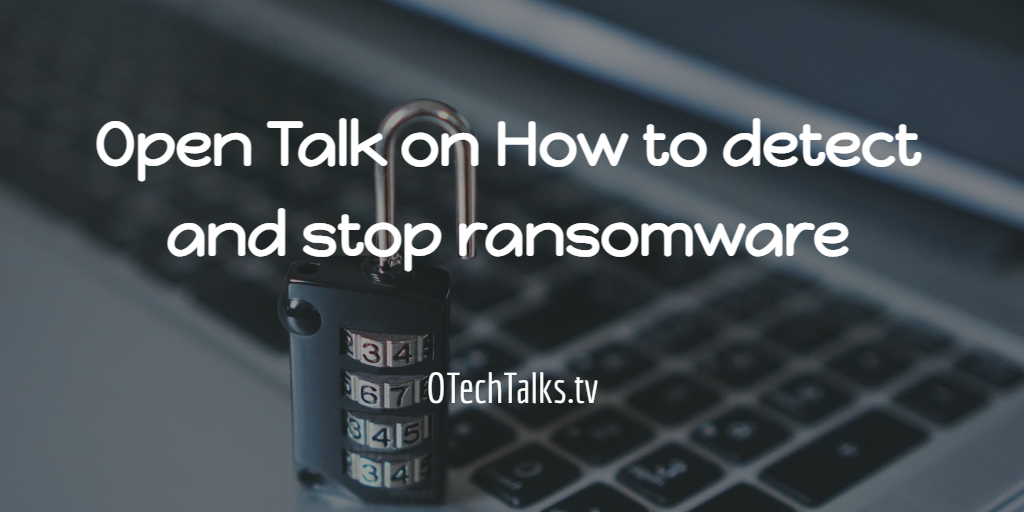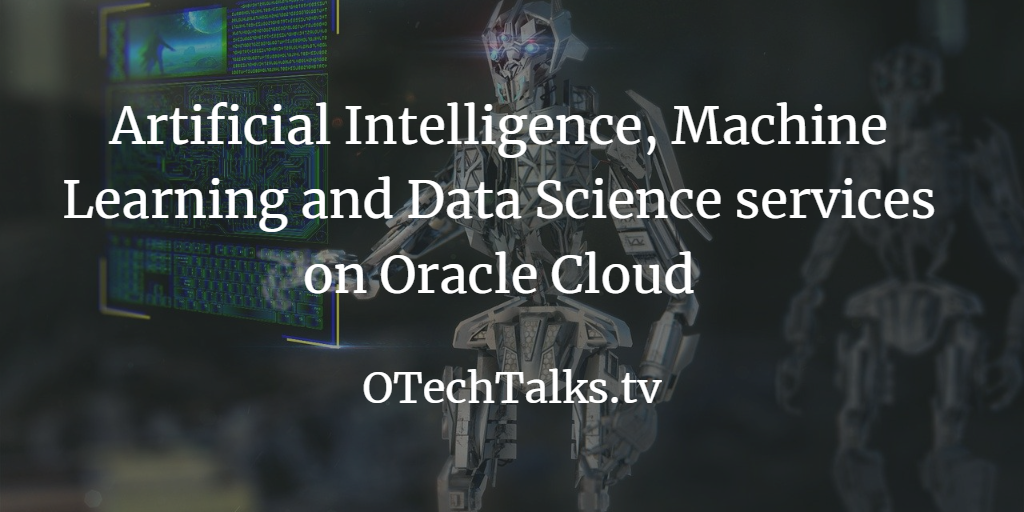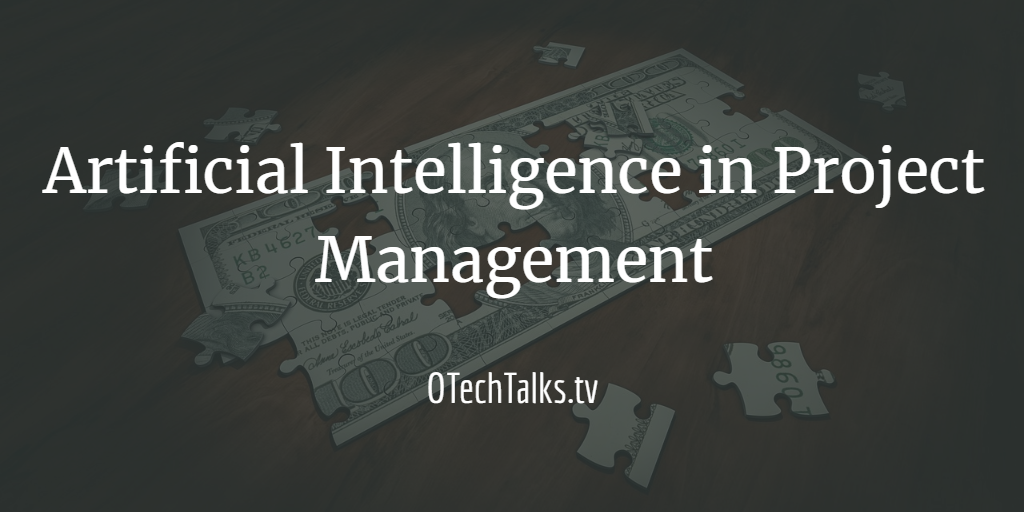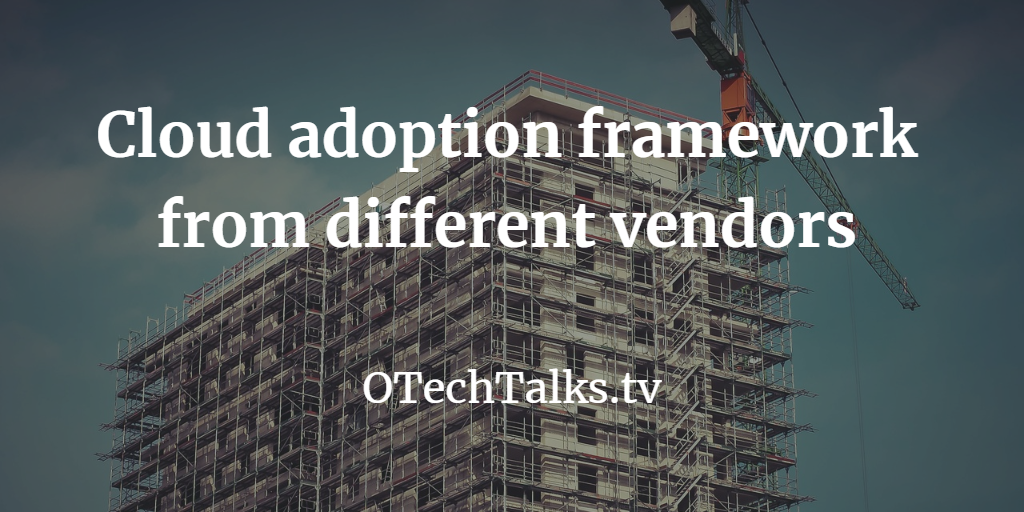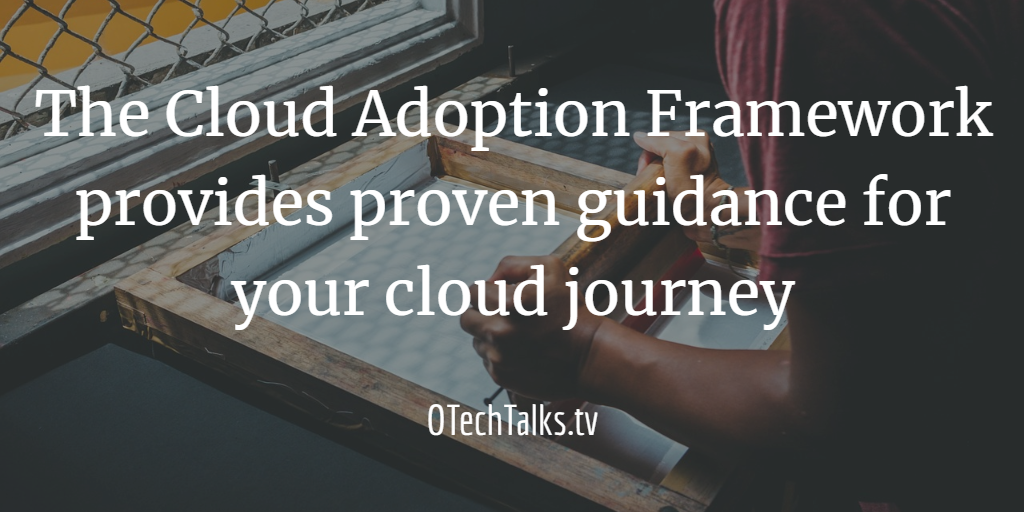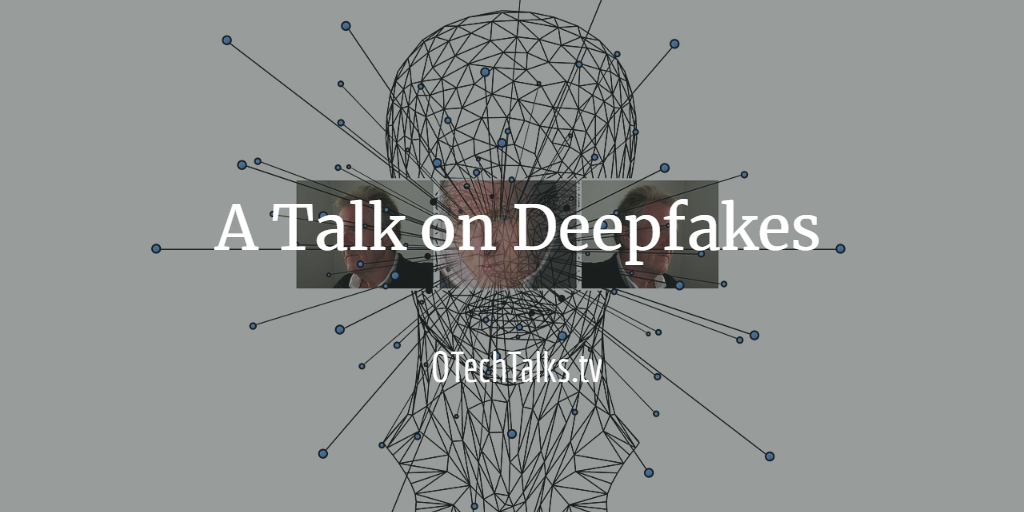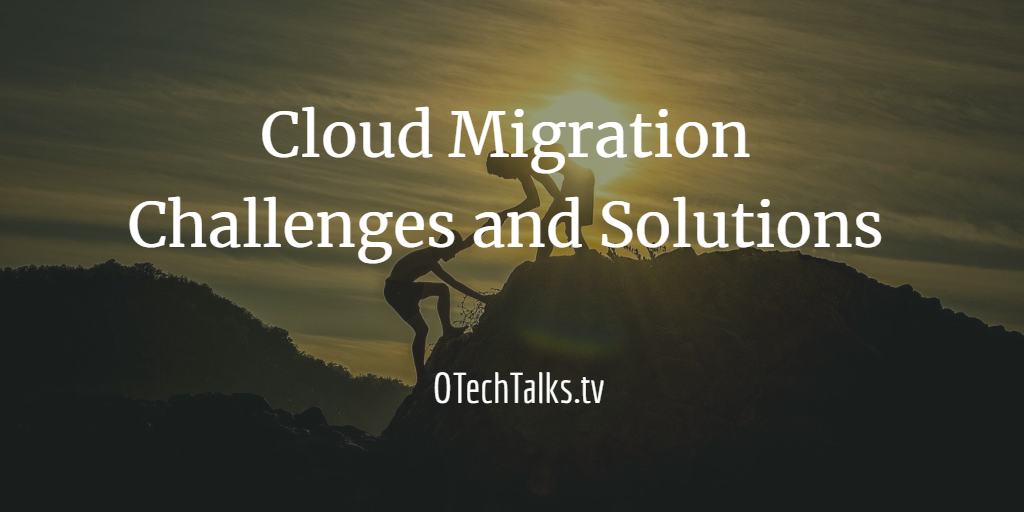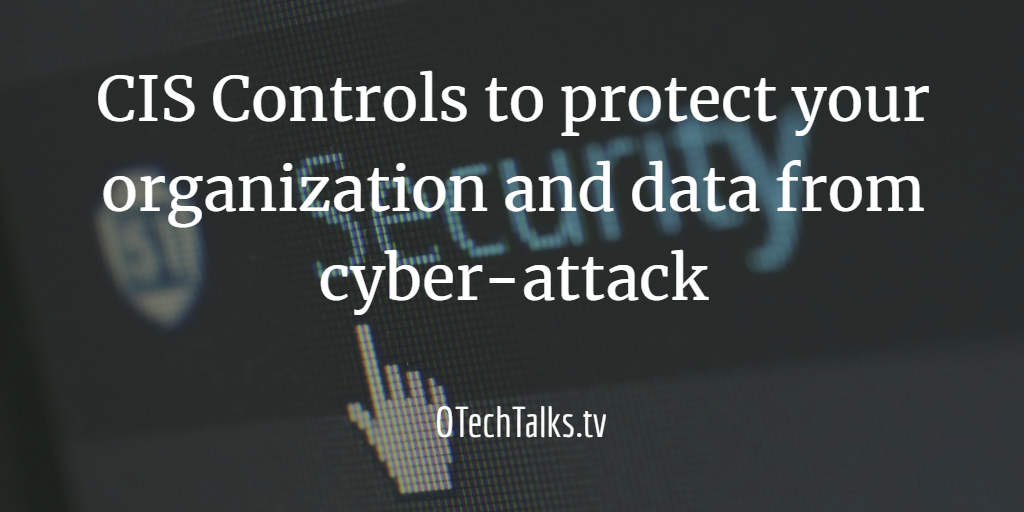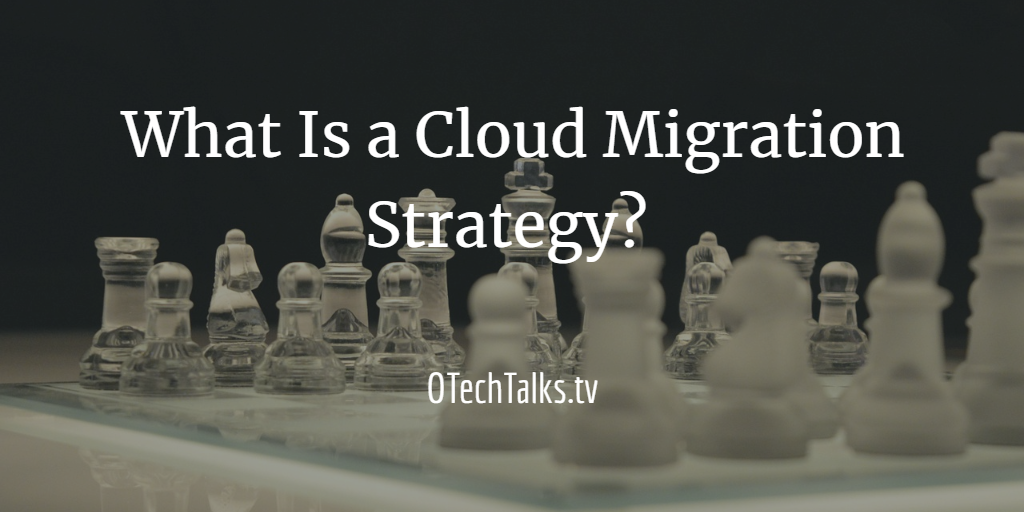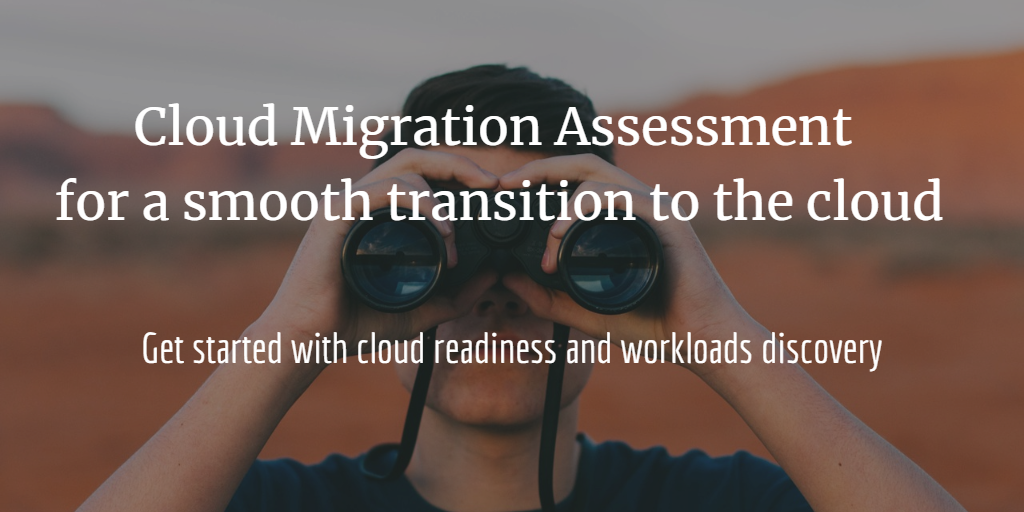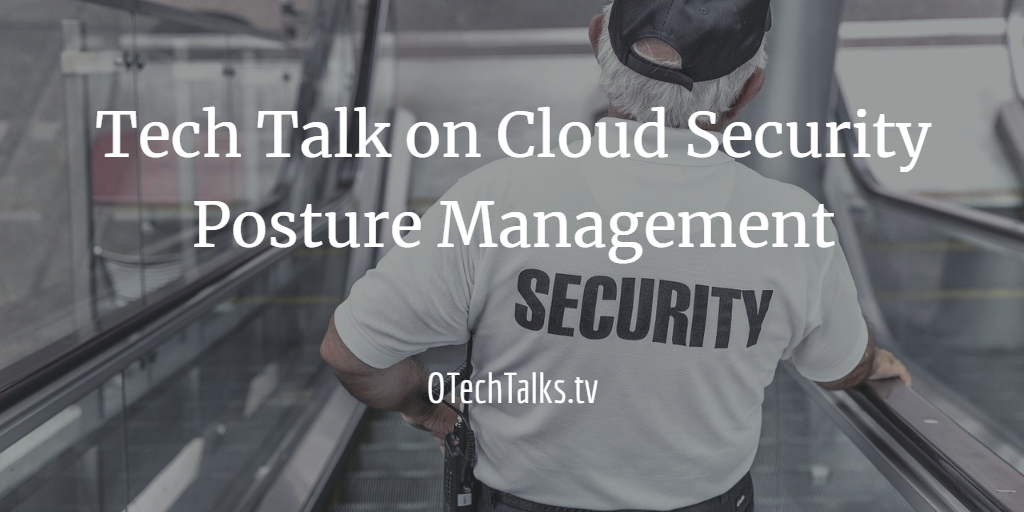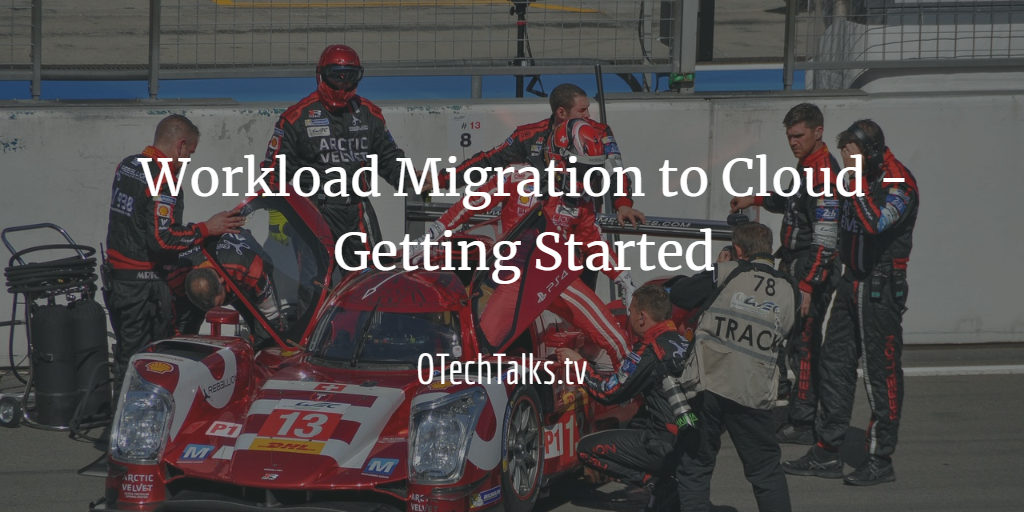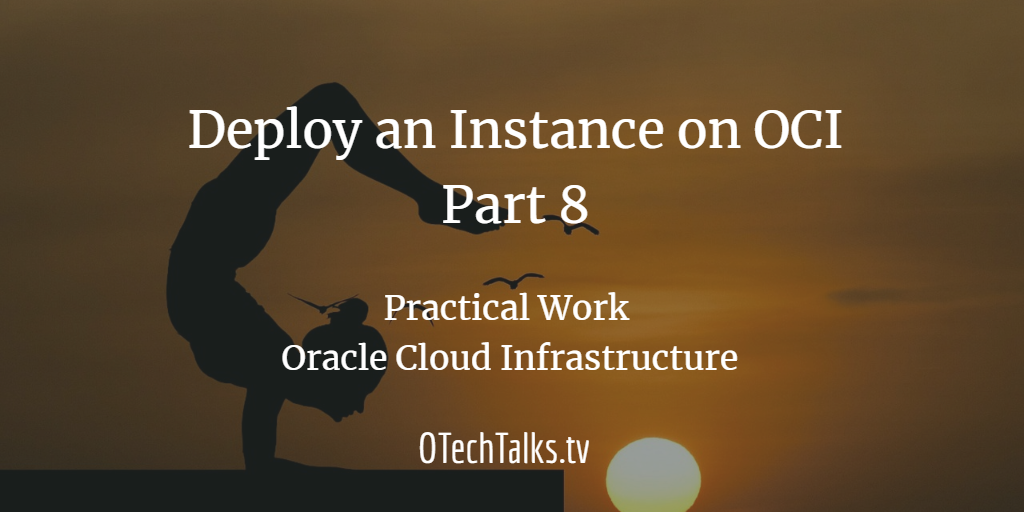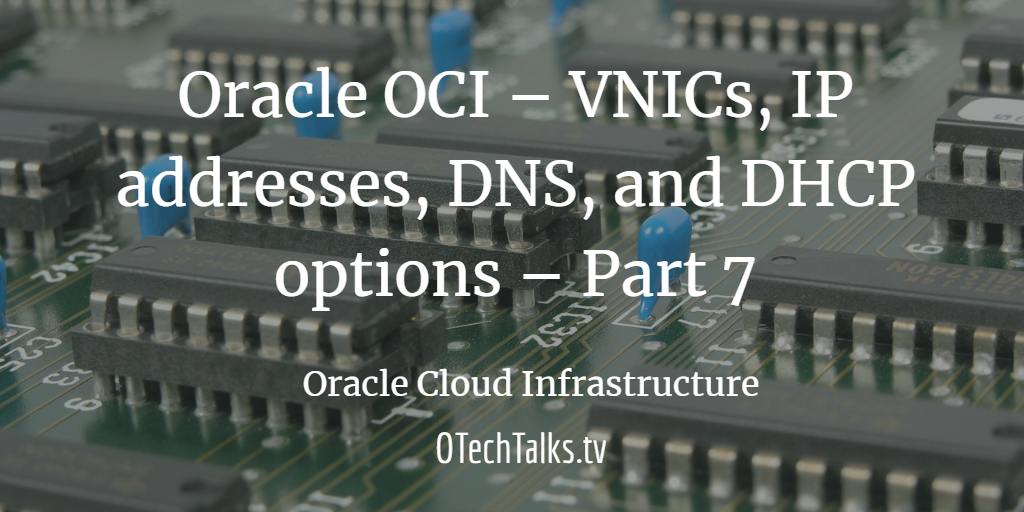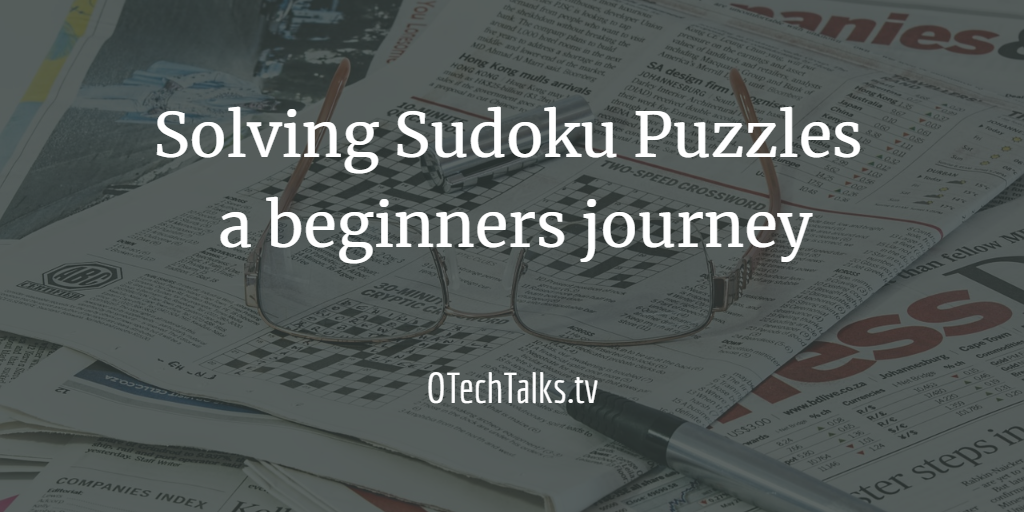hello
hello
Mastering Communication in the AI Era with Expert Tips from TJ Walker
In this week's Open Tech Talks, we had the pleasure of speaking with TJ Walker, the founder of Media Training Worldwide. With over 2 million students on Udemy and over 200 courses under his belt, He is a global expert in presentation techniques, media training, and communication skills.
As the author of six books, including the USA Today #1 Bestseller "Secret to Foolproof Presentations," TJ shares his vast experience on how to elevate your communication skills—whether you're making media appearances, giving a presentation, or simply explaining complex ideas to a business audience.
We started the conversation with TJ by exploring the rise of AI cloning - replicating one's expertise through AI-powered digital clones. Imagine having an AI version of yourself that can share your knowledge, answer questions, and provide personalized learning to millions, just like TJ's courses. The benefits of AI clones are immense, especially for professionals looking to scale their knowledge and impact globally without being physically present.
Episode # 146
Today's Guest:
TJ Walker, Founder, Media Training Worldwide
TJ Walker's commanding digital presence is marked by over 2 million students on Udemy across more than 200 courses. He is the author of 6 books, including the USA Today #1 Bestseller "Secret to Foolproof Presentations" and "Media Training A to Z.
What Listeners Will Learn:
- AI Cloning and Expertise Sharing: Learn how AI clones revolutionize how experts share their knowledge and scale their impact.
- Before and After AI: Explore how adopting AI changes everything, from preparing for presentations to managing daily tasks in a business environment.
- Translating Tech Jargon for Business Users: Spekaer shares practical tips on breaking down complex technology concepts into language that business users can easily understand.
- Improving Your Presentation Techniques: He will give you actionable advice on how to make your next presentation more impactful, concise, and engaging.
- Learning Outcomes from Media Training Courses: Understand the key takeaways students gain from TJ's media training courses and how they apply them in real-world scenarios.
- Overcoming Fear in Media Appearances: Learn TJ's top strategies for overcoming fear of media appearances and public speaking and how to build confidence on camera.
Resources:
From Blockchain to Generative AI: Deep Dive with JB Benjamin
Imagine navigating the ever-evolving tech landscape, from blockchain to AI, and building successful products along the way - how do you manage it all?
In the ever-evolving world of technology, staying ahead of the curve requires innovation and a deep understanding of the trends shaping our digital future. From blockchain to artificial intelligence and Smart contracts to Generative AI, the landscape is shifting unprecedentedly.
In this episode, I am thrilled to have JB Benjamin, the visionary Founder and CEO of Kryotech Ltd & Akuma Engineering, join us. He's here to share his invaluable insights on various topics, from smart contracts in blockchain to the challenges and triumphs of launching new tech products.
Whether you're a tech enthusiast, a budding entrepreneur, or just curious about the journey of a tech leader, this episode is tailor-made for you. It's a unique opportunity to gain insights from a tech leader and explore the future of technology together.
So, tune in, and let's embark on this exciting journey!
Episode # 142
Today's Guest:
JB Benjamin, Founder/CEO, Kryotech Ltd & Akuma Engineering
JB is not just an entrepreneur but an exceptionally technically proficient lead UI/UX developer. His imaginative approach has led to the development of multiple successful digital businesses.
- Website: Kryotech
- Twitter/X: JB Bengamin
What Listeners Will Learn:
- How to effectively validate a product before launching it to the market.
- Being a technical founder is essential for building a tech product.
- Hard lessons learned during the journey of a tech entrepreneur.
- How to transition from working in blockchain to navigating the AI landscape.
- Comparisons between the blockchain bubble and the current AI hype.
- Specific use cases where blockchain technology is most effective.
- The one thing the guest wishes they knew before diving into the tech industry.
- What smart contracts are in blockchain, and how do they function?
Resources:
Developing AI Products From Tech Stack to User Feedback with Jason Agouris
In the latest episode of our podcast, we sit down with Jason Agouris, the CEO of Tristan Group, to explore the intricacies of developing and implementing AI solutions in the business. This episode is packed with valuable insights into the practical aspects of AI adoption and integration, ensuring it meets real-world business needs.
Join us in this insightful episode to learn from Jason Agouris about the real-world application of AI in business and gain actionable insights to drive your AI initiatives forward.
Episode # 140
Today's Guest:
Jason Agouris, CEO, iTristan Group
Jason's extensive experience in systems integration across retail, fintech, wholesale, and supply chain logistics makes him our go-to guru for data integration and strategy.
- Website: iTristan
- Linkedin: JasonAgouris
What Listeners Will Learn:
Strategies for validating AI products to ensure they meet business needs.
Insights into finalizing the technology stack for AI solution development
Typical development timelines and adapting to user feedback.
How customers perceive AI and the impact of AI hype on business decisions
Practical tips for integrating AI into business operations effectively
Key qualities and skills sought in candidates for AI positions.
Resources:
Career Growth Strategies with Executive Coach Vladimir Baranov
Welcome to another exciting episode of Open Tech Talks, where we bring you insights and strategies from industry leaders to help you navigate your professional journey. Today, we have a truly inspiring guest who is the Founder and Certified Executive Coach at Human Interfaces, a renowned coaching and consulting firm dedicated to helping professionals and organizations achieve their full potential.
He brings extensive experience in executive coaching, leadership development, and organizational transformation. His work has empowered countless individuals and teams to reach new heights in their careers.
In this episode, we'll discuss the corporate world and explore practical strategies for advancing your career, whether you're an individual contributor or a manager. Vladimir will share his expertise on moving up the career ladder, effectively communicating your achievements regardless of your personality type, and selling your product as a tech founder.
We'll also uncover the one thing Vladimir wishes he knew before starting his current role, discuss common bad recommendations to avoid, and address the challenges technology professionals face today.
Stay tuned as we dive into these topics, gaining valuable insights to help you succeed in your career. Let's get started!
Episode # 141
Today's Guest:
Vladimir Baranov, Founder and Certified Executive Coach, Human Interfaces
As an entrepreneur and the business leader behind several successful tech companies, he knows what it takes to survive and blossom in today's chaotic business landscape. Tune in to gain valuable insights and actionable strategies to advance your career, communicate effectively, sell your products, and navigate common challenges in the technology field.
- Website: Human Interfaces
- Linkedin: Human Interface Coaching
What Listeners Will Learn:
Advancing Your Career in the Corporate World: Strategies for individuals and managers to move their careers to the next level within a hierarchical corporate structure.
Effective Communication for Different Personalities: Tips for introverts and extroverts to effectively communicate their best work, overcoming challenges related to personality traits
- Strategic Selling for Tech Founders: Essential strategies for tech founders to successfully sell their products instead of just focusing on building them
Lessons Learned Before Starting a New Role: Insights into the one crucial thing you should know before starting a new role, based on Vladimir Baranov's experiences
Avoiding Common Bad Recommendations: Identification of common bad recommendations and strategies to avoid them in your career and business
Challenges Faced by Technology Professionals: An overview of the common challenges faced by technology professionals and practical advice on how to overcome them
Resources:
Building an AI-Driven Business with Gray Mabry
In this episode of our Open Tech Talks podcast, we explore artificial intelligence (AI) and data strategy with Gray Mabry, the co-founder and CEO of iVenture. With over two decades of leadership experience, Gray shares his insights on how AI is transforming various industries, including the financial sector. As a champion of company culture, Gray discusses how aligning vision with core values has contributed to iVenture becoming a nationally-ranked Managed Service Provider (MSP). This episode is essential listening for anyone interested in understanding the practical applications of AI, including tools like ChatGPT, and how they can drive business success.
AI Adoption and Customer Perspectives
Our guest speaker discusses how businesses are embracing AI, exploring whether they adopt it to solve specific problems or to keep up with the trend.
The Future of AI Technology
In this episode, he offers his perspective on the future of AI technology and shares predictions on how AI will evolve and impact various sectors, especially the financial industry, where data strategy plays a crucial role.
Hiring for AI Roles
Gray discusses the qualities and skills he looks for when hiring new talent in the AI field. His experience building a strong company culture and aligning it with technical expertise provides valuable guidance for those looking to enter the AI job market.
A Day in the Life of a CEO
Listeners will get an inside look at a typical day in Gray Mabry's life as the CEO of iVenture. He discusses his daily responsibilities and routines, offering a glimpse into the leadership strategies that have made iVenture successful.
Patterns in AI Use Cases
Gray identifies common patterns and trends in AI use cases across different industries. His experience in manufacturing, legal, healthcare, and more provides a broad view of how AI is applied to solve real-world problems.
Essential Tools for Business
Finally, Gray shares his favorite tool, which he relies on to run his business effectively. His insights on the importance of this tool in the context of AI and data strategy highlight how technology can support business operations.
Episode # 139
Today's Guest:
Gray Mabry, Co-Founder & CEO, Founder, iVenture Solutions
Gray has more than two decades of leadership experience as iVenture CEO. Since its founding in 2000, Gray has helped build iVenture into the nationally-ranked MSP it is now.
- Website: iVenture Solutions
- Twitter/X: iVenture
What Listeners Will Learn:
Understand how customers perceive and adopt AI and whether they use it to solve real problems or incorporate AI.
Gain insights into the future trends and directions of AI technology
Learn about the qualities and skills targeted when hiring new talent in the AI field.
Discover what a typical day looks like for the CEO of a company, including daily responsibilities and routines.
Identify common patterns and trends in AI use cases across different industries.
Find the one favorite tool the CEO uses to run their business effectively.
Resources:
- iVenture Solutions
- Father-Son Duo Dive into ChatGPT: A Unique Bonding Over Tech & Life Skills
The Rise of AI in Creative Writing: Its Impact and Potential with Alex Shvartsman
Large language models (LLMs) significantly influence creative writers who write books by offering new tools for generating ideas, improving drafts, and overcoming writer's block.
These models can suggest plot ideas, develop character dialogues, or even write entire sections of text, which writers can then refine and integrate into their work. This collaboration can increase productivity and creativity, allowing writers to explore new styles and narratives.
LLMs can understand and generate human-like text based on their training from vast literature and online content. This enables them to assist in creative writing by providing relevant and contextually appropriate text suggestions.
Today, we spoke to an accomplished writer who is a master in his field, and we discussed how LLMs will help or impact the creative writing process.
Episode # 133
Today's Guest:
Alex Shvartsman, Writer, Anthologist, and Translator from Brooklyn, NY.
He's the author of Kakistocracy (2023), The Middling Affliction (2022), and Eridani's Crown (2019) fantasy novels. Over 120 of his short stories have appeared in Analog, Nature, Strange Horizons, and many other venues.
- Website: AlexShvartsman
- Twitter/X: AlexShvartsman
Dive into the intersection of artificial intelligence and creativity with Alex Shvartsman, a celebrated writer and translator, as he explores the evolving capabilities of AI in literature.
What Listeners Will Learn:
- The capabilities of current large language models in writing creative books and how these tools are shaping the literary landscape.
- The potential future developments in large language models and their ability to produce highly creative works such as novels and poetry.
- The impact of transformative technologies like AI on society and how they redefine our interaction with creativity and culture.
- Practical advice on beginning creative or general writing, offering insights catering to novice writers and seasoned authors.
- The interaction between artificial intelligence and creative endeavors explores how AI can collaborate with human creativity in the arts.
Resources:
- AlexShvartsman
- Session 111 - Writing in the Age of AI: A Deep Dive with a 300-Book Author
Empowering Young Readers: AI's Role in Enhancing Reading Skills with Dr. Phil Hickman
Integrating Artificial Intelligence (AI) in the educational technology sector is revolutionizing the learning and teaching landscape. As AI continues to advance, its application within education is not just enhancing educational experiences but is fundamentally transforming the industry.
From personalized learning paths to intelligent tutoring systems, AI in education unlocks unprecedented opportunities for students and educators alike, setting the stage for a future where education is more accessible, efficient, and tailored to individual needs.
In our earlier podcast session 126, we talked to the founders of AI Teacher about using Generative AI for secondary school teachers.
In today's enlightening episode, we had the privilege of interviewing the founder of Plabook, a revolutionary educational tool designed to transform students' approaches to oral reading fluency and comprehension.
Plabook stands out by leveraging advanced speech recognition technology to listen to students as they read, providing instant, personalized feedback and smart recommendations.
This innovative platform assesses reading abilities and delves deep into understanding each student's unique strengths and weaknesses through diagnostic reports. These reports are powerful tools for teachers and parents, offering insights to support and enhance the learning journey. Throughout our discussion, we explored Plabook's inception, development, and impact on the educational landscape, uncovering the vision and challenges behind integrating AI into education.
Episode # 131
Today's Guest:
Dr. Phil Hickman, Founder / CEO PlaBook
- Website: PlaBookEducation
- Linkedin: Dr. Phil
This podcast offers invaluable insights into how AI and technology can bridge educational gaps, challenge traditional learning methods, and pave the way for a future where every student has the tools to succeed.
What Listeners Will Learn:
In today's podcast, you'll gain insights into several key areas:
- Exploring Use of Speech Recognition for Feedback: Discover the role of advanced speech recognition in providing real-time, tailored feedback to students.
- Understanding the Impact of Plabook on English Reading Comprehension: Gain insights into how Plabook is transforming the approach to teaching and assessing reading fluency.
- The Journey from Pilot to Validation: Learn about the initial testing phases and the validation of its innovative concept.
- Adapting to Diverse Dialects and Languages: Find out how it accommodates the linguistic diversity of its users.
- The Educational Sector's Response to AI Innovations: Delve into how new technologies like Plabook are being received and adopted in educational settings.
- Anticipating Future Educational Innovations: Get a glimpse of potential advancements and changes in the education sector influenced by AI technology.
Resources:
- Website: PlaBookEducation
- Linkedin: Dr. Phil
- Meet AI Teacher: The Future of AI in Education Unveiled with Dr Pauldy Otermans and Dev Aditya
Unlocking Startup Success: Insights from Leopold van Oosten
Starting a startup is a significant challenge, requiring efforts to secure funding, build a team, and navigate market demands. However, the rewards are substantial.
This ride can be fruitful and amazing if you have mentors and experienced colleagues. Mentors gain personal growth and professional satisfaction, and they enjoy witnessing ideas transform into successful businesses. This process fosters strong networks, brings fresh perspectives, and drives innovation and economic growth.
In this episode of our podcast, we had the pleasure of hosting Leopold, the CEO and Founder of Amsterdam Standard. He brings over two decades of experience building startups, with 18 successful ventures and three major wins. His expertise in scaling businesses and developing team augmentation offers new and aspiring founders invaluable insights.
Episode # 137
Today's Guest:
Leopold van Oosten, CEO, Amsterdam Standard
He has built 18 startups in 20 years, with three major wins through his organizations.
Join us as we dive deep into the world of startups with Leopold van Oosten, gaining insights that can propel your entrepreneurial journey forward. Don't miss out on this opportunity to learn from a seasoned expert.
- Website: Amsterdam Standard
- LinkedIn: Leopold Van Oosten
What Listeners Will Learn:
- Support for Product Development: Learn how Amsterdam Standard supports entrepreneurs in building and scaling their products.
- Startup Success Stories: With 22 supported startups, Leopold discusses key success factors and lessons learned.
- Top Tips for New Founders: Discover top three tips for new founders on successfully navigating the startup landscape.
- Validation of Ideas and MVPs: Gain strategies to validate your product ideas and MVPs in the market.
- Approaching Users for Validation: Understand effective methods for reaching out to potential users and gathering crucial feedback.
- Utilizing Test Audiences and Panels: Learn the importance of test audiences and how to use them effectively.
- Talent Acquisition: Find out how to identify and hire top talent for startups and what key characteristics he looks for in candidates.
Resources:
Transforming Text to Audio: The Future of AI in Content Creation with Ian Harris
The latest advancements in text-to-voice technology are opening up exciting new business opportunities.
Text-to-voice technology is rapidly improving, making it more accessible and effective for various applications. These advancements enhance user experiences and create new avenues for businesses to explore and innovate.
One significant opportunity lies in customer service. Companies can implement more natural and responsive virtual assistants with enhanced text-to-voice models. These assistants can handle customer inquiries efficiently, reducing the need for human intervention and improving service availability.
Another promising area is in content creation. Businesses can now generate high-quality audio content from text with ease. This is particularly beneficial for creating podcasts, audiobooks, and voiceovers for videos, enabling companies to reach wider audiences and diversify their content offerings.
In the education sector, text-to-voice technology is a valuable tool. It aids in developing accessible learning materials for students with visual impairments or reading difficulties. Additionally, it supports language learning by providing precise and accurate pronunciations, enhancing the overall educational experience.
Moreover, the entertainment industry can leverage text-to-voice technology to create more immersive experiences. From voice acting in video games to narrating stories in augmented reality applications, the potential uses are vast and continually expanding.
As text-to-voice technology evolves, its applications become more diverse and impactful. Businesses across various sectors can harness these advancements to improve their services, create new content, and enhance accessibility. Embracing these opportunities will drive innovation and provide significant competitive advantages in the market.
Episode # 138
Today's Guest:
Ian Harris, Founder, Pulse Podcasts
Ian has started his unique idea to help others capitalize on AI advancements. He launched his product using text-to-voice, assisting brands in offering audio content.
- Website: Pulse Podcasts
- Twitter/X: Pulse Podcasts
What Listeners Will Learn:
- How to Use AI for Recording and Presenting Podcasts
- Step-by-step guidance on transforming written content into engaging audio
- Whether and how to inform your audience that AI generates the voice
- An overview of the technologies used, including the origins and evolution of the AI tools employed.
- Explanation of the specific language models (LLMs) used and how they help deliver content effectively to the audience.
- Tips and suggestions for those interested in starting a career or project in AI
- How can the idea be validated and determine if there is a market for an AI-driven product?
- Practical strategies for launching and marketing a new AI-based product.
Resources:
Building a Successful AI SaaS Product with Denzil Eden
The push to integrate artificial intelligence (AI) into business operations is becoming increasingly essential in today's rapidly evolving technological landscape. Organizations are feeling the pressure to adopt AI, not just as a strategic tool to solve real business problems but also to keep pace with competitors and market trends.
This urgency often leads to a critical decision: should AI adoption be driven by genuine business needs, or should it be a response to external pressures to 'keep up with the AI movement'?
AI's potential to revolutionize operations, elevate customer experiences, and forge new value streams is truly remarkable.
While the eagerness to adopt AI is understandable, it's crucial first to grasp its purpose and potential impact. A well-defined strategy ensures that AI is integrated to align with core objectives, preventing the wastage of resources and missed opportunities.
Episode # 135
Today's Guest:
Denzil Eden, Founder, Smarty.ai
Denzil has started her own SaaS App to unify your calendars, centralize your work, and plan your days.
- Website: Smarty AI
- Twitter/X: Denzil Eden
What Listeners Will Learn:
- How do you prototype a startup idea?
- What strategies work best for acquiring new customers for a new SaaS application?
- As a new SaaS founder, how do you decide on your product's technology stack?
- How did you determine the need for AI in your product? Was it to address a specific problem, or was it more about integrating AI for its own sake?
- What methods can validate a new SaaS product before full-scale development?
- Is it straightforward to reach out to users for feedback, and how can this process be managed effectively?
- What steps did you take to secure your first paid customer?
- What were some of your biggest mistakes as a founder, and what did you learn from them?
- What key skills do you look for in candidates when building your team?
- What are some top tips for anyone looking to develop their product?
- How do you balance the technical demands of coding with the strategic responsibilities of a CEO?
Resources:
To share your thoughts:
- Leave a comment in the section below on this post
- Do you want to suggest any new topic I should cover in future Podcast
- Share this on Twitter and Facebook; if you enjoyed this episode, we are learning new technologies together.
To help out this initiative:
- Leave a candid review for the OTechTalks Podcast on iTunes! Your ratings and reviews will help the session on iTunes.
- Subscribe to the Podcast on iTunes to get the subsequent sessions.
AI and the Art of Advertising with Robert Brill
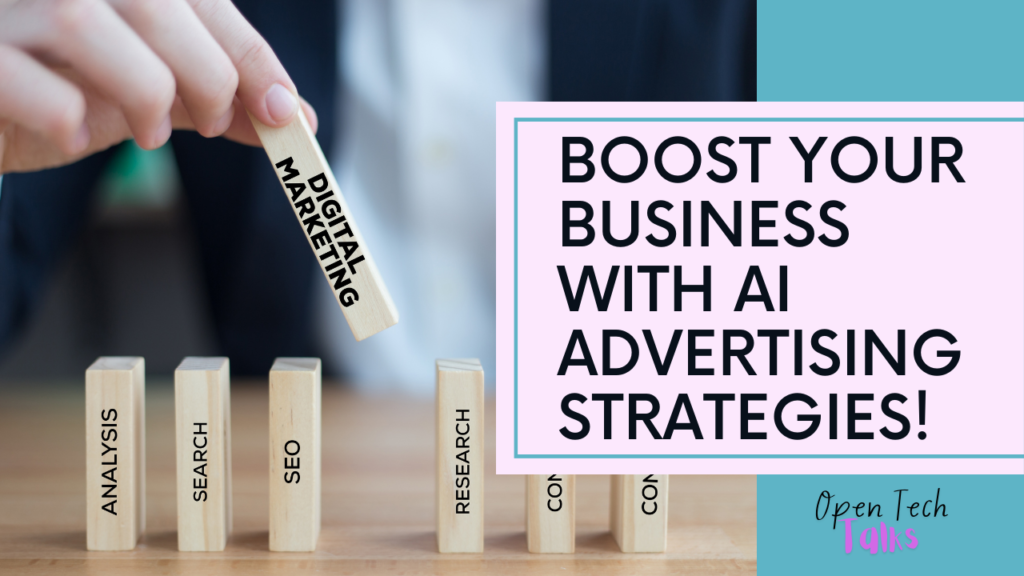
Large Language Models (LLMs) are advanced AI tools that generate text-based content. In advertising, these models use data to produce compelling, creative copy that resonates with targeted audiences. This includes everything from catchy headlines to detailed product descriptions and persuasive sales pitches.
How it is being done:
Data Input: LLMs require input of existing data such as product information, target audience characteristics, and company branding guidelines. This data helps the model understand the context and requirements of the advertising campaign.
Content Generation: The model processes the input data using its pre-trained knowledge base to generate relevant and engaging copy. The AI considers language patterns, industry terminology, and brand voice in its output.
Review and Refinement: While LLMs can produce high-quality initial drafts, it's important to note that they are not perfect. The generated content often goes through a review process where marketing professionals adjust to ensure that the final copy aligns perfectly with campaign goals and audience expectations. This is because LLMs may not always capture the nuances of human language or understand the specific context of a brand or product.
The benefits:
Efficiency: LLMs empower marketing professionals by dramatically reducing the time required to produce creative content. What might take hours for a human can be accomplished in minutes, allowing businesses to respond quickly to market changes and opportunities.
Consistency: These models help maintain a consistent voice across all marketing materials. Consistency is crucial for brand recognition and customer trust, and LLMs ensure that every piece of content aligns with the brand's established style and tone.
Scalability: LLMs offer businesses the potential for exponential growth in their content production without a proportional increase in resources or costs. This is especially beneficial for campaigns targeting different demographics or requiring multilingual content, as the AI can adapt and produce varied content efficiently, instilling a sense of optimism about the potential of their campaigns. By integrating LLMs into their advertising strategies, businesses can leverage these benefits to enhance their marketing efforts, leading to better engagement and increased sales.
Today we will have a guest speaker Robert Brill, Chief Executive Officer at Brill Media, who has been a dynamic part of the advertising industry since 2003.
Our earlier session on the area of marketing was with Emanuel Rose, the CEO of Strategic eMarketing, Episode number 119, and he shared with us the tips to build brand authenticity in the age of AI and actionable tips to develop your brand even if you are working in an organization
Episode # 134
Today's Guest:
Robert Brill, Chief Executive Officer, Brill Media
Robert has been immersed in the advertising industry since 2003. He is passionate about cultivating brands and propelling businesses forward. He loves creative testing and business insights.
- Website: Brill Media
- Linkedin: Robert Brill
Listeners will gain valuable knowledge from an industry expert on leveraging limited resources for maximum effect, selecting the right platforms for growth, and utilizing new technologies like generative AI to streamline and enhance advertising strategies.
What Listeners Will Learn:
Insights into how organizations with limited budgets can effectively engage in social marketing to maximize their impact.
Guidance on which social media channels are most beneficial for startups and early-stage organizations to begin their marketing efforts.
Strategies that established businesses can adopt to enhance their presence and effectiveness in social marketing.
Best practices for crafting and deploying successful advertisements on Meta platforms to ensure high engagement and returns.
How generative AI is currently used and its future potential to revolutionize copywriting in advertising, making content creation more efficient and aligned with marketing goals.
Commonly heard but misguided recommendations that new business owners should avoid as they start and grow their ventures.
Resources:
Navigating the Rise of Generative AI: What Every CTO Needs to Know with Kevin Surace
In recent years, how we interact with technology has dramatically shifted, largely thanks to the advancements in Generative AI. This leap forward has transformed virtual assistants and voice user interfaces, making our interactions with different brands more accessible, more engaging, and human-like.
Generative AI has empowered virtual assistants to understand and respond incredibly naturally. For example, when you ask a virtual assistant powered by Generative AI for cooking advice, it can provide recipes, tips, alternatives for missing ingredients, and follow-up questions to tailor the advice further. This depth of interaction makes using voice user interfaces more like chatting with a knowledgeable friend than issuing commands to a machine.
The revolution of Large Language Models (LLMs) in virtual assistants and voice user interfaces marks a significant milestone in our journey with technology. It's not just about the convenience of hands-free commands anymore; it's about creating a more intuitive, accessible, and personalized experience. As this technology continues to evolve, we can expect our digital companions to become even more integrated into our daily lives, making technology a tool and a partner.
Episode # 132
Today's Guest:
Kevin Surace, Chairman & CTO, Appvance AI. Globally recognized futurist, inventor, and innovation leader credited as the pioneer of virtual assistants
- Website: Kevin Surace
- Linkedin: Kevin
This podcast offers invaluable insights into how AI and technology can bridge educational gaps, challenge traditional learning methods, and pave the way for a future where every student has the tools to succeed.
What Listeners Will Learn:
- Why is everyone talking about generative AI, and what new content can it create?
- What do Chief Technology Officers (CTOs) need to understand about generative AI's capabilities and limitations?
- What are the main concerns surrounding Generative AI, including content accuracy and ethical use?
- What are the common areas to focus on when utilizing generative AI to enhance creativity and improve efficiency?
- How should organizations manage the changes brought about by introducing AI technologies?
- In what ways can generative AI and huge language models impact customer support?
- Why are ethical considerations and bias management crucial in AI development?
- What should be considered to ensure the ethical use of open-source large language models?
Resources:
Crafting a Mindful Digital Diet through AI with Alex Fink
In today's digital era, we are bombarded with overwhelming information on our screens daily. This flood of data creates a significant problem: filtering through the massive content to find what truly matters and what should be avoided. We must identify information that captures our interest, enhances our understanding, and enriches our lives rather than just being controlled by the algorithms' contents.
To tackle this challenge, we must develop strategies and tools that help us efficiently access high-quality, relevant content amidst the constant buzz. It requires a discerning eye to differentiate valuable content from the trivial, ensuring that what we consume contributes positively to our knowledge, well-being, and satisfaction. It is quite a challenging task, and even before making it into a task, there needs to be awareness that, yes, this is the challenge that we as humans are getting content from the algorithms to support the interest of these platforms.
In addition, promoting digital literacy plays a crucial role in this context. Educating internet users on effectively searching for, evaluating, and engaging with digital content can empower them to make informed decisions about what they read, watch, and listen to online. This knowledge is invaluable in an age where the quality of information can significantly impact our perceptions, decisions, and actions.
Ultimately, our goal is to transform the challenge of information overload into an opportunity for growth, learning, and enrichment. By leveraging advanced technologies, fostering critical skills, and promoting high standards of content quality, we can create a digital environment where abundant information becomes an asset rather than a hindrance.
Episode # 128
Today's Guest:
Alex Fink, Chief Executive Officer, OtherWeb
From the insightful conversation with the CEO of OtherWeb, listeners will have the opportunity to explore several key questions that illuminate the process of creating a more enriching digital content landscape:
What Listeners Will Learn:
- What are the 'secret recipes' behind OtherWeb's successful use of AI in personalizing user content over the last two years?
- How does one tackle labeling, particularly in categorizing content by neutrality, tone, and identifying offensive language or hate speech?
- What are the critical characteristics of hiring data scientists and AI engineers to drive innovation and ethical AI development?
- Why is it essential for individuals to be as selective with the information they consume digitally as they are with the food they consume?
Resources:
Unlocking Customer Loyalty with Web3: An Inside Look with Eric Mchugh
Welcome to today's episode of "Open Tech Talks," where we delve deep into the digital economy's convergence of technology, business, and creativity. Our focus today centers on the transformative wave of Web3 technologies, with a special spotlight on Non-Fungible Tokens (NFTs) and how they revolutionize customer engagement and loyalty programs across industries.
The advent of Web3 has ushered in a new era of digital interaction characterized by decentralized networks, blockchain technology, and a strong emphasis on digital ownership and assets. NFTs have emerged as a groundbreaking concept, offering verifiable ownership of unique digital items through blockchain technology. In this episode, we have the privilege of hosting the President of SHOPX, a leading platform at the forefront of integrating NFTs into the retail and e-commerce sectors to create unparalleled customer experiences.
Episode # 129
Today's Guest:
Eric Mchugh, President at SHOPX Labs and Chief Growth Officer at Dataing
- Website: ShopX
- Linkedin: EricMchugh
We'll explore SHOPX's journey within the rapidly evolving landscape of Web3 and e-commerce, understanding how the platform leverages NFTs to empower brands and consumers.
What Listeners Will Learn:
In today's podcast, you'll gain insights into several key areas:
- An understanding of how NFTs and Web3 technologies create new customer engagement and loyalty paradigms.
- Insights into the practical applications and benefits of integrating NFTs into e-commerce and retail strategies.
- Strategies for navigating the challenges of adopting Web3 technologies in traditional business models.
- Inspiration from successful case studies of brands leveraging SHOPX to enhance customer experience and drive growth.
Resources:
- Website: ShopX
- Linkedin: EricMchugh
Digital Safeguards: Unlocking Cybersecurity Basics with Nick Lorizio
In our connected world, keeping our online spaces secure is a top priority for everyone - businesses, startups, and individuals alike. Today's episode is all about making cybersecurity simple and accessible. We'll cover how to start protecting yourself and your organization, address the need for more skilled professionals, and examine how new technologies make security brighter. Suppose you've ever wondered about the best ways to stay safe online. In that case, this conversation is for you about what it takes to build a career in cybersecurity or how innovation is shaping the future of protection. Let's dive in together and learn how to keep our digital lives safe and sound.
Before inviting the guest speaker, I will also discuss my experience attending WebSummit Qatar and some of the latest news from the Leap 2024 event in Saudi Arabia.
We all now must be aware that the consequences of neglecting cybersecurity can be dire, from personal data breaches to large-scale attacks on corporations and governments. I know we hate to keep long-digit passwords, but there is so much happening in the security world that we all need to be extra conscious and take serious steps.
Episode # 130
Today's Guest:
Nick Lorizio, Founder, AstuteTechnologists
- Website: AstuteTechnologists
- Linkedin: NickLorizio
The insights into cybersecurity include learning how to bolster security within your organizations and personal digital spaces.
What Listeners Will Learn:
In today's podcast, you'll gain insights into several key areas:
- Understanding Security Necessities: Learn why individuals and organizations must prioritize cybersecurity, recognizing the unique challenges each faces and the critical importance of investment in this area for protecting data and ensuring operational continuity.
- Innovation in Security: Learn about the inspiration behind developing a security product, identifying market needs, and how innovative technologies like AI are integrated into cybersecurity solutions to enhance protection and efficiency.
- Guidance for Startups: Discover tailored advice for startups or those early in product development on embedding cybersecurity measures from the outset, ensuring a secure foundation as they scale.
- Personal Security Strategies: Gain strategies and best practices that individuals can adopt to safeguard themselves in the digital world.
- Addressing Talent Shortage: Explore the current landscape of cybersecurity talent shortage, understand its impact on the industry, and learn how to mitigate this issue through education, training, and community engagement.
- Career Growth in Cybersecurity: Receive suggestions for individuals looking to start or advance their careers in cybersecurity, including educational paths, skill development, and networking strategies.
- Foundational Insights: Hear firsthand about the biggest mistakes to avoid as a founder and the key traits to look for when building a team, providing a deeper understanding of the leadership and decision-making process in the cybersecurity sector.
Resources:
- Website: AstuteTechnologists
- Linkedin: NickLorizio
- Amjad Masad, CEO of Replit
- Groq
Web3 Unveiled: Revolutionizing Digital Engagement with Viktoriia Miracle
In the dynamic realm of tech innovation, Web3 and blockchain emerge as pivotal forces, heralding a transformative era. These technologies redefine the digital frontier, promising enhanced security, transparency, and a shift toward decentralization in digital transactions.
This journey into uncharted territories has challenges, including blockchain's intricate nature, scalability issues, and regulatory landscapes. Further, infusing the hype of blockchain technology by the prominent vendors to not going mainstream technology is another concern. Yet, the advantages are compelling, offering a peek into a future where digital interactions are underpinned by trust, accountability, and open access.
At their essence, Web3 and blockchain aim to grant users unprecedented control over their digital selves, assets, and data. This movement towards a user-centric web is reshaping industries, from finance to entertainment, emphasizing the need to navigate its complexities and seize the opportunities it presents.
As we delve deeper into Web3 and blockchain, their potential to remodel our digital existence is evident. Despite facing obstacles, the path ahead is laden with the promise of a digital domain characterized by security, transparency, and inclusivity.
In today's marketing and innovation frontier, we explore Web3's impact on social networks, content creation, and business communication strategies. We're joined by Viktoriia Miracle, Chief Communication Officer at Cheelee.io, a pioneering startup transforming social media engagement and profit sharing. With her extensive marketing expertise and growth achievements, Viktoriia offers rich insights into effective content creation, public speaking, and customer engagement.
Episode # 127
Today's Guest:
Viktoriia Miracle, CCO Cheelee.io
This episode is a deep dive into the latest marketing and communication trends within the swiftly evolving tech landscape, offering invaluable lessons from a leader at the innovation vanguard.
What Listeners Will Learn:
In today's podcast, you'll gain insights into several key areas:
- Web2 vs. Web3 Social Networks: Differences between traditional and Web3 social platforms and user adaptation challenges.
- Content Creation Strategies: The best approach to producing impactful content fueled guest's own marketing agency's success.
- Marketing Tips for Newbies: Practical marketing advice for startups and solopreneurs operating on tight budgets.
- Customer Engagement and Feedback: Tactics for engaging customers, soliciting feedback, and refining offerings based on genuine insights.
- Cheelee.io's Innovative Model: Exploring Cheelee.io's unique revenue-sharing model attracted over 1 million users in seven months.
Resources:
- Website: Cheelee
- Linkedin: Viktoriia
- AI, Authenticity, and Marketing: A Deep Dive with Emanuel Rose
Meet AI Teacher: The Future of AI in Education Unveiled with Dr Pauldy Otermans and Dev Aditya
The advent of AI in education is paving the way for a new era of teaching and learning. Digital teachers, powered by artificial intelligence, are making their mark by transforming traditional teaching methods. These AI educators can quickly digest university curriculum content and craft detailed lesson plans, making education more accessible and personalized.
At the heart of this transformation is the ability of Generative AI to process extensive educational materials swiftly, using advanced technologies to create comprehensive lessons complete with questions and answers. This approach not only streamlines the preparation phase for educators but also ensures that students receive a tailored learning experience. The use of Generative AI in lesson planning allows for adapting content to meet students' diverse learning paces and styles, enhancing engagement and understanding.
Furthermore, this technology can identify gaps in knowledge, offering additional resources to help students master complex concepts. The efficiency brought by AI teachers means that educational content is always up-to-date, reflecting the latest developments in various fields of study.
Benefits:
- Personalized Learning: AI tailors lesson plans to cater to individual student needs, promoting a more effective learning process.
- Efficiency: Teachers save valuable time with AI handling lesson planning, allowing them to focus more on engaging with students.
- Accessibility: Students can access high-quality lessons anywhere, anytime, making education more accessible to a broader audience.
- Updated Content: AI ensures the curriculum is current, incorporating the latest information and research into lessons.
This innovative approach to education introduces a new dimension of flexibility and efficiency, marking a significant leap forward in how knowledge is delivered and absorbed.
Welcome to an exciting episode where we introduce Beatrice, the digital human teacher designed by OIAI.
Episode # 126
Today's Guest:
Dr Pauldy Otermans, Academic, Researcher, and HE Leader
Dev Aditya, Global Under 30, Innovator & Entrepreneur.
Co-founders, Otermans Institute
- Website: Otermans Institute
- Linkedin: Otermans Institue
What Listeners Will Learn:
In today's podcast, you'll gain insights into several key areas:
- The innovation behind Beatrice, OIAI's digital human teacher, and how it personalizes the learning experience.
- Integrating educational content into an AI teacher using retrieval-augmented generation (RAG) and training with LLAMA 2.
- The importance of ethical AI in digital education and how human oversight ensures the quality and integrity of lessons.
- Teaching and Learning 3.0 enhances traditional classroom education with AI support for instant problem-solving.
- The challenges encountered during developing AI educational products and the solutions devised to overcome them.
- How Teddy AI facilitates engaging and adaptive learning experiences tailored to children's learning speeds.
- Strategies for managing the lifecycle of AI-driven educational products to ensure their relevance and effectiveness in a rapidly evolving technological landscape.
Resources:
From Novice to No-Code Ninja: App Development Secrets with Dan Hafner
The rise of low-code and no-code development platforms is reshaping how we think about building applications. These platforms are marketed for their ease of use, emphasizing that even those without coding expertise can quickly create applications. This approach to app development is increasingly popular because it democratizes the process, making it accessible to a broader audience.
One key advantage of low-code platforms is their ability to empower people with little to no programming knowledge. They can now bring new projects to life or develop fresh ideas independently. Traditionally, creating an application involved relaying ideas to a programmer or coder, who would then try to translate these concepts into a functional product. This process could be time-consuming and often result in a product that might not fully align with the original vision.
However, with low-code and no-code platforms, this dynamic has changed. Individuals can now take control of the development process, building and adjusting their applications as they see fit. This hands-on approach allows for a more accurate realization of one's vision and fosters innovation by removing technical barriers.
The simplicity of these platforms lies in their user-friendly interfaces, which often involve drag-and-drop functionalities and easy-to-navigate design elements. This means that making an app doesn't require writing lines of code. Instead, it's about visually constructing the application, piece by piece, like building a model using a kit.
As these platforms evolve, they're becoming even more intuitive, making app development not just accessible but also an enjoyable experience. This shift is significant in an increasingly digital world, where the ability to quickly develop and deploy applications can be a game-changer for businesses and individuals alike.
In summary, low-code and no-code platforms are not just a trend; they represent a fundamental shift in the digital landscape. They're opening doors for creative minds to develop their digital solutions without the bottleneck of needing advanced coding skills, thereby accelerating innovation and personal empowerment in the digital realm.
Welcome to today's podcast! I am thrilled to have a special guest, Dan Hafner, an expert in app development without traditional coding. Dan started with no coding skills but established a successful app development business. He specializes in helping coaches, content creators, and entrepreneurs transform their ideas into practical, stylish, and scalable apps.
Dan Hafner's journey from a novice to a guru in the no-code app development space is truly inspiring, and his insights are invaluable for anyone looking to enter this rapidly evolving field.
Episode # 125
Today's Guest:
Dan Hafner, Founder, Dapper Mobile Apps
- Website: DapperMobileApps
- Facebook: DanHafner
What Listeners Will Learn:
In today's podcast, you'll gain insights into several key areas:
- Challenges for Non-Programmers Using Low-Code Platforms
- Getting Started for Beginners with app development using low-code platforms
- Common Platforms for Beginners to start building the apps
- Tips for Building SaaS Applications
Resources:
AI in Healthcare: AI Strategies, Challenges and Innovations with James F Jordan
The impact of large language models, also known as Gen AI, can be seen in every industry. Generative AI Technologies is gaining momentum in the healthcare sector and becoming a key priority. Generative AI can revolutionize the healthcare industry by automating medical coding and improving medical claims processing.
Generative AI can also assist healthcare payors and insurers, providing valuable call report summarization and performance analytics.
AI-enhanced imaging can further elevate the accuracy of medical diagnoses. Generative AI has the potential to refine, reconstruct, or synthesize medical imagery, including X-rays, MRIs, or CT scans. This provides clinicians with more detailed and accurate visual data, which supports better-informed diagnoses and treatment plans.
The healthcare industry stands on the brink of a transformative era, with the integration of advanced technologies reshaping its landscape. Today, we will talk about the dynamics of incorporating artificial intelligence (AI) and machine learning (ML) models into healthcare systems. We explore the challenges and breakthroughs in developing go-to-market strategies, healthcare IT integration, and the profound impact of AI in operational systems.
This podcast delves into the contrasting requirements of medical record interoperability among different healthcare facilities and the rigorous cybersecurity standards. Additionally, we explore how the healthcare industry is being transformed by AI, with closed-loop systems that are FDA-approved at the forefront.
Episode # 124
Today's Guest:
James F. Jordan, Distinguished Service Professor of Health Care and Biotechnology at Carnegie Mellon University's Heinz College, the President of StraTactic
- Website: JFJordan
- Linkedin: JamesJordan
What Listeners Will Learn:
In today's podcast, you'll gain insights into several key areas:
- The Role of AI and LLMs in Decision Support: How AI shapes healthcare decision-making processes, including precision medicine.
- Cybersecurity in Healthcare: Addressing the high stakes of protecting medical records in an increasingly digital landscape.
- Interoperability vs. Cybersecurity: Balancing the need for shared medical records with the imperative of data protection.
- Regulatory Challenges: Navigating the speed of technological advancement versus the pace of regulatory approval.
- Startups in Healthcare: Analysis of the current state and future prospects for startups in the healthcare industry.
Resources:
- JFJordan
- Healthcare Data Center
- JamesFJordan - Carnegie Mellon University's Heinz College
The Future of Call Centers: AI-Powered Voice Solutions with Chris Barkhurst
In the rapidly evolving landscape of artificial intelligence, introducing AI-powered voice solutions, particularly in call centers, marks a significant revolution.
This transformative shift is not just about automating conversations but about redefining the very essence of customer interactions. AI voice technologies, harnessing advanced algorithms and vast data sets, enable call centers to provide more personalized, efficient, and consistent customer service.
According to a report by Grand View Research, the global AI in the call center market size was valued at USD 1.6 billion in 2020 and is expected to expand at a compound annual growth rate (CAGR) of 23.6% from 2021 to 2028. This growth is attributed to the increasing demand for AI solutions that can manage large volumes of calls and enhance customer satisfaction while reducing operational costs.
Moreover, integrating AI in call centers goes beyond just handling inquiries; it's about leveraging technology to better understand customer needs. AI systems can analyze speech patterns, recognize customer emotions, and provide responses that are not only accurate but also empathetic.
For instance, a study by IBM reveals that AI can analyze customer call data to identify underlying issues and trends, helping call centers improve their services proactively.
Implementing AI in call centers represents a confluence of technological advancement and practical application, signaling a new era in customer service where efficiency, empathy, and understanding are paramount.
Listeners will gain insights into Barky AI's innovative strategies, including their early adoption of ChatGPT2 for team integration and groundbreaking use of AI voice agents in call centers. The podcast will unravel how Barky AI's partnership with call centers and rigorous quality testing led to handling a million calls daily, transforming customer service in banks and other sectors. With the seamless integration of synthetic voice technology, Barky AI has blurred the line between human and AI interactions, ensuring undetectable, efficient customer service.
Episode # 123
Today's Guest:
Chris Barkhurst, CEO, Barky AI
What Listeners Will Learn:
In today's podcast, you'll gain insights into several key areas:
- The early adoption of ChatGPT2 by Barky AI and its impact on team onboarding.
- Strategies for elevating AI applications beyond chatbot functionalities.
- The development and integration of AI voice agents in call centers.
- The process and importance of quality testing in AI voice solutions.
- The role of synthetic voice technology in enhancing customer service experiences.
- Chris Barkhurst's secret hiring process and find a new talent.
Resources:
- Barky AI
- AI in Call Center Market Size, Share & Trends Analysis Report By Solution (Chatbot, Intelligent Virtual Assistant), By Service, By Deployment, By End-use, By Region, And Segment Forecasts, 2021 - 2028 - Grand View Research
- How AI Can Transform the Call Center - IBM
122 - Mastering Managed Services: Making the Right Choice for Your Business with Dave Sobel
Managed services have become a linchpin in the strategy of companies looking to harness technology for growth, efficiency, and innovation.
We delve into the transformative world of managed services and their role in business strategy.
The shift from in-house tech management to outsourcing to specialized tech companies represents a strategic reorientation for many businesses. This critical decision allows companies to focus on their core competencies, entrusting the technological complexities to expert service providers. Yet, challenges arise, especially for tech-centric businesses that prioritize maintaining control over their IT infrastructures.
We explore this delicate balance between managing in-house technology and reaping the benefits of outsourced services.
This blog post and accompanying podcast are tailored for business leaders contemplating the shift to managed services and MSPs aiming to align their services with client success. Stay tuned as we navigate the dynamic and evolving landscape of managed services and AI applications in business.
Episode # 122
Today's Guest:
Dave Sobel, Host of the Business of Tech podcast and owner of MSP Radio
- Website: Business of Tech
- Youtube: MSP Radio
- Twitter: MSPRadio
What Listeners Will Learn:
In today's podcast, you'll gain insights into several key areas:
- Choosing the Right MSP: We discuss how selecting a managed services provider (MSP) goes beyond technical capabilities and involves making a strategic business decision.
- Acquiring the Right Talent: Tackling the crucial question of talent acquisition from outsourced providers, we weigh the pros and cons of direct involvement in the selection process versus trusting the expertise of MSPs.
- Meeting Business Expectations: How are companies' expectations of MSPs being met, and what improvements can be made to these partnerships?
- Evolving Landscape of Managed Services: Examining current trends in the managed services sector to understand whether their prevalence is increasing and how this impacts business strategies.
- The Role of MSPs in Client Success: Delving into how MSPs can ensure their clients achieve success and support them in their business journey.
- AI in Business: Understanding the application of AI, especially Generative AI, in business, its strengths, limitations, and scenarios where it may not be the ideal solution.
Resources:
AI in Business: Beyond Theory, Embracing Real-World Application with Abdul Jabbar Sani
In this era where technology is not just an enabler but a driver of business innovation, Artificial Intelligence (AI) stands at the forefront of this transformation. AI is no longer a futuristic concept; it's a tangible, powerful tool reshaping how businesses operate and compete across various industries. Generative AI, a subset of AI, has started ruling the world in the last year, and every industry is being impacted.
AI's vast and varied capabilities, from streamlining operations and enhancing customer experiences to driving data-driven decision-making and innovation. Organizations will focus not just on the theoretical aspects of AI in business but, more importantly, on real-world applications and strategies proving successful. Whether you're a startup embracing AI for agility or an established corporation using AI to maintain a competitive edge, understanding how to integrate this technology into your business strategy effectively is critical. Incorporating AI into business is not just about adopting new technology but fundamentally rethinking how we approach problems, make decisions, and create value.
AI in Business Real-world examples include:
- AI-driven predictive maintenance in manufacturing.
- AI-powered personalization in retail.
- AI-enhanced diagnostic tools in healthcare.
This involves understanding the AI maturity curve, where businesses evolve from experimental AI projects to scaling AI across the organization.
An important facet is developing an AI-literate workforce and fostering a culture that embraces data-driven decision-making.
This comprehensive discussion aims to equip business leaders, strategists, and technologists with insights and actionable strategies to harness AI's power effectively and responsibly. As AI continues to evolve, staying ahead in this AI-driven business landscape requires not only technological advancements.
Episode # 121
Today's Guest:
Abdul-Jabbar Sani, CEO, VezTek
- Website: VezTek
- Linkedin: Abdul Jabbar Sani
An excellent quote from the guest speaker, 'Bitcoin introduced the blockchain to the world, and similar to this, ChatGPT has introduced machine learning to the world.'
What to Expect in Today's Discussion:
- AI's Transformational Role: Insights into how AI is a tool and a catalyst for business innovation and strategy.
- Practical Applications: Understanding how AI is being used in real-world scenarios, such as predictive maintenance in manufacturing, personalization in retail, and diagnostic tools in healthcare.
- AI Maturity in Business: Learn about the evolution of businesses from initial AI experiments to full-scale AI integration across operations.
- Developing AI Skills: The importance of building an AI-literate workforce and how this impacts data-driven decision-making in organizations.
- Navigating the Hype Cycle of Technologies: Understanding the difference between hype and actual demand in emerging technologies, with examples from blockchain and machine learning.
- Leadership in AI: Discover what CEOs and leaders seek in candidates working with emerging technologies.
- Staying Ahead: Strategies for keeping up with the rapid technological changes every 15-18 months and leveraging them for business success.
Resources:
A Techie's Guide to Life Beyond the Keyboard with Sylvia Worsham
Today's topic is more than just talking about technology; it is a refreshing deviation from our usual tech-focused narratives.
We're exploring life beyond the screens and code, diving into themes of personal growth, emotional wellness, and life transitions.
Today, I have requested a special guest, a former corporate professional turned life coach, to join us to share invaluable wisdom on overcoming common fears, embracing self-care, and navigating the transformative journey of career shifts.
We will cover various topics, such as battling public speaking anxiety, seeking joy in one's daily routine, and considering a significant career change.
This discussion is tailored to provide you with meaningful, life-enhancing insights.
Episode # 120
Today's Guest:
Sylvia Worsham, Couch & Author
- Website: SylviaWorsham
- Linkedin: SylviaWorsham
- Twitter: SylviaWorsham
What to Expect in Today's Discussion:
- Conquering Common Fears: Learn practical strategies to overcome fears like public speaking or rejection, which are more common than you might think.
- Career Transition Insights: Gain insights into how to shift from a corporate role to a more fulfilling career, helping others thrive.
- The Importance of Self-Care: Understand why taking care of yourself is crucial for your overall well-being and how it impacts your ability to care for others.
- Scheduling Self-Care: Learn why you should treat self-care like a critical meeting on your calendar, focusing on mental and emotional wellness.
- Physical Wellness: The role of physical activities, like exercise, nature walks, or sports, in enhancing your overall health.
- Habit Analysis: Identifying good and bad habits, understanding their impact, and learning the "start, stop, continue" method for habit management.
- Learning to Say No: Tips on assessing professional demands - understanding what drains your energy and what invigorates you.
Written books:
- Journey To Me, TRUST THE WISDOM OF CHANGE
- Cracking the Rich Code, MONEY, RELATIONSHIPS, LIFE
- Show Your Work, SUCCESSFUL WOMEN SHARE THEIR BUMPY ROADS TO THEIR BIGGEST WINS
Resources:
AI, Authenticity, and Marketing: A Deep Dive with Emanuel Rose
In today's digital age, every swipe, click, and search is monitored, analyzed, and even predicted by Artificial Intelligence (AI), although we are all going through the Generative AI era; in other words, the ChatGPT era. However, AI has been here for a long time, and one example is being used at the core for marketing products, including in social media channels. As the algorithms get more innovative, the digital footprints we leave are no longer mere footprints; they are profound insights into our psyche, preferences, and behaviors. All these footprints are being used and exploited to push us the products through ads that even we don't need to buy or don't have requirements at all.
Authenticity in marketing is becoming more crucial and at the heart of marketing tactics instead of just pushing the products through AI.
A few months ago, I received an email advertisement for a product I casually mentioned in a conversation. It wasn't a typed search or a clicked ad - it was just a conversation. Intrigued, I bought the product. But the more I thought about it and conversed with my wife, the more I realized that, although AI had successfully identified a potential need, it didn't understand me. There was a connection, but it lacked depth and authenticity.
Our interactions with AI-driven marketing can sometimes be conversations with someone who pretends to listen, only catching keywords and responding with automated efficiency. And while efficiency is commendable, genuine connections are formed through authenticity. This is where authentic marketing steps in. It's not about tricking the consumer or just meeting a sales quota; it's about resonating with them on a deeper, more meaningful level. It is everywhere and in every field, from selling software to selling a property to an online e-commerce store selling cosmetics.
Today's guest speaker, the CEO of Strategic eMarketing, will share tips to build brand authenticity in the age of AI and actionable tips to develop your brand even if you are working in an organization.
Episode # 119
Today's Guest:
Emanuel Rose, CEO, Strategic eMarketing
- Website: EmanuelRose
- Linkedin: b2b-leadgeneration
- Twitter: EmanuelRose
What to Expect in Today's Discussion:
- Building Brand Authenticity in the AI Age: Understand the balance between AI insights and authentic marketing connections.
- Developing a Personal Brand: Whether in an organizational role or self-employed, get actionable insights into cultivating a brand that resonates.
- Authentic Marketing for Generation Z: Delve into tailored strategies to reach the tech-savvy, discerning Gen Z audience.
- The Convergence of Personal and Professional Branding: Explore the blurred lines in the digital age, with CEOs and corporate leaders turning their social profiles into PR powerhouses.
- The Power of a Vibrant Social Profile for Professionals: Recognize the undeniable advantages of a robust online identity for full-time professionals.
Written books:
- Authentic Marketing in the Age of AI
- Authenticity-Marketing to Generation Z
- The Social Media Edge: How the Authentic Social CEO and Employee Advocacy Can Win in the Business World
- Raise More Reach More: Transformative Strategies in Fundraising and Marketing Your Organization
Resources:
Tech Advisor Insights: Making the Right Calls for Your Startup with Brian Childress
The right technical decisions can make or break a business in today's rapidly evolving tech landscape. Startups and established enterprises alike face unique challenges in technology, which is where technical advisors come in. These unsung heroes shape the world with every new idea, guiding organizations through the ever-changing tech world.
With so much pressure on CEOs and CTOs to innovate and stay updated, technical advisors equipped with a profound understanding of software engineering, cloud computing, and business acumen are indispensable. From building an MVP to launching a new product, technical advisors offer a unique perspective that can help businesses achieve their goals. They bring real-world experience to the table, having worked closely with startups and established businesses.
Their approach is pragmatic, focused on driving tangible results and actual business performance improvements. If you're looking to navigate technical challenges and stay ahead of the curve, a technical advisor can help.
Today, we'll be speaking with one such advisor, who has helped various startups and organizations achieve their goals
Today's Guest:
Brian Childress, Technical Advisor, Fractional CTO
- Website: Brian Childress
What You'll Gain from This Session
- The Non-Technical Founder's Dilemma: Learn about the intricacies of software development when you need a technical background and the resources to guide you.
- SaaS Product Challenges: Embarking on a new SaaS product journey? Understand common hurdles different stakeholders face in the process and ways to overcome them.
- The App Development Landscape: Is the current trend leaning towards niche app development, or is the market saturated with generic solutions? Dive deep into the current state of app development and where it's headed.
Decoding Sustainable Growth for E-commerce & SaaS with Johan Chan
In the ever-evolving world of e-commerce and SaaS, sustainable growth remains the challenge for whoever is starting a new business or already establishing his business. How do we truly define the growth? What is required for the company? Is it just about numbers, or is there a deeper layer where creativity meets strategy, resonating with audiences like never before?
As businesses grapple with these questions, founders are still looking for ways to have a unique brand voice. If you are new to the industry and want to start with unique creative strategies, you must have a profound understanding of audience dynamics.
How to uncover the essence of proven methods and discover what makes businesses thrive in the competitive digital space. How Generative AI is impacting and helping to achieve and give you a head start for establishing a unique brand. Today's podcast session will uncover all these questions and help you have creative ways to use for the business.
Today's Guest:
John Chan, Founder, 2x Growth Agency
What you'll learn from this podcast:
- The Journey of a UX Designer-Turned-Entrepreneur: Discover how Johan transitioned from being a developer and UX designer to establishing a business that zeroes in on customer-centric challenges.
- Current Campaign Challenges: A look into the obstacles organizations face in their campaigns and Johan's strategies to overcome them.
- Achieving Sustainable Growth: Learn the proven methods employed by high-performance creatives to ensure consistent growth.
- Capturing Audience Attention: In an age of dwindling attention spans, find out how to resonate with your audience and grab their attention in just three seconds.
Resources:
- Website: 2xGrowth
Bridging the Gap: How Prompt Engineering is Revolutionizing ChatGPT Interactions
With the dawn of ChatGPT, to be more accurate, the Large Language Models (LLMs) have given a new way to interact with everything, from content to writing code to design/drawing a picture.
These models, sophisticated as they are, rely on one critical component: the prompt.
As AI technology matures, crafting the perfect prompt, termed "prompt engineering," has become a high-demand skill set.
This brings us to the new field of prompt engineering. How best will you pass the instructions to large language models? The best results you will get it.
The Evolution of Interaction:
With the ChatGPT, how we communicate with machines has taken a quantum leap. No longer are we confined to simple commands; now, we can engage in intricate, layered conversations. This transition isn't just about the models themselves but how we "talk" to them. The better the prompt instruction, the more refined and effective the output. Just as the pen is mightier than the sword, the prompt holds the power in the AI domain.
Today's guest speaker will reveal his findings and research how he is writing prompts not for him, but he has started sharing those prompts with the broader world and is stormed with the subscribers who began using his crafted prompts to solve his daily jobs.
Session # 116
Today's Guest:
Ali Abassi, Founder, AI for Work
- Website: AI for Work
- Linkedin: AI for Work
What to Expect in Today's Discussion:
- The Prompt Engineering Revolution: Discover how the inception of large language models has birthed an entirely new field dedicated to optimizing prompts for best results.
- A Novel Approach to Crafting Prompts: Our guest introduces an innovative method using JSON formatting, which he believes garners superior results from ChatGPT.
- Secrets to Effective Prompting: Delve into a unique recipe from the guest speaker, emphasizing referencing, validation, and iterative revision. The approach mimics a loop, refining the output until perfection is achieved.
- Automation & The Future: Explore how, with the proper prompts, ChatGPT can be a revolutionary tool in automating various tasks, making your tech experience smoother and more intuitive.
Resources:
Balancing Work and Study: Tips for the Working Professional Pursuing a Degree with Christie Carmelle Lopez
In an increasingly competitive and fast-paced world, the traditional trajectory of education followed by a lifetime of work is evolving, and it is getting more common to see many working professionals returning to universities.
Welcome to the era where working professionals are headed back to the classroom, juggling Excel sheets by day and academic journals by night. As the demand for upskilled employees and lifelong learning rises, we're witnessing a notable increase in adults pursuing degree programs while working full-time. So, why are adults flocking to universities and online platforms for higher education?
The Landscape of Adult Learning:
With advancements in technology and shifts in job requirements, it's no longer a "one-and-done" situation regarding education. Fields like data science, artificial intelligence, and project management are not limited to a few; now, all fields are mandated to update skill sets and in-depth knowledge, making it imperative for working professionals to up their educational game.
For some, it's about career advancement; for others, it's about pivoting to entirely new fields, like I am transitioning to the area of artificial intelligence. Yet, it's a mutual understanding that a higher degree could be the ticket to professional and personal growth.
I have recently completed my MSc in A.I. In session 106, 'The Journey of a Working Professional Pursuing a Degree in A.I., ' I shared my take on this subject.
Whether you're contemplating going back to school, already enrolled, or simply interested in personal development and technology's role, this episode has something for everyone. Guest speaker helps us explore these complex questions and offers concrete steps you can take right now to elevate your educational and professional journey.
Today's Guest:
Christie Carmelle, Higher Education Consultant and Manager, Deloitte
- Website: Mediakit
- Linkedin: Christie Carmelle
- Book: Get the Degree without Losing Your Mind: The Busy Student's Guide to Study Hacking
What You Will Learn from This Podcast:
- Learning as an Adult: Has the rate of adults returning to university increased? Christie sheds light on this trend and offers actionable tips to improve your writing skills and study habits.
- Choosing Between an MBA and a Tech Program: What's the right program for you? We dive into the essential questions you should ask yourself before opting for a degree.
- Selecting a School or Degree Program: Guidance on making this crucial decision that will impact your future.
- The Impact of Generative A.I. on Jobs: How is generative A.I. likely to affect employment as technology advances? Get insights straight from the expert.
- Balancing Act: Learn how to prioritize and manage your time better and achieve a more excellent balance in your life, straight from the author of 'Get the Degree Without Losing Your Mind.'
Resources:
- Website: Mediakit
- session 106, 'The Journey of a Working Professional Pursuing a Degree in A.I
Harnessing First-Party Data: Leveraging Data and AI for a Competitive Edge
In the evolving financial sector landscape, harnessing First-Party Data and leveraging AI for a competitive edge has become more than just a trend; it's a necessity, without any doubt. Every successful institution today stands on a bedrock of data-driven decisions. How quickly they get these decisions done is vital, enabling the executives to make informed decisions.
All lies with how organizations can truly unlock the potential of their data that is in different silos. How do first-party data, artificial intelligence, and personalized banking experiences tie into the bigger picture?
I recently got to speak with Rich Edwards, CEO of Mindspan Systems, to demystify these concepts. His insights, shaped by early experiences with platforms like IBM Watson and rooted in a deep understanding of data strategy, shine a spotlight on the path forward for financial institutions.
Today's Guest:
Rich Edwards, CEO, Mindspan Systems
- Website: Mindspan
- Twitter/X: Rich Edwards
What You'll Learn in This Podcast:
- Understanding Data's Role: Learn how the underlying data layer is the backbone for all development in the financial world.
- Maximizing First-Party Data: Why an organization's first-party data is its primary asset and how to derive unparalleled value from it.
- Unstructured Data – The Hidden Goldmine: Every organization possesses vast reserves of unstructured data. How tapping into these overlooked resources can get them ahead of others
- The Essence of Personalization: In an age where customer-centric approaches reign supreme, discover the strategies to know your customers better and wrap personalized experiences around them.
- Data-Driven Strategies and Technologies: Gain insights into how financial institutions can differentiate themselves in a regulated industry by harnessing data.
- Scouting the Right Talent: How do institutions ensure they have the right talent as IT development accelerates? What are the key traits in candidates, and why is in-depth knowledge crucial in this era of short, impactful projects?
Resources:
- Mindspan Systems
Father-Son Duo Dive into ChatGPT: A Unique Bonding Over Tech & Life Skills
In today's fast-paced digital age, bonding moments come in various forms - be it playing a new video game or watching the latest viral video. Yet, Sam Keller and his 12-year-old son, Kaz Keller, have taken this bonding to an entirely new level. They're navigating the rough waters of artificial intelligence, particularly with OpenAI's ChatGPT. But what's more fascinating is how this tech journey reshapes Kaz's young world, from bolstering his leadership skills to conquering the age-old fear of public speaking.
Every parent can relate this journey to their kids and how such activities can be treated as extracurricular activities that enable kids to learn in this high-paced world.
When we think of artificial intelligence or ChatGPT, we often picture seasoned tech enthusiasts or professionals behind keyboards. Rarely do we envision a vibrant 12-year-old eager to absorb and share this knowledge.
This story, however, is that rare gem. A seasoned tech enthusiast has turned their shared interest into an enriching experience that goes beyond the screen. It's about preparing for a tech-forward future while also mastering life skills that stand the test of time. Their journey serves as a testament to the fact that technology, blended with passion and mentorship, can become a powerful tool for holistic growth.
What You'll Learn from this Story of teaching ChatGPT:
- The Power of Bonding Over Tech: Discover the heartwarming tale of a father and son using ChatGPT as a medium of connection and growth.
- Mastering ChatGPT: Delve into the intricacies of this large language model and understand its potential from both an adult's and a child's perspective.
- Leadership Skills Through AI: Uncover how diving deep into tech can enhance essential life skills, even in young learners.
- Overcoming Public Speaking: Learn about Kaz's journey from hesitance to confidence, all thanks to his immersion in the world of AI
- The Future of Young Tech Enthusiasts: Gain insights into how early exposure to technologies like ChatGPT can shape a child's future.
Today’s Guest:
Sam Keller & Kaz Keller, Co-Founder, Gen AI Academy
Joseph is a CTO who is helping startups and other organizations design, develop, and launch innovative products and solutions.
- Is there any impact on kids' education with such activities?
- What are the risks of using ChatGPT by kids, and what can they benefit from it?
- How is it helping to learn leadership and public speaking skills?
- How can such activities help kids in the future get admission to higher education?
- Website: Gen AI Academy
- Youtube: Kaz Keller
Resources:
112 - How CTOs Choose the Right Technology
The big question is, How do CTOs, CIOs, IT Managers, and IT Directors choose the right technology software, applications, and tools for their organizations?
Navigating the ever-evolving world of technology can be daunting, especially when someone is at the helm of a company's IT decisions. The landscape is riddled with established technology solutions, from packaged applications (ERPs) to SaaS, PaaS & IaaS vendors to Emerging technologies, each promising to be the game-changer and now with the Artificial Intelligence hype at the peak.
Being at the C-level is about more than just knowing tech stuff. It's about making sure that tech helps the business do well, and irrespective of the technology or who the vendor is providing, so many moving pieces need to be put in place.
Today we have a guest who is Chief Technology Officer (CTO), and he will take us on an exciting trip of starting with a simple idea, something you jot down quickly, and then you turn it into something tangible - Smart helmets. It must. be challenging as some people might doubt you, especially when they hear stories of other businesses that tried and didn't succeed.
Today’s Guest:
Joseph Azar, Managing Director, Azar Consulting
Joseph is a CTO who is helping startups and other organizations design, develop, and launch innovative products and solutions.
- You will hear the story of the world's first smart helmet that was developed from idea to mass production.
- How do you decide or select technology for the business?
- How to fail fast can help to refine your idea to invest more time and money into it.
- What qualities are you looking into the candidates, especially in the technology space?
- When is the right time to add AI to your startup idea?
- How can we learn quickly from mistakes without wasting time and money?
- Website: Azar Consulting
- Linkedin: Joseph Azar
Resources:
To share your thoughts:
- Leave a comment in the section below on this post
- Do you want to suggest any new topic I should cover in future Podcast
- Join us in the Mastermind tribe
- Share this on Twitter and Facebook; if you enjoyed this episode, we are learning new technologies together.
To help out this initiative:
- Leave a candid review for the OTechTalks Podcast on iTunes! Your ratings and reviews will help the session on iTunes.
- Subscribe to the Podcast on iTunes to get the subsequent sessions.
111 Writing in the Age of AI: A Deep Dive with a 300-Book Author
Writing in the Age of AI has become crucial and a skill that requires a mindset to be grasped. Writing a book is a long-standing item on my to-do list, and today, I have got an exceptional expert on the show to learn from him about writing books and how to write books with the support of Artificial Intelligence.
I have been writing blogs for the last 12 years; I wrote my first blog in the year 2011, and interesting to see it was on 16th August 2021.
Without any doubt, writing a book offers a unique platform to share knowledge, experiences, and expertise.
It establishes one as an authority in a particular domain and provides an opportunity to reach and impact a larger audience.
For technical experts, writing books becomes even more crucial. It's an avenue to translate complex technical jargon into consumable content.
In doing so, they bridge the gap between technological advancements and make it understandable for the wider community; it's become like demystifying and democratizing knowledge.
However, writing a book is no mean feat. It demands time, patience, and a high level of commitment, which I am also struggling to overcome over the years.
Here's where Artificial Intelligence comes into play.
AI tools can assist in multiple ways:
- Research: AI-driven tools can sift through vast amounts of data, summarizing and pulling out key insights that can be valuable for a writer.
- Editing: AI-powered grammar and style checkers ensure the content is coherent, error-free, and engages the reader.
- Content Enhancement: Through predictive text and content suggestions, AI can aid in refining the narrative, making it more compelling.
- Market Analysis: AI can analyze current market trends to suggest topics or themes that resonate with readers.
- Personalization: AI tools can help tailor content, ensuring it addresses the specific needs and preferences of the target audience.
Today, in our podcast, we're privileged to have a guest who embodies the confluence of traditional book-writing and modern AI tools. Having authored over 300 books, he not only understands the nuances of the writing process but has also harnessed the capabilities of AI to amplify his online business. His journey offers invaluable insights for anyone looking to venture into writing, especially in the technical domain.
Today’s Guest:
Jonathan Green, Founder, ServeNoMaster
Jonathan is an expert at using Artificial Intelligence tools to accelerate your online business.
- How AI tools are shifting from optional to mandatory for every business.
- You can use AI tools like ChatGPT and Midjourney to save work hours.
- What is the objective of writing books? Different categories give you the context of why to write a book.
- How you should structure your book and add the story, follow the formula of 3 things to write in the book.
- How you need to market your books, the secret to getting reviews on Amazon.
- Website: ServeNoMaster
- Twitter/X: Jonathan Green
Resources:
- ServeNoMaster
- Book: ChatGPT Profits
To share your thoughts:
- Leave a comment in the section below on this post
- Do you want to suggest any new topic I should cover in future Podcast
- Join us in the Mastermind tribe
- Share this on Twitter and Facebook; if you enjoyed this episode, we are learning new technologies together.
To help out this initiative:
- Leave a candid review for the OTechTalks Podcast on iTunes! Your ratings and reviews will help the session on iTunes.
- Subscribe to the Podcast on iTunes to get the subsequent sessions.
110 Navigating the AI Frontier: Insights from a Thought Leader
In today's rapidly evolving technological landscape, the term "AI Frontier" is more than just a buzzword; it represents the uncharted territories of innovation and possibilities that AI promises. As organizations worldwide stand on the cusp of integrating AI into their core operations, the quest for knowledge on navigating this frontier becomes paramount not only for the organizations but for an individual how to navigate and start taking action to learn and grow.
Our guest today has ventured into this frontier and laid down markers, guiding others through his profound insights and groundbreaking work. As we dive deeper into today's discussion, you will be privy to a firsthand account of the challenges and triumphs at the forefront of AI development. From understanding the nuances of AI integration to decoding its vast potential across sectors, our thought leader will shed light on the intricacies that organizations grapple with. How do businesses discern hype from genuine AI opportunities? What does it take to transform an AI concept into a tangible asset? These questions, and many more, will be unraveled as we journey through the AI frontier together, guided by the insights of a true industry pioneer.
Today’s Guest:
Manuj Aggarwal, Founder, TetraNoodle
A global thought leader who has been in AI for 15 years and has 4 patents in AI, he has served clients like Microsoft, IBM, Pearson Education, and more, producing $500 million in value for them.
- What is the biggest problem in business, and how to identify them and then look into AI to solve it?
- What is the readiness of AI for an organization, and how you can identify it
- Is AI going to take over our jobs?
- Website: TetraNoodle
- Twitter/X: Manuj Aggarwal
Resources:
To share your thoughts:
- Leave a comment in the section below on this post
- Do you want to suggest any new topic I should cover in future Podcast
- Join us in the Mastermind tribe
- Share this on Twitter and Facebook; if you enjoyed this episode, we are learning new technologies together.
To help out this initiative:
- Leave a candid review for the OTechTalks Podcast on iTunes! Your ratings and reviews will help the session on iTunes.
- Subscribe to the Podcast on iTunes to get the subsequent sessions.
109 The art of storytelling - An insight from Master
Storytelling is crucial for both individuals and businesses worldwide. Regardless of your position, storytelling is fundamental to everything you do. In this session, we can learn from a true master in storytelling. He is currently teaching media and has dedicated his entire career to producing media for television.
Storytelling has become an essential skill for professionals in the technology industry, whatever role you are playing, from CIOs, CTOs, Product managers, and Solution engineers to DBAs, Developers, and tech consultants. As technology continues to shape our world, the ability to communicate effectively through storytelling is becoming increasingly important and a cornerstone for success.
Few examples:
For CIOs/CTOs/IT Managers, storytelling can help align teams and stakeholders around a shared vision for their organization's future and how technology will support this vision to become a reality. Senior leaders need to create a compelling narrative around technology initiatives, and they can inspire and motivate their teams to achieve goals and drive innovation.
Product managers can use storytelling to build empathy with their users and create products that truly resonate with their needs. By understanding the user's journey and crafting a narrative around their pain points and aspirations, product managers can create products that solve real problems and deliver value to their users.
Tech Consultants can benefit from storytelling by using it to build trust and credibility with their customers. By sharing stories of successful projects and outcomes, consultants can showcase their expertise and build a rapport with their clients, ultimately leading to more successful engagements.
Storytelling has become a vital skill for professionals in the technology industry, enabling them to communicate effectively, build empathy, inspire innovation, and drive success, and today we will learn from the master of storytelling.
Today’s Guest:
Lee Schneider, Artistic Director and co-founder of FutureX.Studio, Founder, Red Cup Agency
Lee Schneider is a novelist, podcaster, and the founder of Red Cup Agency. He teaches media at USC. He has produced podcasts for Nike, Glassdoor, Boston Consulting Group Digital Ventures, and HP. He also had different roles in production for DatelineNBC, CourtTV, History Channel, and TLC.
- How to gather your scattered information by reading books and journals so that it can become a second brain for you.
- How to get the correct information from different sources, you will learn the techniques and what should be followed.
- How to write better stories, how to tell better stories.
- A new way of having podcast production, where an actor is taking to bots, an immersive audio experience.
- Website: FutureX.Studio
- Book: Surrender
Resources:
108 Understanding AI for business and how to develop AI strategy
Understanding AI for business and how to develop AI strategy for your organization is vital for everyone. Navigating the complex world of AI for business can be a daunting task, and with so much hype, it is now a daunting task for everyone.
However, understanding the Artificial Intelligence potential and integrating it into your organization's strategy can unlock new opportunities for growth and efficiency. In this podcast, you will get some of the very simplified areas for you to help you how to develop an AI strategy for your business.
Before anything else, it's crucial to have a solid understanding of what AI is, its capabilities, and how it can be utilized in various industry contexts. AI isn't just a buzzword—it's a tool that can automate tasks, provide insights, and even help you make more informed business decisions. Then you need to focus on what you aim to achieve with AI. Whether it's improving customer service, increasing efficiency, or gaining a competitive edge, having clear objectives will guide your AI strategy rather than just going to adopt AI for the sake of AI.
Today’s Guest:
Kavita Ganesan is an AI advisor, strategist, educator, and founder of Opinosis Analytics.
Kavita has a Ph.D. from the University of Illinois at Urbana Champaign, specializing in NLP, Search Technologies, and Machine Learning, and she also wrote a book 'The business case for AI'.
- How to identify use cases where AI can help the organization and the steps to follow to build the AI strategy.
- Why is it important to look at your current processes, technologies, and data infrastructure? Are they AI-ready? This assessment will help you understand where you stand and what needs to be done to integrate AI into your operations.
- If you are new to AI, how will you use it in the organization?
- Website: Opinosis Analytics
- Blog: Kavita Ganesan, PhD
- Book: The Business Case for AI
Resources:
Open Talk on Aligning AI & Data Analytics Strategies
Wondering if your business is ready for the AI revolution and if you are already aligned with AI strategy? You are not going to join the race of AI/ML just for the sake of AI/ML. These are the common questions that come to nowadays in everyone's mind that I need to get on the bus of AI/ML, and my organization or the business should not be left behind. Whereas some fundamentals need to be looked into before embarking on this journey, and in this open talk with the guest, we tried to find some questions and answers that can help you.
We need to start with the basics. First, ask yourself if data drive your business goals. Do you have a robust data infrastructure? Can you readily access and analyze relevant and high-quality data? Are you able to act on the insights this data provides? If you nodded, you're already on the path to becoming AI-ready!
Now, let's discuss aligning AI and data analytics with your business goals. Maybe you want to drive up sales, streamline operations, or deliver a better customer experience. Your roadmap is data analytics - it will guide you on the best route to reach your destination. Remember, AI isn't a magic wand but a handy tool in your toolbox. Used wisely, it can power up your business journey.
Today's Guest:
Frank Mendoza, Founder, Catalytics Consulting
Frank will share his journey of moving from working full-time at Dell to starting his consulting firm, focusing on helping customers get results from the data. He addresses the most common misconceptions about AI and data analytics and how you handle them.
- How to create a foundation for getting long-term value rather than just focusing on adopting AI/ML
- Why is it important to focus on the objective of solving the problem and then pursue to have AI/ML implementation
- How to drive use cases for ChatGPT
- If you are new to AI and how will you start learning
- Website: Catalytics Consulting
- Linkedin: FrankMendoza
Resources:
To share your thoughts:
- Leave a comment in the section below on this post
- Do you want to suggest any new topic I should cover in future Podcast
- Join us in the Mastermind tribe
- Share this on Twitter and Facebook; if you enjoyed this episode, we are learning new technologies together.
To help out this initiative:
- Leave a candid review for the OTechTalks Podcast on iTunes! Your ratings and reviews will help the session on iTunes.
- Subscribe to the Podcast on iTunes to get the subsequent sessions.
The Journey of a Working Professional Pursuing a Degree in AI
In today's rapidly evolving corporate landscape, continual learning and upskilling have become crucial for career advancement. Various educational options are available to professionals, each offering unique benefits, from corporate organizations to opting for MOOCs or having formal degree programs. The debate between colleagues and friends often refers to two main paths: a formal degree versus hands-on experience. In this Podcast, I will cover higher degrees during a professional career and how I decided to go for it.
Finally, after a break of six months due to my university dissertation, I am back to writing blogs and podcasts.
- What is happening in the corporate world concerning degree programs while working?
- Why is upskilling essential?
- What are the options available? Or how usually it is being considered.
Choosing Your Path:
The decision to pursue higher education can be complex, with common considerations such as MBA programs versus technical degrees. This dilemma often feels like a roller coaster ride, requiring much thought and time, and the same thing I was going through while contemplating this.
My journey toward earning an MSc in AI started in late 2019, before the COVID-19 pandemic. While working on several emerging technologies initiatives with many customers, I explored online courses on platforms like edx.org, coursera.org, and LinkedIn learning.
While these courses provided valuable information, I wanted to get deeper into the basics and build upon them. It depends on your personality and, historically, how you take up any new topic or subject to develop your knowledge of it.
After numerous discussions with friends, colleagues, and former managers, it became clear that my aspirations needed to align with what I was targeting or aiming for. I had to spend considerable time deciding whether to pursue an MBA or a tech-focused degree. I concluded that I envisioned a two-step progression: first, to follow the latest technical degree, which equips me with the latest tech, and then to supplement it with management courses.
The Decision to Pursue AI:
Given my involvement in numerous emerging tech projects, my interest naturally gravitated toward data science and AI degree programs. The question then became, where to enroll? Back in 2020, there were fewer options than there are today.
After extensive research, I decided not to go to US universities due to time zone differences and targeted UK universities. While the selection of universities was essential, and the considerations included the fee structure, overall university ranking, job placement record, course structure, and location.
The Online Learning Experience:
The pandemic has exponentially increased the demand for online courses and degrees. As an online student of an AI MSc program, I've been introduced to a new learning methodology that differs from traditional face-to-face instruction.
The primary challenge of online learning is maintaining self-discipline. With it, staying on track with the courses and completing them is challenging. Furthermore, studying in-depth and grasping the material beyond just checking off completion boxes is essential and needs to be paramount in the study approach.
Balancing Professional and Personal Life:
It's complicated, and the journey of juggling a professional career, pursuing a higher degree, and maintaining a personal life was no less than walking a tightrope. The constant switch between work, studies, and family responsibilities was often overwhelming, and there were countless moments when I felt like dropping out of the university program.
Despite the challenges, what kept me going was the unwavering support of my wife. Despite the up and downs, She often reminded me of why I started this journey in the first place and now need to keep an eye on it rather than focusing on something else.
In this ride, I've learned that pursuing a higher degree while working full-time and managing family responsibilities is incredibly challenging. However, with the right support system and a clear vision of the end goal, it is indeed possible.
And learning, growth, and career advancement reward the trip worthwhile.
You'll Learn the following:
The journey to pursuing a higher degree while working:
- Why go for the formal university route
- Why upskilling is important
- How did I start it, and what considerations can help you decide for yourself?
Resources:
- University of Bath
- Edx.org https://www.edx.org
- Coursera.org https://www.coursera.org
- Linkedin Learning https://www.linkedin.com/learning/
- MOOC.org
To share your thoughts:
- Leave a comment in the section below on this post
- Do you want to suggest any new topic I should cover in future Podcast
- Join us in the Mastermind tribe
- Share this on Twitter and Facebook; if you enjoyed this episode and we are learning new technologies together.
To help out this initiative:
- Leave a candid review for the OTechTalks Podcast on iTunes! Your ratings and reviews will help the session on iTunes.
- Subscribe to the Podcast on iTunes to get the subsequent sessions
105 - Multi-cloud benefits, challenges and adoption
The journey started from the cloud to arriving on the multi-cloud. Nowadays, every IT department in an organization is heading towards the multi-cloud era. Let's first get our heads clear,
- What is multi-cloud?
- What is a hybrid cloud?
As we are hearing, these two terms are sometimes interchangeable.
So multi-cloud is where an organization uses the cloud services from two or more cloud providers, such as the Oracle Cloud, AWS, Azure, and Google Cloud.
A hybrid cloud is where the organization uses on-premises services, or "private cloud," and a few from any of the cloud providers – public clouds, such as the Oracle Cloud, AWS, Azure, and Google Cloud.
Distributed cloud: organizations want to have their own decision and choice for the cloud resources that they want to have. It could be multiple public clouds, or even an Oracle cloud@customer, an AWS outpost, etc. The point is that services will be like a public cloud and managed, and governed by the public cloud vendor.
Now the first question that comes to mind is, why multi-cloud? A few areas to think of…
- Vendor lock-in (in other words -multiple cloud vendors lock in😊)
- Data center availability – this is also linked to the compliance requirement that you need to have an in-country data center
- Utilize the best services from the cloud vendor, who specializes in certain services.
- Low latency requirements for certain applications and that vendor doesn’t have a data center in that region.
- Price optimization
- By accident, they opted for multi-cloud (within organizations, the different departments opted for different cloud vendors).
- Resilience (I need to have a backup site with other cloud providers)
The multi-cloud strategy brings several benefits to organizations, however, implementing a multi-cloud also brings challenges, few to mention:
- Compatibility
- Increased complexity
- Security
- Interconnection between different cloud providers
- The learning curve for the IT teams (to learn about different cloud providers)
- Cost estimation and reporting.
- Cloud management
- Multi-cloud architecture
Architecting the enterprise architecture in the era of multi-cloud
The biggest shift I see for enterprise architects is to architect the solution in an era where multi-cloud is the reality and, increasingly, it's becoming the new norm. It is bringing challenges and opportunities for the organizations.
A few of the opportunities to mention are:
As I am working in the capacity of a cloud architect with different organizations, it is becoming normal that I should be aware of all the basic terms of different cloud vendors. so that I can talk about and understand the limitations of the different cloud vendors. What are the key challenges? and how am I going to get into them? This is another pressure on me to learn and remember about different cloud vendors' services and how they call them.
Let's start with the basic example and how it is a challenge for the IT organization and for the architects to be conversant with all the basic terms of different cloud providers.
We need to have the basic network setup on the cloud to start using it, different cloud vendors are calling it differently.
Cloud Service Mapping: what different cloud vendors call Networking :
- Oracle = Virtual Cloud Network (VCN)
- AWS = Amazon Virtual Private Cloud (VPC)
- Azure = Virtual Network
- Google = Virtual Private Cloud
The site-to-site connection between the on-premise network and the cloud network, which is usually established with the IPSec connection, is also being labelled differently.
- Oracle = Site to site Virtual Private Network - IPSec VPN
- AWS = AWS VPN
- Azure = VPN Gateway
- Google = Cloud VPN
With this basic example, you can imagine how hard it is to keep refreshing the knowledge. There is no doubt about it that the basic concepts remain the same across different cloud providers.
What are the common areas that come to mind to master the multi-cloud:
- How to address the compatibility and interoperability across different cloud services
- How do maintain and monitor the cost of different cloud providers?
- How will multiple cloud providers connect?
- How to manage the different cloud providers Each provider has its own console.
- Security, including authentication, single sign-on, etc.
- How to address the operational challenges in the broader term
- How is resilience (disaster recovery) managed?
If we will go further in-depth and try to see, how organizations are targeting these areas. One of the most common approaches is to use the
Cloud management platforms, can help to manage the different cloud providers. This could be by adding an additional layer on top of the native capabilities of different cloud providers. Some specialized third-party cloud management platforms use their own toolkit by utilizing the native APIs of the providers.
Another area is to focus on the 'Infrastructure as a Code’. With the IaC, all the deployments, provisioning, and life cycles are managed. It is a great help as it is not specific to any cloud provider and all the common toolkits are available from all the cloud providers.
The third area is where we can use ‘cloud native’ capabilities like Kubernetes to control the architecture, which is not specific to any cloud providers.
The next question that comes to mind is about the deployment patterns. What are the common ways to deploy different applications and databases across different cloud providers?
- It could be an application on cloud provider 1 & a database on cloud provider 2.
- divide the application to multiple cloud providers (a few nodes to cloud provider 1 and other nodes to cloud provider 2).
- The database can also have a distributed architecture. Is it supported or even required?
- Applications/database on the cloud provider 1 and disaster recovery site on cloud provider 2
- Another option in multi-cloud is to use x services from cloud provider 1 and y services from cloud provider 2.
Multi cloud management platform:
The key question also comes to mind, how will I manage the multi-cloud deployments? As each cloud provider has its own management console, is there any consolidated platform which can give me access to all the deployments across the clouds?
What is expected from these cloud management platforms? Are they able to answer/give visibility to the following components:
- Automation and orchestration, how it can support infra provisioning, configuration management, etc.
- Security: can include IAM/SSO encryption, endpoint security,
- Governance & Compliance: are they able to provide what I need to fulfill my regulatory and compliance requirements? For example, risk assessment, threat analysis, audits, different cloud services, and resource management/governance
- Monitoring: how these platforms can help to monitor the performance of different components like storage, networks, compute, etc.
- Cost management: the most essential component, as different cloud providers have different matrices, is how I will be able to monitor the cloud resources, utilization, and cost, and how I can chargeback, and bill internal organizations, and users.
- Orchestration could be another area to see if it can be available in the cloud management tool.
7 multi-cloud management platforms, as per Gartner’s 2020 Magic Quadrant
- CloudBolt
- Flexera
- HyperGrid
- Morpheus Data
- Scalr
- Snow Software-Embotics
- VMware
The connection between different cloud providers:
It is a fundamental question to think about and get an answer to before moving on to the multi-cloud strategy. The possible scenarios are:
- Do different cloud providers have a direct connection between their data center?
- A third-party service presence that provides the connection.
As long as these 2 basic conditions are met, the foundation for the multi-cloud journey is ready and anyone can embark on it.
How the connection/network is established to support the multi-cloud adoption?
What is required? And who is providing such a network across different cloud providers?
A few of the points to consider, are how the data flows, whether is it cloud to cloud or from on-premise to cloud and vice-versa
Every cloud provider has its own virtual routers like
- OCI Virtual Cloud Network (VCN)
- ASW Virtual Private Cloud (VPC)
- Azure Virtual Network
- Google Cloud VPC
Some of the pointers for the networking scenarios:
- connecting multiple public clouds to your data center
- Cloud-to-cloud connections, with different cloud providers
- Several cloud applications with cross-cloud workflows
- On-premise sites are spread in different places and then connect with multiple cloud providers.
There could be several patterns and different cloud providers have published some material to support these areas.
Coming back to the topic of networking across different cloud providers is the center of cloud adoption and architecting the right strategy to go for multi-cloud.
Let's take a look at the native capabilities of different cloud providers which are required to be used during multi-cloud deployments.
9 Multi-Cloud Networking Software (MCNS) – Cloud Networking software enables the design and operations of networks across cloud providers
- Alkira
- Arrcus
- Arista
- Aviatrix
- Cohesive Networks
- Cisco
- F5
- Prosimo
- VMware
Cloud Adoption framework of Oracle, Google Cloud, AWS, IBM Cloud, and Alibaba Cloud.
You’ll Learn:
The journey to Multi-cloud:
- Fundamentals of multi-cloud
- What are the benefits, and challenges of multi-cloud?
- the common patterns of deployments
- what are the common cloud management platforms
- what are the common cloud networking providers
Resources:
- Cloud Management Platform Gartner magic quadrant 2020
- Multi-Cloud Networking Software (MCNS)
- Interconnection between Oracle Cloud and Azure
- 99 – Cloud Adoption Framework
- 97 – What are the leading cloud migration challenges?
- 95- Cloud Security with CIS Benchmarks
- 94- How to develop a cloud migration strategy?
- 93- Cloud Migration Workload Assessment
- 91- Workload Migration to Cloud – Getting Started
To share your thoughts:
- Leave a comment in the section below on this post
- Do you want to suggest any new topic I should cover in future Podcast
- Join us in the Mastermind tribe
- Share this on Twitter, and Facebook, If you enjoyed this episode and we together are learning new technologies.
To help out this initiative:
- Leave a candid review for the OTechTalks Podcast on iTunes! Your ratings and reviews will help the session on iTunes.
- Subscribe to the Podcast on iTunes to get the next sessions
Open Talk on Open Source Dataset Format for AI
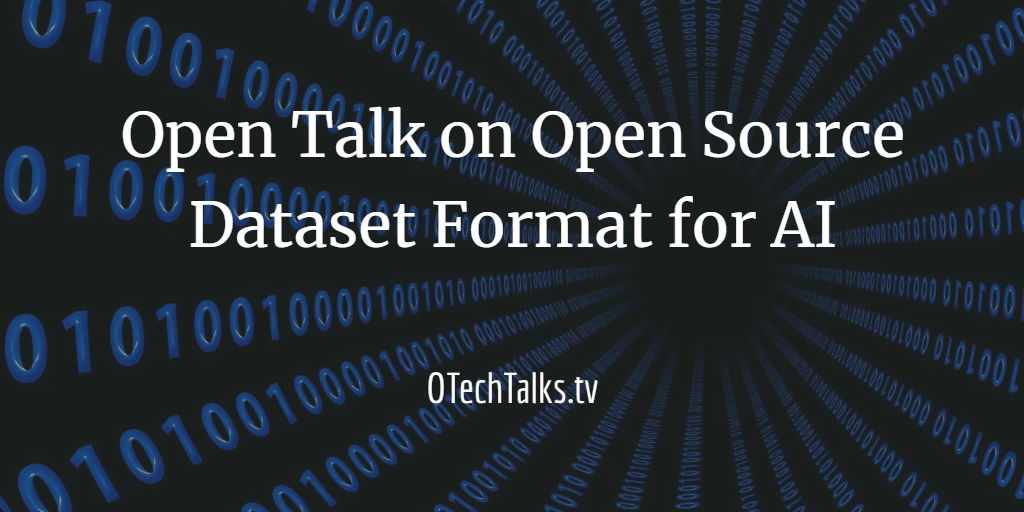
An open talk on the challenges of having a data pipeline for the images, audio and videos, The Hub enables to have several famous machine learning datasets with just a single command, like CIFAR-10, MNIST or Fashion-MNIST, Google Objection, ImageNet, COCO, and many others.
As I came from a Relational Database management system (RDBS) background, this talk gives me a new perspective and helps to think outside of the known areas. Enjoy the talk with the CEO of Active Loop. This session was recorded in October 2021 and is now being published.
Today’s Guest
Davit Buniatyan, CEO at ActiveLoop.ai
A great insight talk with the guest speaker on a topic, a product owner focuses on a dataset format to offer API for creating, storing, and collaborating on any size of AI datasets.
- What were the challenges faced in the unstructured data storage and how the hub is offering a solution to solve the data problem?
- The question of where you will store the large data sets of images, and videos - you will get all the answers in this talk
- How the opensource Github repo is helping thousands of people to use datasets to PyTorch or TensorFlow with one line of code.
- Website: ActiveLoop.ai
- Twitter: activeloop
Resources:
103- Open Talk on How to detect and stop ransomware
Every day, we are reading reports on cyberattacks and massive data breaches worldwide, resulting in substantial financial losses, disruption, and downtime. The most important thing to notice is that every day cybercriminals adopt new attacks to avoid traditional security measures and bring new approaches to achieve the target. There is a concept of having layered security, with this approach of layered security enables you to have a system for an Internet security strategy that ensures an attacker who tries to penetrate one layer of defence will be stopped by a subsequent layer. Let's get first the definition clear about layered security.
What is Layered Security?
According to, Techopedia, the layered security is:
“Layered security refers to security systems that use multiple components to protect operations on multiple levels or layers. This term can also be related to the term defence-in-depth, which is based on a slightly different idea where multiple strategies and resources are used to slow, blog, delay, or hinder a threat until it can be completely neutralized”
National Institute of Standards and Technology (NIST) Guidance, NIST has defined a layered security model that has 17 control families
This session was recorded back in October 2021, and it is now being published.
Today’s Guest
Greg Edwards, CEO at CryptoStopper
An inspirational talk with the guest speaker on a topic, a SaaS product targeted to help detect and stop ransomware.
- Why it is important to focus on security and have a Layered security approach for your organization.
- As a CEO the favourite tool is being used every day for SaaS product development.
- What are the qualifies required to get hired from a CEO perspective and many more such insights you will have
- Website: CryptoStopper
- Twitter: CryptoStopper
Resources:
- CryptoStopper
- Techopedia, the layered security
- National Institute of Standards and Technology (NIST) Guidance NIST has defined a layered security model that has 17 control families
Artificial Intelligence and Machine Learning services on Oracle Cloud
An overview of Oracle's different Artificial Intelligence, machine learning, and data science solutions available on Oracle Cloud. If you are new to this website, it is a learning and sharing platform where we will learn publicly.
Before I cover today's show schedule, let me admit that procrastination is sometimes very dangerous, as I could not record/host the podcast for the last 4 months. It wasn't easy to have a work-life balance due to the two factors. First, as I am doing MSc in AI and the previous 4-5 months were crucial to complete the key subjects, now I am on the last topic of robotics, which will be completed very soon. And 2nd factor was that I was dedicating a lot of my time to office work, where I worked with several EMEA-based customers and helped them migrate on-premise workloads to the Oracle cloud.
On the procrastination, James clear’s book ‘Atomic habit’ and specifically the article “Procrastination: A Scientific Guide on How to Stop Procrastinating” has helped me to come out of the phase and be back with the podcast 😊
Let's dive into today’s topic. Oracle has solutions that broadly cover three areas from the product's point of view. We will also talk about some of the use cases along with these products.
1-Artificial intelligence services, 2- Machine learning services and 3- AI apps for SaaS services
1-Artificial intelligence services deliver pre-trained models that can also be custom trained to improve model quality and enable organizations to use the AI services.
2-Machine learning services enable organizations to build, manage and deploy machine learning models with the different open source frameworks or they can use in-database machine learning capabilities.
3-AI apps for SaaS services provide organizations with capabilities in pre-integrated and fully functional AI functionalities in the Software as a Services (SaaS) model. These services are primarily part of the Oracle Cloud Applications. It uses deep semantic parsing with natural language processing (NLP), natural language understanding (NLU), and custom algorithms to understand common conversations to derive real intent and context. In addition, users can communicate with the business application using voice commands capabilities available in the digital assistant offered by Oracle’s Voice, it is not relying on any third party offerings.
You’ll Learn:
Different offerings for AI, ML and Data Science from Oracle Cloud:
- Overview of the AI/ML & Data science services
- Oracle Digital Assistant
- Oracle Cloud Infrastructure Language
- Oracle Cloud Infrastructure Speech
- Oracle Cloud Infrastructure Vision
- Oracle Cloud Infrastructure Anomaly Detection
- Oracle Cloud Infrastructure Forecasting
- Oracle Cloud Infrastructure Data Science
- Machine Learning in Oracle Database
- Oracle Cloud Infrastructure Data Labeling
- Oracle Cloud Infrastructure Virtual Machines for Data Science
- Oracle AI Apps for Finance
- Oracle AI Apps for Human Resources
- Oracle AI Apps for Sales
- Oracle AI Apps for Service
- Oracle AI Apps for Procurement
- Common uses cases to achieve with these cloud services/solutions.
Resources:
- Procrastination: A Scientific Guide on How to Stop Procrastinating
- Artificial Intelligence (AI) from Oracle
- OCI Anomaly Detection Service is an innovative algorithm called the multivariate sampling estimation technique (MSET)
- Forecasting use cases
- 97 – What are the leading cloud migration challenges?
- 95- Cloud Security with CIS Benchmarks
- 94- How to develop a cloud migration strategy?
- 93- Cloud Migration Workload Assessment
- 91- Workload Migration to Cloud – Getting Started
To share your thoughts:
- Leave a comment in the section below on this post
- Do you want to suggest any new topic I should cover in future Podcast
- Join us in the Mastermind tribe
- Share this on Twitter, and Facebook, If you enjoyed this episode and we together are learning new technologies.
To help out this initiative:
- Leave a candid review for the OTechTalks Podcast on iTunes! Your ratings and reviews will help the session on iTunes.
- Subscribe to the Podcast on iTunes to get the next sessions
101 - Open Talk on AI-Powered Project Management
Project management is changing how emerging technologies are becoming on-board, and complex business transformations are happening in different industries. All this requires new approaches and methodologies. In this podcast, I discussed the role of artificial intelligence in project management, how we can get ready with the future of project management, and what it looks like. What are the traits someone needs to have? What is impacting the current project management and the challenges being faced?
You will also learn why project management professionals & executives need to understand the need to transition to an AI-powered approach in project management. You will also learn the vital steps for effective collaboration between intelligent technology and project professionals. The organization is collecting enormous amounts of data and how the collected data can help have informed decisions for the project management.
You will get the answers to 4 key areas:
- What are the current challenges with project deliveries, their root causes, and why AI is the cure?
- Which AI will impact areas of Project Management?
- How will AI work in the project management practice, and what is the impact on current practices?
Understand the steps that organizations and project professionals need to take to prepare for the future
Another view to look the future of project management as Gartner reported that "By 2030, 80 percent of the work of today’s project management (PM) discipline will be eliminated as artificial intelligence (AI) takes on traditional PM functions such as data collection, tracking and reporting, according to Gartner, Inc."
However, project managers need to be ready with the help of AI and to use the latest tools in routine tasks rather than just stopping them. The core skills like leadership, people stakeholder management, storytelling, communication and many more skills will play a significant role to be a great project manager.
Today’s Guest
Marcus Glowasz, Project Management Coach, Speaker, Facilitator
A talk with the experienced project management practitioner as a guest speaker on how the latest Technologies and Innovations in Project Management.
- Website: Marcus Glowasz
- Twitter: MarcusGlowasz
Resources:
100 - Cloud Adoption Framework from Different Cloud Vendors
The cloud adoption framework of several cloud vendors helps cloud architects, IT professionals, and decision-makers have a set of protocols, best practices, and tools for the journey to the cloud. Each cloud vendor has divided the adoption framework into different phases, and in this session, I will walk you through the high-level stages of each cloud adoption framework.
The first session on this topic is covered in session number 99 with the title "Cloud Adoption Framework". In this session, I will cover the Cloud Adoption framework of Oracle, Google Cloud, AWS, IBM Cloud, and Alibaba Cloud.
You’ll Learn:
Different Cloud Adoption Frameworks:
- Different Phases of Cloud Adoption Framework of different Cloud Vendors?
- Part I - Learn about what is Cloud Adoption framework and what are the common frameworks
Resources:
- 99 – Cloud Adoption Framework
- Oracle Cloud Adoption Framework
- AWS CAP
- Microsoft Azure CAP
- IBM Cloud Cloud Adoption
- Google Cloud Adoption Framework
- Alibaba Cloud Migration Methodology
- Open Data Center Alliance Cloud Adoption Framework
- Unified Cloud Computing Adoption Framework during IEEE 2017 international conference on information systems and computer science
- Enterprise Cloud Adoption Framework developed and shared by the MITRE
- 97 – What are the leading cloud migration challenges?
- 95- Cloud Security with CIS Benchmarks
- 94- How to develop a cloud migration strategy?
- 93- Cloud Migration Workload Assessment
- 91- Workload Migration to Cloud – Getting Started
To share your thoughts:
- Leave a comment on the section below on this post
- You want to suggest any new topic we should cover in future Podcast
- Join us in the Mastermind tribe
- Share this on Twitter, Facebook, If you enjoyed this episode and we together are learning new technologies.
To help out this initiative:
- Leave a candid review for the OTechTalks Podcast on iTunes! Your ratings and reviews will help the session on iTunes.
- Subscribe to the Podcast on iTunes to get the next sessions
99 - Cloud Adoption Framework
Cloud Adoption Framework is a set of best practices, tools, and guides that most public cloud vendors publish. The idea behind these cloud adoption frameworks is to assist organizations to embrace public cloud securely, efficiently and faster. The cloud adoption framework comprises each phase of cloud acceptance, from planning to living in the cloud. It provides a very well-tested checklist and steps to choose the right path for cloud migration and the right tools to help reduce potential security, governance, and budget problems.
The good thing about the cloud adoption framework is that it covers technological, people, processes and business aspects. Therefore, it helps to align business strategies with the culture, business and technology inspirations to achieve the business benefits.
Cloud growth
The cloud adoption framework is your guide to making the most of your cloud investment. Most organizations are adopting the cloud as per the IDG’s 2020 Cloud Computing study reveals that 92% of the organizations are somewhat in the cloud.
Organizations must adapt to the cloud with proper planning and strategy in place. However, I observe that even if they have the strategy, they have just started consuming the cloud with the migration of simple applications and don’t have any proper framework or rules to follow. Another challenge I am seeing is that organizations don’t have clear visibility to their digital estate. When you start planning about cloud migration or adoption, the first question that comes to mind is to discover or assess the current IT state, which sometimes becomes painful to complete. Sometimes, what is being observed is that relevant stakeholders don’t know where to start and the requirements or initial checklist they need to follow to migrate to the cloud.
According to Gartner, if we map to the trends impacting cloud adoption, there are four critical areas.
- Cost optimization will drive cloud adoption
- Multicloud will reduce vendor lock-in
- Insufficient cloud IaaS skills will delay migrations
- Distributed cloud will support expanded service availability
There is no doubt that each organization is unique with the operating model, products, services, organizational infrastructure and technology. Now adopting the cloud also depends on the business functions, services and applications are used in the organization; it will be unique to every organization. However, as we are seeing, most organizations are moving to the cloud, so we can say there is a pattern emerging. These frameworks are the results of these patterns concluded from a large number of cloud migrations journeys. Take an example of the work done by the Open Data Center Alliance Cloud Adoption Framework
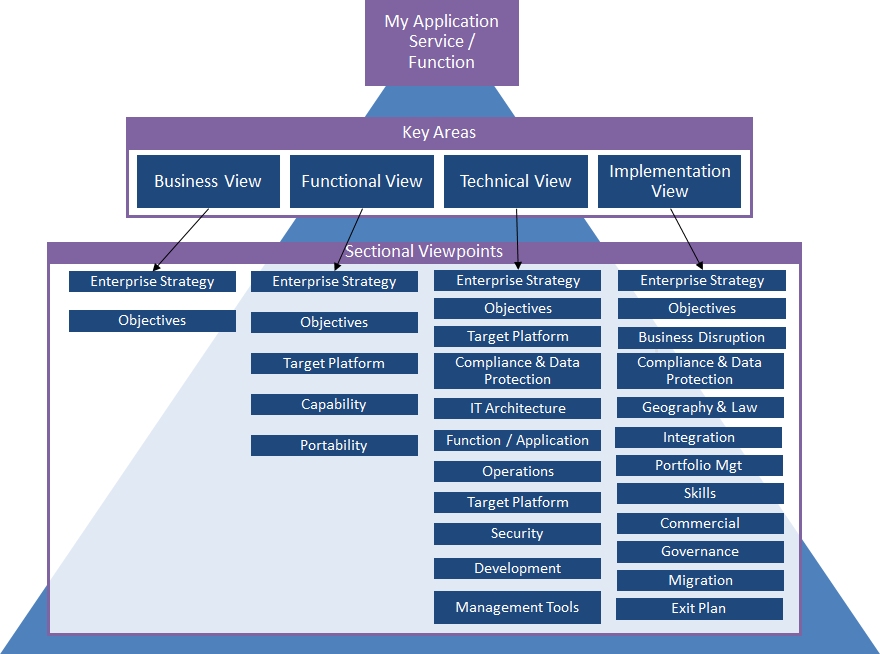
Another paper was presented during the 2017 international conference on information systems and computer science with the name “Unified Cloud Computing Adoption Framework.” which describes the process in six steps framework, current situation definition, requirements definition, providers analysis, providers assessment, decision, and migration.
Another interesting and the most I like Enterprise Cloud Adoption Framework developed and shared by the MITRE and targeted areas to address are Political leadership, Organizational, Economic, Technical and Security (POETS) factors.
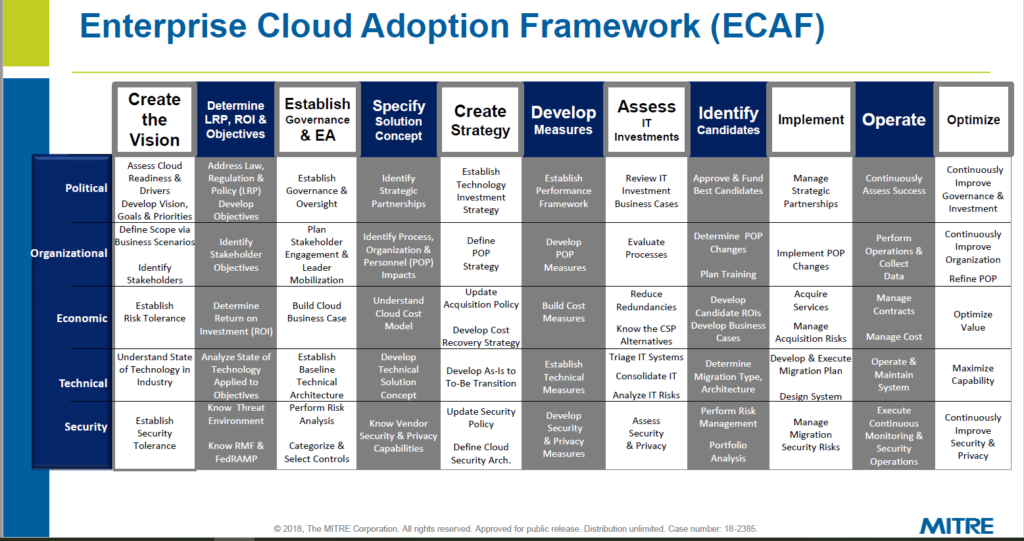
You’ll Learn:
Different Cloud Adoption Frameworks:
- What is ECAF?
- What are the common Cloud Adoption frameworks?
- Why frameworks are important for journey to cloud?
- How different cloud vendors are treating these frameworks?
- Part II - To Learn more about the different Cloud Vendors adoption framework
Resources:
- 100 – Cloud Adoption Framework from Different Cloud Vendors- Part II
- IDG’s 2020 Cloud Computing study
- Gartner, 4 trends impacting cloud adoption
- Open Data Center Alliance Cloud Adoption Framework
- Unified Cloud Computing Adoption Framework during IEEE 2017 international conference on information systems and computer science
- Enterprise Cloud Adoption Framework developed and shared by the MITRE
- 97 – What are the leading cloud migration challenges?
- 95- Cloud Security with CIS Benchmarks
- 94- How to develop a cloud migration strategy?
- 93- Cloud Migration Workload Assessment
- 91- Workload Migration to Cloud – Getting Started
To share your thoughts:
- Leave a comment on the section below on this post
- You want to suggest any new topic we should cover in future Podcast
- Join us in the Mastermind tribe
- Share this on Twitter, Facebook, If you enjoyed this episode and we together are learning new technologies.
To help out this initiative:
- Leave a candid review for the OTechTalks Podcast on iTunes! Your ratings and reviews will help the session on iTunes.
- Subscribe to the Podcast on iTunes to get the next sessions
98 - Open Talk - How to detect deepfake
A deepfake refers to a specific kind of media or photo where a person in an image or video is transacted with another person however it will look like the original person in an image or video.
To make a deep fake video, a creator swaps one person’s face and replaces it with another, using a deep learning algorithm generative adversarial networks (GAN).
A formal definition as per Wikipedia:
Deepfakes are synthetic media in which a person in an existing image or video is replaced with someone else's likeness. While the act of faking content is not new, deepfakes leverage powerful techniques from machine learning and artificial intelligence to manipulate or generate visual and audio content with a high potential to deceive. The main machine learning methods used to create deepfakes are based on deep learning and involve training generative neural network architectures, such as autoencoders or generative adversarial networks (GANs) – Source: Wikipedia
Today’s Guest
Ilke Demir, Research Scientist at Intel
An inspirational talk with the guest speaker on a variety of topics, like
- How to decide to pursue a short course or a degree program in AI/Data Science,
- What is a new fake catcher tool? and from where you can find out the number of large datasets.
- Website: Ilke Demir
- Twitter: ilkedemir
Resources:
- Ilke Demir's personal page
- What Are Deepfakes and How Are They Created?
- Deepfakes, explained by MIT management Sloan school
- What are deepfakes?
97 - What are the leading cloud migration challenges?
Cloud migration is challenging, cumbersome, and risky for traditional organizations relying on in-house custom-built systems to support achieving revenue from years on years. Today I will be discussing a wide variety of challenges organizations are facing while planning for cloud migration. These typical challenges are talks of every board room and the agenda of the meetings. However, there is no doubt that workloads migration to the cloud is helping organizations to reduce operating costs and build integrated, automated IT infrastructure.
Some Facts on Public Cloud:
- The global public cloud computing market is continuing to grow, and according to the Statista report of August 4, 2021, it will $482 billion in 2022.
- IDG’s 2020 Cloud Computing study reveals that 92% of the organizations are somewhat in the cloud.
- According to the worldwide enterprise cloud strategy 2017-2020 report by Statista, 82% of the respondent reported that they had deployed hybrid cloud strategy in their organizations.
- Gartner’s global forecast for public cloud end-user spending will grow 23.1% in 2021 to reach $332.3 billion, compares to $270 billion in 2020. (read diagram/table for podcast)
- Canalys report for the year 2020 that “total cloud infrastructure services spending grew 33% to US$142 billion, up from US$107 billion in 2019.”
- IDC’s report on global public cloud services $312 Billion in 2020
- Cloud computing market report published by marketsandmarkets “The global cloud computing market size is expected to grow from USD 371.4 billion in 2020 to USD 832.1 billion by 2025”
- Share of corporate data stored in the cloud in organizations worldwide from 2015 to 2021 "As of 2021, around 50 percent of all corporate data is stored in the cloud. This share reached 30 percent in 2015 and has continued to grow as companies increasingly shift their resources into cloud environments in the hope of improving security and reliability next to advancing business agility."
How to Secure and optimize your cloud migration
You have a daunting task in hand to migrate to the cloud and do it securely and efficiently. If it is not fully optimized and performed correctly, your dream of digital transformation in an organization can hit roadblocks/pitfalls.
Now I will share some of the common challenges which I see the cloud migrations; these are based on observation, reading a wide array of articles, and discussion with fellow IT friends/colleagues in the extended & broader community of IT professionals. What I will be doing is to mention all the typical challenges, and then I will also try to share the perspective of how you can overcome or what could be the strategy to address them. These could be starting from which workloads to be moved to what should be the order of migration to how we will have reliability and performance of business-critical services on the cloud. How I will implement required levels of security controls and regulatory compliance to who is my cloud vendor and this cloud migration must not disrupt my existing IT services, so on…
Gartner, in an article published, has beautifully categorized into six ways of cloud migrations challenge
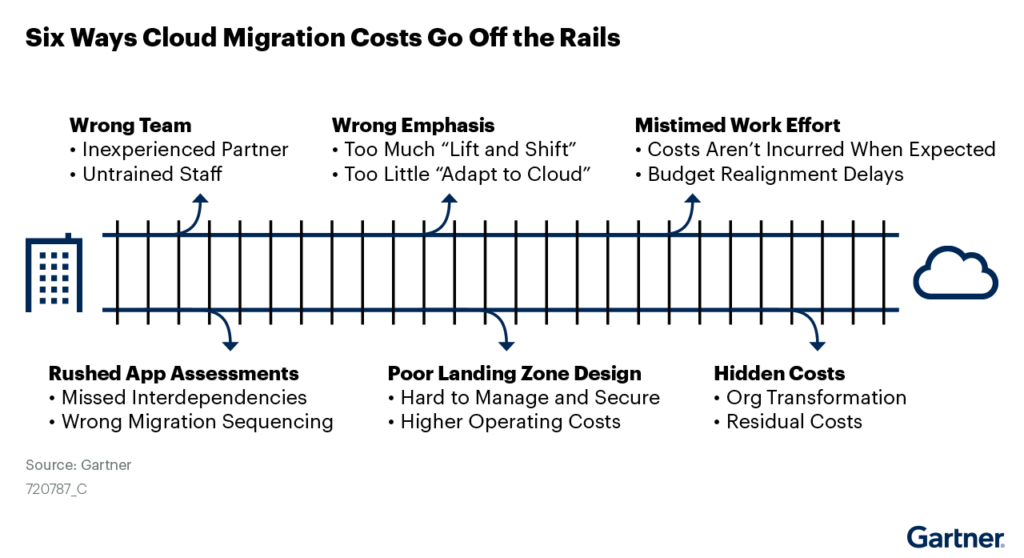
You’ll Learn:
Common Cloud Migration Challenges and How to Overcome Them:
- Why cloud migration is challenging?
- Some facts on public cloud adoption
- Common Challenges:
- Do you have a well-defined & documented Cloud Migration Strategy?
- How do you see your requirements for Data Security and Compliance?
- Do you have clarity on the Cost of the Cloud Migration Process?
- How is your organization's response to adoption/change?
- Migrating to cloud – is it Vendor Lock-In? and Who is the best Cloud Service Provider for me?
- Have you done a proper evaluation of the current IT portfolio (workload migration assessment)
- How to ensure minimum business downtime/minimum business disruption
Resources:
- Cloud Computing Trends: 2021 State of the Cloud Report
- Statista report of August 4, 2021, it will $482 billion in 2022.
- IDG’s 2020 Cloud Computing study
- worldwide enterprise cloud strategy 2017-2020 report by Statista
- Gartner’s global forecast for public cloud end-user spending
- Canalys report for the year 2020
- IDC’s report on global public cloud services
- Cloud computing market report published by marketsandmarkets
- Share of corporate data stored in the cloud in organizations worldwide from 2015 to 2021
- 95- Cloud Security with CIS Benchmarks
- 94- How to develop a cloud migration strategy?
- 93- Cloud Migration Workload Assessment
- 91- Workload Migration to Cloud – Getting Started
To share your thoughts:
- Leave a comment on the section below on this post
- You want to suggest any new topic we should cover in future Podcast
- Join us in the Mastermind tribe
- Share this on Twitter, Facebook, If you enjoyed this episode and we together are learning new technologies.
To help out this initiative:
- Leave a candid review for the OTechTalks Podcast on iTunes! Your ratings and reviews will help the session on iTunes.
- Subscribe to the Podcast on iTunes to get the next sessions
95- Cloud Security with CIS Benchmarks
The Center for Internet Security is a nonprofit organization with the mission to 'identify, develop, validate, promote, and sustain best practice solutions for cyber defense.’ Experts and IT professionals from different governments, institutes, and businesses across the globe are participating and finalizing the controls based on the consensus decision-making model.
Now let us link this to why it is essential for every one of us and every organization. I have got a chance to read the article on data breaches affecting millions of users and some of the biggest breaches in recent times published by CSOonline with the title “The 15 biggest data breaches of the 21st century.”
CIS Benchmarks
The CIS Controls consists of a recommended best practices to secure systems and devices, and CIS Benchmarks are rules for hardening specific operating systems, middleware, software applications, and network devices. The CIS Controls and the CIS Benchmarks are developed using a consensus-based approach by communities of experts.
CIS controls have been mapped to many other standards and regulatory frameworks, for example. the NIST Cybersecurity Framework (CSF), the ISO 27000, PCI DSS, HIPAA, and many others.
The decision must consider an organization’s requirements, evaluation criteria, and architecture principles.
In CIS 8 the number of controls is reduced to 18 from 20 in CIS 7. CIS 8 contains 153 Safeguards, which were called sub-controls in CS7 and they were 171 sub-controls
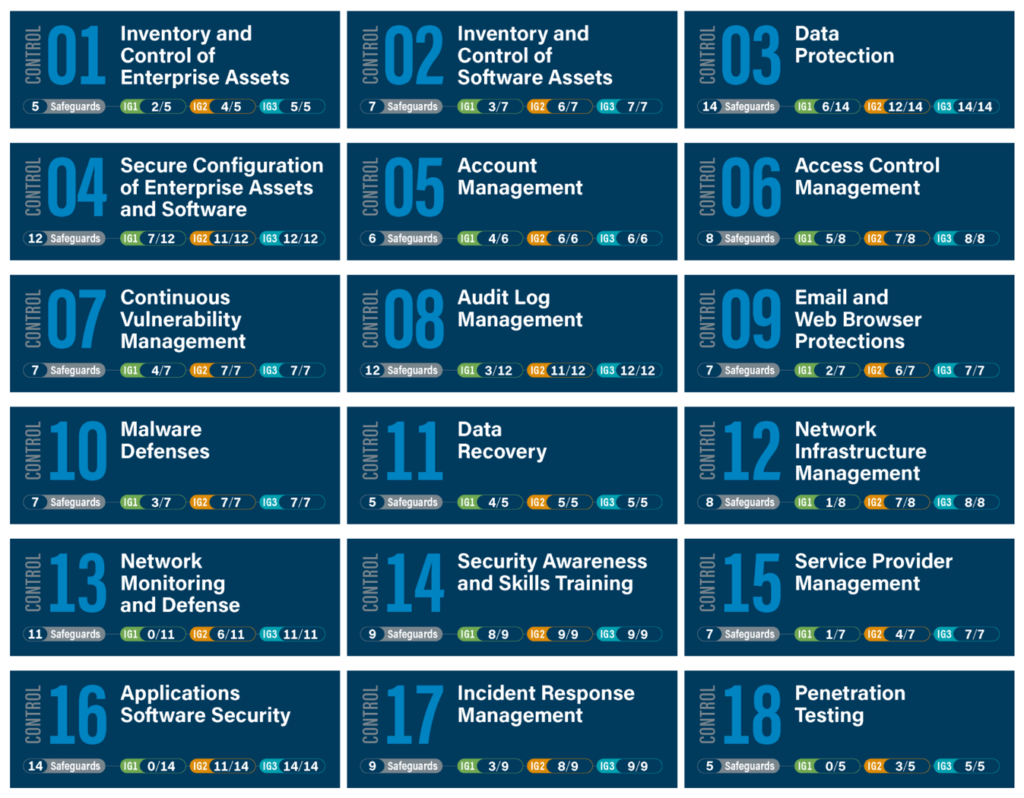
You’ll Learn:
CIS Security areas to assist you in preparing cloud security architecture
In Part 1 (Session no 95)
- What is the role of CIS and how it is playing to ensure secure internet
- What are CIS Benchmarks & benefits?
- What are the seven core categories of CIS Benchmarks?
- Basics of CIS Controls 7 & CIS Controls 8
- What different cloud vendors provide you to meet CIS Benchmarks?
In Part 2 (Session no 96)
- What are the 18 conrols of the version CIS 8
Resources:
- 95- Cloud Security with CIS Benchmarks
- Center for Internet Security
- CIS Benchmarks
- The 18 CIS Controls
- CSOonline “The 15 biggest data breaches of the 21st century.”
- 5 of the Top Questionnaires for IT Vendor Assessments
- CIS Foundations Benchmark for Oracle Cloud
- 94- How to develop a cloud migration strategy?
- 93- Cloud Migration Workload Assessment
- 91- Workload Migration to Cloud – Getting Started
To share your thoughts:
- Leave a comment on the section below on this post
- You want to suggest any new topic we should cover in future Podcast
- Join us in the Mastermind tribe
- Share this on Twitter, Facebook, If you enjoyed this episode and we together are learning new technologies.
To help out this initiative:
- Leave a candid review for the OTechTalks Podcast on iTunes! Your ratings and reviews will help the session on iTunes.
- Subscribe to the Podcast on iTunes to get the next sessions
94- How to develop a cloud migration strategy?
A cloud migration strategy is a plan which any organization develops to move its systems and applications from on-premises architecture to the cloud.
Not all applications and systems benefit from running on the cloud; that’s why you must indorse the most efficient way to work on it and migrate applications. Therefore, a systematic, documented strategy is essential.
Any strategy needs to start from some barefoot, and then it builds on it. Similarly, the vital first step to creating a migration strategy is getting to know what you have? What are the collections of applications, systems, etc.? Once you have documented existing applications, you need to refer to the most common migration strategies. Gartner is calling 5R; some vendors mentioned as 6Rs or 7Rs. (These strategies are: refactor, replatform, repurchase, rehost, relocate, retain, and retire)
Your organization will fall in these options, and you need to choose based on the workload discovery/assessment.
- Rehost
- refactor
- revise
- rebuild
- replace
The decision must consider an organization's requirements, evaluation criteria, and architecture principles.
You’ll Learn:
Three key areas to assist you in preparing cloud migration strategy
- Basics of cloud migration strategy
- What are the common cloud migration strategies?
- How to develop your cloud migration strategy?
Resources:
- 93- Cloud Migration Workload Assessment
- 91- Workload Migration to Cloud – Getting Started
- Gartner: Migrating Applications to the Cloud: Rehost, Refactor, Revise, Rebuild, or Replace?
- Oracle: Defining your Cloud strategy
- THE 5 OR 6 RS OF CLOUD TRANSFORMATION
- Microsoft: The five Rs of rationalization
- AWS: “The 6 R’s”: 6 Application Migration Strategies
- AWS: Migration terms - 7 Rs
To share your thoughts:
- Leave a comment on the section below on this post
- You want to suggest any new topic we should cover in future Podcast
- Join us in the Mastermind tribe
- Share this on Twitter, Facebook, If you enjoyed this episode and we together are learning new technologies.
To help out this initiative:
- Leave a candid review for the OTechTalks Podcast on iTunes! Your ratings and reviews will help the session on iTunes.
- Subscribe to the Podcast on iTunes to get the next sessions
93-Cloud Migration Workload Assessment
Implementing cloud or cloud migration is challenging. Organizations that have built thousands of applications over the past two to three decades require re-architecting to run efficiently, securely, and resiliently in the cloud.
Your next steps are to perform a cloud migration assessment based on your cloud strategy and business objectives. It will help identify the right migration pattern and cloud architecture required to go for the workload. Today we will talk about three vital areas.
- Cloud migration scenarios
- Workload-centric Approach
- Cloud migration assessment method
You could have different business goals to introduce digital products and services to market faster. You want to reduce your technical debt or replace on-premises infrastructure due to the end of life. All these reasons are leading you to migrate to the cloud. However, you need to decide and call which application/system is the right candidate for migration. You need to have a clear understanding of the target application's only requirements and dependencies.
On the other hand, digital transformation forces you to make quick decisions, like Microsoft CEO's famous quote.
“We’ve seen two years of digital transformation in two months.” By Microsoft CEO Satya Nadella
Hybrid & Multi-Cloud:
The way industry and customers adopt the cloud, we can state that hybrid cloud is the ‘new normal.’ The report published in March 2020 by IDC that more than 90% of global organizations will rely on the hybrid cloud by 2022.
Another survey done by Business Wire concluded that 97% of IT managers plan to allocate workloads across two or more clouds to maximize resilience, meet regulatory and compliance requirements, and leverage best-of-breed services from diverse cloud providers.
It is vital to consider yourself in the 90% of the organizations, who will use hybrid & multi-cloud models to follow the systematic approach, resulting in you reap the fruit. So let's go into details, as the first point of our today’s discussion.
1-Cloud migration scenario / strategies
Broadly, the customers have practiced common approaches/scenarios and even advocated by the prominent vendors. For example, Gartner is calling them ‘Five Rs of migration’; others are calling them ‘Six R’s of migration’ (Rehosting (‘lift & shift’), Replatforming, Repurchasing (SaaS), Refactoring, Retiring, Retaining).
These five or six scenarios can be categorized into three distinct categories.
- Lift & Shift
- Move & Improve
- Rip & Replace
These cloud migration scenarios are also dependent on when you determine what’s in the environment, the dependencies, what’s going to be easy to migrate and what’s going to be hard to migrate, and how you migrate each workload.
2-Cloud migration approach - Take a Workload-centric Approach
The intricacy of migrating workloads differs, and it can be a harrowing process; it depends on the architecture, multi-tiered applications, licensing arrangements, risks, security and compliance requirements, etc. Nevertheless, you lead to an inevitable failure if you undertake the migration without a solid understanding of the workload.
In today’s world of COVID-19, it’s fathomable that failures can, do, and will happen; what’s not acceptable today is downtime.
Most of the time, we tried to focus on the underlying infrastructure for data center migrations and just trying to mirror on-premise hardware to the cloud. It leads to significant failures, and you have to start focusing on the application rather than the underlying infrastructure. It would help if you had a complete understanding of the workload, and all application dependencies can prevent a lot of patchwork and clean up after the migration is complete.
Getting to this point where you have the complete information on the workload and then using this knowledge can outline how you will approach migrating each of the workloads.
It is our 3rd point of today, where we want to know 100% about all applications, systems in our organization
3-Cloud Migration Discovery/Assessment Method
The most crucial stage of any migrations strategy is profiling each workload and apprehending its dependencies. It is the preeminent mode to move to the future and take advantage of the cloud.
Let's define few vital steps to achieve this:
- Business impact - workload-centric (every application, system), how critical to business it is? Have classification to the workload in place.
- Application Architecture assessment – is it an n-tier application? What is the application stack? What is the status of the application from a cloud readiness point of view? If it's proprietary, what is the roadmap of the vendor? The business risks of performing a migration?
- Technical considerations – what is the migration approach? Interoperability, integration, and dependency mapping must be done. Application environment details (hardware, operating system, storage, network, etc.). What is the functional complexity? What is the underlying technology architecture?
- Generic, however, significant areas: what are the requirements for security and compliance. Audit requirements, Availability, regulatory compliance, security controls required by the application.
- Migration cost & operational cost. Software/licenses cost, SLAs, etc.
You’ll Learn:
Three key areas to assist you in getting started with migration to cloud
- What are the common scenarios / strategies for migration to cloud
- How to plan for Workload-centric Approach
- Why Migration Discovery/Assessment is vital for the success of cloud journey.
Resources:
- Session no 91: Workload Migration to Cloud – Getting Started
- 2 years of digital transformation in 2 months
- IDC expects 2021 to be the year of multi-cloud as global COVID-19 pandemic reaffirms critical need for business agility
- Infrastructure and security challenges threaten multi-cloud and edge deployments, new survey from Volterra shows
- How CIOs and CTOs can accelerate digital transformations through cloud platforms
Cloud Security Posture Management Tech Talk
Cloud Security Posture Management is the most important factor in multi-cloud deployments. Detecting and preventing the misconfigurations and threats that lead to data breaches and compliance violations in your multi-cloud environments. For organizations embarking on a multi-cloud strategy, cloud security posture management (CSPM) helps them secure multiple cloud infrastructure as a service (IaaS) providers.
According to Gartner "Nearly all successful attacks on cloud services are the result of customer misconfiguration, mismanagement and mistakes. Security and risk management leaders should invest in cloud security posture management processes and tools to proactively and reactively identify and remediate these risks"
With the help of these Cloud Security Posture Management (CSPM) tools, organizations can ascertain and remediate threats through security assessments and automated compliance checking. Unfortunately, most organizations assumed their cloud provider is entirely responsible for the security, resulting in data breaches and other security issues. If you have a multi-cloud strategy in your organization, it becomes more vital to have cloud security posture management tools. As we are witnessing, cloud security breaches are widespread, and most violations are due to cloud misconfigurations. As different cloud providers are responsible for securing the infrastructure, customers are responsible for configuring the cloud resources and ensuring applications and data are secured.
Gartner’s Hype Cycle for Cloud Security can be the starting point for all the CIOs, IT Managers, Infrastructure heads, and Security leaders to evaluate the emerging technologies on this Hype Cycle to help their organizations make safe use of the public cloud.
Today’s Guest
John Grange, CTO of Ops Compass
How the journey so far starting from pure data center guy, who has started from hosting provider to a solution for the cloud security management. Get to know about John’s favorite books and what is essential for a beginner startup owner to focus.
Website: opscompass.com
References:
Workload Migration to Cloud - Getting Started
Workload migration to Cloud has become integral to IT optimization and driving business forward with the increased espousal of cloud technologies. Moving to the cloud enables firms to be more agile, remove inefficiencies and provide required customer, employee experiences. Migration of on-premise enterprise workload to the public cloud has reached the situation of being considered a 'best practice'. These workload migrations still giving challenges to the traditionally run IT organizations as everything on-premises.
It's no longer moving to the cloud is just selecting your favorite cloud provider, and then magic will be reviled. You and your organization have to face the challenge of making the right choices:
- Which enterprise workload needs to be migrated to the cloud?
- What skills required to run the cloud?
- How will you build a team today & in the future?
- What services will be available when businesses need them?
Some critical factors have to be kept aligned or on top of the list when deciding on the architecture. I will mention what points I keep in mind while suggesting an architecture of enterprise workload migration.
You’ll Learn:
Three key areas to assist you in getting started to migrate workload to the cloud
- Appoint the workload migration Architect Role
- Identification of the right workload/applications
- Correct data of the workload
Resources:
- IDG cloud computing survey
- A paper presented during the IEEE conference
- Oracle Cloud Infrastructure basics of networking – Part 1
- Oracle Cloud Infrastructure Networking Overview – Part 2
- Oracle Cloud Infrastructure Networking Overview – Part 3
- Oracle Cloud Infrastructure’s Essentials – Networking Scenarios – Part 4
- Oracle OCI – How to Secure Your Network – Part 5 & 6
- Oracle OCI – VNICs, Private, IP addresses, DNS, DHCP options – Part 7
- Deploy a Server on the OCI Arm Ampere A1 Compute – Part 8
To share your thoughts:
- Leave a comment on the section below on this post
- You want to suggest any new topic we should cover in future Podcast
- Join us in the Mastermind tribe
- Share this on Twitter, Facebook, If you enjoyed this episode and we together are learning new technologies.
To help out this initiative:
- Leave a candid review for the OTechTalks Podcast on iTunes! Your ratings and reviews will help the session on iTunes.
- Subscribe to the Podcast on iTunes to get the next sessions
Deploy a Server on the OCI Arm Ampere A1 Compute - Part 8
How to deploy a server/instance on the newly released Arm Ampere AI compute shape in Oracle OCI. In this session, we will summarize what we have learned from the last seven sessions on the basics of OCI and you will see how those basics concepts are helping us create a new virtual machine.
Three weeks earlier, I have given a challenging task to my seven-year-old son while he was asking me to buy him a Minecraft game, and the challenge was to complete his personal ‘Junior Duke Awards’, which he was taking as part of his school activities. He kept it pending for few months. As usual, kids do; almost daily, I was getting a reminder that he is progressing very well with the challenge and I need to be ready to buy a Minecraft game.
Arm Based Computing:
Two days back, Oracle has announced the release of Arm Based computing on the OCI; with this, Oracle Cloud Infrastructure (OCI) offers Ampere Altra processors with an 80-core Arm server. The Arm is at the ‘heart’ of mobile gaming, and the Arm architecture belongs to ‘reduced instruction set computing (RISC)’ architectures for computer processors. Some of the critical features of this architecture are to provide predictable performance, high scalability, and power efficiency. ARM makes 32-bit and 64-bit RISC multi-core processors. RISC processors are designed to perform a smaller number of types of computer instructions so that they can operate at a higher speed, performing more millions of instructions per second (MIPS). By stripping out unneeded instructions and optimizing pathways, RISC processors provide outstanding performance at a fraction of the power demand of CISC (complex instruction set computing) devices.
I have seen another article written on how to deploy Minecraft on the Cloud. So these two things coincided, and I thought, let me try and create my own Minecraft server on the Oracle Cloud Infrastructure to run an Arm-based workload. All the steps are recorded in the video below, and it took me just twenty minutes to complete the entire process. I am looking forward to deploying enterprise workload to Arm-based instances.
So I thought, let me try and create my own Minecraft server on the Oracle Cloud Infrastructure. All the processes is recorded in the video below, and it took me just twenty minutes to complete the entire process. I am looking forward to playing this weekend game installed on the OCI server 🙂
You’ll Learn:
Practical work to deploy a server on Oracle Cloud Infrastructure in audio course – part – 8 (Practical Work)
- Basics of the Oracle Compute service
- Different types of compute shapes
- Build and deploy a server on ARM Ampere A1 compute
Resources:
- Arm Based computing on the OCI
- Deploy Minecraft on the Cloud
- Setting up Minecraft server
- Download Minecraft server
- Oracle Cloud Infrastructure (OCI) networking standard documentation
- Oracle Cloud Infrastructure basics of networking – Part 1
- Oracle Cloud Infrastructure Networking Overview – Part 2
- Oracle Cloud Infrastructure Networking Overview – Part 3
- Oracle Cloud Infrastructure’s Essentials – Networking Scenarios – Part 4
- Oracle OCI – How to Secure Your Network – Part 5 & 6
- Oracle OCI – VNICs, Private, IP addresses, DNS, DHCP options – Part 7
To share your thoughts:
- Leave a comment on the section below on this post
- You want to suggest any new topic we should cover in future Podcast
- Join us in Mastermind tribe
- Share this on Twitter, Facebook, If you enjoyed this episode and we together are learning new technologies.
To help out this initiative:
- Leave a candid review for the OTechTalks Podcast on iTunes! Your ratings and reviews will help the session on iTunes.
- Subscribe to the Podcast on iTunes to get the next sessions
Oracle OCI – VNICs, Private, IP addresses, DNS, DHCP options – Part 7
In this session part 7 to learn Oracle OCI, we will cover three topics:
- How to manage the virtual network interface cards (VNICs) in a virtual cloud network (VCN).
- How your instances are assigned private and public IP addresses, and the use of DNS within your cloud network.
- How to manage the Dynamic Host Configuration Protocol (DHCP) options in a virtual cloud network (VCN).
The Journey started from the first station of networking to learn basics of Oracle Cloud Infrastructure.
In the second station of our journey to learn Oracle Cloud Infrastructure (OCI). We will cover different gateways available in the VCN like:
- Network address translation (NAT Gateway),
- Service Gateway,
- Internet Gateway,
- Dynamic Routing Gateway (DRG),
- Local Peering Gateway (LPG), and
- Remote Peering Gateway (RPG).
When you will arrive at the third station of our journey, to learn OCI, you will get the basics of default components of VCN, including the below three-component comes by default with the Virtual Cloud Network on OCI.
- Default route table, with no route rules
- Default security list, with default security rules
- A default set of DHCP options, with default values
In the fourth station of our journey, we will cover the three different scenarios, public subnet, Private Subnet with a VPN, and Public and Private Subnets with a VPN.
In the fifth and sixth station of journey to learn the basics of OC we have covered below areas:
- Access controls
- Security Rules
- Network security groups
- Security Lists
- VCN Flow logs
This is available as audio and video in both formats. If you want to watch a demo and see how you will configure then you need to go to the youtube channel otechtalks and if you are on the move, let’s take a ride to learn:
You’ll Learn:
Overview of Oracle Cloud Infrastructure in audio course – part – 7
- How to manage the virtual network interface cards (VNICs).
- How you assign private and public IP addresses, and the use of DNS
- How to manage the Dynamic Host Configuration Protocol (DHCP) options
Resources:
- Oracle Cloud Infrastructure (OCI) networking standard documentation
- Oracle Cloud Infrastructure basics of networking – Part 1
- Oracle Cloud Infrastructure Networking Overview – Part 2
- Oracle Cloud Infrastructure Networking Overview – Part 3
- Oracle Cloud Infrastructure’s Essentials – Networking Scenarios – Part 4
- Oracle OCI – How to Secure Your Network – Part 5 & 6
To share your thoughts:
- Leave a comment on the section below on this post
- You want to suggest any new topic we should cover in future Podcast
- Join us in Mastermind tribe
- Share this on Twitter, Facebook, If you enjoyed this episode and we together are learning new technologies.
To help out this initiative:
- Leave a candid review for the OTechTalks Podcast on iTunes! Your ratings and reviews will help the session on iTunes.
- Subscribe to the Podcast on iTunes to get the next sessions
Oracle OCI - How to Secure Your Network - Part 5 & 6
How to secure your cloud network and compute instances in Oracle Cloud Infrastructure; you will be using private subnets, Security rules, Firewall rules, Gateways and route tables, IAM policies, and Security zones. we will also compare the Security Lists and Network Security Groups. what are the top 5 best practices to be followed for the Security Rules that are also covered in this session?
It is part 5 of our series to learn the basics of the Oracle Cloud Infrastructure. In this, we will cover key 5 areas:
- Access controls
- Security Rules
- Network security groups
- Security Lists
- VCN Flow logs
Above point 3 to 5 covering Network Security Groups (NSG), Security Lists and VCN Flow logs are covered in this session part 6 of the OCI series.
If you are listening to this session first time, my suggestion is to start from part 1.
In the second station of our journey to learn Oracle Cloud Infrastructure (OCI). We will cover different gateways available in the VCN like:
- Network address translation (NAT Gateway),
- Service Gateway,
- Internet Gateway,
- Dynamic Routing Gateway (DRG),
- Local Peering Gateway (LPG), and
- Remote Peering Gateway (RPG).
When you will arrive at the third station of our journey, to learn OCI, you will get the basics of default components of VCN, including the below three-component comes by default with the Virtual Cloud Network on OCI.
- Default route table, with no route rules
- Default security list, with default security rules
- A default set of DHCP options, with default values
In the fourth station of our journey, we will cover the three different scenarios, public subnet, Private Subnet with a VPN, and Public and Private Subnets with a VPN.
This is available as audio and video in both formats. If you want to watch a demo and see how you will configure then you need to go to the youtube channel otechtalks and if you are on the move, let’s take a ride to learn:
You’ll Learn:
Overview of Oracle Cloud Infrastructure in audio course – part – 5
- How to secure your cloud network and compute instances in Oracle Cloud Infrastructure with the use of private subnets, Security rules, Firewall rules, Gateways and route tables, IAM policies, and Security zones.
- How to control access with compartments and IAM policies
- Security Rules including security lists and Network security groups
- VCN Flow logs
Resources:
- Oracle Cloud Infrastructure (OCI) networking standard documentation
- Oracle Cloud Infrastructure basics of networking – Part 1
- Oracle Cloud Infrastructure Networking Overview – Part 2
- Oracle Cloud Infrastructure Networking Overview – Part 3
- Oracle Cloud Infrastructure’s Essentials – Networking Scenarios – Part 4
To share your thoughts:
- Leave a comment on the section below on this post
- You want to suggest any new topic we should cover in future Podcast
- Join us in Mastermind tribe
- Share this on Twitter, Facebook, If you enjoyed this episode and we together are learning new technologies.
To help out this initiative:
- Leave a candid review for the OTechTalks Podcast on iTunes! Your ratings and reviews will help the session on iTunes.
- Subscribe to the Podcast on iTunes to get the next sessions
Oracle Cloud Infrastructure's Essentials - Networking Scenarios - Part 4
Networking scenarios in Oracle Cloud Infrastructure depend on your network design and your application requirements, how you want to set up. In this session, you will get the three networking choices, which will give you a basic understanding and clarity on the different components and how you can choose each of them while designing it..
Before you go to today's topic, I want to share with you the mindset of a 'lifelong learner.'
Lifelong learning is the "ongoing, voluntary, and self-motivated" pursuit of knowledge for personal or professional reasons. Therefore, it enhances social inclusion, active citizenship, personal development, self-sustainability, and competitiveness, and employability.
So you can summarize the "self-started education focuses on personal development is a lifelong learning."
Is it essential to be a lifelong learner?
For years there was a common understanding that learning is early age and then for young adults. They have to bother about it as you are graduated and got your university degree, so you are done with the education. It was sufficient to get a great job in an earlier era, and you keep it until you retire. However, now the basics of learner have changed; you can not live on the concept of, learn, do, retire. To cope with the modern world, you must learn, do, unlearn - learn, do, rest - learn, do, unlearn - repeat. It is the cycle of a lifelong learner.
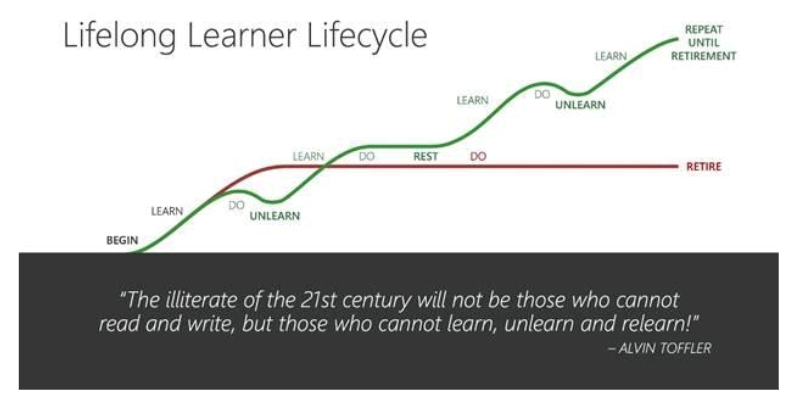
In this OCI series to learn and share, We have started to cover the basics of Oracle Cloud Infrastructure Networking includes Virtual Cloud Network (VCN), subnets, and other components of the networking.
Scenario A: Public Subnet
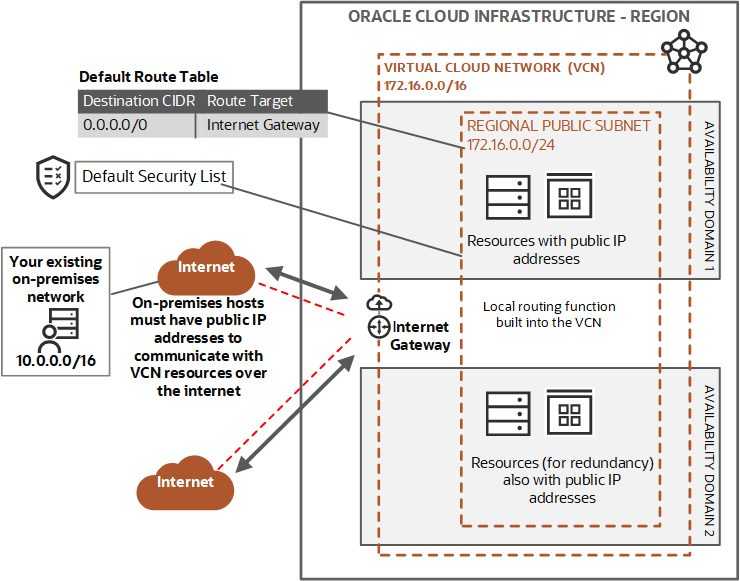
Scenario B: Private Subnet with a VPN
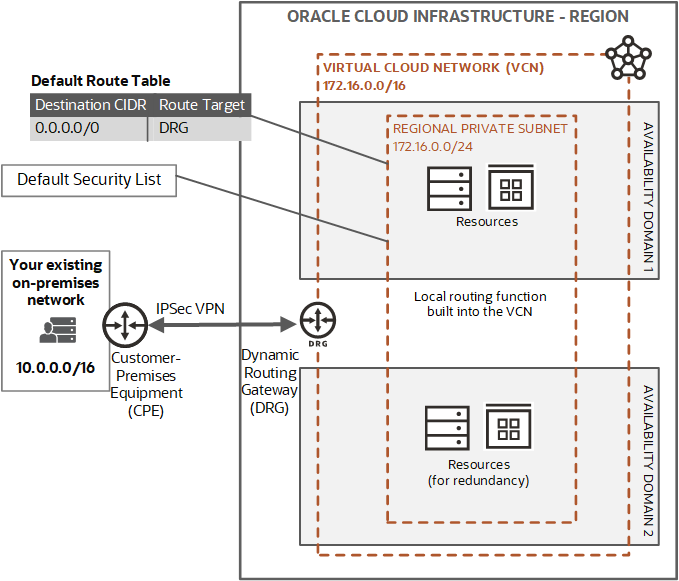
Scenario C: Public and Private Subnets with a VPN
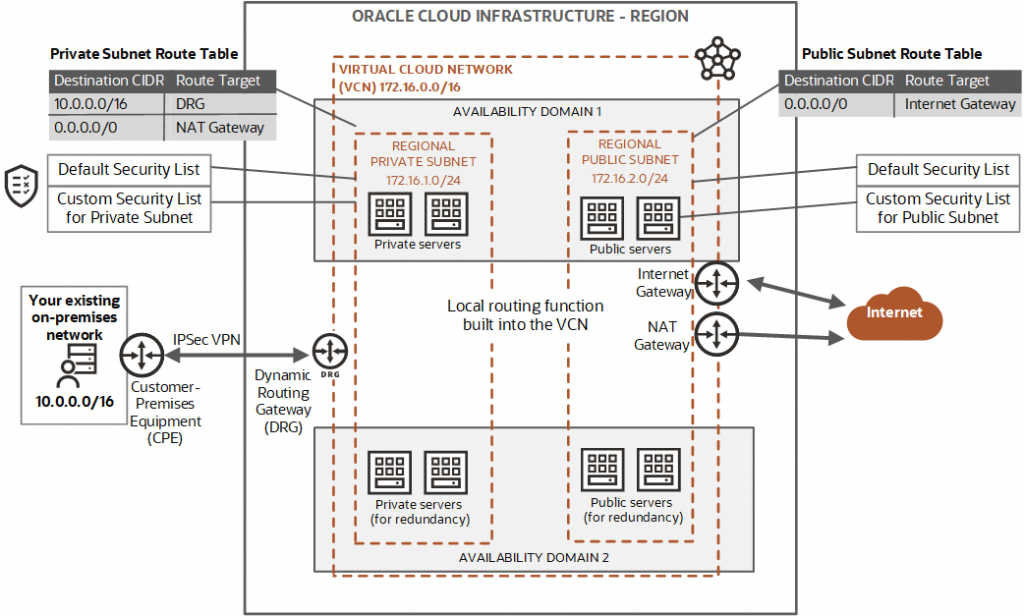
When you will arrive on the third station of our journey, to learn OCI, you will get the basics of default components of VCN, including below three-component comes by default with the Virtual Cloud Network on OCI.
- Default route table, with no route rules
- Default security list, with default security rules
- A default set of DHCP options, with default values
In the second station of our journey to learn Oracle Cloud Infrastructure (OCI). We will cover different gateways available in the VCN like:
- Network address translation (NAT Gateway),
- Service Gateway,
- Internet Gateway,
- Dynamic Routing Gateway (DRG),
- Local Peering Gateway (LPG), and
- Remote Peering Gateway (RPG).
This is available as audio and video in both formats. If you want to watch a demo and see how you will configure then you need to go to the youtube channel otechtalks and if you are on the move, let’s take a ride to learn:
You’ll Learn:
Overview of Oracle Cloud Infrastructure in audio course – part – IV
- Scenario A: Public Subnet
- Scenario B: Private Subnet with a VPN
- Scenario C: Public and Private Subnets with a VPN
Resources:
- Oracle Cloud Infrastructure (OCI) networking standard documentation
- Oracle Cloud Infrastructure basics of networking - Part 1
- Oracle Cloud Infrastructure Networking Overview - Part 2
- Oracle Cloud Infrastructure Networking Overview - Part 3
To share your thoughts:
- Leave a comment on the section below on this post
- You want to suggest any new topic we should cover in future Podcast
- Join us in Mastermind tribe
- Share this on Twitter, Facebook, If you enjoyed this episode and we together are learning new technologies.
To help out this initiative:
- Leave a candid review for the OTechTalks Podcast on iTunes! Your ratings and reviews will help the session on iTunes.
- Subscribe to the Podcast on iTunes to get the next sessions
Oracle Cloud Infrastructure Networking Overview Part 3
Oracle Cloud Infrastructure networking overview will be covered in this session. It is in continuation of the series of sessions, We have started to cover the basics of Oracle Cloud Infrastructure Networking includes Virtual Cloud Network (VCN), subnets, and other components of the networking.
This episode will cover the default components of VCN, below three-component comes by default with the Virtual Cloud Network on OCI.
- Default route table, with no route rules
- Default security list, with default security rules
- Default set of DHCP options, with default values
In the second station of our journey to learn Oracle Cloud Infrastructure (OCI). We will cover different gateways available in the VCN like:
- Network address translation (NAT Gateway),
- Service Gateway,
- Internet Gateway,
- Dynamic Routing Gateway (DRG),
- Local Peering Gateway (LPG), and
- Remote Peering Gateway (RPG).
This is available as audio and video in both formats. If you want to watch a demo and see how you will configure then you need to go to the youtube channel otechtalks and if you are on the move, let’s take a ride to learn:
You’ll Learn:
Overview of Oracle Cloud Infrastructure in audio course – part – III
- Default components of VCN
- Route Table, Security List, and how to setup DHCP options
Resources:
- Oracle Cloud Infrastructure (OCI) networking standard documentation
- Oracle Cloud Infrastructure basics of networking– Part 1
- Oracle Cloud Infrastructure Networking Overview - Part 2
To share your thoughts:
- Leave a comment on the section below on this post
- You want to suggest any new topic we should cover in future Podcast
- Join us in Mastermind tribe
- Share this on Twitter, Facebook, If you enjoyed this episode and we together are learning new technologies.
To help out this initiative:
- Leave a candid review for the OTechTalks Podcast on iTunes! Your ratings and reviews will help the session on iTunes.
- Subscribe to the Podcast on iTunes to get next sessions
Oracle Cloud Infrastructure Networking Overview Part 2
Oracle cloud infrastructure networking overview is the topic of our session. We have started to cover the basics of Oracle Cloud Infrastructure Networking includes Virtual Cloud Network (VCN), subnets, and other components of the networking.
In this second station of our journey to learn Oracle Cloud Infrastructure (OCI). We will cover different gateways available in the VCN like:
- Network address translation (NAT Gateway),
- Service Gateway,
- Internet Gateway,
- Dynamic Routing Gateway (DRG),
- Local Peering Gateway (LPG), and
- Remote Peering Gateway (RPG).
This is available as audio and video in both formats. If you want to watch like a demo and see how you will configure then you need to go to the youtube channel otechtalks and if you are on the move, let’s take a ride to learn:
You’ll Learn:
Overview of Oracle Cloud Infrastructure in audio course – part – II
- Overview of different OCI Networking Gateways
- NAT Gateway, Service Gateway, Internet Gateway, Dynamic Gateway Gateway, Local Peering Gateway
Resources:
- Oracle Cloud Infrastructure (OCI) networking standard documentation
- Oracle Cloud Infrastructure basics of networking- Part 1
- Oracle Cloud Infrastructure Networking Overview – Part 2
- Oracle Cloud Infrastructure Networking Overview Part 3
To share your thoughts:
- Leave a comment on the section below on this post
- You want to suggest any new topic we should cover in future Podcast
- Join us in Mastermind tribe
- Share this on Twitter, Facebook, If you enjoyed this episode and we together are learning new Technologies.
To help out this initiative:
- Leave a candid review for the OTechTalks Podcast on iTunes! Your ratings and reviews will help the session on iTunes.
- Subscribe to the Podcast on iTunes to get next sessions
Oracle Cloud Infrastructure basics of networking
[powerpress]
What are the fundamental concepts of Oracle cloud infrastructure of networking is the topic of today. Oracle Cloud Infrastructure Networking includes Virtual Cloud Network (VCN), subnets, and other components of the networking.
Today's session number is 85. However, today we will start new audio series to learn the Essentials of Oracle Cloud Infrastructure. Over the past few years, I thought was whenever I am going to the gym or a jogging or a long drive for meetings, I always thought to listen to something which will give a new fruit of thought, usually I was listening to podcasts that's how it led me to start this podcast back in early 2015.
I have covered so many different topics over the last five years. However, with the new goal settings for 2021, I focused on three key areas rather than various topics. Those topics were:
- Oracle technologies,
- AI/ML Data Science
- Digital transformation,
and discussed the rationale behind it in detail during my earlier sessions.
Welcome to every one of you to the podcast,
wherever you are; if you are driving, have a safe drive and remember 'Leave sooner, drive slower, live longer.'
If you don’t know where you are going, any road will get you there
If you are at a gym for a workout or jogging,
"Reading is to the mind what exercise is to the body."
Thank you so much for listening; you are the inspiration for me; your feedback and comments are the force behind this journey,
Now let's start the journey of learning Oracle Cloud Infrastructure (OCI). We will have, I think, 6-8 sessions on Oracle OCI, where we will go into detail about the fundamental concepts starting from setting up VCN.
What I am trying to do is to record in audio and video both formats separately; you want to watch like a demo and see how you will configure then you need to go to the youtube channel otechtalks and if you are on the road, driving, or jogging, let's take a ride to learn:
You’ll Learn:
Overview of Oracle Cloud Infrastructure in an audio course - part - 1
- Overview of OCI Networking
- Common terms to understand
- What are VCN and Subnet?
Resources:
- Oracle Cloud Infrastructure (OCI) networking standard documentation
- Oracle Cloud Infrastructure Networking Overview – Part 2
- Oracle Cloud Infrastructure Networking Overview Part 3
- Oracle Cloud Infrastructure’s Essentials – Networking Scenarios – Part 4
- Oracle OCI – How to Secure Your Network – Part 5 & 6
- Oracle OCI – VNICs, Private, IP addresses, DNS, DHCP options – Part 7
- Deploy a Server on the OCI Arm Ampere A1 Compute – Part 8
- How to develop a cloud migration strategy?
- What are the leading cloud migration challenges?
- Workload Migration to Cloud – Getting Started
- Cloud Migration Workload Assessment
To share your thoughts:
- Leave a comment in the section below on this post
- Do you want to suggest any new topic we should cover in future Podcast
- Join us in the Mastermind tribe
- Share this on Twitter, and Facebook, If you enjoyed this episode and we together are learning new technologies.
To help out this initiative:
- Leave a candid review for the OTechTalks Podcast on iTunes! Your ratings and reviews will help the session on iTunes.
- Subscribe to the Podcast on iTunes to get the next sessions
How machine learning works?
How machine learning works in the real world and how data scientists use the four necessary steps for building a machine learning application (or model). The primary building blocks of a Machine Learning system are the model, the parameters, and the learner. The model is which makes predictions; the parameters are the factors or variables & features which are considered by the model to make predictions, and the learner completes the adjustments in the parameters and the model to align the projections with the actual results.
First session to learn as a beginners to ML, go to the first post What is machine learning? learning the basics (otechtalks.tv)
MIT Course Video on Machine Learning
You’ll Learn:
It’s a beginners guide to learn the basics of the ML
- Preparing a training data set
- Selection of algorithm to run on the training data set
- Training the algorithm to create the model
- Using and improving the model
Resources:
- What is machine learning? learning the basics
- Book: Artificial intelligence, a modern approach
- Book: Foundation of ML
- How Facebook uses ML
- Basics of Machine Learning
- Deep Learning Courses
- Edx – Machine Learning
- Coursera
To share your thoughts:
- Leave a comment on the section below on this post
- You want to suggest any new topic we should cover in future Podcast
- Join us in Mastermind tribe
- Share this on Twitter, Facebook, If you enjoyed this episode and we together are learning new technologies.
To help out this initiative:
- Leave a candid review for the OTechTalks Podcast on iTunes! Your ratings and reviews will help the session on iTunes.
- Subscribe to the Podcast on iTunes to get the next sessions
Digital Transformation of Leaders
Digital transformation of leaders is a crucial area ignored or not considered at the business transformation programs agenda. Digital transformation requires top to bottom organizational change, which requires digital-savvy leaders and knows how to lead the digital programs. All programs are focusing on the digital transformation of the business or an organization. However, significantly less focus is on the readiness of leaders of an organization. It is leading to a lot of challenges in the success rate of business transformation programs.
Few months back, on a similar topic, we had a session with the title of ‘What is for ‘me’ in Digital Transformation? (otechtalks.tv)’ part 1 and ‘What is for ‘me’ in Digital Transformation? Part 2 (otechtalks.tv)’ without enough expertise of the leaders, shareholders, owners of the business on the digital area is becoming a challenge, and that’s why I like the article/research done by the MIT Sloan Management Review with the title “Leadership’s Digital Transformation.”
It leads me to ask some fundamental questions to the leaders, few to mention:
- How can leaders explain the vision for digital transformation?
- Do you have a chief digital officer role in the organization? If not, who is doing this role, and what are the challenges, responsibilities, and success standards for that position/role?
- How much of your budget is allocated for transforming the organization?
- Five to ten years from now, how will your organization be different?
Leader’s Traits:
- Leaders need to have top traits that consist of interpersonal skills, cultural knowledge, and emotional intelligence to see the big picture of business transformation. Another essential quality is to have the ability to unlearn and learn so that they can lead the transformative situations required for organizations.
- Leaders need to have a business understanding, taking the right decisions at the right time, focusing on achieving timely executions of initiatives with clear objectives.
- Leaders need to have the right competencies to work freely, autonomously, and with limited involvement from others; however, when required, he is flexible and takes opinions from others. He must have integrity to be authentic, open and flexible, adaptable.
You’ll Learn:
It’s a beginners guide to learn the basics of the ML
- Key findings of the research
- The Purpose Maturity Index
- Traits of the digital leaders
Resources:
- MIT Sloan Management Review “Leadership’s Digital Transformation
- Why digital transformation is now on the CEO’s shoulders
- Open Tech Talk Sessions on Digital Transformation:
- 81- Digital Transformation during and Post COVID-19
- 64- Coronavirus Outbreak: Business continuity & IT Leaders priorities
- 63- Digital transformation expectations vs. reality
- 62- First 100 Days of Digital Transformation
- 61- How to do Digital Maturity Assessment
- 60- What is digital maturity and which digital maturity model to choose?
- 59- Where to start in an organization for Digital Transformation
- 58- A leap from Information Technology to Business Technology
- 57-Architecting an operating model for digital transformation
- 56- A Digital Transformation Framework
- 54-How to make a business case of Digital Transformation
- 53- Human Resources and Digital transformation
- 52- How you will know digital transformation is achieved
- 51- Enterprise Architects for Success of Digital Transformation
- 50- Is there an end to Digital Transformation?
- 49-What is for ‘me’ in Digital Transformation? Part 2
- 48- What is for ‘me’ in Digital Transformation? Part-1
- 47-How to win at Digital Transformation
- 46- Digital Transformation – it’s all about culture
- 45- How to Overcome Digital Transformation Challenges
- 44-What are the challenges in Digital Transformation
- 43-What other Organization are doing to achieve digital transformation
- 42-How do you start a Digital Transformation
- 41-What are the benefits of Digital Transformation?
- 40-Why Digital Transformation is required?
- 39-“What is digital transformation? Learning the basics”
To share your thoughts:
- Leave a comment on the section below on this post
- You want to suggest any new topic we should cover in future Podcast
- Join us in Mastermind tribe
- Share this on Twitter, Facebook, If you enjoyed this episode and we together are learning new technologies.
To help out this initiative:
- Leave a candid review for the OTechTalks Podcast on iTunes! Your ratings and reviews will help the session on iTunes.
- Subscribe to the Podcast on iTunes to get the next sessions
What is machine learning? learning the basics
Machine learning: a computer observes some data, builds a model based on the data, and uses the model as both a hypothesis about the world and a piece of software that can solve problems, According to the book ‘Artificial Intelligence, a modern approach'.
Machine learning is a division of artificial intelligence (AI) focused on computational programs that learn from experience and improve decision-making or predictive accuracy over time.
In this podcast, our focus will be to go through very basics concepts of machine learning along with the different methods of machine learning, for example, supervised learning, unsupervised learning, reinforcement learning, and Semi-supervised machine learning.
Machine learning is not a 'Rule-Based Approach' which was common in 1980
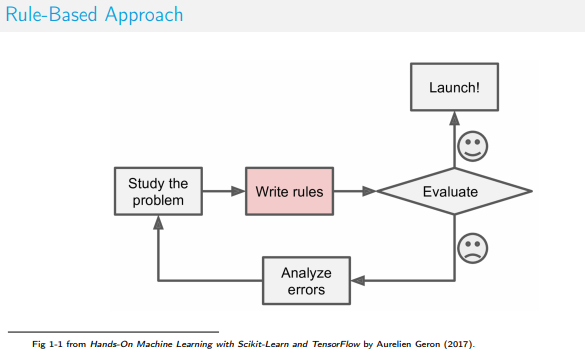
a modern machine learning approach is explained in this diagram:
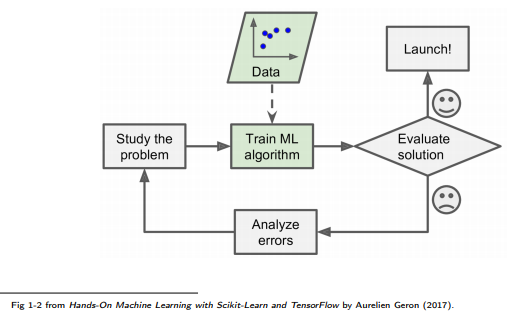
You’ll Learn:
It's a beginners guide to learn the basics of the ML
- What is machine learning?
- Machine learning methods
- Machine Learning Basic Concepts
Resources:
- How machine learning works?
- Book: Artificial intelligence, a modern approach
- Book: Foundation of ML
- Block box ML
- 14 Different Types of Learning in ML
- Deep Learning Courses
- Edx - Machine Learning
- Coursera
To share your thoughts:
- Leave a comment on the section below on this post
- You want to suggest any new topic we should cover in future Podcast
- Join us in Mastermind tribe
- Share this on Twitter, Facebook, If you enjoyed this episode and we together are learning new technologies.
To help out this initiative:
- Leave a candid review for the OTechTalks Podcast on iTunes! Your ratings and reviews will help the session on iTunes.
- Subscribe to the Podcast on iTunes to get the next sessions
Solving Sudoku Puzzles - A Beginners Journey
Solving Sudoku Puzzles a beginner's journey is the target of this week, you may be familiar with Sudoku puzzles and possibly have solved a few in your day or life. However, I admit that I have never solved any Sudoku puzzle. This post is our continuation of putting efforts to learn AI/ML & Data Science.
I have an assignment to solve a Sudoku puzzle as part of my MSc program, so my journey started, and I am journaling about it. Let's learn together
According to the book 'Artificial intelligence, a modern approach' The popular Sudoku puzzle has introduced millions of people to constraint satisfaction problems, although they may not realize it. A Sudoku board consists of 81 squares, some of which are initially filled with digits from 1 to 9. The puzzle is to fill in all the remaining squares such that no digit appears twice in any row, column, or box. A row, column, or box is called a unit”
Sudoku Rules of Play:
- It consists of 9 x 9 puzzle grids sub-divided into 3 x 3 blocks of 9 numbers.
- Each number of any cell in the 9 x 9 puzzle can only be between 1 to 9
- Each 3 x 3 block must have all the numbers between 1 to 9 in any cell and it can not repeat the numbers
- Each row of the 9 x 9 puzzle must have all the numbers between 1 to 9, no number can repeat.
- Each column to have the numbers between 1 to 9, no number can repeat
According to Sudoku Kingdom, the roles are below,
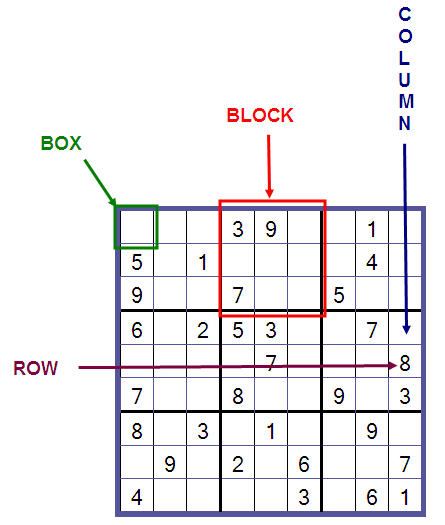
You’ll Learn:
The basics of Sudoku Puzzles
- What is Sudoku puzzle?
- What are the rules of play?
- Techniques to be used in solving Sudoku
Resources:
- Sudoku - how to pronounce correctly, according to the Cambridge dictionary
- Solving Every Sudoku Puzzle by Peter Norvig
- MIT Open Course: Puzzle 8: You Won't Want to Play Sudoku Again
- Sudoku Solver at Standford university
To share your thoughts:
- Leave a comment on the section below on this post
- You want to suggest any new topic we should cover in future Podcast
- Join us in Mastermind tribe
- Share this on Twitter, Facebook, If you enjoyed this episode and we together are learning new technologies.
To help out this initiative:
- Leave a candid review for the OTechTalks Podcast on iTunes! Your ratings and reviews will help the session on iTunes.
- Subscribe to the Podcast on iTunes to get the next sessions
5 Whys Problem-Solving Technique and Avoiding the 5 Blames
5 whys is the technique which I came to know form the book 'The Lean Startup,' and before I talk about this technique, I would highly recommend to must read this book, if you are in IT, it will help you a lot, it doesn't matter either you are startup owner or working as an employee like me. It has so many tool kits that you can utilize in your job or your startup business.
While you will read the 5 whys methodology, I think it is also essential to understand the 5 blames situation. Whereas you will use the 5 whys to find out the root cause of the problem, frustrated teammates might start finding or mentioning to each other that this fault is due to you or him/her. They try to judge that this fault is due to who. With this, you will not get the problem sorted out; instead, you will stuck in the blame game called here 5 blames, which will lead to the failures.
The 5 whys' goal is to help us find out the root cause of the problem, it could be due to wrong process, or practices, however not bad people, and it helps us find a solution to fix it rather than to blame each other. This incredible technique is called Five Whys, originating from the Toyota Production System, and theorizes that behind every supposedly technical problem is a human problem. Sakichi Toyoda, the founder of Toyota Industries, developed the Five Whys procedure in the 1950s and Toyota uses it to solve problems. Taiichi Ohno defines the technique in his book Toyota Production System: Beyond Large-Scale Production that "the basis of Toyota's scientific approach . . . by repeating why five times, the nature of the problem as well as its solution becomes clear."
Steps to run five whys method
- Get the right people/team/stakeholders in the meeting room on zoom
- Problem Statement
- Ask & Answer "Why?" Five times to root-cause the problem
- Brainstorm the solutions
- Assign the Actions
You must have a 'Five Whys Master' for the meeting who is the leader to oversea the proceedings and follow with the assign actions.
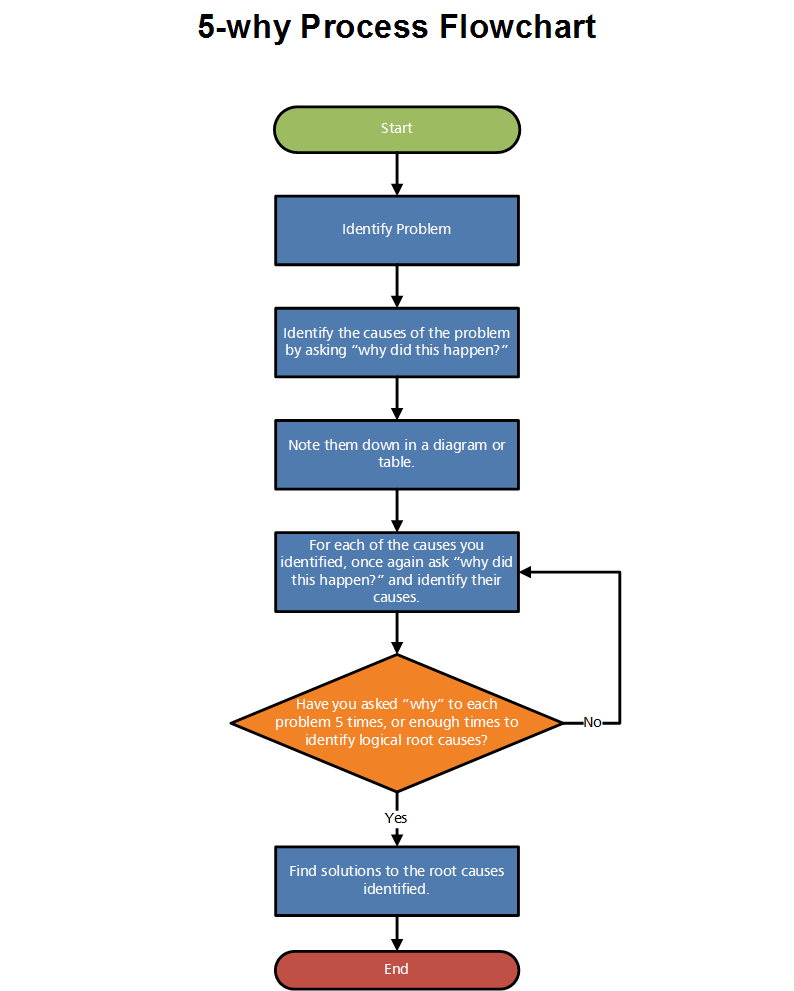
You’ll Learn:
The wisdom of 5 whys and 5 blames
- What is 5 Why technique?
- Steps to start using the 5 Whys technique
- How to avoid from the trap of blames
Resources:
- 'The Lean Startup
- Five Whys
- Using the Five whys technique in Sales
- Toyota Production System
- Toyota Production System: Beyond Large-Scale Production
To share your thoughts:
- Leave a comment on the section below on this post
- You want to suggest any new topic we should cover in future Podcast
- Join us in Mastermind tribe
- Share this on Twitter, Facebook, If you enjoyed this episode and we together are learning new Technologies.
To help out this initiative:
- Leave a candid review for the OTechTalks Podcast on iTunes! Your ratings and reviews will help the session on iTunes.
- Subscribe to the Podcast on iTunes to get next sessions
The history of Artificial Intelligence - Past and Present
I have embarked on a journey to study Artificial Intelligence and pursue formal study as an MSc course six months back. I was amazed to read the history of artificial intelligence. It was awe-inspiring knowledge of how legends have coined ‘artificial intelligence’, thought to share with you some of the highlights. It will give you the very basics of AI. From where it started and how it was passing through from different periods.
Definition of AI
Now before will go to history, let's understand the basic formal definition of AI. According to written at Britannica
- Artificial intelligence (AI), the ability of a digital computer or computer-controlled robot to perform tasks commonly associated with intelligent beings. The term is frequently applied to the project of developing systems endowed with the intellectual processes characteristic of humans, such as the ability to reason, discover meaning, generalize, or learn from past experience
- “Artificial intelligence is a computerized system that exhibits behavior that is commonly thought of as requiring intelligence.” Written in “Preparing for the Future of Artificial Intelligence, NSTC, 2016”
- “Artificial Intelligence is the science of making machines do things that would require intelligence if done by man.” In “6. Raphael, B. 1976. The thinking computer. San Francisco, CA: W.H. Freeman”
- “AI is the science and engineering of making intelligent machines, especially intelligent computer programs.” Source: http://www-formal.stanford.edu/jmc/whatisai/node1.html
Machine Learning (ML): pattern identification and analysis; machines can improve with experience from provided data sets
Deep Learning (DL): composed of multi-layer neural networks that enable machines to learn and make decisions on their own
According to several books, the roots of modern AI are way back. However, I will share with you when the term ‘AI’ is presented to the world and so on.
Most of the contents of this episode are taken from the book “Artificial Intelligence – A Modern Approach, fourth edition.
AI and Life in 2030 - one hundred year study on artificial intelligence
Stanford University released its first report for the One Hundred Year Study, a long-term look into the future of AI
Another good way to present from Science in the news at Harvard University
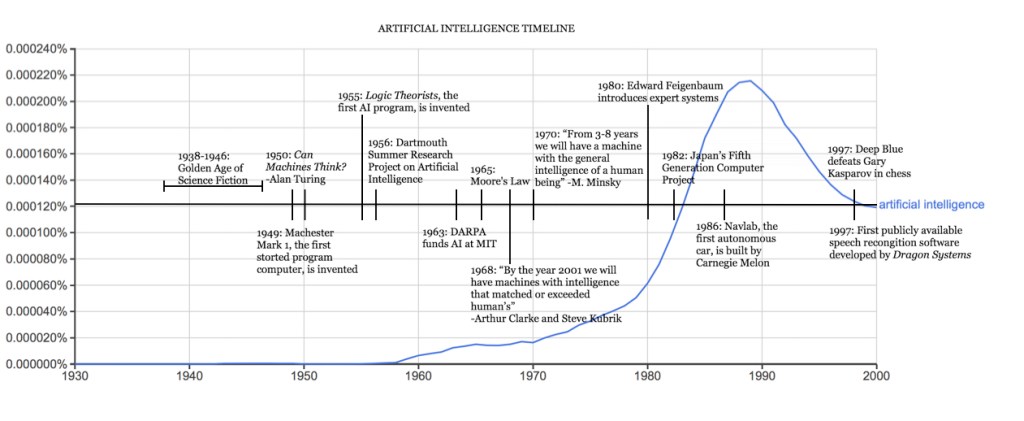
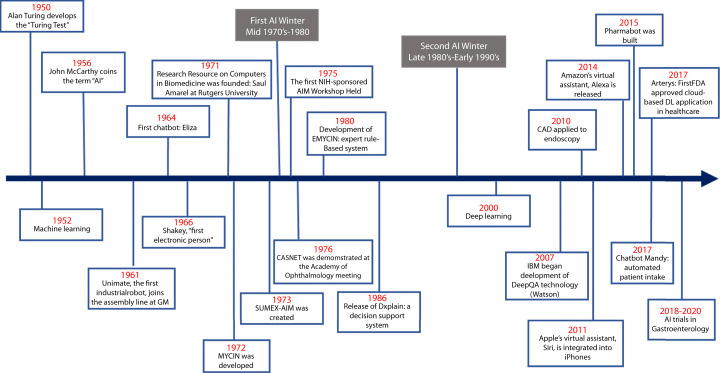
Resources:
- The Present and Future of AI by Gartner
- Strategic Framework for AI Use Cases by Industry - Gartner
- Artificial Intelligence by Stanford Encylopedia of Philosophy
- A Complete History of AI
To share your thoughts:
- Leave a comment on the section below on this post
- You want to suggest any new topic we should cover in future Podcast
- Join us in Mastermind tribe
- Share this on Twitter, Facebook, If you enjoyed this episode and we together are learning new Technologies.
To help out this initiative:
- Leave a candid review for the OTechTalks Podcast on iTunes! Your ratings and reviews will help the session on iTunes.
- Subscribe to the Podcast on iTunes to get next sessions
Building Resilience in 2021 and Setting a Plan to Achieve
Happy New Year 2021 to you and your families; I wish you and your family peace and joy in the year 2021. We have passed this year, and I want to start this session with the quote,
"You don't have to be great to start, but you have to start to be great. - Zig Ziglar"
This year, it is essential to get organized, set goals, and make plans. it will be an open talk to start the year and what we have done with compare to last year goals, which we have set it up during the year 2020 "Seeing clearly in 2020 and Top-Ranked learning courses that will prepare you for future.”
How COVID-19 has changed everything for all of us, and I am praying and hoping that we will get to normal and the most valuable lesson of 2020 is a world can change in a week.
We need to consider what are the reasons for you and everyone to set goals and get organized. You can name it what the drivers for action. It can be categories into three areas:
Drivers for Action:
- Beliefs – core values
- Motives – to maintain
- Triggers – to initiate
These three results in “drivers for Actions” which leads to build habits
Now, as Seth Godin wrote in his blog. A simple 2 x 2 for choices a 2x2 grid
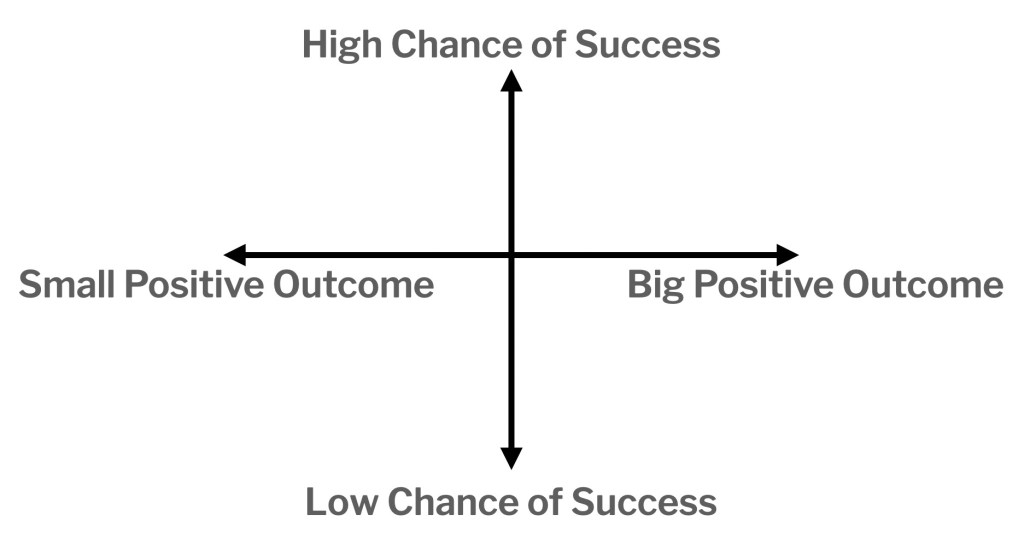
And the most important thing is building Resilience, in every area of human life, with the economic, personal, and professional challenges we have all faced during 2020. It is time to think about Resilience and work on it.
What is Resilience?
According to American Psychological Association, Resilience is the capability to acclimate to life’s hardships and recover from trauma and problem. It supports us to rebound from the setbacks and challenges, for example, a job loss, a severe illness, a natural tragedy, or the death of a loved one.
What Resilience isn’t
The critical difference or point to remember, Resilience won’t make your problems go away or protect you from trauma; you have to face the hardships. However, it will give you the power to manage stress and keep working, physically and psychologically. Resilience varies from people to people; some people may be more resilient than others; you can learn how to be Resilient; it is an achievable quality. We all can discover behaviors and develop ways of thinking and acting that allow us to become more resilient.
When we talk about resiliency in business, or my area of passion like business transformation, which enabled us to live and sail through the last year of COVID-19.
We have covered few actions like 90 days plan to make it happen in our earlier podcast 74, Digital Transformation during and Post COVID-19 in podcast 65, COVID-19 Pandemic and acceleration of Digital Transformation, and how IT leaders can manage and cope with business continuity in podcast no 64 “Coronavirus Outbreak: Business continuity & IT Leaders priorities”
However, today my focus is more to yourself, or let’s treat myself. How I have to plan for 2021
The areas to categories for goal settings are:
- Personal, health
- Your office, business-related
- Personal Learning goals
- Financials
You’ll Learn:
The goal setting for 2021
- What is Resilience? and why it is important?
- Drivers for actions to plan for 2021
- Quick tips on how to plan?
- What to do after the planning?
Resources:
- Seeing clearly in 2020 and Top-Ranked learning courses that will prepare you for future
- A simple 2 x 2 for choices
- American Psychological Association
Wishing you all the best for 2021 and Plan Your Perfect Year
To share your thoughts:
- Leave a comment on the section below on this post
- You want to suggest any new topic we should cover in future Podcast
- Join us in Mastermind tribe
- Share this on Twitter, Facebook, If you enjoyed this episode and we together are learning new Technologies.
To help out this initiative:
- Leave a candid review for the OTechTalks Podcast on iTunes! Your ratings and reviews will help the session on iTunes.
- Subscribe to the Podcast on iTunes to get next sessions
Gradient Descent for Machine Learning - A Beginners Playbook

Gradient Descent is the most widely used optimization strategy in machine learning and deep learning. Whenever the question comes to train data models, gradient descent is joined with other algorithms and ease to implement and understand. There is a common understanding that whoever wants to work with the machine learning must understand the concepts in detail.
This article will also try to curate the information available with us from different sources, as a result, you will learn the basics. This week, I have got a task in my MSc AI course on gradient descent.
If you are new to this journal, Open Tech Talks is your weekly sandbox for technology insights, experimentation, and inspiration with the primary objective of learning and sharing. This podcast is after the break of 3-4 months. Due to the busy schedule in my office work along with focusing on my MSc AI, I was not able to spare the time. after careful consideration and keeping in my professional and personal passion, I am gone focus on the following three areas:
- AI: being a student of AI, I will write on topics related to Artificial Intelligence, Data Science, and machine learning
- Oracle Technologies: In a professional capacity, my career is working on Oracle technologies therefore, related to Oracle, whatever I am new learning and a good fit to share with the rest of the community.
- Digital/Business Transformation: As we are going through a massive change in all areas of our lives so it is very important to keep eye on what is working and what is not and how we can transform our businesses, our communities to utilize emerging technologies to build a better place to live.
Introduction to Gradient Descent
There is always a question on the model's performance, and to find outperformance, 'optimization' is a technique used across the board. Optimizing is focusing on how we can find out the best possible output from the model. It is also another way to check the preciseness of output. In contrast to this, while you work in deep learning, you don't know the outcome you will get from the new data. Is this correct? Is this what you were aiming for?
So question arises what to do? Now imagine if you use the optimization algorithm to train a model, you will get the performance outcome. In the other way, it is the Gradient Descent, which helps us identify the parameters that minimize the cost function (prediction error). Gradient Descent does this by iteratively moves toward a set of parameter values that minimize the function, taking steps in the gradient's opposite direction. Now let's dive into the formal definition of gradient descent.
What is Gradient Descent?
According to Wikipedia, this gives us a primary definition and history on this, who is behind this.
Gradient descent is a first-order iterative optimization algorithm for finding a local minimum of a differentiable function. To find a local minimum of a function using gradient descent, we take steps proportional to the negative of the gradient (or approximate gradient) of the function at the current point. But if we instead take steps proportional to the positive of the gradient, we approach a local maximum of that function; the procedure is then known as gradient ascent. Gradient descent is generally attributed to Cauchy, who first suggested it in 1847,[1] but its convergence properties for non-linear optimization problems were first studied by Haskell Curry in 1944.[2]
if we will see the definition of only the word 'gradient.'
A gradient is a vector-valued function representing the slope of the tangent of the graph of the function, pointing the direction of the most significant rate of increase of the function. It is a derivative that indicates the incline or the slope of the cost function.
Now what I understood, the word gradient means an increase and decrease in a property or something
You’ll Learn:
The most common algorithm of machine learning
- Introduction to Gradient Descent
- What is Gradient Descent?
- How it works?
- Types of Gradient Descent
1-Gradient Descent, Step-by-Step
2-Gradient Descent from Andrew Ng
3-Khan Academy: Why the gradient is the direction of steepest ascent
4-Gradient descent, how neural networks learn
5- MIT - Gradient Descent: Downhill to a Minimum
Resources:
- Open Tech Talk Sessions on AI, Data Science:
- Wikipedia, this gives us a primary definition and history on this, who is behind this
- An analogy for understanding gradient descent - Wikipedia
- Machine Learning Crash Course" from google
- Another excellent explanation is from our favorite source 'Khan Academy'on the Gradient descent
- According to DeepAI
- A paper at Cornell University ‘An overview of gradient descent optimization algorithms’
To share your thoughts:
- Leave a comment on the section below on this post
- You want to suggest any new topic we should cover in future Podcast
- Join us in Mastermind tribe
- Share this on Twitter, Facebook, If you enjoyed this episode and we together are learning new Technologies.
To help out this initiative:
- Leave a candid review for the OTechTalks Podcast on iTunes! Your ratings and reviews will help the session on iTunes.
- Subscribe to the Podcast on iTunes to get the next sessions
Digital Transformation during and Post COVID-19

Digital transformation is key during and post-COVID-19 enterprise resilience. COVID-19 forces the biggest acceleration in Digital Transformation. The world has changed post-COVID-19, and we all are going through it. The truth is it will keep changing, and we need to adapt to this, we need to transform our businesses, services to play our role in shaping the ‘new normal of the world – our world. I will start with my own experiences for digital transformation, what I have observed. before starting to this, want to highlight the earlier session we had during April, 2020 on COVID-19 Pandemic and acceleration of Digital Transformation
Last week, I went to the local hospital for my routine checkup. At the reception desk, where usually I have to present the ID card and get the queue number for consultancy, after all the process, the front office executive didn't give me the token number. Which we use to get on each visit, and then based on this number, you are supposed to go to the concerned doctor's room for consultancy. Instead of giving me the token she said, you have got it through the SMS, check your mobile number, and that was surprising to me, innovation 😊
What you, me, and everyone is observing is that COVID-19 as the wake-up call and leaders have to stop talking-the-talk about digital transformation, and they have to start walking-the-walk. Digital transformation has always inspired everyone in the business and the consumer world; however, embracing the transformation has been tremendously slowed in some of the sectors, and in some of the sectors, it was reasonably acceptable. Now the old question, from where the value is coming? During or after business transformation is gone as the organizations started living and showing the results during COVID-19. Now is the time and requirement is so urgent, and those organizations who are not able to transform will become irrelevant and uncompetitive or maybe to put in write words, they will not be in the market.
According to COVID-19 CIO Pulse Survey of PwC Strategy&, COVID-19 pandemic has left no choice for organizations to fast-track the digital transformation.
Top priorities according to survey for 2020 are:
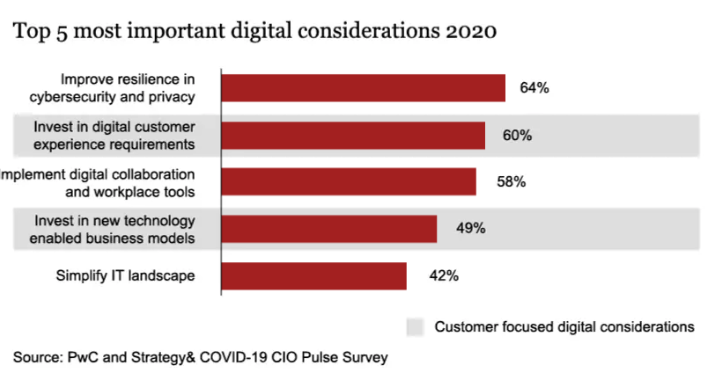
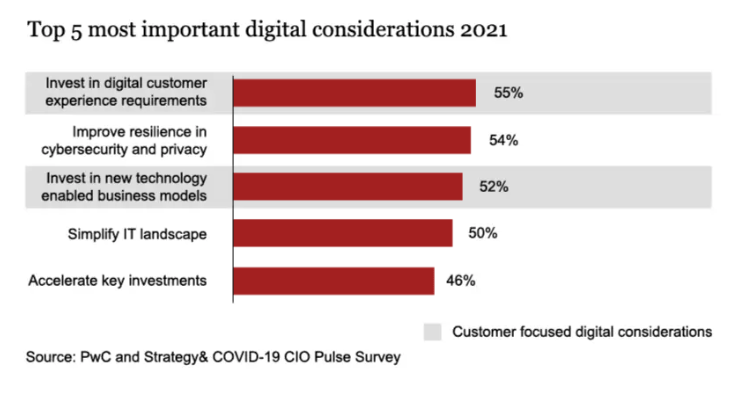
What industry analysts are saying, McKinsey & Company has outlined in the article ‘A road map for post-COVID-19 growth’ the three-stage process; the first stage is ‘navigating the crisis now’, second stage is ‘planning for the recovery’. The third stage is ‘leading the next normal’. In the second phase, the main focus is on how you will fast-track digital transformation activities in your organization. And in these three stages to navigate quickly and rightly, you have to have Tiger teams and SWAT teams of talented individuals selected from across your organization and focused on a specific business mission. Refer earlier session for Tiger & SWAT Teams Coronavirus Outbreak: Business continuity & IT Leaders priorities
90-Days Plan to Make It Happen
You may have read so many articles on how to plan initial days of digital transformation in your organization and back in March 2020, I have also done a podcast on ‘First 100 Days of Digital Transformation’ However with the COVID-19, the situation is different and along with the recovery planning, I like the article from McKinsey & Company ‘The COVID-19 recovery will be digital: A plan for the first 90 days’ What is your plan for first 90 days on the digital transformation in your organization?
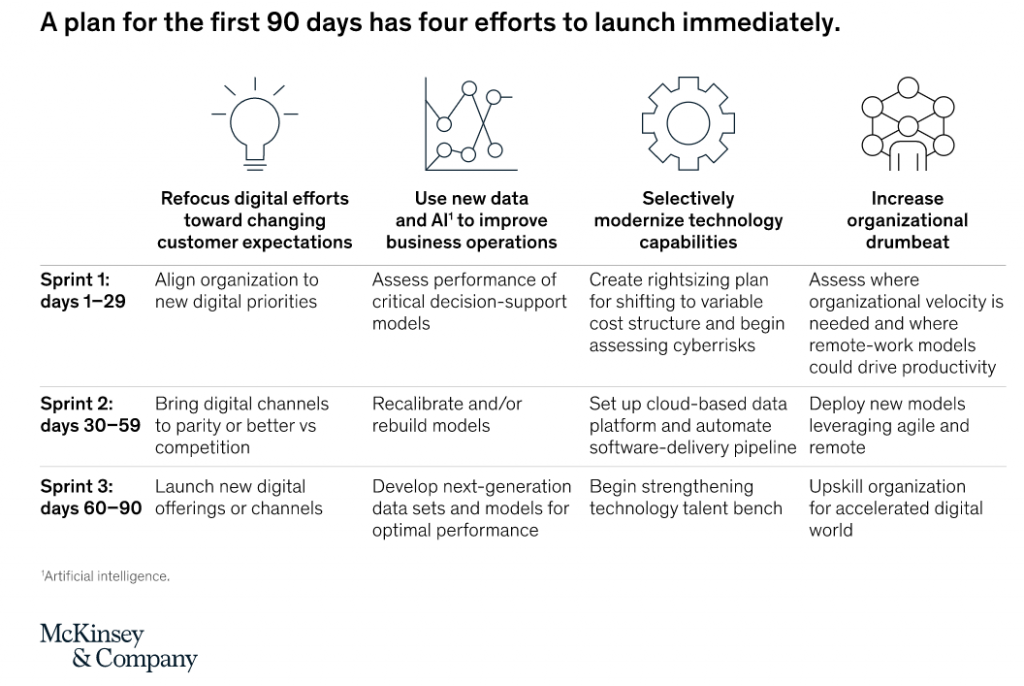
You’ll Learn:
The post-COVID-19 World is Digital
- A Personal experience
- How the post-COVID-19 World is Digital
- Four actions to take quickly
- What you need to to do, 90-Days Plan to Make It Happen
Resources:
- Open Tech Talk Sessions on Digital Transformation:
- 64- Coronavirus Outbreak: Business continuity & IT Leaders priorities
- 63- Digital transformation expectations vs. reality
- 62- First 100 Days of Digital Transformation
- 61- How to do Digital Maturity Assessment
- 60- What is digital maturity and which digital maturity model to choose?
- 59- Where to start in organization for Digital Transformation
- 58- A leap from Information Technology to Business Technology
- 57-Architecting an operating model for digital transformation
- 56- A Digital Transformation Framework
- 54-How to make a business case of Digital Transformation
- 53- Human Resources and Digital transformation
- 52- How you will know digital transformation is achieved
- 51- Enterprise Architects for Success of Digital Transformation
- 50- Is there an end to Digital Transformation?
- 49-What is for ‘me’ in Digital Transformation? Part 2
- 48- What is for ‘me’ in Digital Transformation? Part-1
- 47-How to win at Digital Transformation
- 46- Digital Transformation – it’s all about culture
- 45- How to Overcome Digital Transformation Challenges
- 44-What are the challenges in Digital Transformation
- 43-What other Organization are doing to achieve digital transformation
- 42-How do you start a Digital Transformation
- 41-What are the benefits of Digital Transformation?
- 40-Why Digital Transformation is required?
- 39-“What is digital transformation? Learning the basics”
- COVID-19 CIO Pulse Survey of PwC Strategy&
- A road map for post-COVID-19 growth
- The COVID-19 recovery will be digital: A plan for the first 90 days
To share your thoughts:
- Leave a comment on the section below on this post
- You want to suggest any new topic we should cover in future Podcast
- Join us in Mastermind tribe
- Share this on Twitter, Facebook, If you enjoyed this episode and we together are learning new Technologies.
To help out this initiative:
- Leave a candid review for the OTechTalks Podcast on iTunes! Your ratings and reviews will help the session on iTunes.
- Subscribe to the Podcast on iTunes to get next sessions
73-How Immersive Learning experience helping educators with Rayvan Ho

We need a new experience to get educated, and this is also being realized by the schools, institutes, universities, and tech companies who are providing such tools and tech to help us to teach kids in the age of coronavirus. As we have witnessed from our own experience, some schools were able to train teachers, roll out remote learning quickly. On the other side, almost 1.18 billion children, according to UNESCO, are impacted by the COVID-19 schools, universities shut down. We need new tools and techniques to help us get educated kids and ourselves.
According to the report published by Worldbank, “The COVID-19 Pandemic: Shocks to Education and Policy Responses”, they have outlined global shocks to education are:
- Learning will decline and dropouts will increase, especially among the most disadvantaged
- Health and safety will also suffer, without the support and structure that schools provide.
- And Student dropout will rise, with many students leaving schooling forever, and the higher dropout will be concentrated in disadvantaged groups. When schools reopened after the Ebola crisis cost nearly an entire academic year in Sierra Leone, girls were 16 percentage points less likely to be in school. Higher dropout will likely be accompanied by increased child labor and child marriage for children and adolescents
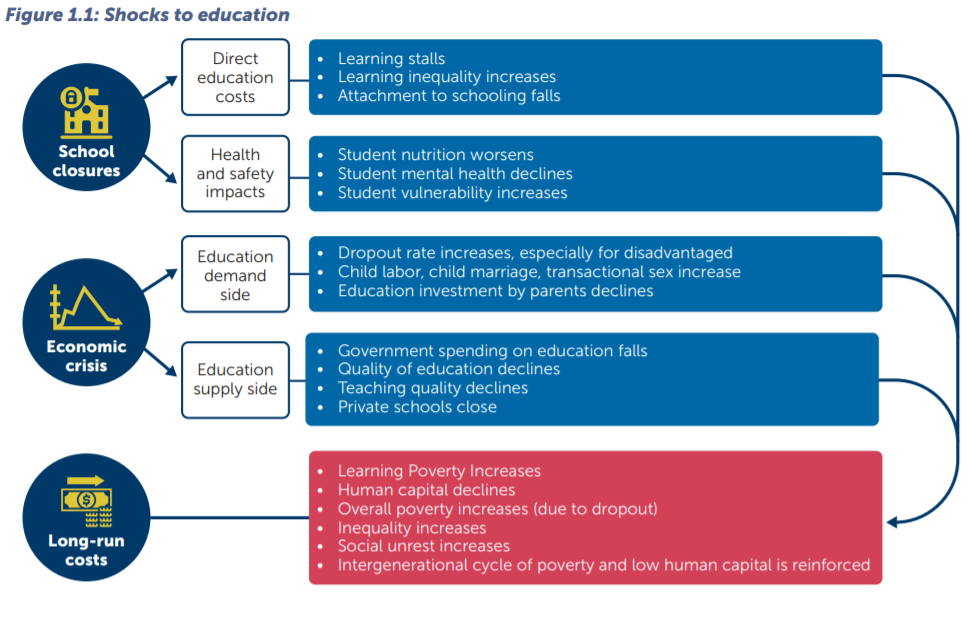
Emerging technologies in education are playing a significant role, and this is what is happening now with the COVID-19. It just forced the education sector to revolutionize the learning process of learning for students. Emerging technologies need to enhance the way teachers and students work, teach and learn. Few examples on the emerging technologies how they are shaping are:
- Augmented Reality and Simulations,
- Education Technologies Based on Artificial Intelligence (AI),
- Usage of 5G Technologies,
- Adaptive Learning for students allows them to follow unique learning paths based on their interests and experiences.
- Learning analytics allows teachers and administrators to monitor student behavior and progress, and eventually improve the courses.
Today we have our guest speaker & special thanks to Rayvan Ho for joining me this week. Until next time!
Today’s Guest
Rayvan Ho, Founder, ACKTEC, Rethink Learning
How they are bringing innovation for Immersive Learning with the use of Interactive Animations, Virtual Reality, Augmented Reality, Internet of Things, 3D Contents to enhance learning competencies for all levels of learners.
- Website: ACK Technologies
- Email: info@acktechnologies.com
You’ll Learn:
Learn from the fonder, How he is using GROW framework to strategize his business...
Coming from a non-technical background and building a platform for the education sector and how they are managing the 30%-40% increase due to COVID-19.
Speaker has shared his experience from going almost bankrupt to coming out and serving the customers.
Resources:
- ACK Technologies
- book: Doing Things Faster
- COVID-19 Impact on Education
- Rich Dad, Poor Dad
- GROW model
- Open Tech Talk Sessions on Digital Transformation:
- 68- Common myths about Digital Transformation
- 66- How to develop a digital transformation strategy
- 65- COVID-19 Pandemic and acceleration of Digital Transformation
- 64- Coronavirus Outbreak: Business continuity & IT Leaders priorities
- 63- Digital transformation expectations vs. reality
- 62- First 100 Days of Digital Transformation
- 61- How to do Digital Maturity Assessment
- 60- What is digital maturity and which digital maturity model to choose?
- 59- Where to start in organization for Digital Transformation
- 58- A leap from Information Technology to Business Technology
- 57-Architecting an operating model for digital transformation
- 56- A Digital Transformation Framework
- 54-How to make a business case of Digital Transformation
- 53- Human Resources and Digital transformation
- 52- How you will know digital transformation is achieved
- 51- Enterprise Architects for Success of Digital Transformation
- 50- Is there an end to Digital Transformation?
- 49-What is for ‘me’ in Digital Transformation? Part 2
- 48- What is for ‘me’ in Digital Transformation? Part-1
- 47-How to win at Digital Transformation
- 46- Digital Transformation – it’s all about culture
- 45- How to Overcome Digital Transformation Challenges
- 44-What are the challenges in Digital Transformation
- 43-What other Organization are doing to achieve digital transformation
- 42-How do you start a Digital Transformation
- 41-What are the benefits of Digital Transformation?
- 40-Why Digital Transformation is required?
- 39-“What is digital transformation? Learning the basics”
Thanks for Listening!
To share your thoughts:
- Leave a comment on the section below on this post
- You want to suggest any new topic we should cover in future Podcast
- Join us in Mastermind tribe
- Share this on Twitter, Facebook, If you enjoyed this episode and we together are learning new Technologies.
To help out this initiative:
- Leave a candid review for the OTechTalks Podcast on iTunes! Your ratings and reviews will help the session on iTunes.
- Subscribe to the Podcast on iTunes to get next sessions
72-Benefits of Decentralized Finance on Blockchain Platform with Jason Wu

Emerging technologies (blockchain, AI, IoT) helping the Governments to tackle the Covid-19 outbreak ranging from helping track the epidemic, clean hospitals, deliver supplies, and develop vaccines. Another way to look is during the COVID-19 pandemic, and technologies are playing a decisive role in keeping our world running wherever we all are lockdowns and quarantines. The patterns emerging from this situation by the use of these technologies will have a long-lasting impact beyond COVID-19.
Technological innovation has continuously increased efficiency, lowered costs, and created new opportunities for businesses to meet customer, consumer, and citizen demands with digitization and transformation. Blockchain is at the forefront to provide alternatives to fight Covid-19 by offering organizations an opportunity to utilize blockchain technologies to achieve and provide services in these unpredicted times.
World Economic Forum has published toolkit with supply chain focus "Redesigning Trust: Blockchain Deployment Toolkit." The toolkit is prepared for individuals and organizations to follow the set of processes to develop and deploy a Blockchain-based solution. The kit covers the necessary tools, resources, and guidelines for organizations who are initiating blockchain projects.
Some of the earlier post on blockchain technologies on OTechTalks if you are new to the Blockchain, you can head over to Introduction to Blockchain Technology, and When Not to Use Blockchain, Blockchain is a Solution for Every Business Problem, 11 things that lead to Blockchain initiatives failure and Oracle Autonomous Blockchain Cloud Service
Today our guest speaker will be talking on the DeFi, or decentralized finance, DeFiner to effortlessly lend, borrow, and earn digital assets, a platform based on Blockchain with the ambition to disrupt the traditional financial system by offering a platform on public Blockchain which is Ethereum, open-source platform for decentralized applications.
Today we have our guest speaker & special thanks to Jason Wu for joining me this week. Until next time!
Today’s Guest
Jason Wu, Founder & CEO, DeFiner Inc.
How the journey so far, starting in the first quarter of 2018 when there was no industry at all on decentralized finance and how it is growing by tenfold? Learn strategies from the owner of a startup, how he overcomes the blockchain challenges to build a platform for trust.
- Website: definer.org
- Twitter: JasonDeFiner
You’ll Learn:
Learn from the fonder for advice if you are a fresh graduate and you want to embark on a journey of solving business problems.
Coming from a non-technical background and building a platform on the blockchain technology to offer a decentralized finance solution. You will hear the process outlined, from writing the white-paper to start coding the MVP and what are the major challenge they have faced after launching the product.
Speaker has shared his experience on how smart contracts are changing the fin-tech industry and helping them to build a financial trust system.
Resources:
- definer.org
- book: Doing Things Faster
- Ethereum
- Redesigning Trust: Blockchain Deployment Toolkit
- Introduction to Blockchain Technology,
- When Not to Use Blockchain, Blockchain is a Solution for Every Business Problem,
- 11 things that lead to Blockchain initiatives failure
- Oracle Autonomous Blockchain Cloud Service
- Open Tech Talk Sessions on Digital Transformation:
- 68- Common myths about Digital Transformation
- 66- How to develop a digital transformation strategy
- 65- COVID-19 Pandemic and acceleration of Digital Transformation
- 64- Coronavirus Outbreak: Business continuity & IT Leaders priorities
- 63- Digital transformation expectations vs. reality
- 62- First 100 Days of Digital Transformation
- 61- How to do Digital Maturity Assessment
- 60- What is digital maturity and which digital maturity model to choose?
- 59- Where to start in organization for Digital Transformation
- 58- A leap from Information Technology to Business Technology
- 57-Architecting an operating model for digital transformation
- 56- A Digital Transformation Framework
- 54-How to make a business case of Digital Transformation
- 53- Human Resources and Digital transformation
- 52- How you will know digital transformation is achieved
- 51- Enterprise Architects for Success of Digital Transformation
- 50- Is there an end to Digital Transformation?
- 49-What is for ‘me’ in Digital Transformation? Part 2
- 48- What is for ‘me’ in Digital Transformation? Part-1
- 47-How to win at Digital Transformation
- 46- Digital Transformation – it’s all about culture
- 45- How to Overcome Digital Transformation Challenges
- 44-What are the challenges in Digital Transformation
- 43-What other Organization are doing to achieve digital transformation
- 42-How do you start a Digital Transformation
- 41-What are the benefits of Digital Transformation?
- 40-Why Digital Transformation is required?
- 39-“What is digital transformation? Learning the basics”
Thanks for Listening!
To share your thoughts:
- Leave a comment on the section below on this post
- You want to suggest any new topic we should cover in future Podcast
- Join us in Mastermind tribe
- Share this on Twitter, Facebook, If you enjoyed this episode and we together are learning new Technologies.
To help out this initiative:
- Leave a candid review for the OTechTalks Podcast on iTunes! Your ratings and reviews will help the session on iTunes.
- Subscribe to the Podcast on iTunes to get next sessions
71-ChatBot for On-Demand Concierge

Chatbot uses artificial intelligence & natural language processing to understand what a human wants, and guides them for the action that they are looking for in software applications. Chatbots are helping all businesses to deliver customer services in these difficult times. AI chatbots or digital assistants are taking control of customer service. Covid-19 is accelerating digital transformation in an industry that was already automating work at a rapid pace.
Governments and businesses are deploying digital assistants, chatbot to address citizens, customers most common questions, for example how to identify symptoms of COVID-19 or how to get tested, where the testing facility is available. These chatbots are making it easy for the agencies to update and expand the chatbot’s responses as queries evolved. This is all happened to handle the influx of calls which has resulted due to coronavirus crisis, grocery stores, retail outlets, banks to healthcare providers, everyone started exploring how they can use digital assistant/ chatbot to manage this unprecedented times. The number of hospitals are trying to find ways how they can deploy a conversational mobile chatbot to help with intake forms and remote check-ins for both in-person and telehealth visits rather than staff sitting and facing the patients to avoid contact due to COVID-19. The chatbots will be able to give patients tech advice when they are using tele-medicine. When used at physical locations, the chatbots will be able to tell patients when to go directly into the physician room. The traditional pre-visit process of walking into the clinic, hospital, filling out paper forms, reading instructions, and then waiting for a physician room is changing.
Earlier session on OTechTalks was covered during July 2017, Chatbots Basics 101, the role of Natural Language Processing, Artificial Intelligence and machine learning and to access in presentation format from the post What are Chatbots? Beginner’s Guide To Chatbots.
Today we have our guest speaker & special thanks to Tarek Osman for joining me this week. Until next time!
Today’s Guest
Tarek Osman, Founder, Yanzo
What’s one thing you wish you know before starting your startup? Learn strategies from the owner of a startup.
- Website: textyanzo.com
- Facebook: textyanzoo
You’ll Learn:
Learn from the fonder what he has learned from the book 'Lean Startup'
A personal need leads to launch a company that is the free virtual assistant that can Find, Book, Buy, Deliver, and Do anything for you in Dubai. You can use Yanzo for, Shopping, Car related services, Travel arrangements, Home errands, Office ad-hoc tasks, and Anything else...
Speaker has shared his experience on what challenges they have faced and how they are managing the supply-chain process.
Resources:
- textyanzo.com
- book: Lean Startup
- book: Zero to One
- Chatbots Basics 101, the role of Natural Language Processing, Artificial Intelligence and machine learning
- What are Chatbots? Beginner’s Guide To Chatbots
- Open Tech Talk Sessions on Digital Transformation:
- 68- Common myths about Digital Transformation
- 66- How to develop a digital transformation strategy
- 65- COVID-19 Pandemic and acceleration of Digital Transformation
- 64- Coronavirus Outbreak: Business continuity & IT Leaders priorities
- 63- Digital transformation expectations vs. reality
- 62- First 100 Days of Digital Transformation
- 61- How to do Digital Maturity Assessment
- 60- What is digital maturity and which digital maturity model to choose?
- 59- Where to start in organization for Digital Transformation
- 58- A leap from Information Technology to Business Technology
- 57-Architecting an operating model for digital transformation
- 56- A Digital Transformation Framework
- 54-How to make a business case of Digital Transformation
- 53- Human Resources and Digital transformation
- 52- How you will know digital transformation is achieved
- 51- Enterprise Architects for Success of Digital Transformation
- 50- Is there an end to Digital Transformation?
- 49-What is for ‘me’ in Digital Transformation? Part 2
- 48- What is for ‘me’ in Digital Transformation? Part-1
- 47-How to win at Digital Transformation
- 46- Digital Transformation – it’s all about culture
- 45- How to Overcome Digital Transformation Challenges
- 44-What are the challenges in Digital Transformation
- 43-What other Organization are doing to achieve digital transformation
- 42-How do you start a Digital Transformation
- 41-What are the benefits of Digital Transformation?
- 40-Why Digital Transformation is required?
- 39-“What is digital transformation? Learning the basics”
Thanks for Listening!
To share your thoughts:
- Leave a comment on the section below on this post
- You want to suggest any new topic we should cover in future Podcast
- Join us in Mastermind tribe
- Share this on Twitter, Facebook, If you enjoyed this episode and we together are learning new Technologies.
To help out this initiative:
- Leave a candid review for the OTechTalks Podcast on iTunes! Your ratings and reviews will help the session on iTunes.
- Subscribe to the Podcast on iTunes to get next sessions
Tech Talk on Oracle Database Multitenant Architecture

Today we have 2nd guest speaker with us to speak on Oracle Database Multitenant architecture. Being a technology evangelist, technology topics are very close to my heart and especially on Oracle technology. I am just linking back when I have started this podcast back in March 2015, after a few episodes, there were 3 guest speakers with me during Jun 2015 and July 2015 talking on 18 June 2015 – Tech Talk on DISPLAY_CURSOR Table Function of DBMS_XPLAN, 1st July 2015 –13: Oracle Tech Talk on Implementation of Oracle SOA Suite and 12th July 2015 14: Oracle Tech Talk on Implementation of Oracle Database Appliance. All these experts are part of the Oracle ACE Program, community thought leaders and if you want to know about the program, I have also done a podcast session 17 What is Oracle ACE Program. I was also part of the Oracle ACE program prior to joining my current role and being a former Oracle ACE, I have great regard and respect for all the ACE holders as they are the expert, gurus of the field with hands-on expertise driving and leading Oracle Technology in numerous organizations.
Today we have our guest speaker & special thanks to Mir Sayeed Hassan for joining me this week. Until next time!
Today’s Guest
Mir Sayeed Hassan, Oracle ACE Associate, Oracle DBA
What’s one thing you can guide to fresh college graduates for starting a career in technology? Get guidance from our expert who is sharing his knowledge with the community.
- Website: mirsayeedhassan.com
- Contact: contact@mirsayeedhassan.com
You’ll Learn:
Learn from the expert on Oracle Multitenant architecture for the next-generation database
Oracle Database Multitenant Architecture and tips based on the speaker’s experience. The Multitenant architecture allows a single container database i.e “CDB” & multiple other containers Pluggable databases i.e “PDB”.
- Container Database (CDB): The primary database that contains multiple plugged-in databases. Many operations can be performed at the container level to reduce management costs.
- Seed Database (Seed PDB): A default PDB that the system uses as a template to quickly provision other user-created PDBs.
- Pluggable Database (PDB): PDBs are user-created and will be used to hold the business-related data, therefore the number of PDBs that can be held is 253 in 1 Single Container Database.
Topics discussed such as:
- Overview of Pre-12c Version of Database
- Overview of Oracle Multitenant Architecture of CDB & PDBs
- Core Components of a Multi-tenant Database
- CDB Instance
- Root Container (CDB$ROOT)
- Seed Container (PDB$SEED)
- Pluggable Database (PDBs)
- Unplugging and Plugging in Pluggable Databases (PDBs)
- Refreshable Pluggable Database (PDB)
- Relocate a Pluggable Database (PDB)
- Common Entities between CDB and PDBs
Resources:
- MirSayeedHassan.com
- Oracle Database Multitenant Architecture
- Oracle ACE Program
- Open Tech Talk Sessions on Digital Transformation:
- 68- Common myths about Digital Transformation
- 66- How to develop a digital transformation strategy
- 65- COVID-19 Pandemic and acceleration of Digital Transformation
- 64- Coronavirus Outbreak: Business continuity & IT Leaders priorities
- 63- Digital transformation expectations vs. reality
- 62- First 100 Days of Digital Transformation
- 61- How to do Digital Maturity Assessment
- 60- What is digital maturity and which digital maturity model to choose?
- 59- Where to start in organization for Digital Transformation
- 58- A leap from Information Technology to Business Technology
- 57-Architecting an operating model for digital transformation
- 56- A Digital Transformation Framework
- 54-How to make a business case of Digital Transformation
- 53- Human Resources and Digital transformation
- 52- How you will know digital transformation is achieved
- 51- Enterprise Architects for Success of Digital Transformation
- 50- Is there an end to Digital Transformation?
- 49-What is for ‘me’ in Digital Transformation? Part 2
- 48- What is for ‘me’ in Digital Transformation? Part-1
- 47-How to win at Digital Transformation
- 46- Digital Transformation – it’s all about culture
- 45- How to Overcome Digital Transformation Challenges
- 44-What are the challenges in Digital Transformation
- 43-What other Organization are doing to achieve digital transformation
- 42-How do you start a Digital Transformation
- 41-What are the benefits of Digital Transformation?
- 40-Why Digital Transformation is required?
- 39-“What is digital transformation? Learning the basics”
Thanks for Listening!
To share your thoughts:
- Leave a comment on the section below on this post
- You want to suggest any new topic we should cover in future Podcast
- Join us in Mastermind tribe
- Share this on Twitter, Facebook, If you enjoyed this episode and we together are learning new Technologies.
To help out this initiative:
- Leave a candid review for the OTechTalks Podcast on iTunes! Your ratings and reviews will help the session on iTunes.
- Subscribe to the Podcast on iTunes to get next sessions
A journey of startup founder: e-commerce platform

Today we will have a guest speaker with us, a startup founder. We are going to start sessions with different guest speakers ranging from owner/founders of startups to tech gurus, to professionals to senior leaders. we will reach out to all the experts to share the stage with us and share their knowledge, expertise to all of us.
I am just linking back when I have started this podcast back in March 2015, after a few episodes, there were 3 guest speakers with me during Jun 2015 and July 2015 talking on 18 June 2015 - Tech Talk on DISPLAY_CURSOR Table Function of DBMS_XPLAN, 1st July 2015 -13: Oracle Tech Talk on Implementation of Oracle SOA Suite and 12th July 2015 14: Oracle Tech Talk on Implementation of Oracle Database Appliance. Till now, I was doing all the sessions by myself and now again I thought to invite other experts with me so that we all can learn from them.
The questions which I have asked during the interview was curated from the book 'Tribe of Mentors'
Today we have our 1st guest speaker & special thanks to Mudassar Rasool, founder of The Wood Value for joining me this week. Until next time!
Today's Guest
Mudassar Rasool, Founder, The Wood Value
What's one thing you wish you know before starting your startup? Learn strategies from the owner of a startup, from a full-time job to a founder of the newly started business.
- Website: thewoodvalue.com/
- Twitter: Mudasar_Rasool
You’ll Learn:
Learn from being a startup founder
- What's one thing you wish you know before starting your startup?
- What are the technology tools/or technology is being used to run an e-commerce platform
- Top tips for someone who wants to embark on the journey of starting his own business
- The best book to read
Resources:
- TheWoodValue.com - thewoodvalue.com
- book: https://www.richdad.com/
- Open Tech Talk Sessions on Digital Transformation:
- 66- How to develop a digital transformation strategy
- 65- COVID-19 Pandemic and acceleration of Digital Transformation
- 64- Coronavirus Outbreak: Business continuity & IT Leaders priorities
- 63- Digital transformation expectations vs. reality
- 62- First 100 Days of Digital Transformation
- 61- How to do Digital Maturity Assessment
- 60- What is digital maturity and which digital maturity model to choose?
- 59- Where to start in organization for Digital Transformation
- 58- A leap from Information Technology to Business Technology
- 57-Architecting an operating model for digital transformation
- 56- A Digital Transformation Framework
- 54-How to make a business case of Digital Transformation
- 53- Human Resources and Digital transformation
- 52- How you will know digital transformation is achieved
- 51- Enterprise Architects for Success of Digital Transformation
- 50- Is there an end to Digital Transformation?
- 49-What is for ‘me’ in Digital Transformation? Part 2
- 48- What is for ‘me’ in Digital Transformation? Part-1
- 47-How to win at Digital Transformation
- 46- Digital Transformation – it’s all about culture
- 45- How to Overcome Digital Transformation Challenges
- 44-What are the challenges in Digital Transformation
- 43-What other Organization are doing to achieve digital transformation
- 42-How do you start a Digital Transformation
- 41-What are the benefits of Digital Transformation?
- 40-Why Digital Transformation is required?
- 39-“What is digital transformation? Learning the basics”
Thanks for Listening!
To share your thoughts:
- Leave a comment on the section below on this post
- You want to suggest any new topic we should cover in future Podcast
- Join us in Mastermind tribe
- Share this on Twitter, Facebook, If you enjoyed this episode and we together are learning new Technologies.
To help out this initiative:
- Leave a candid review for the OTechTalks Podcast on iTunes! Your ratings and reviews will help the session on iTunes.
- Subscribe to the Podcast on iTunes to get next sessions
Common myths about Digital Transformation

I have put together my observations, learning, and experiences into myths about digital transformation. Digital transformation is to solve business problems in an always-changing environment and help organizations to foresee what they want their future business to look like. If you want to lead your organization's business transformation, the first move is to understand the reality of digital transformation rather than get caught in the hype.
Although digital transformation is a source of disruption for businesses, projecting businesses forward can be easy to misinterpret technologies and be distracted by minor changes in trends and opinions. True disruption means radical change, but common misconceptions about digital transformation result in businesses being sidetracked and misled.
I am working and participating in digital transformations in both government and private sectors across the regions and I have witnessed that in the majority of the cases organizations are making a significant challenging road to Digital transformation. As we are witnessing the Transformation needs to be well-planned, skillfully conducted, and actively supported by the top management.
I have put together my observations, learning, and experiences into myths about digital transformation. If you understand these myths, you’ll be less likely to fall victim to the hype about digital transformation and be more aware of how difficult the process is and how you need to plan it. If you are new to the topic I would suggest you listen to this podcast along with other series of sessions on digital transformation. Till now we have covered more than 30 sessions on the fundamentals of digital transformation.
Lets now dive into the most common misconceptions of digital transformation and technology adoption and we can say busting the Myths of Digital Transformation
You’ll Learn:
Myths and Misunderstandings Of Digital Transformation
- When the technology is applied, the transformation is complete
- Transformation means simply updating the organizations portal and implementing new technology
- Digital transformation is a technical challenge.
- A digital transformation on top of a broken business model or strategy is going to save the business.
- A business can transform without changing how it operates
- CIOs Can’t Drive Transformation, Digital Transformation Requires A Chief Digital Officer
- Digital transformation is only for tech companies
- Every organization should digitally transform
- Digital Transformation Is a Technology Challenge
- Digital transformation only impacts certain markets
- Digital isn’t relevant in my industry
- To succeed, you need to do everything at once
- Digital transformation is meant to disrupt your business
- Digital Transformation and Digitization are the Same Things
- Digital transformation can wait & it is optional
- Every organizational culture is ready for digital transformation
- Digital Transformation has to be expensive
- Digital transformation is a project or single initiative
Resources:
- Open Tech Talk Sessions on Digital Transformation:
- 66- How to develop a digital transformation strategy
- 65- COVID-19 Pandemic and acceleration of Digital Transformation
- 64- Coronavirus Outbreak: Business continuity & IT Leaders priorities
- 63- Digital transformation expectations vs. reality
- 62- First 100 Days of Digital Transformation
- 61- How to do Digital Maturity Assessment
- 60- What is digital maturity and which digital maturity model to choose?
- 59- Where to start in organization for Digital Transformation
- 58- A leap from Information Technology to Business Technology
- 57-Architecting an operating model for digital transformation
- 56- A Digital Transformation Framework
- 54-How to make a business case of Digital Transformation
- 53- Human Resources and Digital transformation
- 52- How you will know digital transformation is achieved
- 51- Enterprise Architects for Success of Digital Transformation
- 50- Is there an end to Digital Transformation?
- 49-What is for ‘me’ in Digital Transformation? Part 2
- 48- What is for ‘me’ in Digital Transformation? Part-1
- 47-How to win at Digital Transformation
- 46- Digital Transformation – it’s all about culture
- 45- How to Overcome Digital Transformation Challenges
- 44-What are the challenges in Digital Transformation
- 43-What other Organization are doing to achieve digital transformation
- 42-How do you start a Digital Transformation
- 41-What are the benefits of Digital Transformation?
- 40-Why Digital Transformation is required?
- 39-“What is digital transformation? Learning the basics”
To share your thoughts:
- Leave a comment on the section below on this post
- You want to suggest any new topic we should cover in future Podcast
- Join us in Mastermind tribe
- Share this on Twitter, Facebook, If you enjoyed this episode and we together are learning new Technologies.
To help out this initiative:
- Leave a candid review for the OTechTalks Podcast on iTunes! Your ratings and reviews will help the session on iTunes.
- Subscribe to the Podcast on iTunes to get next sessions
What is data science? Learning the basics

What is data science? What does a data scientist do? These are fundamental questions we will be talking about today. Data science is a multidisciplinary discipline with the prime objective of extracting value in all its forms from data. Data science is a process since you need to dig into the data processing stages, from munging data sources and data cleaning to machine learning and finally visualization, you see that specific steps are involved in turning raw data into insight.
Today is my 5th week of #StayHome due to COVID-19 and we are getting used to this new reality - new normal. As we are finding out, lockdown is not going to be temporary by any means, and we might be confined to working from home for several months...... no idea. we all can just pray and hope it will get over quickly and we will go back to our normal life.
Data science shows patterns and observations that can be used by companies to make better choices and develop more creative products and services. Data is the foundation stone of innovation, but its value comes from the knowledge scientists who can learn from it and then act on it.
The following info-graphic from Harvard professors Joe Blitzstein and Hanspeter Pfister outlines a typical data science process, which will help us answer these questions
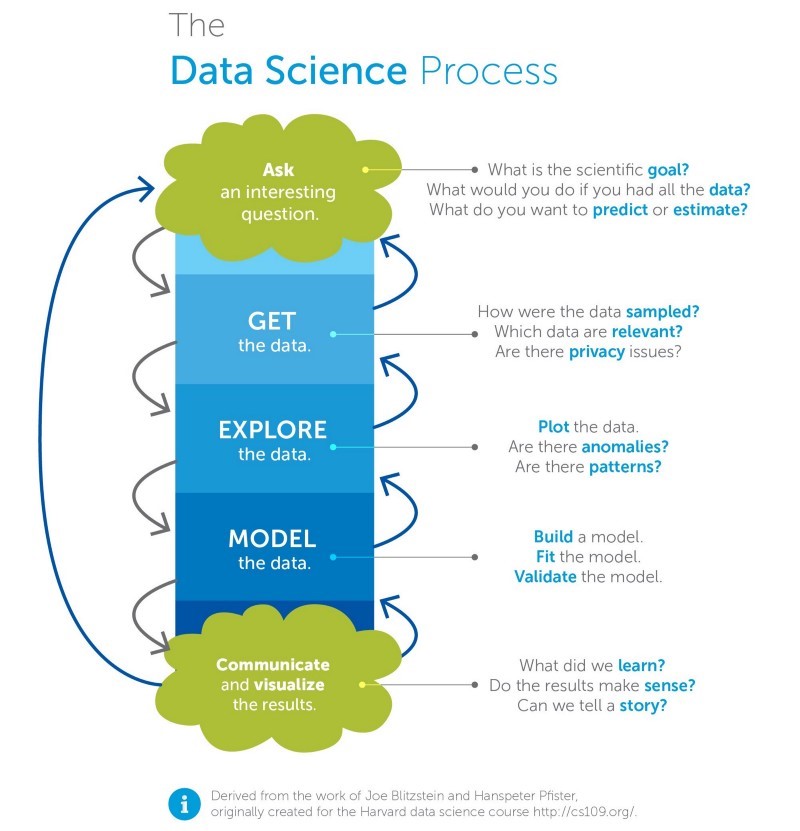
Data science is all about the extraction of information from data. Data science uses statistics and computer science approaches to analyze the vast amount of data that we produce in our daily lives and to turn it into something meaningful and useful. Every time you buy something with your credit card, every time you visit a website, everybody generates information with our lives increasingly digitized, constantly on smartphones, electronic payments, we've all become data-generating machines.
Data comes in many ways and falls into three groups at a high level:
- structured,
- semi-structured,
- and unstructured
Structured data is highly organized data that exists within a repository such as a database or CSV/excel files. The data is easily accessible, and the format of the data makes it appropriate for queries. Unstructured data lacks any content structure at all (for example, an audio stream or natural language text). Unstructured data is the most useful form of data because it can be immediately manipulated.
Now lets go to Venn Digram, the famous way to explain data science.
A Venn diagram (also called primary diagram, set diagram or logic diagram) is a diagram that shows all possible logical relations between a finite collection of different sets. These diagrams depict elements as points in the plane, and sets as regions inside closed curves. A Venn diagram consists of multiple overlapping closed curves, usually circles, each representing a set. The points inside a curve labelled S represent elements of the set S, while points outside the boundary represent elements not in the set S. Video to understand,
Video on Understanding Venn Diagrams - 1st Grade Math
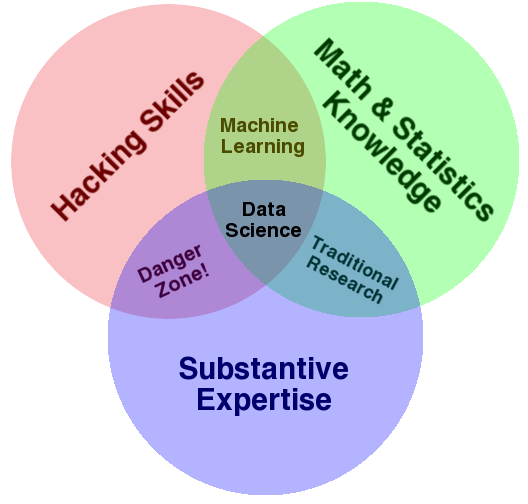
David Taylor wrote an excellent article on these Venn diagrams entitled, Battle of the Data Science Venn Diagrams. You should read it.
You’ll Learn:
A Beginner's Guide To Data Science ...
- Introduction to Data Science
- What is Data Science process?
- Types of data
- What Data Scientist do?
Resources:
- HBR Harvard Business Review published an article in 2012 describing the role of the data scientist as the “sexiest job of the 21st century
- Short History Of Data Science
- Book: Executive Data Science
- https://www.edx.org/
- coursera.org/
- Open Tech Talk Sessions on Digital Transformation:
- 66- How to develop a digital transformation strategy
- 65- COVID-19 Pandemic and acceleration of Digital Transformation
- 64- Coronavirus Outbreak: Business continuity & IT Leaders priorities
- 63- Digital transformation expectations vs. reality
- 62- First 100 Days of Digital Transformation
- 61- How to do Digital Maturity Assessment
- 60- What is digital maturity and which digital maturity model to choose?
- 59- Where to start in organization for Digital Transformation
- 58- A leap from Information Technology to Business Technology
- 57-Architecting an operating model for digital transformation
- 56- A Digital Transformation Framework
- 54-How to make a business case of Digital Transformation
- 53- Human Resources and Digital transformation
- 52- How you will know digital transformation is achieved
- 51- Enterprise Architects for Success of Digital Transformation
- 50- Is there an end to Digital Transformation?
- 49-What is for ‘me’ in Digital Transformation? Part 2
- 48- What is for ‘me’ in Digital Transformation? Part-1
- 47-How to win at Digital Transformation
- 46- Digital Transformation – it’s all about culture
- 45- How to Overcome Digital Transformation Challenges
- 44-What are the challenges in Digital Transformation
- 43-What other Organization are doing to achieve digital transformation
- 42-How do you start a Digital Transformation
- 41-What are the benefits of Digital Transformation?
- 40-Why Digital Transformation is required?
- 39-“What is digital transformation? Learning the basics”
To share your thoughts:
- Leave a comment on the section below on this post
- You want to suggest any new topic we should cover in future Podcast
- Join us in Mastermind tribe
- Share this on Twitter, Facebook, If you enjoyed this episode and we together are learning new Technologies.
To help out this initiative:
- Leave a candid review for the OTechTalks Podcast on iTunes! Your ratings and reviews will help the session on iTunes.
- Subscribe to the Podcast on iTunes to get next sessions
How to develop a digital transformation strategy

Digital transformation strategy involves assessing your own requirements and corporate culture, setting business goals and identifying and tracking risks, conducting regular prototypes and testing, asking internal staff for input on these roll-outs, and using new technologies.
For years, the digital transformation seemed like something mostly about computers and software, and data. This is what businesses pursue, for the sake of IT agility, to extract new value from data, model software prototypes of physical goods, or develop business processes.
While such development initiatives are often vital to a company, it turns out that digital transformation is really about us at its heart. That has many powerful lessons to teach us how to think about technology and work, both now and in the future.
The COVID-19 outbreak is a tragedy that will have widespread and long-lasting implications for humanity and our global economy.
I hope you’re all staying safe and healthy. And the way discussion started happening in the organizations and at c-level on the key question. How has COVID impacted & how organizations operate?
These conversations make one point very clear. Business transformation enabled by digital is becoming the new normal as the nature of work is redefined by COVID -19. Delivering education online, shifting banks to digital apps, and accelerating the digital automation with RPA, AI/ML, IoT is now required, without any delay.
The digital economy is characterized by rapid development, change, creativity, and disruption. Organizations that want to keep up must be prepared to adapt to this new digital environment. But digital transformation requires more than just adopting new technologies, investing in fancy gadgets, or updating current systems.
That’s why it’s so important for organizations to have a digital transformation strategy.
You’ll Learn:
Business Transformation Strategy Development
- What is a Digital Transformation strategy?
- What is Strategy? definition of strategy in the corporate world
- How to develop a digital transformation strategy?
- Details on 3 steps strategy approach
- Examples of digital transformation strategy (public sector)
Resources:
- Open Tech Talk Sessions on Digital Transformation:
- 65- COVID-19 Pandemic and acceleration of Digital Transformation
- 64- Coronavirus Outbreak: Business continuity & IT Leaders priorities
- 63- Digital transformation expectations vs. reality
- 62- First 100 Days of Digital Transformation
- 61- How to do Digital Maturity Assessment
- 60- What is digital maturity and which digital maturity model to choose?
- 59- Where to start in organization for Digital Transformation
- 58- A leap from Information Technology to Business Technology
- 57-Architecting an operating model for digital transformation
- 56- A Digital Transformation Framework
- 54-How to make a business case of Digital Transformation
- 53- Human Resources and Digital transformation
- 52- How you will know digital transformation is achieved
- 51- Enterprise Architects for Success of Digital Transformation
- 50- Is there an end to Digital Transformation?
- 49-What is for ‘me’ in Digital Transformation? Part 2
- 48- What is for ‘me’ in Digital Transformation? Part-1
- 47-How to win at Digital Transformation
- 46- Digital Transformation – it’s all about culture
- 45- How to Overcome Digital Transformation Challenges
- 44-What are the challenges in Digital Transformation
- 43-What other Organization are doing to achieve digital transformation
- 42-How do you start a Digital Transformation
- 41-What are the benefits of Digital Transformation?
- 40-Why Digital Transformation is required?
- 39-“What is digital transformation? Learning the basics”
- What Is Strategy, on HBR
- Wikipedia - The term Strategy means something along the lines of a "high-level plan to achieve a goal"
- book On War
- book The Art of War
- book Exploring Corporate Strategy
- book Good Strategy/Bad Strategy: The difference and why it matters
- book Corporate Strategy by Igor Ansoff
- book 10 Must read on Strategy by Harvard Business Review
- book On Strategy by Boston Consulting
- book Leading Change by John Kotter
- book The digital transformation playbook, by David Rogers
- book The Innovator's Dilemma, written by Clayton Christensen
- Deloitte article Strategy, not technology, drives digital transformation
- Digital Transformation strategy, example Australian government
- Smart Dubai 2021
To share your thoughts:
- Leave a comment on the section below on this post
- You want to suggest any new topic we should cover in future Podcast
- Join us in Mastermind tribe
- Share this on Twitter, Facebook, If you enjoyed this episode and we together are learning new Technologies.
To help out this initiative:
- Leave a candid review for the OTechTalks Podcast on iTunes! Your ratings and reviews will help the session on iTunes.
- Subscribe to the Podcast on iTunes to get next sessions
COVID-19 Pandemic and acceleration of Digital Transformation

The COVID-19 Pandemic is a crisis that will have far-reaching and long-lasting consequences for society and our global economy. As the coronavirus continues to spread around the world, more and more businesses miss their financial goals due to delays in the supply chain and rising customer demand.
It is also unclear how long this pandemic will last, as there is no vaccine to fight it yet, nor is there any accepted therapy to slow down the human body's toll. What should be obvious is that COVID-19 will have a dramatic impact on most companies for months, probably years. Bottom line: this is not going to be a short-Term occurrence, and companies need to plan for the long run. During the previous session Coronavirus Outbreak: Business continuity & IT Leaders priorities, we have covered some of the priorities for IT leaders
CIOs should prepare IT systems now to safely and reliably handle a vast increase in remote workers and digital fulfillment of market demand mentioned in the blog written on Gartner
Organizations have been working on digital transformation with varying degrees of commitment for at least the past 10 years, but it is not until now with COVID-19 that we will see the digital transformation inflection point in business model changes, enabled by the adoption of cloud services and the emerging technologies AI, IoT, business analytics, enterprise mobility, and social business The widespread of coronavirus has changed the buying habits of customers and the way companies do business forever. The programs we can use without leaving our homes continue to grow exponentially every day.
Businesses are forced to use digital technologies
As countries go into isolation, we are seeing people being forced to keep social differences and work from home. In times like these, digital technologies are becoming more relevant than ever before. We may not be able to remain physically close to each other, but we still need to interact with each other, both socially and professionally.
Some of the priority areas where digital transformation is accelerating:
- Supply-chain
- Ability to Work from Home
- Telehealth & Healthcare
- Remote Learning
- Events Going Virtual
- Teleconferencing
- Digital media
- Digital Banking
According to Mickensy article published March 2020, which talks about acting across five stages, leading from the crisis of today to the next normal that will emerge after the battle against coronavirus has been won: Resolve, Resilience, Return, Reimagination, and Reform
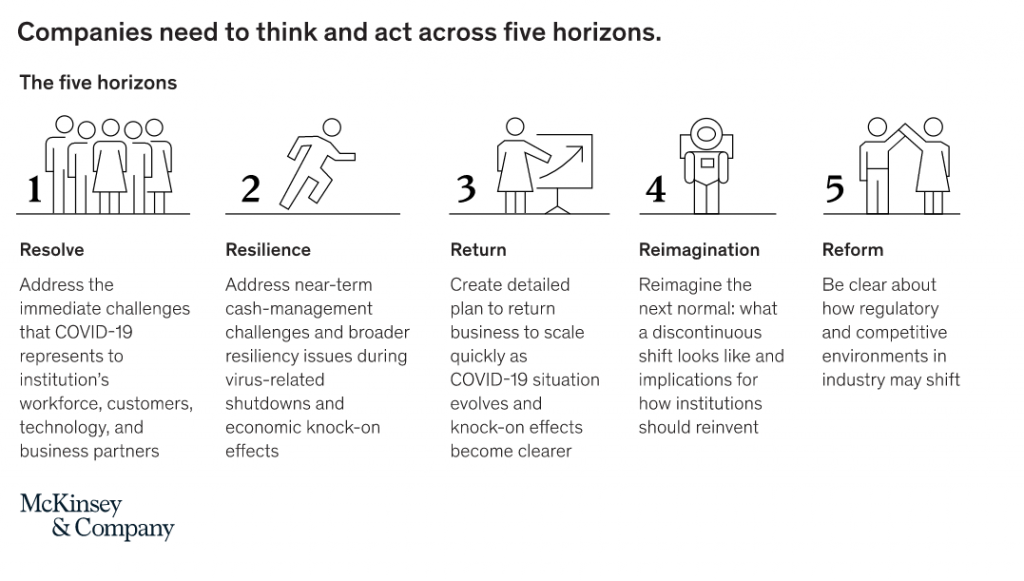
Resources:
- Why the corona-crisis will accelerate corporate digital transformations
- The Biggest Business Impacts of the Coronavirus Pandemic
- Open Tech Talk Sessions on Digital Transformation:
- 64- Coronavirus Outbreak: Business continuity & IT Leaders priorities
- 63- Digital transformation expectations vs. reality
- 62- First 100 Days of Digital Transformation
- 61- How to do Digital Maturity Assessment
- 60- What is digital maturity and which digital maturity model to choose?
- 59- Where to start in organization for Digital Transformation
- 58- A leap from Information Technology to Business Technology
- 57-Architecting an operating model for digital transformation
- 56- A Digital Transformation Framework
- 54-How to make a business case of Digital Transformation
- 53- Human Resources and Digital transformation
- 52- How you will know digital transformation is achieved
- 51- Enterprise Architects for Success of Digital Transformation
- 50- Is there an end to Digital Transformation?
- 49-What is for ‘me’ in Digital Transformation? Part 2
- 48- What is for ‘me’ in Digital Transformation? Part-1
- 47-How to win at Digital Transformation
- 46- Digital Transformation – it’s all about culture
- 45- How to Overcome Digital Transformation Challenges
- 44-What are the challenges in Digital Transformation
- 43-What other Organization are doing to achieve digital transformation
- 42-How do you start a Digital Transformation
- 41-What are the benefits of Digital Transformation?
- 40-Why Digital Transformation is required?
- 39-“What is digital transformation? Learning the basics”
To share your thoughts:
- Leave a comment on the section below on this post
- You want to suggest any new topic we should cover in future Podcast
- Join us in Mastermind tribe
- Share this on Twitter, Facebook, If you enjoyed this episode and we together are learning new Technologies.
To help out this initiative:
- Leave a candid review for the OTechTalks Podcast on iTunes! Your ratings and reviews will help the session on iTunes.
- Subscribe to the Podcast on iTunes to get next sessions
Coronavirus Outbreak: Business continuity & IT Leaders priorities

This intense, tragic, messy, and stormy period of the Corona Virus outbreak will eventually pass from our world and I believe we will come back to normal life.
My heart aches for the sick and scared, during this time of global crisis and I can feel for everyone how they must be going through this time. Everyone is in my prayers, which have become deeper and louder than ever before. We all need to pray for our front-line workers, primarily for health care personals and security forces how they are spending their days & nights to save all of us. This is a hard time for the entire world and I will just say, stay at home and don’t take this lightly as I see during conversations with different friends, number of people still see it as very light and they just ignore the directions of local authorities.
Don’t do this…. #stayhome.
Today we will discuss some of the points on:
- What Type of Crisis Management Team is required?
- Business continuity management priorities
- IT leaders/CIOs priorities
Tiger teams and SWAT teams of talented individuals selected from across your organization and focused on a specific business mission.
Tiger Teams are highly skilled, hand-picked groups of people who are tenacious about problem-solving. While the term originated at NASA, and the most famous instance is the Apollo 13 Tiger Team, the term is now generally applied to a high-functioning team of specialists who come together to complete a specific project.
As per Wikipedia “A 1964 paper entitled Program Management in Design and Development used the term tiger teams and defined it as "a team of undomesticated and uninhibited technical specialists, selected for their experience, energy, and imagination, and assigned to track down relentlessly every possible source of failure in a spacecraft subsystem or simulation"
And as per Wikipedia, on SWAT TEAM, “A SWAT team is a group of highly trained police officers who deal with very dangerous criminals. SWAT is an acronym that means Special Weapons And Tactics”
In business context, Gartner is defining as per below diagram:

We will also discuss few points on widely use Business continuity management (BCM) practices for identifying an organization's risk of exposure to internal and external threats and how it becomes very important during the Corona Virus outbreak.
Resources:
- Create the Right Type of Crisis Management Team
- Pandemic Preparedness Requires Strong Business Continuity Management
- Open Tech Talk Sessions on Digital Transformation:
- 63- Digital transformation expectations vs. reality
- 62- First 100 Days of Digital Transformation
- 61- How to do Digital Maturity Assessment
- 60- What is digital maturity and which digital maturity model to choose?
- 59- Where to start in organization for Digital Transformation
- 58- A leap from Information Technology to Business Technology
- 57-Architecting an operating model for digital transformation
- 56- A Digital Transformation Framework
- 54-How to make a business case of Digital Transformation
- 53- Human Resources and Digital transformation
- 52- How you will know digital transformation is achieved
- 51- Enterprise Architects for Success of Digital Transformation
- 50- Is there an end to Digital Transformation?
- 49-What is for ‘me’ in Digital Transformation? Part 2
- 48- What is for ‘me’ in Digital Transformation? Part-1
- 47-How to win at Digital Transformation
- 46- Digital Transformation – it’s all about culture
- 45- How to Overcome Digital Transformation Challenges
- 44-What are the challenges in Digital Transformation
- 43-What other Organization are doing to achieve digital transformation
- 42-How do you start a Digital Transformation
- 41-What are the benefits of Digital Transformation?
- 40-Why Digital Transformation is required?
- 39-“What is digital transformation? Learning the basics”
To share your thoughts:
- Leave a comment on the section below on this post
- You want to suggest any new topic we should cover in future Podcast
- Join us in Mastermind tribe
- Share this on Twitter, Facebook, If you enjoyed this episode and we together are learning new Technologies.
To help out this initiative:
- Leave a candid review for the OTechTalks Podcast on iTunes! Your ratings and reviews will help the session on iTunes.
- Subscribe to the Podcast on iTunes to get next sessions
Digital transformation expectations vs. reality

Digital transformation opens up a gap between the expectations created by your digital vision and the physical reality of what can be delivered to the people that keep your business alive; customers, shareholders, employees, and other stakeholders.
The gap between expectations and actual benefits of business transformation is different from organizations’ past experiences with transformation. The technologies are very disruptive.
Before diving into our today's topic, I wanted to take a moment to acknowledge the feelings around the global COVID-19 or Corona Virus. To acknowledge our shared truth: It’s a stressful time. There’s uncertainty. There’s loss. There’s fear about the future. Let’s all focus on our families, our friends, our neighbors, and our communities. And follow to keep social distance as per WHO guidelines and work on social-learning through the remote tools available with us, remote meetup, events, virtual learning, etc.
There is a famous quote: “If you want something new, you have to stop doing something old.”
You’ll Learn:
Digital Transformation
- Digital transformation expectations vs. reality?
- How as a brand will be managing the expectations of customers from this global Covid-19
- Few Rules Will Help You Work More Productively at Home
Resources:
- Open Tech Talk Sessions on Digital Transformation:
- 62- First 100 Days of Digital Transformation
- 61- How to do Digital Maturity Assessment
- 60- What is digital maturity and which digital maturity model to choose?
- 59- Where to start in organization for Digital Transformation
- 58- A leap from Information Technology to Business Technology
- 57-Architecting an operating model for digital transformation
- 56- A Digital Transformation Framework
- 54-How to make a business case of Digital Transformation
- 53- Human Resources and Digital transformation
- 52- How you will know digital transformation is achieved
- 51- Enterprise Architects for Success of Digital Transformation
- 50- Is there an end to Digital Transformation?
- 49-What is for ‘me’ in Digital Transformation? Part 2
- 48- What is for ‘me’ in Digital Transformation? Part-1
- 47-How to win at Digital Transformation
- 46- Digital Transformation – it’s all about culture
- 45- How to Overcome Digital Transformation Challenges
- 44-What are the challenges in Digital Transformation
- 43-What other Organization are doing to achieve digital transformation
- 42-How do you start a Digital Transformation
- 41-What are the benefits of Digital Transformation?
- 40-Why Digital Transformation is required?
- 39-“What is digital transformation? Learning the basics”
- WHO - Coronavirus disease (COVID-19) outbreak
- Unlocking success in digital transformation
- Researchers from Accenture on article published in HBR on The Two Big Reasons That Digital Transformations Fail
- Another article publishes on CNBC titles: The $900 billion reason GE, Ford and P&G failed at digital transformation
- World Economic Forum and Accenture
- 2019 Global Digital Transformation Benefits Report by Schneider Electric
- Companies that earn $1 billion a year earn an additional $700 million over three years by investing in customer experience.
- 56% of CEOs say digital improvements have led to increased revenue.
- Digitally mature companies are 23% more profitable than their less mature peers.
- More than 50% of digital transformation efforts fizzled completely in 2018.
- 39% of outperforming companies have a fully integrated digital-physical strategy.
- Digital-first companies are 64% more likely to achieve their business goals than their peers
- 70% of companies either have a digital transformation strategy in place or are working on one.
- 21% of companies think they’ve already completed digital transformation.
- 40% of all technology spending in 2019 will go towards digital transformation.
- Companies will spend a total of more than $2 trillion on digital transformation in 2019.
- Most digital transformations are driven by growth opportunities, followed by increased competitive pressure and new regulatory standards.
- Executives say the top benefits of digital transformation are improved operational efficiency (40%), faster time to market (36%) and the ability to meet customer expectations (35%).
- 60% of companies that have undergone a digital transformation have created new business models.
- Just 19% of companies have a customer experience team that helps bridge gaps in the business.
- Fewer than 30% of a company’s technology vendors are actively involved in their digital transformations.
- Of the $1.3 trillion spent on digital transformation in 2018, an estimated $900 billion was wasted when initiatives didn’t meet their goals.
- 70% of digital transformations fail, most often due to resistance from employees.
- Digital transformation and a focus on customer experience can generate a 20-30% increase in customer satisfaction and economic gains of 20-50%.
- Only 16% of employees in one survey said their company’s digital transformations have improved performance and are sustainable long term.
To share your thoughts:
- Leave a comment on the section below on this post
- You want to suggest any new topic we should cover in future Podcast
- Join us in Mastermind tribe
- Share this on Twitter, Facebook, If you enjoyed this episode and we together are learning new Technologies.
To help out this initiative:
- Leave a candid review for the OTechTalks Podcast on iTunes! Your ratings and reviews will help the session on iTunes.
- Subscribe to the Podcast on iTunes to get next sessions
First 100 Days of Digital Transformation
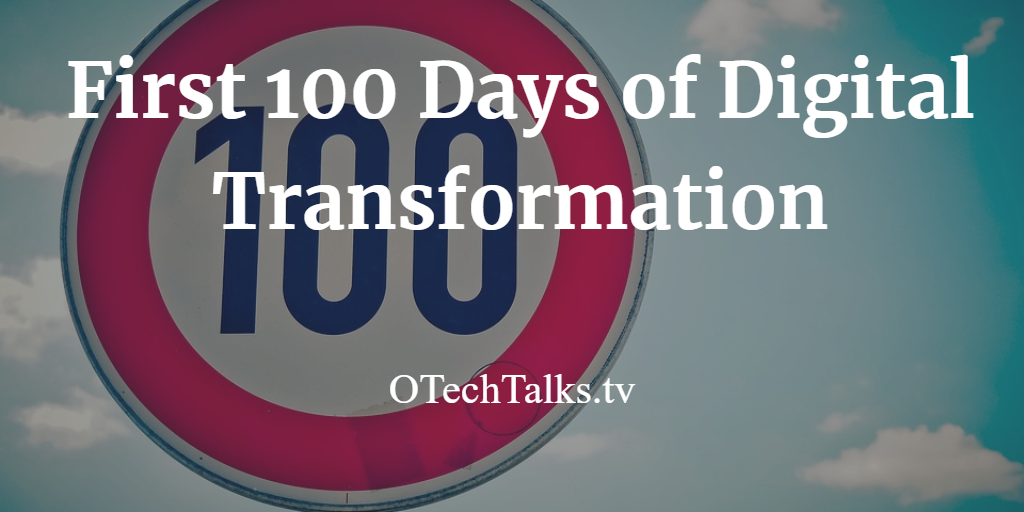
[powerpress]
During digital transformation in an organization, the first 100 days of digital transformation are critical for setting the pace, attitude, and success with which your employees will adopt the new digital initiatives. You have to learn fast, immerse yourself in the business and go out to speak to your customers, suppliers, and partners.
You may be familiar with the concept of the first 100 days are critical for the success of an individual or any initiative and if you are starting digital transformation in your organization. A challenge where you need to tune your plan to meet the new realities driven by the growing digital component of your organization.
When I did a search on what must be done during the first 100 days and I am sure you are already aware of senior leaders in every discipline, a lot is written about "the first 100 days" of their tenure or of a project.
Start the first 100 days before your first day...
What I have found, Forrester interviewed more than 40 senior digital business leaders to find out. You can have a report from Forrester Digital Transformation: Your First 100 Days
- Start With Buy-In And Commitment From C-Level Leaders
- Identify Pathfinder Projects To Build Momentum With Small Wins
- Communicate Early And Often With Everyone — Not Just Digital Leaders
- Shift Your Firm’s Relationship With Digital
- Hire People Who Can Help You Embed Agility Into Your Organization
- Challenge The Status Quo To Drive Collaboration With Technology Teams
IDC also has published The First 100 Days of an IT Digital Transformation Project. In the first 100 days, almost all of the CIO's activities revolve around the integration discipline. IDC provides CIOs a 100-day framework for an enterprise digital transformation plan. Findings of this study include:
- Preparation:
- Assess readiness.
- Create a sense of urgency.
- Engage an executive council team.
- Create a strategic vision for DX.
- Develop strategic initiatives.
- Design organization.
- Implementation:
- Communicate broadly.
- Remove barriers.
- Create short-term wins and celebrate.
- Institutionalize L3D in culture.
I believe the key action item is to clarify and strengthen your mandate, understand what is expected from digital transformation and how you will measure, for example, with regard to new business capabilities, cost targets, automation levels, and projects to fix. You may need to go back and listen to session no 52 - How you will know digital transformation is achieved
Now if I re-link to the IDC & Forrester’s first 100 days for digital transformation. After going through both the documents, I can co-relate to our earlier session. How do you start a digital transformation?
You’ll Learn:
Digital Transformation: Your First 100 Days
- Why a 100-day plan?
- Areas to consider for the digital transformation plan
- Summary from the Forrester & IDC documents on digital transformation.
Resources:
- Open Tech Talk Sessions on Digital Transformation:
- 61- How to do Digital Maturity Assessment
- 60- What is digital maturity and which digital maturity model to choose?
- 59- Where to start in organization for Digital Transformation
- 58- A leap from Information Technology to Business Technology
- 57-Architecting an operating model for digital transformation
- 56- A Digital Transformation Framework
- 54-How to make a business case of Digital Transformation
- 53- Human Resources and Digital transformation
- 52- How you will know digital transformation is achieved
- 51- Enterprise Architects for Success of Digital Transformation
- 50- Is there an end to Digital Transformation?
- 49-What is for ‘me’ in Digital Transformation? Part 2
- 48- What is for ‘me’ in Digital Transformation? Part-1
- 47-How to win at Digital Transformation
- 46- Digital Transformation – it’s all about culture
- 45- How to Overcome Digital Transformation Challenges
- 44-What are the challenges in Digital Transformation
- 43-What other Organization are doing to achieve digital transformation
- 42-How do you start a Digital Transformation
- 41-What are the benefits of Digital Transformation?
- 40-Why Digital Transformation is required?
- 39-“What is digital transformation? Learning the basics”
- Digital maturity model project from TMForum
- Forrester- Digital Transformation: Your First 100 Days
- IDC - The First 100 Days of an IT Digital Transformation Project
- The First 90 Days: Proven Strategies for Getting Up to Speed Faster and Smarter, Updated and Expanded
To share your thoughts:
- Leave a comment on the section below on this post
- You want to suggest any new topic we should cover in future Podcast
- Join us in the Mastermind tribe
- Share this on Twitter, Facebook, If you enjoyed this episode and we together are learning new technologies.
To help out this initiative:
- Leave a candid review for the OTechTalks Podcast on iTunes! Your ratings and reviews will help the session on iTunes.
- Subscribe to the Podcast on iTunes to get the next sessions
How to do Digital Maturity Assessment
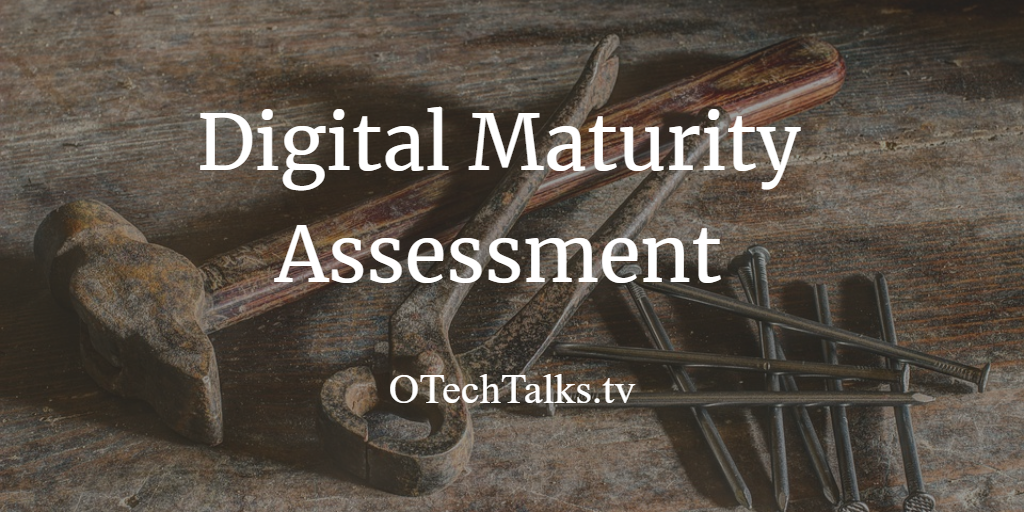
Digital maturity assessment allows tech leaders to determine where their organizations are in the digital transformation journey and based on the finding from the assessment, you will set the goals to achieve digital transformation.
It helps to measure the use of digital technologies in the organization’s operations. This is a discovery phase and
Discovery or as-Is situation is your first step on the journey to transformation. Here we lay the groundwork for your digital future and determine where you are now, where you need to go, and how fast you need to get there
- Where are you in your digital transformation journey? Do you have buy-in across the organization?
- What are the drivers of your digital transformation? Customer demands, innovative products, regulations, new markets, etc.?
- Are you ahead or behind the market in your digital transformation?
- Is your customer experience consistent across channels?
- What is your cloud strategy? What is driving that strategy? Cost, Flexibility, Delivery velocity, etc?
- How do you measure the usage and success of exposed services?
First of all this session is linked to the previous sessions session 59 Where to start in organization for Digital Transformation
Where to start for digital transformation?
- 1-Discovery phase or Digital capabilities assessment
- 2. Establish how you will go digital
- 3. Get the right buy-in and commitment from C-level leaders, board, owner…
- 4. craft a road-map
- 5. Ensure you have the right skills in place
- 6. Prepare yourself, your team, your board, and the entire business
- 7. Begin your digital transformation
And session 60 What is digital maturity and which digital maturity model to choose?
- What are different digital maturity models?
- Digital maturity model project from TMForum
- Deloitte Digital maturity model
- Digital Quotient by Mckinsey
- Forrester’s Digital Maturity Model 4.0
- Digital Acceleration Index from BCG
- Gartner Digital Business Maturity Model
- Digital Maturity test from digital leadership
- The EY Digital Readiness Assessment
- Digital Systems maturity model
- IDC’s maturity model
- Open Digital Maturity Model
You’ll Learn:
Digital Maturity Assessment kit
- What is digital maturity assessment?
- Different digital maturity assessment templates, formats, kits
- Download Digital maturity assessment toolkit from Government of South Australia
Fast-Facts:
“If you can’t measure it, you can’t improve it.” or “If you can’t measure it, you can’t achieve it.”
If you can’t measure every part of your business, you can’t manage or grow it.
OTechTalks podcast have been downloaded 25000 times with the average 1000 per month download.
Resources:
- Open Tech Talk Sessions on Digital Transformation:
- 59- Where to start in organization for Digital Transformation
- 58- A leap from Information Technology to Business Technology
- 57-Architecting an operating model for digital transformation
- 56- A Digital Transformation Framework
- 54-How to make a business case of Digital Transformation
- 53- Human Resources and Digital transformation
- 52- How you will know digital transformation is achieved
- 51- Enterprise Architects for Success of Digital Transformation
- 50- Is there an end to Digital Transformation?
- 49-What is for ‘me’ in Digital Transformation? Part 2
- 48- What is for ‘me’ in Digital Transformation? Part-1
- 47-How to win at Digital Transformation
- 46- Digital Transformation – it’s all about culture
- 45- How to Overcome Digital Transformation Challenges
- 44-What are the challenges in Digital Transformation
- 43-What other Organization are doing to achieve digital transformation
- 42-How do you a start Digital Transformation
- 41-What are the benefits of Digital Transformation?
- 40-Why Digital Transformation is required?
- 39-“What is digital transformation? Learning the basics”
- Digital maturity model project from TMForum
- Digital Maturity Assessment Tool (DMAT), This survey is conducted by the Interdisciplinary Centre for Digital Business Development (DBD) at Aarhus University, BSS, Department of Business Development and Technology
- The Digital Maturity Check by E&Y
- https://valcon.com/digital-maturity/
- https://digitalmaturitybenchmark.withgoogle.com/en/advertisers/
- Digital transformation maturity assessment by IBM
To share your thoughts:
- Leave a comment on the section below on this post
- You want to suggest any new topic we should cover in future Podcast
- Join us in Mastermind tribe
- Share this on Twitter, Facebook, If you enjoyed this episode and we together are learning new Technologies.
To help out this initiative:
- Leave a candid review for the OTechTalks Podcast on iTunes! Your ratings and reviews will help the session on iTunes.
- Subscribe to the Podcast on iTunes to get next sessions
What is digital maturity and which digital maturity model to choose?

Digital maturity is an assessment framework that enables leaders to determine where their organizations are in the digital transformation journey and a good indicator of whether an organization has the ability to adapt and thrive or decline in the rapidly evolving digital landscape. Based on this information leaders can set short-term and long-term goals
The key to assessing digital maturity is measuring your business’s ability to adapt to disruptive technology, event, market trend, competitor, or another major factor.
Now if we want to define properly, What is digital maturity?
dig·i·tal (a) ma·tu·ri·ty (n)1 \ˈdi-jə-təl\ \mə-ˈtur-ə-tē 1Merriam-Webster Digital maturity goes beyond technology*, and is about how businesses are adapting in a digital environment. Are they fundamentally changing what they do and how they do it in order to compete effectively? *Any technology: mobile, social, cloud, analytics, AI, blockchain, etc.
A digitally mature organization will be able to respond to technological innovations and changes in a market, whether it has initiated those changes itself, or whether it has no control over them at all.
You’ll Learn:
Digital Maturity Model, A Framework for Planning Digital Transformation
- What is digital maturity?
- What are different digital maturity models?
- Digital maturity model project from TMForum
- Deloitte Digital maturity model
- Digital Quotient by Mckinsey
- Forrester’s Digital Maturity Model 4.0
- Digital Acceleration Index from BCG
- Gartner Digital Business Maturity Model
- Digital Maturity test from digital leadership
- The EY Digital Readiness Assessment
- Digital Systems maturity model
- IDC’s maturity model
- Open Digital Maturity Model
Fast-Facts:
“What gets measured gets managed.”
First podcast on oTechTalks was recorded June 7, 2015
Resources:
- Open Tech Talk Sessions on Digital Transformation:
- 59- Where to start in organization for Digital Transformation
- 58- A leap from Information Technology to Business Technology
- 57-Architecting an operating model for digital transformation
- 56- A Digital Transformation Framework
- 54-How to make a business case of Digital Transformation
- 53- Human Resources and Digital transformation
- 52- How you will know digital transformation is achieved
- 51- Enterprise Architects for Success of Digital Transformation
- 50- Is there an end to Digital Transformation?
- 49-What is for ‘me’ in Digital Transformation? Part 2
- 48- What is for ‘me’ in Digital Transformation? Part-1
- 47-How to win at Digital Transformation
- 46- Digital Transformation – it’s all about culture
- 45- How to Overcome Digital Transformation Challenges
- 44-What are the challenges in Digital Transformation
- 43-What other Organization are doing to achieve digital transformation
- 42-How do you a start Digital Transformation
- 41-What are the benefits of Digital Transformation?
- 40-Why Digital Transformation is required?
- 39-“What is digital transformation? Learning the basics”
- Digital maturity model project from TMForum
- Deloitte Digital maturity model
- Digital Quotient by Mckinsey
- Forrester’s Digital Maturity Model 4.0
- Digital Acceleration Index from BCG
- Gartner Digital Business Maturity Model
- Digital Maturity test from digital leadership
- The EY Digital Readiness Assessment
- Digital Systems maturity model
- IDC’s maturity model
- Open Digital Maturity Model
To share your thoughts:
- Leave a comment on the section below on this post
- You want to suggest any new topic we should cover in future Podcast
- Join us in the Mastermind tribe
- Share this on Twitter, Facebook, If you enjoyed this episode and we together are learning new technologies.
To help out this initiative:
- Leave a candid review for the OTechTalks Podcast on iTunes! Your ratings and reviews will help the session on iTunes.
- Subscribe to the Podcast on iTunes to get the next sessions
Where to start in organization for Digital Transformation

How to start your digital transformation in an organization. what will be your first step? These are some of the questions that will be addressed in this session. During the early days of business transformation, commonly 3 areas were target; operational processes, business models, and customer experience.
And based on the organizations capacity, few may have the required resources - financial, human, and technical; to be able to transform at the same time. Therefore, they need to prioritize their investments from where to start.
Or you are in another situation where You already have some form of digital transformation going on in your organization. ERP implementation or any Process automation is one of the first places businesses explore change and the key is to start small and then build on these initiatives. So where should you start?
You’ll Learn:
Where to start for digital transformation?
- 1-Discovery phase or Digital capabilities assessment
- 2. Establish how you will go digital
- 3. Get the right buy-in and commitment from C-level leaders, board, owner…
- 4. craft a road-map
- 5. Ensure you have the right skills in place
- 6. Prepare yourself, your team, your board, and the entire business
- 7. Begin your digital transformation
Fast-Facts:
“The only wrong move when it comes to Digital Transformation is not to make any move at all.”
OraERP.com the biggest resource on Oracle ERP learning material was created on 30 September 2010 with the key objective to learn and share and And the first article/document was published on 'Business Requirement gathering'
The first blog post, I wrote on Oracle Fusion Applications Foundation – Functional Setup Manager was on 20-August-2011
Resources:
- Open Tech Talk Sessions on Digital Transformation:
- 58- A leap from Information Technology to Business Technology
- 57-Architecting an operating model for digital transformation
- 56- A Digital Transformation Framework
- 54-How to make a business case of Digital Transformation
- 53- Human Resources and Digital transformation
- 52- How you will know digital transformation is achieved
- 51- Enterprise Architects for Success of Digital Transformation
- 50- Is there an end to Digital Transformation?
- 49-What is for ‘me’ in Digital Transformation? Part 2
- 48- What is for ‘me’ in Digital Transformation? Part-1
- 47-How to win at Digital Transformation
- 46- Digital Transformation – it’s all about culture
- 45- How to Overcome Digital Transformation Challenges
- 44-What are the challenges in Digital Transformation
- 43-What other Organization are doing to achieve digital transformation
- 42-How do you a start Digital Transformation
- 41-What are the benefits of Digital Transformation?
- 40-Why Digital Transformation is required?
- 39-“What is digital transformation? Learning the basics”
- 4 Starting Points for Digital Business Transformation
- Create a digital culture - it’s all about culture
To share your thoughts:
- Leave a comment on the section below on this post
- You want to suggest any new topic we should cover in future Podcast
- Join us in the Mastermind tribe
- Share this on Twitter, Facebook, If you enjoyed this episode and we together are learning new technologies.
To help out this initiative:
- Leave a candid review for the OTechTalks Podcast on iTunes! Your ratings and reviews will help the session on iTunes.
- Subscribe to the Podcast on iTunes to get the next sessions
A leap from Information Technology to Business Technology

Information technology is the catalyst for business strategy and transformation. The gap between business and technology functions is clouding and the expectations of IT have shifted, many organizations already started to reimagine the role of technology and rethink traditional operating models and organizational structures.
Information technology drives innovation which is the path to business success. In other words, it’s hard to imagine any business that has not benefited from the digital revolution. And this spans across each and every industry. Nowadays the formula for business success is simple; drive innovation with information technology.
Now the question is how we can link Information technology to business technology…
Business technology is a strategy for organizing and coordinating technology management across the entire enterprise. It is a set of management practices, tools, organizational structures, and technology governance designed to ensure that the use of technology is optimized across the organization with the overarching aim of satisfying customer needs and expectations.
Most businesses understand that they need to challenge not only their competitors but also themselves in order to constantly improve their customer's view and their ability to meet market demand.
Digital Transformation itinerary:
The Digital transformation plan defines the technology-enabled aspirations, mission, and vision of the business and serves as the foundation of a joint business–technology strategy.
Roger Martin published an article on HBR with the title Strategic Choices Need to Be Made Simultaneously, Not Sequentially and he has mentioned his “cascading choices” framework for strategy he used for decades and written about extensively, most prominently in the 2013 book called Playing to Win Using Roger Martin’s Strategy Choice Cascade as a guide, businesses can create a transformation agenda and business–technology strategy
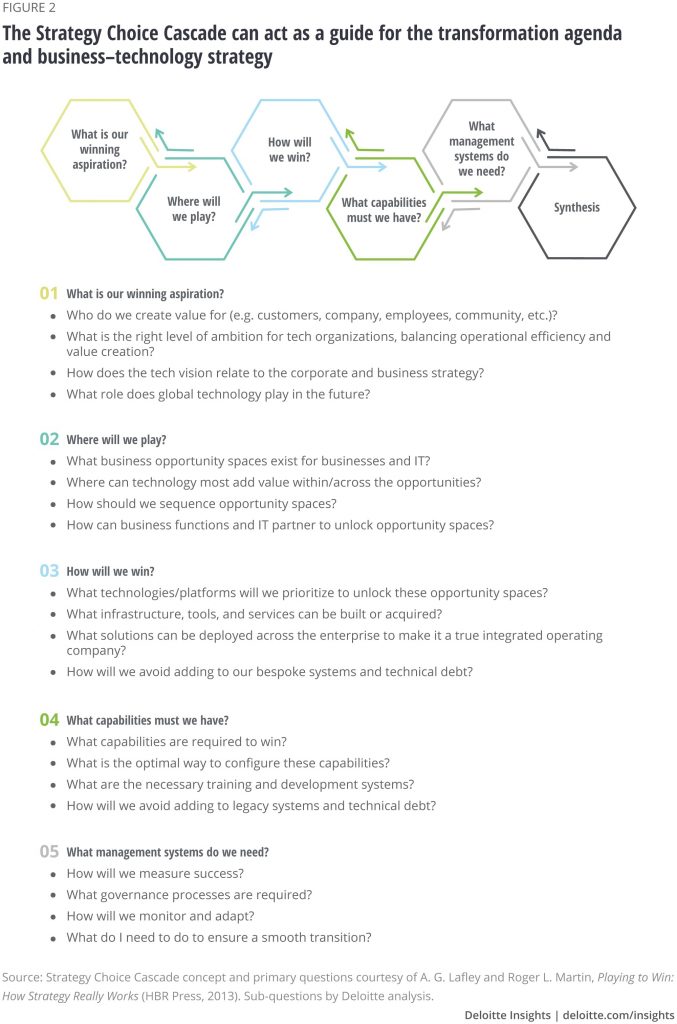
You’ll Learn:
- What is Information Technology & business technology?
- Transitioning from Information Technology strategy to Business Technology strategy
- What are the rudiments of a business technology approach to digital transformation?
- What are the approaches to designing a Business Technology strategy?
- Digital Transformation itinerary
Resources:
- Open Tech Talk Sessions on Digital Transformation:
- 57-Architecting an operating model for digital transformation
- 56- A Digital Transformation Framework
- 54-How to make a business case of Digital Transformation
- 53- Human Resources and Digital transformation
- 52- How you will know digital transformation is achieved
- 51- Enterprise Architects for Success of Digital Transformation
- 50- Is there an end to Digital Transformation?
- 49-What is for ‘me’ in Digital Transformation? Part 2
- 48- What is for ‘me’ in Digital Transformation? Part-1
- 47-How to win at Digital Transformation
- 46- Digital Transformation – it’s all about culture
- 45- How to Overcome Digital Transformation Challenges
- 44-What are the challenges in Digital Transformation
- 43-What other Organization are doing to achieve digital transformation
- 42-How do you a start Digital Transformation
- 41-What are the benefits of Digital Transformation?
- 40-Why Digital Transformation is required?
- 39-“What is digital transformation? Learning the basics”
- Playing to Win: How Strategy Really Works
- Strategic Choices Need to Be Made Simultaneously, Not Sequentially
- Organization's stability and productivity: the role of SWOT analysis
- Formulation of a Systemic PEST Analysis for Strategic Analysis
To share your thoughts:
- Leave a comment on the section below on this post
- You want to suggest any new topic we should cover in future Podcast
- Join us in the Mastermind tribe
- Share this on Twitter, Facebook, If you enjoyed this episode and we together are learning new technologies.
To help out this initiative:
- Leave a candid review for the OTechTalks Podcast on iTunes! Your ratings and reviews will help the session on iTunes.
- Subscribe to the Podcast on iTunes to get the next sessions
Architecting an operating model for digital transformation

We have found that for organizations to build value and provide compelling customer experiences at lower cost, they need to commit to a new operating model. This operating model is a new way of running the organization that combines digital technologies and operations capabilities in an integrated, well-sequenced way to achieve improvements in revenue, customer experience, and cost.
What is digital operating model?
The Digital Operating Model is one of the enablers designed to help organizations to renew the customer experience in the digital era. Adopting a “Digital First” mindset— putting digital at the heart of the business—enables banks to redefine their relationship with their customers
An operating model describes how people, process and technology are organised to achieve strategic objectives.
Deloitte Insights defined an operating model as simple but comprehensive: An operating model represents how value is created by an organization—and by whom within the organization.
What is the purpose of an operating model?
The primary purpose of a Target Operating Model is to enable the application of a corporate strategy or vision to a business or operation. It is a high-level representation of how a company can be best organized to more efficiently and effectively deliver and execute the organization's strategy.
What is operating model transformation?
Operating model transformation helps maximize efficiency, and so this helps grow revenue. As you gain more customers, a lean and responsive operating model means that you can service your customers better.
Digital or not, executives must make decisions about changes to their business in four key categories — value proposition, customer, capabilities, and finance.
What does a target operating model include?
Target operating model is a blueprint of a firm's business vision that aligns operating capacities and strategic objectives and provides an overview of the core business capabilities, internal factors, and external drivers, strategic and operational levers, organizational and functional structure, technology, and
What is the difference between business model and operating model?
An operating model is like the blueprint for a building..... An operating model describes how an organization delivers value, as such, it is a subset of the larger concept 'business model'. A business model describes how an organization creates, delivers, and captures value and sustains itself in the process.
You’ll Learn:
- What is the role of the operating model in digital transformation
- How to design a new operating model
- 4 steps to design a new operating model
Resources:
- Open Tech Talk Sessions on Digital Transformation:
- 56- A Digital Transformation Framework
- 54-How to make a business case of Digital Transformation
- 53- Human Resources and Digital transformation
- 52- How you will know digital transformation is achieved
- 51- Enterprise Architects for Success of Digital Transformation
- 50- Is there an end to Digital Transformation?
- 49-What is for ‘me’ in Digital Transformation? Part 2
- 48- What is for ‘me’ in Digital Transformation? Part-1
- 47-How to win at Digital Transformation
- 46- Digital Transformation – it’s all about culture
- 45- How to Overcome Digital Transformation Challenges
- 44-What are the challenges in Digital Transformation
- 43-What other Organization are doing to achieve digital transformation
- 42-How do you a start Digital Transformation
- 41-What are the benefits of Digital Transformation?
- 40-Why Digital Transformation is required?
- 39-“What is digital transformation? Learning the basics”
- Introducing the next-generation operating model
- Architecting an operating model
- Oracle OpenWorld 2020, Middle East
- IDC Directions 2020
To share your thoughts:
- Leave a comment on the section below on this post
- You want to suggest any new topic we should cover in future Podcast
- Join us in Mastermind tribe
- Share this on Twitter, Facebook, If you enjoyed this episode and we together are learning new Technologies.
To help out this initiative:
- Leave a candid review for the OTechTalks Podcast on iTunes! Your ratings and reviews will help the session on iTunes.
- Subscribe to the Podcast on iTunes to get next sessions
A Digital Transformation Framework

A digital transformation framework helps to evaluate opportunities, to formalize a plan or roadmap for how and when an organization will make strategic headways to core systems and processes in alignment with overall business transformation. A digital transformation framework is a blueprint, a tool, used across an organization that guides all levels of the organization through the business transformation journey, we can call it a framework for digital transformation or recipes for digital transformation or a blueprint. Basically, by chalking down such a blueprint organizations will go from reacting to the changes happening to take control of their business.
However, there is no framework that fits every organization and every business. Organizations have to blueprint their own business transformation framework suited to their digital transformation strategy, customers, and employees.
The ultimate objective of any business is to continuously improve its products and services to meet the changing needs of its customers. This enforces businesses to volte-face their work to continuously improve business which eventually will help to increase margins and decrease costs through a Digital Transformation.
Now if an organization starts following their crafted blueprint of digital it will not only arm an organization to improve its operations but also accepts and executes innovative and disruptive strategies for business. These strategies enable the organization to strive in the rapidly changing market conditions that are highly influenced by changing customer expectations, technologies, and new business models.
In this current age of disruption, the biggest challenge transformation does not happen overnight. To do it successfully, a whole organization to have capabilities in action and successful digital transformation relies on well-tested frameworks or blueprints adopted by other organizations who have achieved such business transformation.
Now the leadership of organizations needs to always have this famous statement in their mind: “Rome wasn’t built in a day”.
You’ll Learn:
- What is the framework for digital transformation
- What we will achieve from the framework of digital transformation
- Overview of different available frameworks of digital transformation
Resources:
- Open Tech Talk Sessions on Digital Transformation:
- 54-How to make a business case of Digital Transformation
- 53- Human Resources and Digital transformation
- 52- How you will know digital transformation is achieved
- 51- Enterprise Architects for Success of Digital Transformation
- 50- Is there an end to Digital Transformation?
- 49-What is for ‘me’ in Digital Transformation? Part 2
- 48- What is for ‘me’ in Digital Transformation? Part-1
- 47-How to win at Digital Transformation
- 46- Digital Transformation – it’s all about culture
- 45- How to Overcome Digital Transformation Challenges
- 44-What are the challenges in Digital Transformation
- 43-What other Organization are doing to achieve digital transformation
- 42-How do you a start Digital Transformation
- 41-What are the benefits of Digital Transformation?
- 40-Why Digital Transformation is required?
- 39-“What is digital transformation? Learning the basics”
- BCG Three-Part framework for Digital transformation
- Digital Transformation framework by McKinsey page no 9
- Digital Business Transformation, A Conceptual Framework
- Cognizant’s Digital Transformation Framework
- Four Strategic Frameworks for Digital Transformation
- Excellence in the Digital Economy: A Blueprint for Success
To share your thoughts:
- Leave a comment on the section below on this post
- You want to suggest any new topic we should cover in future Podcast
- Join us in Mastermind tribe
- Share this on Twitter, Facebook, If you enjoyed this episode and we together are learning new Technologies.
To help out this initiative:
- Leave a candid review for the OTechTalks Podcast on iTunes! Your ratings and reviews will help the session on iTunes.
- Subscribe to the Podcast on iTunes to get next sessions
Seeing clearly in 2020 and Top-Ranked learning courses that will prepare you for future

As we get ready for 2020, now is the time to get organized, set goals, and make plans. In light of that, What I want to talk about is not on technology but just a talk between you and me. An open talk to discuss how to set up goals for 2020 and how to get organized so that we can achieve them. As Seth Godin wrote a blog on 2nd January 2020, “Seeing clearly in 2020”
“For most of us, 2020 is going to be a turning point. Because it’s another chance to live tomorrow over again. A chance to reset, to decide what’s important and what’s worth working for.
Not a New Year’s resolution, because resolve is often in short supply.
Instead, making the choice to learn to see. A chance to decide to decide.
Sure, that’s meta, but it beats the alternative. To not see. To simply accept. To not choose. To obediently follow instead”
We will be discussing 2 topics today:
1- What are your priorities for year 2020 and how I have categorized it.
2- Top-Ranked Programs That Will Prepare You for 2020 and Beyond from Edx.org
I hope you are feeling refreshed and ready for a great 2020. If you’ve been thinking about how you can make the most of the year ahead, I'm here to help you.
If you could complete the sentence, “This time next year I want to be...”
The question really is, WILL you?
...Will you de-install limiting beliefs?
...Will you carve in some new routines and rituals that accelerate your performance?
...Will you let go of the people who irritate, frustrate and exhaust you?
...Will you commit to some brave goals and audacious ambitions?
...Will you become a better learner and a world-class student?
...Will you stop making excuses so you start a generation of remarkable results?
The areas to categories for goal settings are:
- Personal, health
- Your office, business-related
- Personal Learning goals
- Financials
Resources:
To share your thoughts:
- Leave a comment on the section below on this post
- You want to suggest any new topic we should cover in future Podcast
- Join us in the Mastermind tribe
- Share this on Twitter, Facebook, If you enjoyed this episode and we together are learning new technologies.
To help out this initiative:
- Leave a candid review for the OTechTalks Podcast on iTunes! Your ratings and reviews will help the session on iTunes.
- Subscribe to the Podcast on iTunes to get next sessions
How to make a business case of Digital Transformation

This session is going to cover to help to build a business case of digital transformation. Today, no need to put efforts to describe the benefits of digital transformation, it is clearly understood that digital transformation is not only a strategic opportunity, it’s a matter of survival.
Digital transformation strategy is at the core of every leading organization with major business decisions are being made based on the data and transformational technology trends.
Just to recap the fundamentals of digital transformation were covered in an earlier post Learning the basics of Digital Transformation, now everyone is understanding the clear benefits of digital transformation and still, there are business leaders who are wondering how to build a solid digital transformation business case which can be presented to the board with confidence and get the green light. While working with a number of organizations on the digital transformation move, I am still seeing that the basics are not set properly or transformation is being kept on the side table and there is no such urgency to bring it to the spot line. Still, senior leadership is facing the foremost challenge, how to build the business case for digital transformation. In this post, I am going to cover very few fundamentals - a beginner’s guide.
You’ll Learn:
- How to outline digital transformation scope
- How to avoid 8 early-stage failures/patterns
- 8 Step Process to Developing a Business Case
Resources:
- Open Tech Talk Sessions on Digital Transformation:
- 53- Human Resources and Digital transformation
- 52- How you will know digital transformation is achieved
- 51- Enterprise Architects for Success of Digital Transformation
- 50- Is there an end to Digital Transformation?
- 49-What is for ‘me’ in Digital Transformation? Part 2
- 48- What is for ‘me’ in Digital Transformation? Part-1
- 47-How to win at Digital Transformation
- 46- Digital Transformation – it’s all about culture
- 45- How to Overcome Digital Transformation Challenges
- 44-What are the challenges in Digital Transformation
- 43-What other Organization are doing to achieve digital transformation
- 42-How do you a start Digital Transformation
- 41-What are the benefits of Digital Transformation?
- 40-Why Digital Transformation is required?
- 39-“What is digital transformation? Learning the basics”
- IDC 3rd Platform and the Gartner Nexus of Forces concepts showcase a model that groups cloud, social media and marketing, analytics, and Big Data with the Internet of Things as a critical innovation accelerator.
- 8 Step Process to Developing a Business Case
To share your thoughts:
- Leave a comment on the section below on this post
- You want to suggest any new topic we should cover in future Podcast
- Join us in Mastermind tribe
- Share this on Twitter, Facebook, If you enjoyed this episode and we together are learning new Technologies.
To help out this initiative:
- Leave a candid review for the OTechTalks Podcast on iTunes! Your ratings and reviews will help the session on iTunes.
- Subscribe to the Podcast on iTunes to get next sessions
Human Resources and Digital transformation

This is the 3rd session on Human Resources and specifically based on Global Human Capital trends by Deloitte.
In podcast no 30 with the title ‘Digital HR – Mission to Digital Transformation’ we discussed 2017 Global Human Capital Tends with the title of ‘Rewriting the rules for digital age’.
We have covered basics in “Genesis of the Social Enterprise” podcast session no 34 which was based on 2018 Global Human Capital Trends published by Deloitte and 6 Steps to start a Social Enterprise
Today we will be talking based on 2019 Global Human Capital Trends ‘Leading the Social Enterprise’
We are reviewing the 2019 HR trends and digital transformation in HR as these trends are leading to the business transformation of the HR function.
Human capital trends for 2019 into three actionable categories.
1-the future of the workforce: how organizations should adapt to the forces restructuring job and work design, the open talent economy, and leadership.
2-future of the organization: how teams, networks, and new approaches to rewards are driving business performance.
3-the future of HR: how the function is stepping up to the challenge of redesigning its capabilities, technologies and focus to lead transformation in HR and across the enterprise.
As per Survey of KPMG The future of HR 2019 Respond to change Exist in the digital era 39% of HR Leaders are confident in their ability to transform the workforce and itself Now let’s see what is HR of today and how it looks in the future:
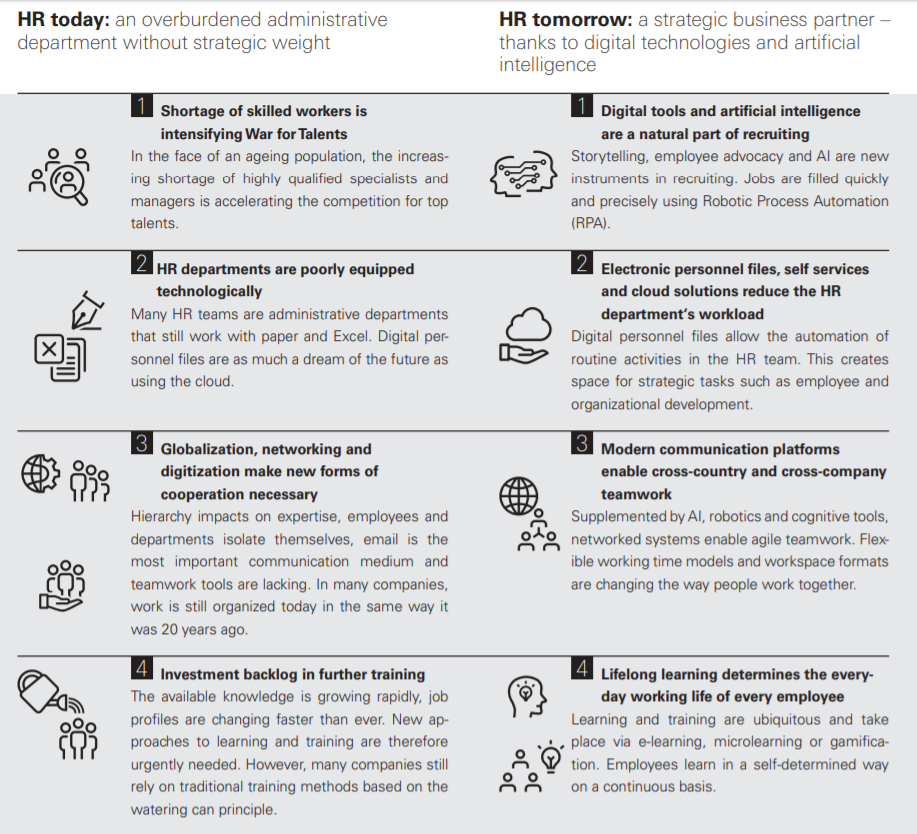
You’ll Learn:
- 2019 Global Human Capital Trends ‘Leading the Social Enterprise’
- What are the top 3 priorities for CHROs
- The Future of HR is Now
Resources:
- Open Tech Talk Sessions on Digital Transformation:
- 81- Digital Transformation during and Post COVID-19
- 64- Coronavirus Outbreak: Business continuity & IT Leaders priorities
- 63- Digital transformation expectations vs. reality
- 62- First 100 Days of Digital Transformation
- 61- How to do Digital Maturity Assessment
- 60- What is digital maturity and which digital maturity model to choose?
- 59- Where to start in an organization for Digital Transformation
- 58- A leap from Information Technology to Business Technology
- 57-Architecting an operating model for digital transformation
- 56- A Digital Transformation Framework
- 54-How to make a business case of Digital Transformation
- 53- Human Resources and Digital transformation
- 52- How you will know digital transformation is achieved
- 51- Enterprise Architects for Success of Digital Transformation
- 50- Is there an end to Digital Transformation?
- 49-What is for ‘me’ in Digital Transformation? Part 2
- 48- What is for ‘me’ in Digital Transformation? Part-1
- 47-How to win at Digital Transformation
- 46- Digital Transformation – it’s all about culture
- 45- How to Overcome Digital Transformation Challenges
- 44-What are the challenges in Digital Transformation
- 43-What other Organization are doing to achieve digital transformation
- 42-How do you start a Digital Transformation
- 41-What are the benefits of Digital Transformation?
- 40-Why Digital Transformation is required?
- 39-“What is digital transformation? Learning the basics”
- 2019 Global Human Capital Trends ‘Leading the Social Enterprise’
- Survey of KPMG The future of HR 2019
Enterprise Architects for Success of Digital Transformation

Digital transformation pressures in business have made enterprise architects more essential than ever before. All digital transformation funds are being made to transform and modernize the technical landscape of almost every organization. Organizations are building out tomorrow’s legacy every day through digital transformation programs.
Few questions need to be thought through during digital transformation programs:
- How can we make sure that the enterprise architecture of the transformation is correct?
- How can we ensure that the solutions that emerge from the transformation will meet today's and tomorrow’s customers' needs?
- How can we ensure emerging technologies are walkable, integrated, and adding value to the business for today and tomorrow?
You’ll Learn:
- Why Enterprise Architects are Key for Digital Transformation
- How Enterprise architects are digital transformers
- Why we should have enterprise architecture for Digital Transformation with clear business outcomes
following are the survey statistics mentioned in the podcast
A survey by McKinsey and Henley Business School revealed “EA teams at digital leaders appear to avoid the trap of miss-alignment between business functions and IT. Respondents from digital leaders were more likely to say that EA teams contribute “high” or “very high” benefits to business and IT
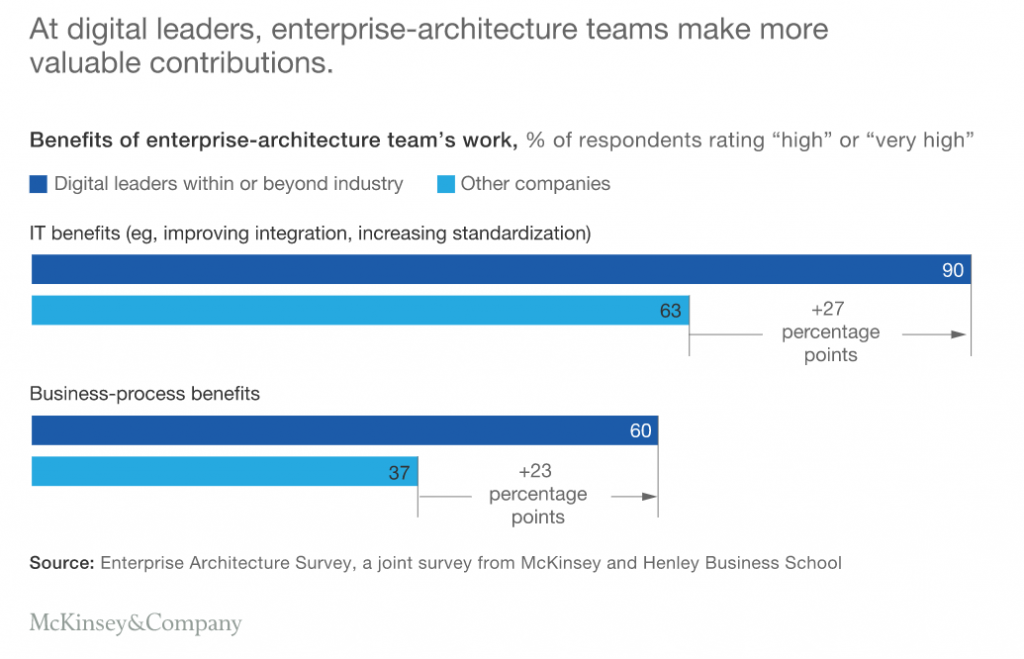
”Source:survey by McKinsey and Henley Business School
MIT Sloan Management Review has published a survey and mentioned 51% of companies have silos and complexity and they mentioned “that enterprises can take one of four different paths to go from the lower-left quadrant (Silos and Complexity) to the upper-right (Future-ready). Based on the analysis, companies in the future-ready quadrant performed much better than their industry peers. Becoming future-ready requires changing the enterprise on two dimensions - customer experience and operational efficiency”
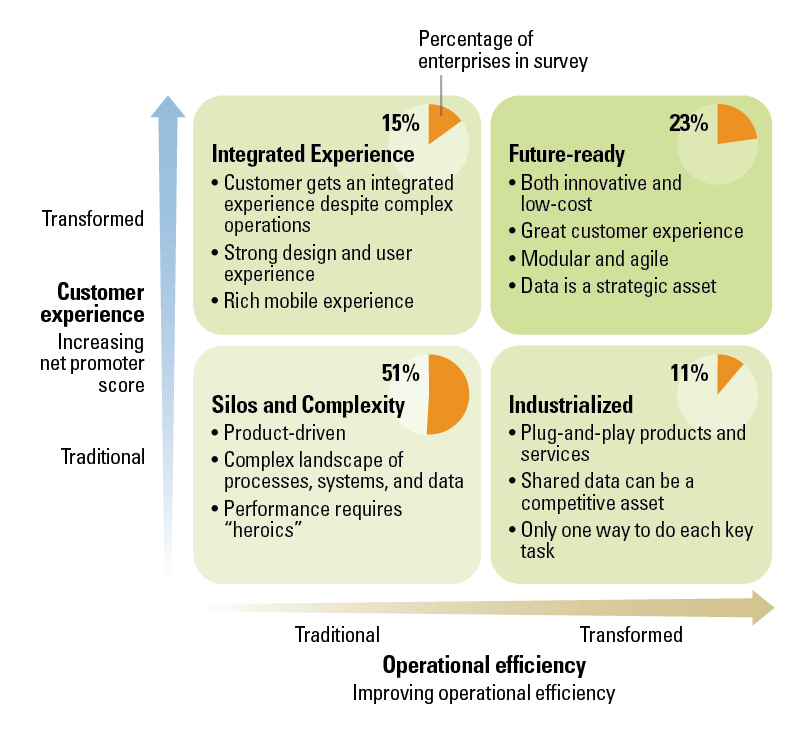
Source:Is Your Company Ready for a Digital Future?
Resources:
- Open Tech Talk Sessions on Digital Transformation:
- 39-“What is digital transformation? Learning the basics”
- 40-Why Digital Transformation is required?
- 41-What are the benefits of Digital Transformation?
- 42-How do you a start Digital Transformation
- 43-What other Organization are doing to achieve digital transformation
- 44-What are the challenges in Digital Transformation
- 45- How to Overcome Digital Transformation Challenges
- 46- Digital Transformation – it’s all about culture
- 47-How to win at Digital Transformation
- 48- What is for ‘me’ in Digital Transformation? Part-1
- 49-What is for ‘me’ in Digital Transformation? Part 2
- 50- Is there an end to Digital Transformation?
- Gartner coined the notion of a Vanguard Enterprise Architects to distinguish an EA of Tomorrow from the classic Enterprise Architect
- A survey by McKinsey and Henley Business School
- Gartner, The Evolution of Enterprise Architecture
- “Future Predictions for EA in the Next Decade”
- ‘Unlocking success in digital transformations’
- MIT Sloan Management Review has published survey
To share your thoughts:
- Leave a comment on the section below on this post
- You want to suggest any new topic we should cover in future Podcast
- Join us in Mastermind tribe
- Share this on Twitter, Facebook, If you enjoyed this episode and we together are learning new Technologies.
To help out this initiative:
- Leave a candid review for the OTechTalks Podcast on iTunes! Your ratings and reviews will help the session on iTunes.
- Subscribe to the Podcast on iTunes to get next sessions
Is there an end to Digital Transformation?

The key question coming to mind is, is there an end to digital transformation? When will an organization reach this situation? When can they say or declare that they have completed/achieved the digital transformation? When will an organization know it’s time to cut the celebration cake? We can ask another question. After the digital transformation, what will be the next phase? Or what we will call it? When an organization completes the process of digitizing operations, transforming back-office applications and customer experience, etc. what is after this?
Another big news for this podcast that we have crossed 20,000 downloads of the show, thank you so much for your all support and feedback.
You’ll Learn:
In this session, you will learn what will be after the digital transformation era. The requirement to deliver the latest and greatest has become an organization-wide issue, and viewing digital transformation as the end goal can be dangerous for businesses. As digital transformation projects are reaching the final destination, organizations become more vulnerable to digitally-native competitors, who are constantly pushing the boundaries and looking at how they can further disrupt the market with something new.
- Is there an end to digital transformation
- What are the DARQ technologies
Resources:
- Open Tech Talk Sessions on Digital Transformation:
- 39-“What is digital transformation? Learning the basics”
- 40-Why Digital Transformation is required?
- 41-What are the benefits of Digital Transformation?
- 42-How do you a start Digital Transformation
- 43-What other Organization are doing to achieve digital transformation
- 44-What are the challenges in Digital Transformation
- 45- How to Overcome Digital Transformation Challenges
- 46- Digital Transformation – it’s all about culture
- 47-How to win at Digital Transformation
- 48- What is for ‘me’ in Digital Transformation? Part-1
- 49-What is for ‘me’ in Digital Transformation? Part 2
- From Digital Transformation to Continuous Next by Gartner
- The post-digital era is upon us by Accenture
- Peter Diamandis and Steven Kotler to fathom the evolution of exponential technologies called “the 6 D’s of Exponentials: Digitalization, Deception, Disruption, Demonetization, Dematerialization and Democratization.”
- Gartner Hype Cycle
To share your thoughts:
- Leave a comment on the section below on this post
- You want to suggest any new topic we should cover in future Podcast
- Join us in Mastermind tribe
- Share this on Twitter, Facebook, If you enjoyed this episode and we together are learning new Technologies.
To help out this initiative:
- Leave a candid review for the OTechTalks Podcast on iTunes! Your ratings and reviews will help the session on iTunes.
- Subscribe to the Podcast on iTunes to get next sessions
What is for ‘me’ in Digital Transformation? Part 2

There are many points on digital transformation that require open discussion, starting from what, why, and how to the benefits of Digital Transformation that we covered in our earlier post ‘Digital transformation – a beginner’s guide’ to let you start with the playbook.
This is the 2nd part of the topic of what is for employees from digital transformation. The 1st session is available on 'What is for ‘me’ in Digital Transformation?'
In digital transformation, we need to find out ‘what’s in it for me?’ for the 3 pillars of an organization:
- for the customer
- the organization
- the employee
You’ll Learn:
In this session, we have categorized four main areas that need to be at the top to address what is for me in digital transformation. this is the Part-2 of the session
- Communicating to employees (covered in Part-1)
- Workforce planning
- Empowering employees
- Improving the employee experience
Resources:
- Open Tech Talk Sessions on Digital Transformation:
- 39-“What is digital transformation? Learning the basics”
- 40-Why Digital Transformation is required?
- 41-What are the benefits of Digital Transformation?
- 42-How do you a start Digital Transformation
- 43-What other Organization are doing to achieve digital transformation
- 44-What are the challenges in Digital Transformation
- 45- How to Overcome Digital Transformation Challenges
- 46- Digital Transformation – it’s all about culture
- 47-How to win at Digital Transformation
- 48- What is for ‘me’ in Digital Transformation? Part-1
- “County-level job automation risk and health: Evidence from the United States” published in Social Science & Medicine
- “85% of financial success is due to an individual’s personality and ability to communicate, negotiate, and lead. Only 15% is due to technical knowledge according to research from the Carnegie Institute of Technology.”
- “Only 15% of the worldwide workforce is motivated and engaged in regards to their work published in the State of the Global Workplace (Gallup 2017)
- Virgin will allow staff to take as much holiday as they like; no checking with managers, no tracking days off
- Netflix’s “Freedom & Responsibility” policy since 2010 includes unmetered vacation; employees take as much holiday as they want, whenever they want.
- ‘Why There Are No Bosses at Valve’.
- Gartner Identifies Six Barriers to Becoming a Digital Business
- “Why employees are the key to your digital transformation”
- Capgemini and LinkedIn ‘The Digital Talent Gap’
- Gartner 2018 Shifting Skills Survey
- report by the World Economic Forum and The Boston Consulting Group,
- ‘Employee Distrust is Pervasive in U.S. Workforce’
- It’s a right time for organizations to make work irresistible by following ‘a refreshed model of engagement’ from Deloitte Insight
- Harvard Business Review contributor Jacob Morgan
- ‘The Worldwide Employee Engagement Crisis’.
- HBR ‘Why the Millions We Spend on Employee Engagement Buy Us So Little’
- Studies shows “since 1970s, organizational transformation projects are failing at the rate of 60-70%, a statistic that has stayed constant to the present.”
To share your thoughts:
- Leave a comment on the section below on this post
- You want to suggest any new topic we should cover in future Podcast
- Join us in Mastermind tribe
- Share this on Twitter, Facebook, If you enjoyed this episode and we together are learning new Technologies.
To help out this initiative:
- Leave a candid review for the OTechTalks Podcast on iTunes! Your ratings and reviews will help the session on iTunes.
- Subscribe to the Podcast on iTunes to get next sessions
What is for ‘me’ in Digital Transformation?

Today’s focus is to discuss the very central point, what is for ‘me’ in digital transformation, being an employee of any organization, and this also applies to you. Don’t hesitate and let’s discuss openly what is for ‘me’… if we apply the prevailing notion, what’s in it for me, we consider how will I benefit from digital transformation as an employee? How will it make me successful? Generally, it’s been assumed that benefits for the organization from digital transformation mean that it’s good or beneficial to employees. Is this an erroneous notion? We understand there are benefits for the organization; that’s why major programs are getting the go-ahead; otherwise, nothing would be done. As we understand it, Digital transformation is not all about technology. Digital transformation shifts the mindset of how organizations create value for their end customers, and none of that would be possible without educated employees. Technology is a necessity, and companies need to ensure they are educating and empowering employees.
Quote of the session: "He is great who speaks great, greater who thinks great, and greatest who lives great". ~James Lendall Basford (1845–1915), Seven Seventy Seven Sensations, 1897
While I understand, as an employee, everything is being done to make the customer journey easy and amazing, and what is being done to make things easier for the employee in front of the customer. Think through a few of the common questions below. Anticipate as many questions as possible and have answers ready for them. Here are just a few to start with:
- How is this going to impact me and my colleagues?
- How will my job change due to digital transformation?
- Do I have the right skills to succeed in a digital world, and how will the organization help me learn?
- Is my job safe? Will I be replaced by a robot?
- What will happen if I don’t “get on board”?
- How is this change going to impact the way I do my job?
- What is the organization’s strategy that directly benefits me?
- What’s in the digital transformation plan that will help me to change at work, change my day-to-day life at work?
You’ll Learn:
In this session, we have categorized four main areas that need to be at the top to address what is for me in digital transformation. this is the part-1 of the session and part-2
- Communicating to employees
- Workforce planning (covered in Part-2)
- Empowering employees (covered in Part-2)
- Improving the employee experience (covered in Part-2)
Resources:
- Open Tech Talk Sessions on Digital Transformation:
- 39-“What is digital transformation? Learning the basics”
- 40-Why Digital Transformation is required?
- 41-What are the benefits of Digital Transformation?
- 42-How do you a start Digital Transformation
- 43-What other Organization are doing to achieve digital transformation
- 44-What are the challenges in Digital Transformation
- 45- How to Overcome Digital Transformation Challenges
- 46- Digital Transformation – it’s all about culture
- 47-How to win at Digital Transformation
- 49- What is for ‘me’ in Digital Transformation? Part 2
- “County-level job automation risk and health: Evidence from the United States” published in Social Science & Medicine
- “85% of financial success is due to an individual’s personality and ability to communicate, negotiate, and lead. Only 15% is due to technical knowledge according to research from the Carnegie Institute of Technology.”
- “Only 15% of the worldwide workforce is motivated and engaged in regards to their work published in the State of the Global Workplace (Gallup 2017)
- Virgin will allow staff to take as much holiday as they like; no checking with managers, no tracking days off
- Netflix’s “Freedom & Responsibility” policy since 2010 includes unmetered vacation; employees take as much holiday as they want, whenever they want.
- ‘Why There Are No Bosses at Valve’.
- Gartner Identifies Six Barriers to Becoming a Digital Business
- “Why employees are the key to your digital transformation”
- Capgemini and LinkedIn ‘The Digital Talent Gap’
- Gartner 2018 Shifting Skills Survey
- report by the World Economic Forum and The Boston Consulting Group,
- ‘Employee Distrust is Pervasive in U.S. Workforce’
- It’s a right time for organizations to make work irresistible by following ‘a refreshed model of engagement’ from Deloitte Insight
- Harvard Business Review contributor Jacob Morgan
- ‘The Worldwide Employee Engagement Crisis’.
- HBR ‘Why the Millions We Spend on Employee Engagement Buy Us So Little’
- Studies shows “since 1970s, organizational transformation projects are failing at the rate of 60-70%, a statistic that has stayed constant to the present.”
To share your thoughts:
- Leave a comment on the section below on this post
- You want to suggest any new topic we should cover in future Podcast
- Join us in Mastermind tribe
- Share this on Twitter, Facebook, If you enjoyed this episode and we together are learning new technologies.
To help out this initiative:
- Leave a candid review for the OTechTalks Podcast on iTunes! Your ratings and reviews will help the session on iTunes.
- Subscribe to the Podcast on iTunes to get next sessions
47-How to win at Digital Transformation

Yesterday’s approaches to transform digitally won’t deliver; you need complete clarity about digital’s demands, strong leadership, and the resolve to bet boldly on business decisions, business processes, and customer experiences.
In this session, we have covered basic questions to be asked by all the stakeholders to win digital transformation. these questions were very rightly documented by Strategy & PwC
You’ll Learn:
In this session, we will be covering cultural challenges and how to overcome them during the digital transformation program.
- Digital strategy
- Digital innovation and product development
- Digital supply chain and operations
- Digital marketing, sales, and service
- Workplace and enabling infrastructure
Resources:
- Open Tech Talk Sessions on Digital Transformation:
- 39-“What is digital transformation? Learning the basics”
- 40-Why Digital Transformation is required?
- 41-What are the benefits of Digital Transformation?
- 42-How do you a start Digital Transformation
- 43-What other Organization are doing to achieve digital transformation
- 44-What are the challenges in Digital Transformation
- 45- How to Overcome Digital Transformation Challenges
- 47- Digital Transformation – it’s all about culture
- Digital strategy and capabilities to win in a digitized world
To share your thoughts:
- Leave a comment on the section below on this post
- You want to suggest any new topic we should cover in future Podcast
- Join us in Mastermind tribe
- Share this on Twitter, Facebook, If you enjoyed this episode and we together are learning new Technologies.
To help out this initiative:
- Leave a candid review for the OTechTalks Podcast on iTunes! Your ratings and reviews will help the session on iTunes.
- Subscribe to the Podcast on iTunes to get next sessions
Digital Transformation - it’s all about culture

The biggest roadblock in digital transformation is the culture and it’s a problem that’s worsening, no strategy is working at all. A report published by Capgemini “The Digital Culture Challenge” in 2018 states that In 2011, a majority of respondents (55%) said that culture was the number one hurdle to digital transformation but in their latest research, this figure has actually risen to 62%. This report is based on the survey of Capgemini Digital Transformation Institute, Digital Culture; March-April 2017.
Tons of other organizations have gathered research that supports it. Let's look into another report from PwC. According to research by PwC, a whopping 75% of change initiatives will fail due to a lack of digital culture. Digital transformation, digital maturity, or digitization? No matter what term is used, digital is revolutionizing the way businesses operate and succeed. In fact, a third of key decision-makers according to Mckinsey state that culture is the most significant barrier to digital effectiveness followed by a lack of understanding of digital trends (25%).
In previous sessions on digital transformation series we have covered “What are the challenges in Digital Transformation” and in part 2 of the digital transformation challenges, we have covered in post "how to Overcome Digital Transformation Challenges" and this post is all about culture, what is the impact of culture in digital transformation programs.
You’ll Learn:
In this session, we will be covering cultural challenges and how to overcome them during the digital transformation program.
- Industry stats on cultural challenges
- what is digital culture
- How to overcome them
Resources:
- Open Tech Talk Sessions on Digital Transformation:
- 39-“What is digital transformation? Learning the basics”
- 40-Why Digital Transformation is required?
- 41-What are the benefits of Digital Transformation?
- 42-How do you a start Digital Transformation
- 43-What other Organization are doing to achieve digital transformation
- 44-What are the challenges in Digital Transformation
- 45- How to Overcome Digital Transformation Challenges
- Culture as Key Success Factor in Industrial Digital Transformation” by Russell Reynolds
- Netflix CEO Reed Hastings once explained in a famous presentation that his company’s culture
- Culture for Digital age
- culture change initiatives by Gartner
- Six Barriers to Becoming a Digital Business
- Cultural Transformation in the Digital World
- “The Digital Culture Challenge” by Capgemini
To share your thoughts:
- Leave a comment on the section below on this post
- You want to suggest any new topic we should cover in future Podcast
- Join us in Mastermind tribe
- Share this on Twitter, Facebook, If you enjoyed this episode and we together are learning new Technologies.
To help out this initiative:
- Leave a candid review for the OTechTalks Podcast on iTunes! Your ratings and reviews will help the session on iTunes.
- Subscribe to the Podcast on iTunes to get next sessions
How to Overcome Digital Transformation Challenges

In previous sessions on the digital transformation series we have covered “What are the challenges in Digital Transformation” In this part 2 of the digital transformation challenges, I thought to add some strategies on how to overcome these challenges on the crossroad of digital transformation.
As we are aware, the world has gone digital and it looks there’s no way to go back. This has created an urgency for all businesses to digitally transform and be with the world of ‘digital’. This change presents unique challenges for businesses to cope with. If organizations don’t have a clear path forward for digital transformation that organization may not make it through the next few years. As we know businesses are often very slow to change and many of the advancements that come quickly through our digital world don’t come easily or cheaply.
In previous session no 44 What are the challenges in Digital Transformation, we have covered common challenges of Digital Transformation including,
- ‘Blind’ Challenge
- No consensus on what digital transformation means
- No CEO sponsorship
- Lack of focus
- Resistance to change
- Lack of pace
- Talent Gap
- Lack of continuity
You’ll Learn:
In this session we will be covering challenges and how to overcome them during digital transformation program.
- Lack of vision and leadership buy-in
- Lack of understanding of digital solutions and impact
- No visibility or clarity on digital transformation budget
- Inadequate digital expertise and Lack of resource availability
Resources:
- Open Tech Talk Sessions on Digital Transformation:
- 39-“What is digital transformation? Learning the basics”
- 40-Why Digital Transformation is required?
- 41-What are the benefits of Digital Transformation?
- 42-How do you a start Digital Transformation
- 43-What other Organization are doing to achieve digital transformation
- 44-What are the challenges in Digital Transformation
- Pivoting to digital maturity
- Top 5 Digital Transformation Challenges (and How to Overcome Them)
- New Survey Highlights Leadership Crisis in Digital Transformation
- A CEO guide for avoiding the ten traps that derail digital transformations
- Navigating uncertainty
- Changing change management
- EMBRACING DIGITAL TECHNOLOGY
- The Digital Talent Gap
- Motivate Employees to Reskill for the Digital Age
To share your thoughts:
- Leave a comment on the section below on this post
- You want to suggest any new topic we should cover in future Podcast
- Join us in Mastermind tribe
- Share this on Twitter, Facebook, If you enjoyed this episode and we together are learning new Technologies.
To help out this initiative:
- Leave a candid review for the OTechTalks Podcast on iTunes! Your ratings and reviews will help the session on iTunes.
- Subscribe to the Podcast on iTunes to get next sessions
What are the challenges in Digital Transformation

Today we will be discussing the top challenges that large enterprises born before the digital age or in the digital age are facing during digital transformation.
Out of 1,000 business decision-makers, 98% agree the delivery of digital services is critical to a successful company, but 95% encounter challenges when trying to do so, according to a report digital performance survey 2018 from Riverbed. Companies are aware of the increasing importance of a successful digital experience. Survey respondents reported that this success is measured by improved user experience and satisfaction (53%), greater market agility (49%), increased revenue and profitability (49%), increased employee productivity (49%), and faster time to market (48%).
According to the survey five most significant barriers when working towards a better digital strategy are:
- Budget Constraints (51%)
- Overly complex or rigid legacy IT infrastructure (45%)
- Lack of full visibility across the digital or end-user experience (40%)
- Lack of available or appropriately-skilled personnel (39%)
- Lack of buy-in from leadership on prioritizing digital initiatives (37%)
In another survey sponsored by Jabil, they asked 300 technology and business stakeholders working at manufacturing companies of all sizes around the world a series of critical questions and their findings categories into different segment based on company size,
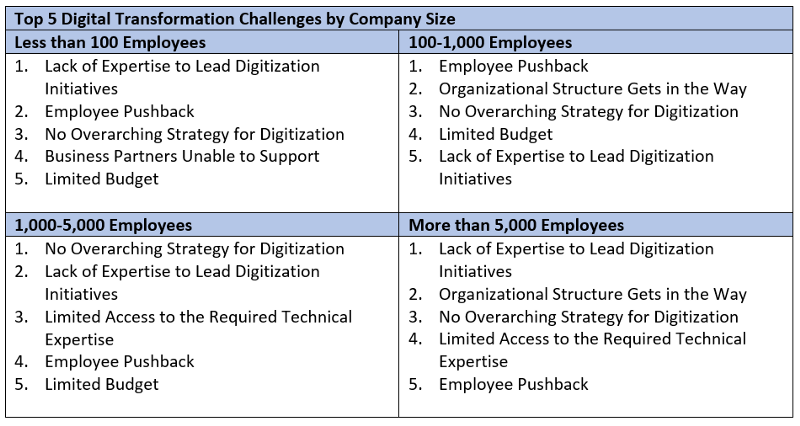
You’ll Learn:
In this session, we will be covering few challenges being faced during the digital transformation program.
- ‘Blind’ Challenge
- No consensus on what digital transformation means
- No CEO sponsorship
- Lack of focus
- Resistance to change
- Lack of pace
- Talent Gap
- Lack of continuity
Resources:
- Open Tech Talk Sessions on Digital Transformation:
- Top 5 Digital Transformation Challenges (and How to Overcome Them)
- New Survey Highlights Leadership Crisis in Digital Transformation
- A CEO guide for avoiding the ten traps that derail digital transformations
- Navigating uncertainty
- Changing change management
- EMBRACING DIGITAL TECHNOLOGY
- The Digital Talent Gap
- Motivate Employees to Reskill for the Digital Age
To share your thoughts:
- Leave a comment on the section below on this post
- You want to suggest any new topic we should cover in future Podcast
- Join us in Mastermind tribe
- Share this on Twitter, Facebook, If you enjoyed this episode and we together are learning new Technologies.
To help out this initiative:
- Leave a candid review for the OTechTalks Podcast on iTunes! Your ratings and reviews will help the session on iTunes.
- Subscribe to the Podcast on iTunes to get next sessions
What other Organization are doing to achieve digital transformation

Organizations are increasingly launching digital initiatives to expand or build digital capabilities to deliver business efficiency or top-line revenue growth. Digital transformation success stories started emerging and we are seeing the trend, strategies, recipes that they have followed to achieve Digital transformation. In this session, we have covered a few of the case studies that will help you support digital transformation in your organization. In 2015, Digital Transformation Initiative (DTI) launched by World Economic Forum. The initiative offers unique insights into the impact of digital technologies on business and wider society over the next decade.
You’ll Learn:
In this session we have covered What your peers, other organizations have done to achieve digital transformation, the idea of this session is to benchmark any organization in your region which is going through Digital Transformation and you can look into their strategies, methods what they have followed to achieve.
This session is covering some of the examples around the world, which may not similar to your organization's business, therefore, you have to look around in your region and find out at organizations, CIOs, CEOs, who are the front runner on Digital transformation. it's like What your peers, other organizations have done or doing to achieve digital transformation. even it can fall under the category of a search for 'Successful Digital Transformation Case Studies. the ultimate objective is to learn from them
Resources:
- Open Tech Talk Sessions on Digital Transformation:
- Digital Transformation Initiative (DTI) launched by World Economic Forum
- Case studies published by World Economic Forum
- Gartner Strategy Leadership Council Case Study: Digital Wedge Points
- The Future Blockchain Summit Dubai
- AI Everything Summit for Gov & Businesses, Dubai
- Digital Transformation Learning Platform in the Kingdom of Saudi Arabia
To share your thoughts:
- Leave a comment on the section below on this post
- You want to suggest any new topic we should cover in future Podcast
- Join us in Mastermind tribe
- Share this on Twitter, Facebook, If you enjoyed this episode and we together are learning new Technologies.
To help out this initiative:
- Leave a candid review for the OTechTalks Podcast on iTunes! Your ratings and reviews will help the session on iTunes.
- Subscribe to the Podcast on iTunes to get next sessions
How do you start a Digital Transformation?

You must be already having some form of digital transformation going on in your organization. What we have observed that Process digitization or automation is one of the first places business leaders explore change. The key is starting small and then building on these initiatives help to transform the organization and ready for the future. So where should you start? Emerging technologies are rapidly infusing into the business areas and many entrepreneurs still steer clear and prefer to put it on a waiting list or wait and see strategy. On the other side, competitors are conquering the market with the newest solutions and business models. Now the question to you is….you can be the winner in this competition if you begin the digital transformation process right now
You’ll Learn:
In this session we have covered proved methods to start digital transformation:
- Where to Start With Digital Transformation?
- How to treat Digital transformation a 'project', 'a complex project'
- Steps to Take on Your Digital Transformation Journey
Resources:
- Open Tech Talk Sessions on Digital Transformation:
- A road-map for a digital transformation an article from Mckinsey
- Open Tech Talk Sessions on Digital Transformation:59- Where to start in organization for Digital Transformation
- 58- A leap from Information Technology to Business Technology
- 57-Architecting an operating model for digital transformation
- 56- A Digital Transformation Framework
- 54-How to make a business case of Digital Transformation
- 53- Human Resources and Digital transformation
- 52- How you will know digital transformation is achieved
- 51- Enterprise Architects for Success of Digital Transformation
- 50- Is there an end to Digital Transformation?
- 49-What is for ‘me’ in Digital Transformation? Part 2
- 48- What is for ‘me’ in Digital Transformation? Part-1
- 47-How to win at Digital Transformation
- 46- Digital Transformation – it’s all about culture
- 45- How to Overcome Digital Transformation Challenges
- 44-What are the challenges in Digital Transformation
- 43-What other Organization are doing to achieve digital transformation
- 42-How do you a start Digital Transformation
- 41-What are the benefits of Digital Transformation?
- 40-Why Digital Transformation is required?
- 39-“What is digital transformation? Learning the basics”
To share your thoughts:
- Leave a comment on the section below on this post
- You want to suggest any new topic we should cover in future Podcast
- Join us in Mastermind tribe
- Share this on Twitter, Facebook, If you enjoyed this episode and we together are learning new Technologies.
To help out this initiative:
- Leave a candid review for the OTechTalks Podcast on iTunes! Your ratings and reviews will help the session on iTunes.
- Subscribe to the Podcast on iTunes to get next sessions
What are the benefits of Digital Transformation?

The world is heading toward a digitized future and as we see around us an entire generation has grown up immersed in the digital world. The basic question keeps coming to mind, what are the benefits of digital transformation? In this session, we will talk about why Digital transformation is important.
The all-embracing adoption of digital technologies to disrupt business models, create efficiencies, and enhance customer experience is leading to reinvent core aspects of human existence, from homes to industry, buildings to the cloud, and beyond.
A World Economic Forum and Accenture analysis published in “Digital Transformation Initiative Maximizing the Return on Digital Investments” May 2018 using data from 16,000 companies found that there is an overall positive return on investment, although most of the gains are clustered among industry leaders.
These early adopters saw a 70 percent productivity increase, compared to just 30 percent for industry followers (these percentages are varied by industry segment), we can say, digital transformation is a matter of “disrupt or be disrupted.” Consider that emergent digital business models are a “principal reason” why half the Fortune 500 companies from 2000 have disappeared from this prestigious ranking as per the report published in “Digital disruption has only just begun” by World Economic Forum in 2016
So the question is to disrupt or be disrupted
In another report, the 2019 Global Digital Transformation Benefits Report by Schneider Electric, This report puts forth concrete evidence of the power of digitization across the spectrum of energy management and automation This report analyzes 330 data points from 230 customers, making a strong case for organizations to move beyond considerations of digital transformation and into action.
What Does It Mean For You?
Digital transformation is essential for any business looking to grow and stay ahead of the competition in today’s market because let’s face it, your customers have higher expectations and demand a more seamless digital experience than ever before. Without it, your business will not thrive, and dare we say it, may not even survive.
You’ll Learn:
In this session we have covered 3 key benefits:
- Business Operations Transformation
- Evolving into Customer-Centric Organizations
- Revolutionizing Business Models
Resources:
- Open Tech Talk Sessions on Digital Transformation:
- 64- Coronavirus Outbreak: Business continuity & IT Leaders priorities
- 63- Digital transformation expectations vs. reality
- 62- First 100 Days of Digital Transformation
- 61- How to do Digital Maturity Assessment
- 60- What is digital maturity and which digital maturity model to choose?
- 59- Where to start in an organization for Digital Transformation
- 58- A leap from Information Technology to Business Technology
- 57-Architecting an operating model for digital transformation
- 56- A Digital Transformation Framework
- 54-How to make a business case of Digital Transformation
- 53- Human Resources and Digital transformation
- 52- How you will know digital transformation is achieved
- 51- Enterprise Architects for Success of Digital Transformation
- 50- Is there an end to Digital Transformation?
- 49-What is for ‘me’ in Digital Transformation? Part 2
- 48- What is for ‘me’ in Digital Transformation? Part-1
- 47-How to win at Digital Transformation
- 46- Digital Transformation – it’s all about culture
- 45- How to Overcome Digital Transformation Challenges
- 44-What are the challenges in Digital Transformation
- 43-What other Organization are doing to achieve digital transformation
- 42-How do you start a Digital Transformation
- 41-What are the benefits of Digital Transformation?
- 40-Why Digital Transformation is required?
- 39-“What is digital transformation? Learning the basics”
- A World Economic Forum and Accenture analysis published in “Digital Transformation Initiative Maximizing the Return on Digital Investments” May 2018
- “Digital disruption has only just begun” by World Economic Forum in 2016
- 2019 Global Digital Transformation Benefits Report by Schneider Electric,
To share your thoughts:
- Leave a comment on the section below on this post
- You want to suggest any new topic we should cover in future Podcast
- Join us in Mastermind tribe
- Share this on Twitter, Facebook, If you enjoyed this episode and we together are learning new Technologies.
To help out this initiative:
- Leave a candid review for the OTechTalks Podcast on iTunes! Your ratings and reviews will help the session on iTunes.
- Subscribe to the Podcast on iTunes to get next sessions
Why Digital Transformation is required?

Is your organization embracing digital transformation? What is digital transformation exactly? And if you are not embracing it, should you? And on the other hand, there are surveys being published on the success rate in digital transformation.
In a new McKinsey Global Survey on digital transformations published in October 2018 ‘Unlocking success in digital transformations’, mentioned, success in these transformations is proving to be elusive, more than eight in ten respondents say their organizations have undertaken such efforts in the past five years. And success is vague, indefinable
Further to this if we compare this new survey with Mckinsey’s earlier research done during April 2015 has found that fewer than one-third of organizational transformations succeed at improving a company’s performance and sustaining those gains. Now if we will look into the latest results the success rate of digital transformations is even lower.
These are motives behind of these sessions that I thought to go back to fundamentals of Digital Transformation.
We had a 1st session on what is Digital transformation, where we have learned the basics of digital transformation, you can access the podcast with the title “What is digital transformation? Learning the basics” from OTechTalks.tv and today is our 2nd session on the subject of this century ‘Digital Transformation’ ……….. why digital transformation is required or why we need digital transformation for an organization…
3 pillars of digital transformation
- Customer experience
- Business Models and
- Operational processes
You’ll Learn:
Topics discussed are on, Everyone expects on-demand – it’s all about customer experience, Business Models Driven By Digital Technologies and business / operational process.
Resources:
- McKinsey Global Survey on digital transformations published in October 2018 ‘Unlocking success in digital transformations’
- “What is digital transformation? Learning the basics” from OTechTalks.tv
- MITSloan management review Digital Maturity model
- Open Tech Talk Sessions on Digital Transformation:59- Where to start in organization for Digital Transformation
- 58- A leap from Information Technology to Business Technology
- 57-Architecting an operating model for digital transformation
- 56- A Digital Transformation Framework
- 54-How to make a business case of Digital Transformation
- 53- Human Resources and Digital transformation
- 52- How you will know digital transformation is achieved
- 51- Enterprise Architects for Success of Digital Transformation
- 50- Is there an end to Digital Transformation?
- 49-What is for ‘me’ in Digital Transformation? Part 2
- 48- What is for ‘me’ in Digital Transformation? Part-1
- 47-How to win at Digital Transformation
- 46- Digital Transformation – it’s all about culture
- 45- How to Overcome Digital Transformation Challenges
- 44-What are the challenges in Digital Transformation
- 43-What other Organization are doing to achieve digital transformation
- 42-How do you a start Digital Transformation
- 41-What are the benefits of Digital Transformation?
- 39-“What is digital transformation? Learning the basics”
To share your thoughts:
- Leave a comment on the section below on this post
- You want to suggest any new topic we should cover in future Podcast
- Join us in Mastermind tribe
- Share this on Twitter, Facebook, If you enjoyed this episode and we together are learning new Technologies.
To help out this initiative:
- Leave a candid review for the OTechTalks Podcast on iTunes! Your ratings and reviews will help the session on iTunes.
- Subscribe to the Podcast on iTunes to get next sessions
What is digital transformation? Learning the basics

Digital transformation is vital for all businesses. This message is coming very loud and clear from every conference keynote, panel discussion, article, blog, or study related to how businesses can remain competitive and relevant as the world is becoming digital.
What's not clear to many business leaders is what digital transformation means. Is it just a catchy way to say moving to the cloud? What are the specific steps we need to take? Do we need to design new jobs to help us with digital transformation, or engage a vendor? What parts of our business strategy need to change? Do we need to change only the technology? What about the business processes?
And even it's for me, and I thought to go to basics…. let’s start with a definition keeping in mind. If we don’t know what we are trying to achieve, then how do we know how to get there? I will quote the famous Greek philosopher Yogi Berra:
“If you don't know where you are going, you'll end up someplace else.”
Today’s only objective is to digest what is digital transformation
What is digital transformation?
“Digital Business Transformation is Organizational Change through the use of Digital Technologies and Business Models to Improve Performance” defined by The Global Center for Digital Business Transformation.
As per Gartner, Digital business transformation is the process of exploiting digital technologies and supporting capabilities to create a robust new digital business model.
The final conclusion on the definition: "Digital transformation is the process of using digital technologies to create new, or modify existing, business processes, culture, and customer experiences to meet changing business and market requirements. This re-imagining of business in the digital age is digital transformation."
- Open Tech Talk Sessions on Digital Transformation:
- 59- Where to start in organization for Digital Transformation
- 58- A leap from Information Technology to Business Technology
- 57-Architecting an operating model for digital transformation
- 56- A Digital Transformation Framework
- 54-How to make a business case of Digital Transformation
- 53- Human Resources and Digital transformation
- 52- How you will know digital transformation is achieved
- 51- Enterprise Architects for Success of Digital Transformation
- 50- Is there an end to Digital Transformation?
- 49-What is for ‘me’ in Digital Transformation? Part 2
- 48- What is for ‘me’ in Digital Transformation? Part-1
- 47-How to win at Digital Transformation
- 46- Digital Transformation – it’s all about culture
- 45- How to Overcome Digital Transformation Challenges
- 44-What are the challenges in Digital Transformation
- 43-What other Organization are doing to achieve digital transformation
- 42-How do you a start Digital Transformation
- 41-What are the benefits of Digital Transformation?
- 40-Why Digital Transformation is required?
To share your thoughts:
- Leave a comment on the section below on this post
- You want to suggest any new topic we should cover in future Podcast
- Join us in Mastermind tribe
- Share this on Twitter, Facebook, If you enjoyed this episode and we together are learning new Technologies.
To help out this initiative:
- Leave a candid review for the OTechTalks Podcast on iTunes! Your ratings and reviews will help the session on iTunes.
- Subscribe to the Podcast on iTunes to get next sessions
Blockchain is a Hype? 3 Lessons to follow

In this session I will be talking about, Blockchain is hype? what are the lessons to follow to decide a project on blockchain for business? I will be covering some of the insights from 3 research organizations Gartner, IDC, and McKinsey & Company.
We will explore some of the highlights from an article published by Mckinsey & Company "Blockchain’s Occam problem" and A webinar from Gartner with the title “Make Blockchain Work for Your Organization” where you can see the 2018 hype cycle Blockchain business and another article from IDC, Understanding the Blockchain Stack, #US44295318.
Based on "Classic lifecycle theory" Mckinsey & Company categories evolution of any industry or product into four stages:
- Pioneering
- Growth
- Maturity
- Decline
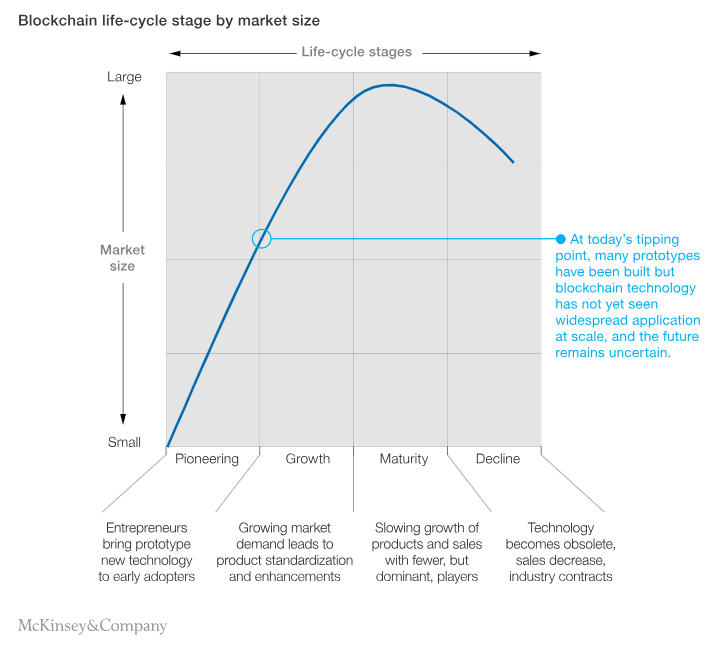
In this session, i have just shared some of the thoughts based on different articles, webinars, blogs and seeing in reality what different customers are trying to do with blockchain as compare to any other business applications implementation. Blockchain is driving from the 'use case' point of view. that's why it is very important that we should focus on the 3 lessons to follow and drive blockchain technology for business with clarity of what business problems we are going to solve.
Please do share your thoughts ......
Reference:
- An article by McKinsey & Company with the title “Blockchain’s Occam problem”
- A webinar from Gartner with the title “Make Blockchain Work for Your Organization”
- Source: IDC, Understanding the Blockchain Stack, #US44295318
My Toastmasters Journey
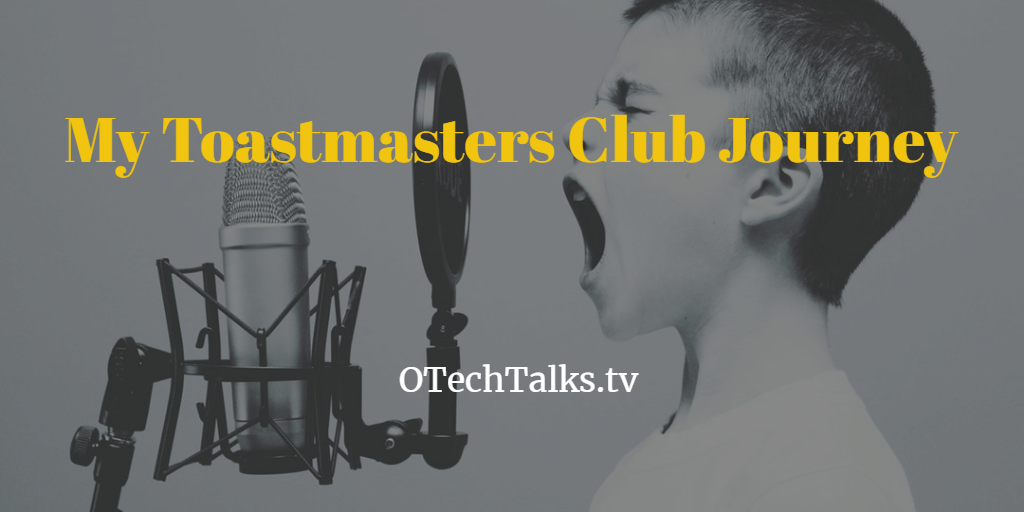
Toastmasters International is a world leader in communication and leadership development. Toastmasters organization has more than 352,000 memberships. Members improve their speaking and leadership skills by attending one of the 16,400 clubs in 141 countries that make up our global network of meeting locations.
Pathways helps you learn communication and leadership skills that you need to succeed. It gives you:
- The opportunity to build up to 300 unique competencies
- 10 specialized learning paths to choose from
- Online content, so that you can learn anytime, anywhere
- Real-world, transferable skills
I am part of DIC Toastmasters Club, amazing club if you want to improve communication and leadership skills, highly recommends you to join any Toastmasters club near to your place.
To share your thoughts:
- Leave a comment on the section below on this post
- You want to suggest any new topic we should cover in future Podcast
- Join us in Mastermind tribe
- Share this on Twitter, Facebook, If you enjoyed this episode and we together are learning new Technologies.
To help out this initiative:
- Leave a candid review for the OTechTalks Podcast on iTunes! Your ratings and reviews will help the session on iTunes.
- Subscribe to the Podcast on iTunes to get next sessions
Oracle Autonomous Blockchain Cloud Service
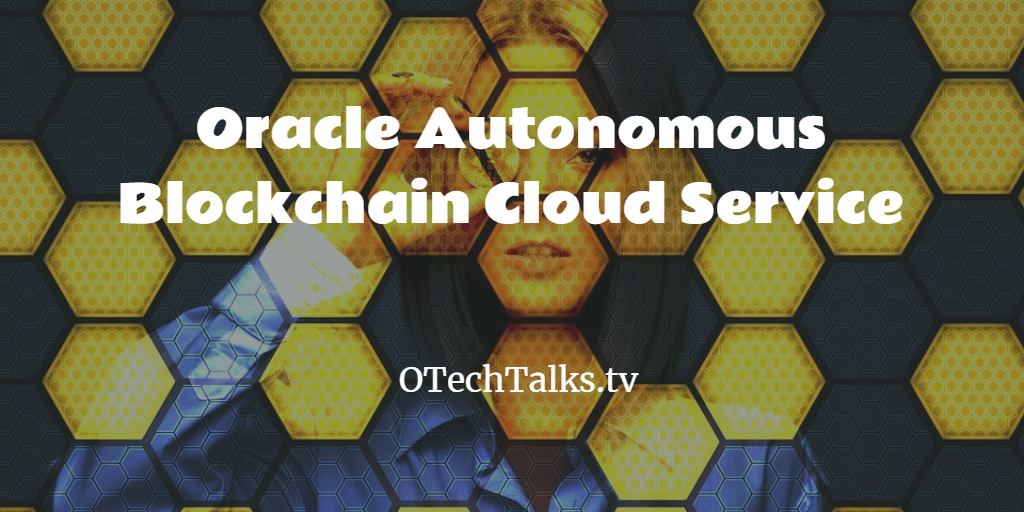
Oracle Autonomous Blockchain Cloud Service p-assembled and Managed PaaS are generally available from July 16th, 2018. In this session let’s review today the common features available and metric of Oracle Autonomous Blockchain Cloud Service, please note all the info which we are going to discuss and share from the public documents of Oracle Blockchain Cloud Service.
Oracle Autonomous Blockchain Cloud Service metric is 500 Transactions Per Hour,
- 500 Transactions Per Hour means 500 Blockchain Transactions attempted in an Oracle Autonomous Blockchain Cloud Service instance in one hour.
- Blockchain Transactionmeans a ledger query, an attempted endorsement transaction (irrespective of the outcome of transaction – success or failure), or an attempted commit transaction (irrespective of the outcome of transaction – success or failure) for each peer in the blockchain cloud service instance. A peer represents an entity (organization registered on the blockchain) executing Blockchain Transactions. One entity can have multiple peers. Customers specify the number of peers at provisioning time and can dynamically start additional peers.
A founder’s role is to creates and maintains the network in Blockchain network and participants that join the network. All organizations included in the network are called “Members”
Oracle Autonomous Blockchain Cloud Service is a “permissioned Blockchain”, which provides a closed ecosystem where only invited organizations (or participants) can join the network and keep a copy of the ledger. Permissioned blockchains use an access control layer to enforce which organizations have access to the network. The founding organization, or blockchain network owner, determines the participants that can join the network. All nodes in the network are known and use a consensus protocol to ensures that the next block is the only version of the truth.
There are three steps to consensus protocol:
- Endorsement — This step determines whether to accept or reject a transaction.
- Ordering — This step sorts all transactions within a time period into a sequence or block.
- Validation — This step verifies that the required endorsement are gotten in compliance with the endorsement policy and organization permissions.
Key features in the following 5 sections:
1-Build Trusted Business Networks
2-Automate with Smart Contracts
3-Conduct Private Transactions
4-Integrate Blockchain Transactions with core business Applications
5- Administration and Monitoring
You’ll Learn:
- Features of Oracle Autonomous Blockchain Cloud Service
- Oracle blockchain cloud metric
- Basics roles definition (endorser, order-er, validator)
Blockchain Resources:
Previous Session on Blockchain:
- When Not to Use Blockchain
- Recap of Future Blockchain Summit 2018 Dubai
- Introduction to Blockchain Technology
To share your thoughts:
- Leave a comment on the section below on this post
- You want to suggest any new topic we should cover in future Podcast
- Join us in Mastermind tribe
- Share this on Twitter, Facebook, If you enjoyed this episode and we together are learning new technologies.
To help out this initiative:
- Leave a candid review for the OTechTalks Podcast on iTunes! Your ratings and reviews will help the session on iTunes.
- Subscribe to the Podcast on iTunes to get the next sessions
6 Steps to start a Social Enterprise
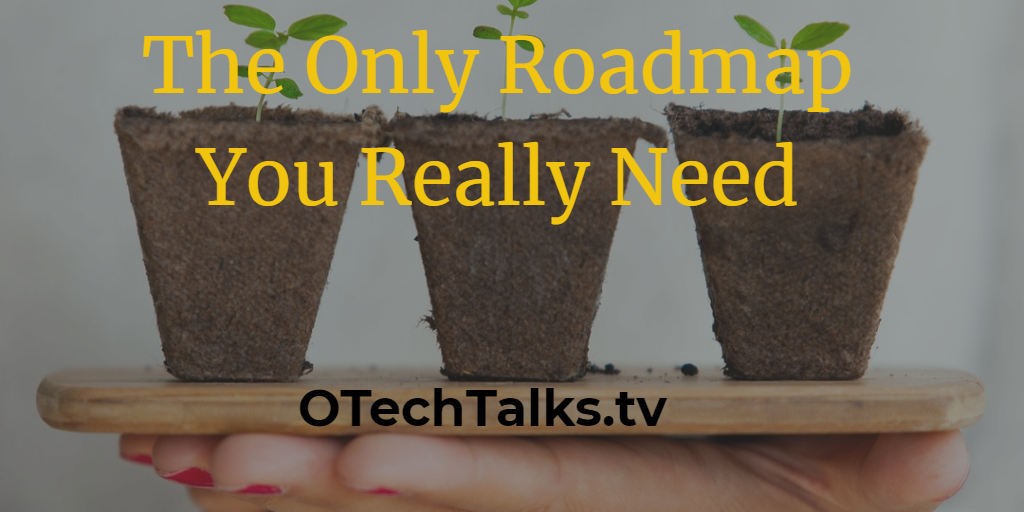
Social Enterprise, an organization that applies commercial strategies to maximize improvements in financial, social, and environmental well-being. In this session, we will discuss 6 steps to start a Social Enterprise.
Being a social enterprise also means investing in the broader social ecosystem, starting with an organization’s employees. It means treating all workers, on and off-balance-sheet, in a fair, transparent, and unprejudiced way. Leaders should seek to provide a work environment that promotes longevity and happiness, not only in an individual’s career, but also in the physical, mental, and financial spheres. By doing this, an organization invests in its own workforce and in the workforce ecosystem as a whole, which benefits the organization and society.
This is the 2nd session on Social Enterprise, we have covered basics in "Genesis of the Social Enterprise" podcast session no 34 which was based on 2018 Global Human Capital Trends published by Deloitte. In podcast no 30 with the title ‘Digital HR – Mission to Digital Transformation’ we discussed 2017 Global Human Capital Tends with the title of ‘Rewriting the rules for the digital age’.
You’ll Learn:
- What is social enterprise?
- What should we expect from social enterprise?
- How to embrace social enterprise?
- Human Capital role for building Future Organization – Social Enterprise.
- Actions to start for YOUR social enterprise.
Social Enterprise Resources:
- 2018 Global Human Capital Trends
- a triple bottom line (TBL). The TBL is an accounting framework that incorporates three dimensions of performance: social, environmental, and financial.
- The business case for inclusive growth
- Toastmasters has introduced Pathways learning experience
- 91% of global consumers expected companies to operate responsibly and address social and environmental issues.
- HBSCNY Social Enterprise Summit has presented a formula to set the goal of social enterprise
- TEDx talk at Columbia University’s Teachers College
- Harvard Business School’s “Social Enterprise Initiative”
- John Kotter’s eight-step process for leading change
- “Show me What you Can Do” and the book Effective Management of Social Enterprises published by Harvard University.
- study done by Ladders, it was found that recruiters spend 6 seconds reviewing an individual CV to declare it shortlisted or not.
- “From Theory to Action” article published by Oracle HCM
- “The HR maturity model” from The Maturity Institute. Picture source: HR Transformation: aligning people and business based on The HR maturity model.
To share your thoughts:
- Leave a comment on the section below on this post
- You want to suggest any new topic we should cover in future Podcast
- Join us in Mastermind tribe
- Share this on Twitter, Facebook, If you enjoyed this episode and we together are learning new Technologies.
To help out this initiative:
- Leave a candid review for the OTechTalks Podcast on iTunes! Your ratings and reviews will help the session on iTunes.
- Subscribe to the Podcast on iTunes to get next sessions
Genesis of the Social Enterprise
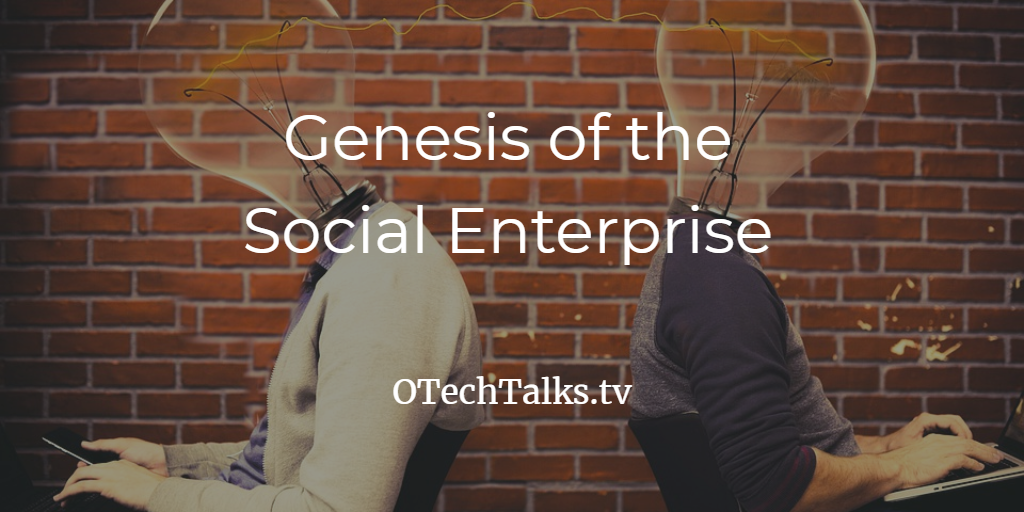
Today we are going to cover 2018 Global Human Capital Trends published by Deloitte. In podcast no 30 with the title ‘Digital HR – Mission to Digital Transformation’ we discussed 2017 Global Human Capital Tends with the title of ‘Rewriting the rules for digital age’.
Deloitte has named this 2018’s trends report ‘The Rise of the Social Enterprise’.
This year’s global survey is based on 11,000+ business and HR leaders and interviews with executives from some of today’s leading organizations.
In which they said that a fundamental change is underway. Organizations are no longer assessed based only on traditional metrics such as financial performance, the quality of their products or services. Rather, organizations today are increasingly judged on the basis of their relationships with their workers, their customers, and their communities, as well as their impact on society. This leads to transforming organizations from business enterprises into social enterprises.
What is a social enterprise?
As per Wikipedia definition: A social enterprise is an organization that applies commercial strategies to maximize improvements in financial, social and environmental well-being—this may include maximizing social impact alongside profits for external shareholders.
You’ll Learn:
- What is a Social enterprise?
- What are the 3 driving factors of this change
- High-lights of survey and 10 trends
Digital HR Resources:
To share your thoughts:
- Leave a comment on the section below on this post
- You want to suggest any new topic we should cover in future Podcast
- Join us in Mastermind tribe
- Share this on Twitter, Facebook, If you enjoyed this episode and we together are learning new Technologies.
To help out this initiative:
- Leave a candid review for the OTechTalks Podcast on iTunes! Your ratings and reviews will help the session on iTunes.
- Subscribe to the Podcast on iTunes to get next sessions
When Not to Use Blockchain

I Want a Blockchain! Do you really need a blockchain? Asking yourself this very important question can lead you on the right path to an answer and before embarking on a blockchain for business journey You have to get through with this.
When Not to Use Blockchain
Blockchain is a revolutionary technology but it is not always the right tool for the job at hand. If you are contemplating using blockchain technology, be sure to evaluate the problem fully and reach a conclusion that what business problem you are going to solve through blockchain technology.
The following conditions are not currently well suited to blockchain-based solutions (reference Edx course on Blockchain):
- The process involves confidential data
- The process stores a lot of static data, or the data is quite large
- Rules of transactions change frequently
- The use of external services to gather/store data
- In this session we have covered the following topics:
This session is in continuation of our previous session Basics of Blockchain. In this session of the podcast we are going to cover:
You’ll Learn:
- When not to use Blockchain
- When to use Blockchain
- Decision Tree/Model/Framework - when do you need Blockchain?
Blockchain Resources:
- Do You Need a Blockchain?
- Blockchain Beyond the Hype A Practical Framework for Business Leaders
- 11 questions will help you decide if blockchain is right for your business
- Mapping Global Transformations by World Economic Forum - Bockchain
- Medium article When do you need blockchain? Decision models
Now we are going to cover here different Decision Trees/Models to decide on Blockchain Technology:
These 11 questions will help you decide if blockchain is right for your business

Source: World Economic Forum
Birch-Brown-Parulava model
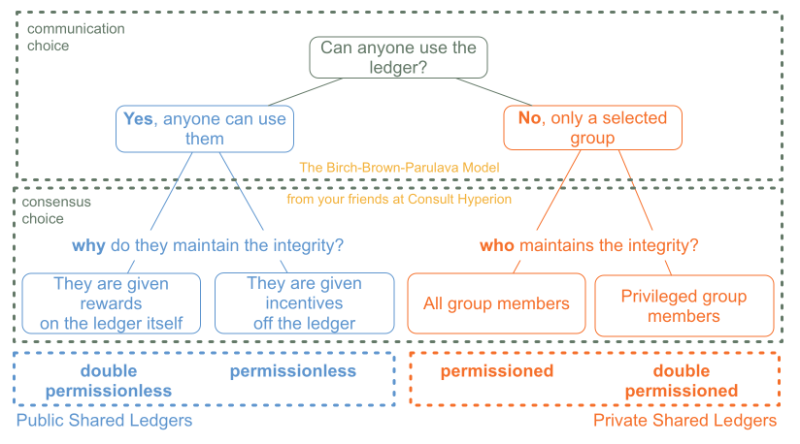
Suichies Model:
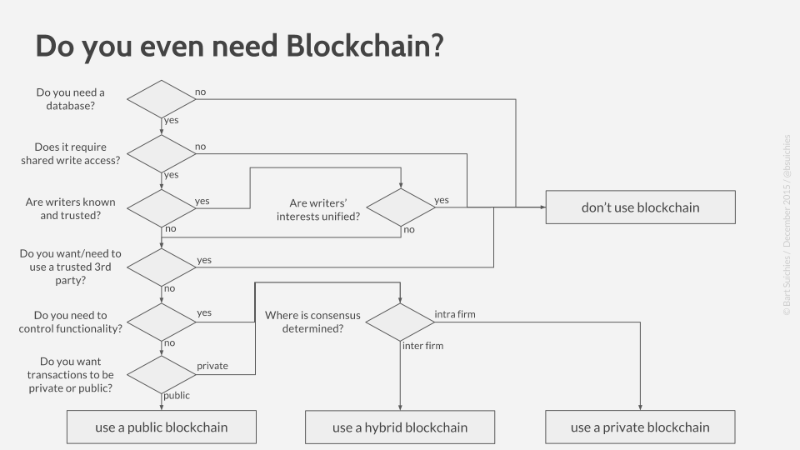
Lewis model
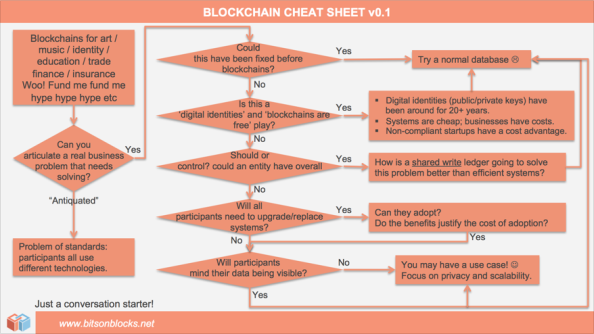
Sebastien Meunier model
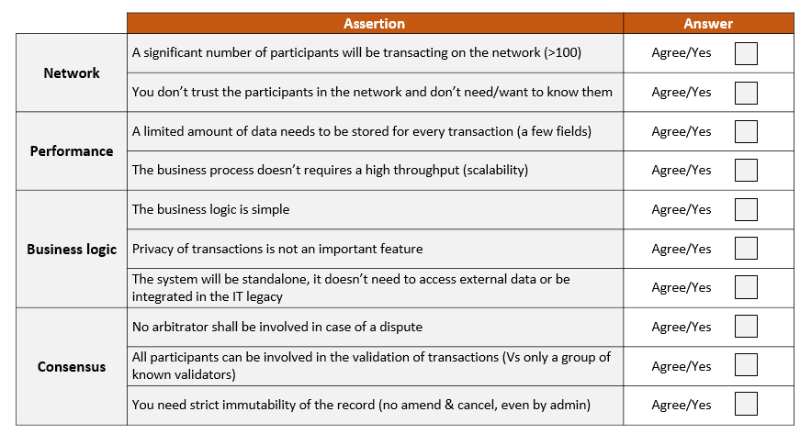
DHS Model
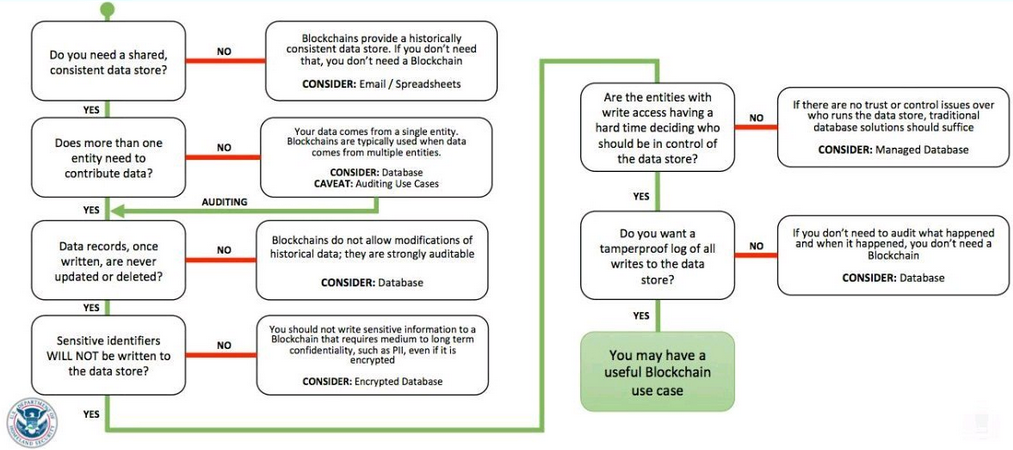
To share your thoughts:
- Leave a comment on the section below on this post
- You want to suggest any new topic we should cover in future Podcast
- Join us in Mastermind tribe
- Share this on Twitter, Facebook, If you enjoyed this episode and we together are learning new Technologies.
To help out this initiative:
- Leave a candid review for the OTechTalks Podcast on iTunes! Your ratings and reviews will help the session on iTunes.
- Subscribe to the Podcast on iTunes to get next sessions
Future Blockchain Summit 2018 Dubai Recap
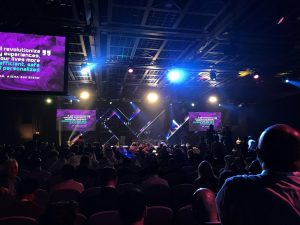
I had a chance to attend Future Blockchain Summit May 2-3, 2018 Dubai, these are some of the notes from the Blockchain summit. H.H. Dr. Aisha bin Bishr kicked off the Summit by highlighting how the government agency has prioritized Blockchain as the foundation of the emirate’s digital infrastructure. Michael Owen, former English footballer for Liverpool, Real Madrid, and Manchester United on the second day of the inaugural Future Blockchain Summit has announced that he teamed up with Global Crypto Offering Exchange (GCOX) to release his “OWN” Token and spoke about ‘Enhancing the Understanding of Token Economy.’
Everipedia, the world's first encyclopedia on the blockchain, was also launched
You’ll Learn:
- Dubai Blockchain strategy
- What happened at Future Dubai Summit?
- What are the projects launched by Dubai or working on Blockchain?
Blockchain Resources:
- Future Blockchain Summit
- Knowledge Hub on Smart Dubai
- Smart Dubai
To share your thoughts:
- Leave a comment on the section below on this post
- You want to suggest any new topic we should cover in future Podcast
- Join us in Mastermind tribe
- Share this on Twitter, Facebook, If you enjoyed this episode and we together are learning new Technologies.
To help out this initiative:
- Leave a candid review for the OTechTalks Podcast on iTunes! Your ratings and reviews will help the session on iTunes.
- Subscribe to the Podcast on iTunes to get next sessions
Introduction to Blockchain Technology
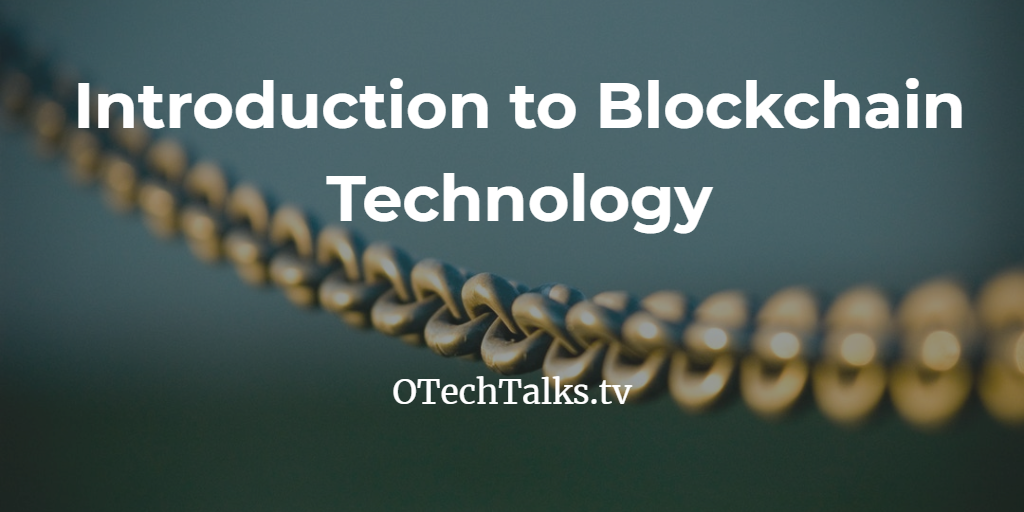
"The technology most likely to change the next decade of business is not the social web, big data, the cloud, robotics, or even artificial intelligence. It’s the blockchain ..." —Harvard Business Review "The Impact of Blockchain Goes Beyond Financial Services," May 2016
In Dubai Future Blockchain Summit is scheduled on 2-3 May, the first summit where 17 worlds first blockchain projects are gone be presented… I am excited to attend this and hear from the 17 of the world's first blockchain pioneers.
In this session i will be covering introduction to Blockchain and Distributed Ledger Technology.
According to hyperledger.org,"A blockchain is a peer-to-peer distributed ledger forged by consensus, combined with a system for "smart contracts" and other assistive technologies. A blockchain is a specific form or subset of distributed ledger technologies, which constructs a chronological chain of blocks, hence the name 'block-chain'. A block refers to a set of transactions that are bundled together and added to the chain at the same time.
A distributed ledger is a type of data structure that resides across multiple computing devices, generally spread across locations or regions. Distributed Ledger Technology includes blockchain technologies and smart contracts. While distributed ledgers existed prior to Bitcoin, the Bitcoin blockchain marks the convergence of a host of technologies, including timestamping of transactions, Peer-to-Peer (P2P) networks, cryptography, and shared computational power, along with a new consensus algorithm.
Business Blockchain Frameworks Hosted with Hyperledger (our focus is on Fabric)
Burrow: Provides a modular blockchain client with a permissioned smart contract interpreter partially developed to the Ethereum Virtual Machine (EVM) specification.
Fabric: An implementation of blockchain technology intended as a foundation for developing blockchain applications or solutions.
Iroha: A blockchain framework designed for simple and easy incorporation into infrastructure projects requiring distributed ledger technology.
Sawtooth: A modular platform designed for building, deploying, and running versatile and scalable distributed ledgers.
Indy: A distributed ledger that provides tools, libraries, and reusable components for creating and using independent, decentralized and digital identities.
You’ll Learn:
- What is blockchain technology?
- What is distributed ledger technology?
- How does blockchain work?
- What are smart contracts?
- Types of blockchain networks
- Benefits of blockchain
Blockchain Resources:
- Hyperledger org
- Oracle Blockchain Cloud Service from Oracle
- Certified Blockchain Expert from Blockchain Council
- Blockchain essentials course from IBM
- IBM Blockchain foundation developer course from IBM
- Blockchain for Business - An Introduction to Hyperledger Technologies from Edx
My Learning:
I have achieved following certificates so for...and this learning continues...
- Certified Blockchain Expert from Blockchain Council
- Blockchain for Business from Edx
- IBM Blockchain Essentials
- IBM Blockchain Foundation Developer
Thank You for such a wonderful response on this podcast, we have crossed 10,000+downloads and i will keep focusing on he topics based on your feedback/comments.
To share your thoughts:
- Leave a comment on the section below on this post
- You want to suggest any new topic we should cover in future Podcast
- Join us in Mastermind tribe
- Share this on Twitter, Facebook, If you enjoyed this episode and we together are learning new Technologies.
To help out this initiative:
- Leave a candid review for the OTechTalks Podcast on iTunes! Your ratings and reviews will help the session on iTunes.
- Subscribe to the Podcast on iTunes to get next sessions
Digital HR - Mission to Digital Transformation
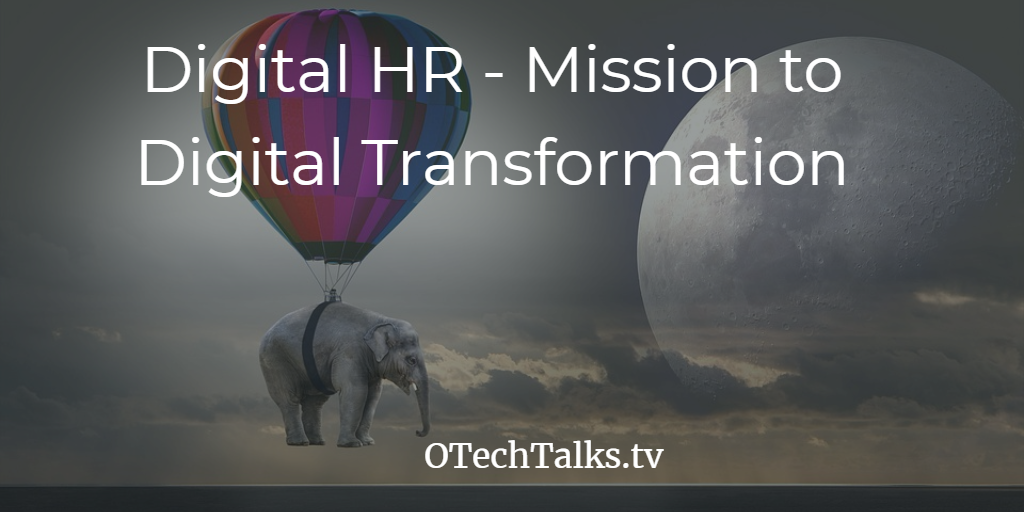
In this podcast we are going to discuss the finding of two surveys on Digital HR which I have got a chance to read last month as part of my Year 2018 resolution 'to improve reading culture' and it took me 1 month to find a time to do a proper session of podcast. so we are back on NEW YEAR RESOLUTIONS RESULTS 🙂
- 20th Annual Edition of The Sierra-Cedar 2017–2018 HR Systems Survey is the latest research edition of the longest-running, most widely distributed in the Human Resources (HR) industry. The Survey was conducted from May 4th through July 7th, 2017. The Sierra-Cedar 2017–2018 HR Systems Survey White Paper is based on 1,312 unique organizations representing a total workforce of 17.7 million employees and contingent workers
- 2017 Global Human Capital Trends survey by Deloitte with the tag name 'Rewriting the rules for the digital age' is amazing and as of now at the time of writing this blog they have already running the survey for the year 2018.
In this podcast, we will review the outcomes of both surveys and will share practical 3 paths to move your existing/legacy human resources application to be ready to play an integral part in the digital transformation mission.
According to Deloitte, these are the three (3) areas changing very rapidly in human resources:
- Digital Workforce: How can organizations drive new management practices (which Deloitte calls “digital DNA”), a culture of innovation and sharing, and a set of talent practices that facilitate a new network-based organization?
- Digital Workplace: How can organizations design a working environment that enables productivity; uses modern communication tools; and promotes engagement, wellness, and a sense of purpose?
- Digital HR: How can organizations change the HR function itself to operate in a digital way, use digital tools and apps to deliver solutions, and continuously experiment and innovate?
Digital Transformation in HR starts from: (as per the post of Deloitte)
Redefine your mission:
Upgrade core technology:
Develop a multiyear HR technology strategy:
Build a digital HR team:
Organize HR into networks of expertise with strong business partners:
Make innovation a core strategy within HR
Rotate younger people into the HR profession:
Benchmark:
Now if we will focus on 2nd point "Upgrade core technology" and 3rd point "Develop a multiyear HR technology strategy", we can conclude that you have to revamp your existing application (if you have already in place any software package like Oracle e-business suite) or if you don't have any software application in place (your first action should be to put in place). this will let you get ready with the basics.
i am taking an example, if you have already an Oracle e-Business Suite in place as your core HR system, what are the options you have got to start as a "MISSION" to get ready with digital transformation.
You have got 3 paths to embark on a Digital HR mission:
- Existing HR software with Core HR and Payroll on-premise -> Add additional functionality of Talent management modules from cloud products and co-exist with on-premise application
- Existing HR software with Core HR and Payroll on-premise -> move HR to cloud products and co-exist with on-premise payroll. Your Core HR and Talent will be on cloud
- Existing HR software with Core HR and payroll on-premise -> move complete HR suite to Cloud
all these 3 options are very well workable and any integration layer/requirement is being addressed from product point of view to help you to start your MISSION. now if you see finding of Sierra Cedar survey -Only 17% of organizations have a strategy for integrating HR applications, with 47% handling them on a case-by-case basis. Implementing an Integration Strategy could impact business outcomes by 20%.
Detailed discussion on survey results and Digital HR mission is covered in podcast. enjoy listening and #SocialLearning
Oracle Apps DBA Career is dead or alive in Cloud Era
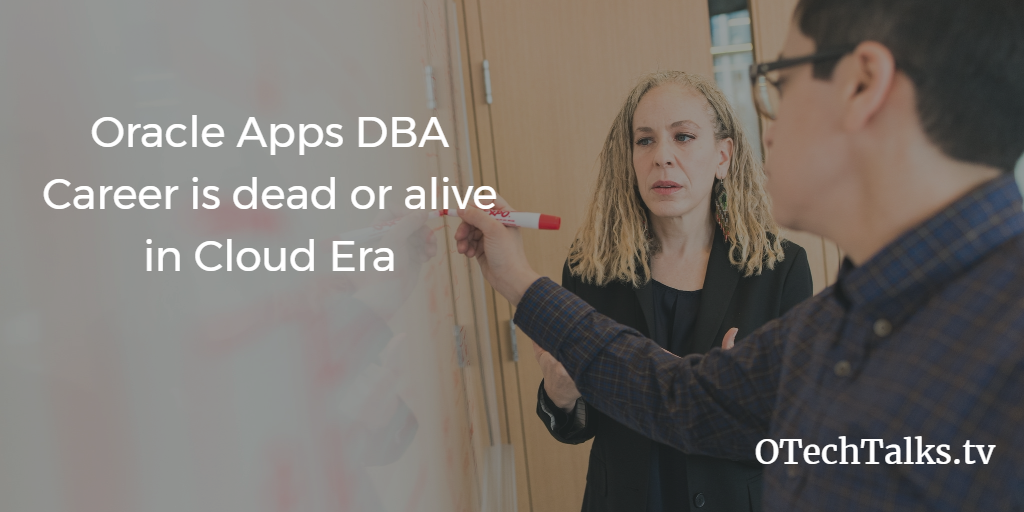
No More Apps DBA Its Cloud Era is the current reality and the big question is: Oracle Apps DBA Career is dead or alive in Cloud Era? An "Apps DBA" skillet emerges as part of packaged application administration like Oracle e-business suite, JD Edwards, etc to manage installation, running of the suite of Oracle Applications products, they do have a primary skillet of "Core DBAs" but the additional focus was always to manage the application (both Application and DB tier).
You’ll Learn:
- impact of Cloud Applications on Apps DBA career
- what are the choices available?
- what skills set required in the cloud era
Resources:
Three Ways To Energize Your DBA Career In The Cloud
- Leave a comment on the section below on this post
- You want to suggest any new topic we should cover in future Podcast
- Ask a question over on AsKashif
- Share this on Twitter, Facebook, If you enjoyed this episode and we together are learning new technologies.
To help out this initiative:
- Leave a candid review for the OTechTalks Podcast on iTunes! Your ratings and reviews will help the session on iTunes.
- Subscribe to the Podcast on iTunes to get the next sessions
Chatbots Basics 101, role of Natural Language Processing, Artificial Intelligence and machine learning
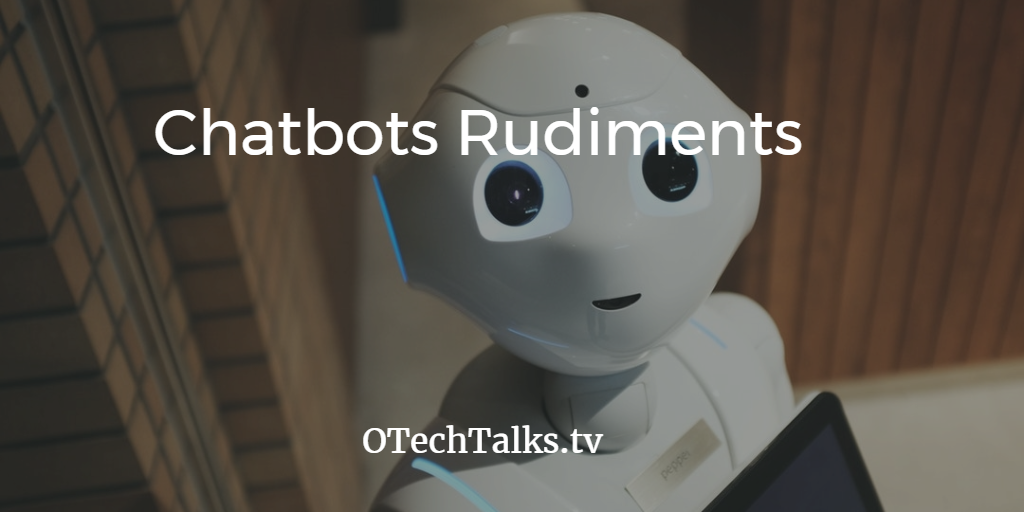
Chatbots basics 101 is a session to cover, what is a chatbot, the types of chatbots, and the role of Natural Language Processing & Artificial Intelligence, machine learning. After listening to this podcast you can embark on a journey to a world of Virtual Assistants and how they work.
As the organizations have started working on Conversational Interfaces (chatbots) to serve/improve customer service or we can say to serve millennials. with the rapid growth and impact of Social Media we are feeling more comfortable interacting with others through messages/chats via WhatsApp, Fb messenger, Slack, or other social networks and as per BI Intelligence "Messaging Apps have surpassed Social Networks, monthly active users for top 4 social networks are less compare to messages apps". A
- Chatbots Rudiments
- Types of Chatbots, Conversational Interface
- Natural Language Processing (NLP)
- Artificial Intelligence (AI)
- Machine Learning (ML)
- A brief history of Chatbots from drift.com
- A bot that’s your friend. In China there is a bot called Xiaoice, that over 20 million people talk to
- Chatbot Maturity Framework "Your Best Agent Is a Chatbot by www.247-inc.com"
- Current underlying chatbot technology
- Retrieval-based vs. Generative models
- Natural Language Processing (NLP)
- Gartner Hype Cycle
- Chatbot maturity model by Capgemini, this we have not discussed in the podcast but it is good blog to discuss how chatbot can meet expectations.
- Leave a comment on the section below on this post
- You want to suggest any new topic we should cover in future Podcast
- Ask a question over on AsKashif
- Share this on Twitter, Facebook, If you enjoyed this episode and we together are learning new Technologies.
To help out this initiative:
- Leave a candid review for the OTechTalks Podcast on iTunes! Your ratings and reviews will help the session on iTunes.
- Subscribe to the Podcast on iTunes to get next sessions
9 Steps to Build and Deploy PaaS Extensions for Oracle ERP, HCM Cloud Applications
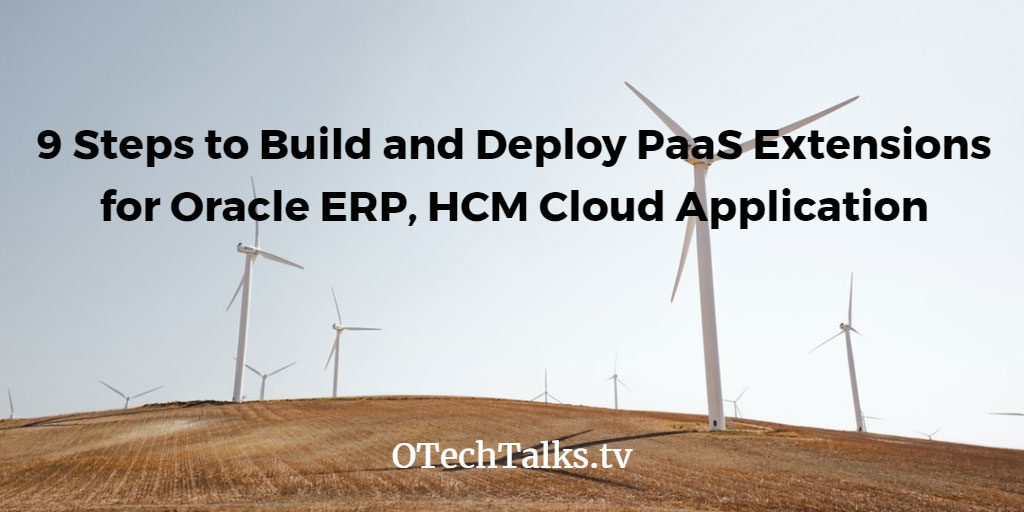
This month, I am on a mission to learn everything I can about PaaS for SaaS. In this session number 27, we are discussing what are the 9 steps to build and deploy PaaS Extensions for Oracle ERP, HCM Cloud Applications. You will learn the basics of each step and quickly start developing your extensions for the SaaS application.
You'll Learn:
9 Steps to get started with PaaS development for SaaS application
- Know the Requirement
- Know the Cloud Applications
- Know the PaaS Tools
- How to develop Cloud Applications User Experience
- What is Rapid Development Kit
- How to use Design Patterns/wireframes
- Choice of IDE Environment
- How easy to deploy PaaS Extension
- How to embed PaaS extension into SaaS GUI
Resources:
- Oracle SaaS Application
- Oracle PaaS
- Session no 21 - PaaS4SaaS – Extend Oracle Cloud Applications
- Blog post- 5 things I wish I’d known when I started developing PaaS Extensions for Oracle SaaS Applications
- How to add into springboard blog post - PaaS4SaaS How to add PaaS developed App link in Oracle HCM Cloud
- Rapid Development Kit (RDK)
- Leave a comment on the section below on this post
- You want to suggest any new topic we should cover in future Podcast
- Ask a question over on AsKashif
- Share this on Twitter, Facebook, If you enjoyed this episode and we together are learning new technologies.
To help out this initiative:
- Leave a candid review for the OTechTalks Podcast on iTunes! Your ratings and reviews will help the session on iTunes.
- Subscribe to the Podcast on iTunes to get the next sessions
10 Ways to Win and Influence Tough Users During Journey to Cloud Applications
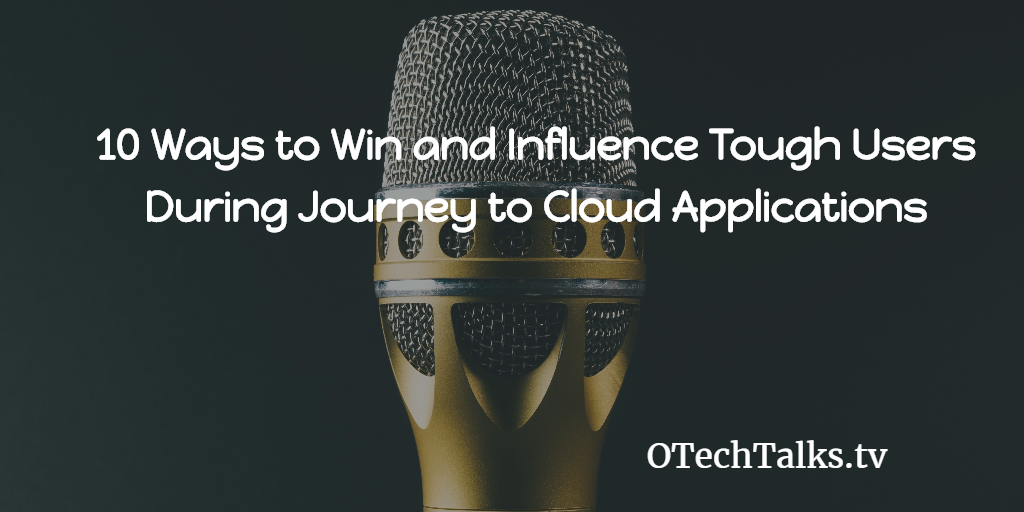
In this session, we will be discussing how to Win and Influence Tough Users During their Journey to Cloud Applications. As we are moving on-premise enterprise applications to the cloud and within the organization, we are running digital transformation projects to cope with the latest trends and business requirements. The major impact is how to manage change management during these transformational projects and when we are talking about typically enterprise applications, it has a huge impact due to the way new cloud applications works and the functionality of what they provide.
Based on experience and research I have shared my thoughts, what are the strategies we will be following to win the heart of our business users, and how to lead the project of transformation.
LINKS AND RESOURCES MENTIONED IN THIS SESSION:
- 50 Reasons not to change
- 20-60-20 framework was introduced by Dr. Rod Napier
- Richard Beckhard & Rubin Harris Change Equation (DxVxF>R)
- Project Management Institute
Thank you so much for Listening! Join today OTechTalks.tv and Be Part of Tech Talk?
If you enjoyed this episode and we together are learning new Oracle Technologies, please share it with other folks.
Also, please leave a candid review for the OTechTalks Podcast on iTunes! Your ratings and reviews will help the session on iTunes.
Please subscribe to the Podcast on iTunes to get automatic updates
Oracle HCM Cloud Global Human Resources New Features R12
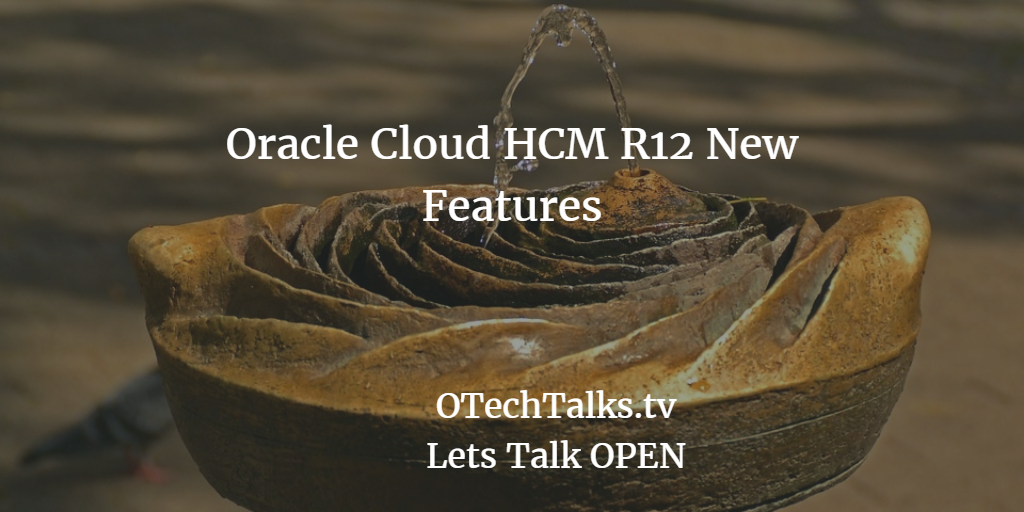
Oracle HCM Cloud Global Human Resources Release 12 new features are introduced on the What's New SaaS Readiness portal. These are the notes from my learning of these new features.
Any new feature introduced in the cloud product comes with 4 options to enable/use the feature in a product. These actions are mentioned against each feature of HCM Cloud and you will find a checklist against each option to take any action or not.
Action Required to enable feature:
- Feature Automatically available
- End-user Action required
- Administrator Action required
- Oracle Service Request Required
Global Human Resources has introduced the following 7 features:
- Enhanced Add Person Flows
- Enhanced Manage Direct Reports
- Changes from Extensible to User for Specific Person Lookup Types
- Enhanced Duplicate Person Validation
- Salary Update When Changing Working Hours
- Areas of Responsibility Enhanced to Include Additional Attributes and Responsibility
- Worker User Accounts No Longer Created Automatically for Users Loaded in Bulk
I have discussed these features in the podcast and you can also find further details from Oracle Global Human Resources Cloud Release 12 What's New.
Thank you for listening and join us on the OTechTalks Facebook page or my personal Facebook page Kashif Manzoor and please subscribe to the Podcast on iTunes to get automatic updates
Join today OTechTalks.tv and Be Part of Open Tech Talks?
6 Seconds To Get Your Next Job

The study found that recruiters spend only 6 seconds reviewing an individual resume. So How you get your resume to be selected in 6 Seconds. 6 Tips for Writing an Effective Resume. This may be your best chance to make a good first impression, so you’ve got to get it right. Need some basic information about writing a resume and making it stand out? Looking for advice on how to write your next job resume....
Here is a rule of thumb to keep in mind:
A resume is a marketing document, “The hiring manager is the buyer, you’re the product, and you need to give him a reason to buy.”
In this session, we are discussing what are the 6 tips very important for your CV. Read NOW and share your feedback.
This study conducted by The Ladders -Keeping an eye on recruiter behavior.
Understanding Mobile Application Development - HTML5, Native or Hybrid
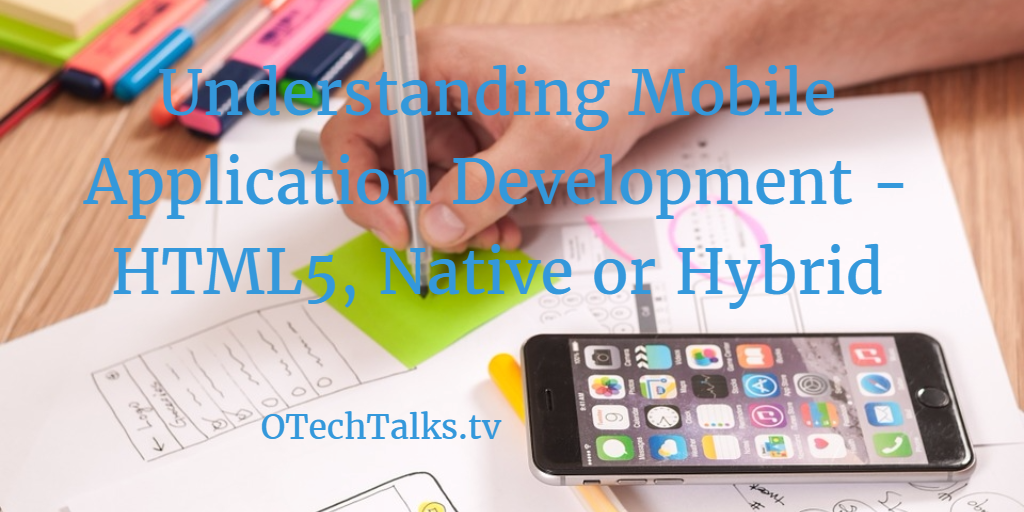
Basic concepts of Mobile Application Development - HTML5, Native, or Hybrid. In this session, we have outlined 3 basic principles of Mobile applications.
- HTML5 Apps are standard websites but developed with HTML5, JavaScript, and CSS. HTML5 mobile applications are mobile versions of web pages. they are accessed through mobile devices web browsers and deployed over the internet like website. these apps can not get access to native device functionality (camera, calendar, geolocation, etc.)
- Native mobile applications are coded in the unique programming language specific to a given mobile platform (iOS or Android) using the development tools and language that the respective platform supports (e.g., Xcode and Objective-C with iOS, Eclipse, and Java with Android). A native application lives in the device and is installed through the web store. Native apps are feature-rich and can access all features of the phone.
- Hybrid mobile applications are a combination of HTML5 and native apps like hybrid cars to use the features of both approaches. HTML5 apps inside a thin native container unite the best (and worst) features of native and HTML5 apps.
Mobile App Decision Tree - How to decide which option to go. there are 2 key points on this:
- Time (How long will the development take?)
- Budget (How much will it cost?)
On the functionality side, we may need to ask these questions:
- Are we going to use device sensors or we have requirement to use?
- Is offline data necessary?
we have discussed advantages and dis-advantages of all options, hope you will like the podcast. Feel free to share your comments/feedback.
Thank so much for Listening!
If you have some feedback/comments on this session or you want to suggest some new topic we should cover in future Podcast. Please leave a note in the comment section below!
If you enjoyed this episode and we together are learning new Oracle Technologies, please share it with other folks.
Also, please leave a candid review for the OTechTalks Podcast on iTunes! Your ratings and reviews will help the session on iTunes.
Please subscribe to the Podcast on iTunes to get automatic updates
Join today OTechTalks.tv and Be Part of Tech Talk?
Career Choices for oracle technical consultant in cloud applications era
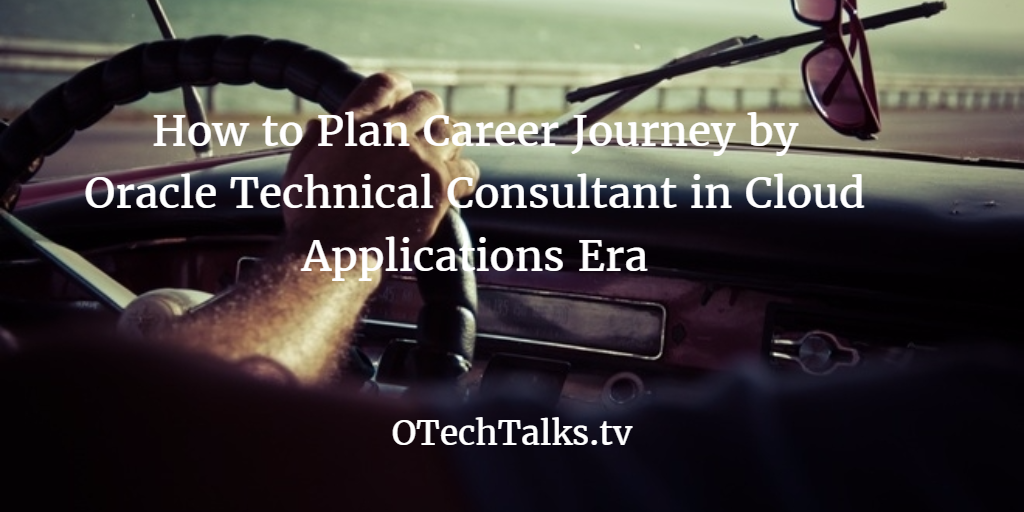
Today’s session is focusing on what are the Career choices available for Oracle Application Technical consultant in the era of Oracle Cloud Applications. Organizations are adopting to move to Cloud Model like Oracle HCM Cloud, ERP Cloud, CX Cloud. 2nd post on this topic is Oracle Technical Professionals Journey from EBS to Cloud Applications
I am a huge fan of #SocialLearning and I believe we can grow our knowledge together based on sharing of experiences and learning from each other.
Today’s session is focusing on what are the Career choices available for Oracle Application Technical consultant in the era of Oracle Cloud Applications. Organizations are adopting to move to Cloud Model like Oracle HCM Cloud, ERP Cloud, CX Cloud. The basic question for in-house ERP teams is, what they will do? How Cloud Applications are going to impact them? I will be covering in this post how Apps Tech Consultant can plan their journey to cloud similar to the organizations that are also going through the Journey to cloud paradigm where modern processes are being adopted and requirements of millennials are being met through these modern applications. Most of the enterprise applications are already using enterprise applications like Oracle E-Business Suite, Siebel CRM, JD Edward, etc and Apps Tech consultants are champion in the on-premise application and building a lot of Tech stuff to meet different user requirements.
We have discussed in the Podcast what Apps Tech-consultants were doing in the case of EBS and what they need to do now for Cloud Applications:
- Oracle Application Tech consultants were focusing on developing RICE objects. RICE acronym Stands for RICE (Reports, Interfaces, Conversions, Enhancements, or extensions). With the release of the R12 version of the Oracle e-business suite, RICE objects transformed to CEMLI (Configuration, Extension, Modification, Localization, and Integration). It’s become an extension framework for ERP Applications.
- The main focus was on creating Reports, Alerts, OAF Pages, and Interfaces/Integrations. Now with the Cloud Applications
- Oracle Transactional Business Intelligence is the default reporting tool and BI Publisher is available for ad-hoc reporting.
- All extensions are being developed in a PaaS environment where we are getting Java Cloud Service – SaaS extension to build additional features
- Integration with third-party applications can also be through iPaaS.
- What should be the focus areas for Apps Tech Consultant? Where to invest his time and energy to learn new technology tools to transform his career with the rapid growth of Cloud Applications?
- All these career choices/options are outlined in the podcast, how to plan and start learning.
LINKS AND RESOURCES MENTIONED IN THIS SESSION
- To learn more on PaaS4SaaS specific to build an extension for Cloud Application refer to earlier Podcast PaaS4SaaS – Extend Oracle Cloud Applications
- Java Cloud Service SaaS Extension - a Java EE run-time environment for custom applications. Designed to use with SaaS.
- Mobile Builder Cloud Service - build mobile back-end components for custom mobile applications.
- BI Cloud Service - build rich analytics based on data
- Integration Cloud Service - SOA-based declarative mapping of integration flows based on prebuilt connectors.
- Process Cloud Service - SOA-based business process workflow creation.
- SOA Cloud Service - use BPEL and associated SOA Suite components to build process-driven solutions.
- Document Cloud Service - content management and collaboration facilities for business users.
another blog post on this topic is Oracle Technical Professionals Journey from EBS to Cloud Applications
Thank you so much for Listening!
We have crossed 2000+ downloads of this Podcast. Once again thank you so much.
Please join the Facebook page on OracleTechTalks and you can also join Facebook Group OTechTalks for interactive discussion and #SocialLearning
If you have some feedback/comments on this session or you want to suggest some new topic we should cover in future Podcast. Please leave a note in the comment section below!
If you enjoyed this episode and we together are learning new Oracle Technologies, please share it with other folks.
Also, please leave a candid review for the OTechTalks Podcast on iTunes! Your ratings and reviews will help the session on iTunes.
Please subscribe to the Podcast on iTunes to get automatic updates
Join today OTechTalks.tv and Be Part of Tech Talk?
21: PaaS4SaaS - Extend Oracle Cloud Applications
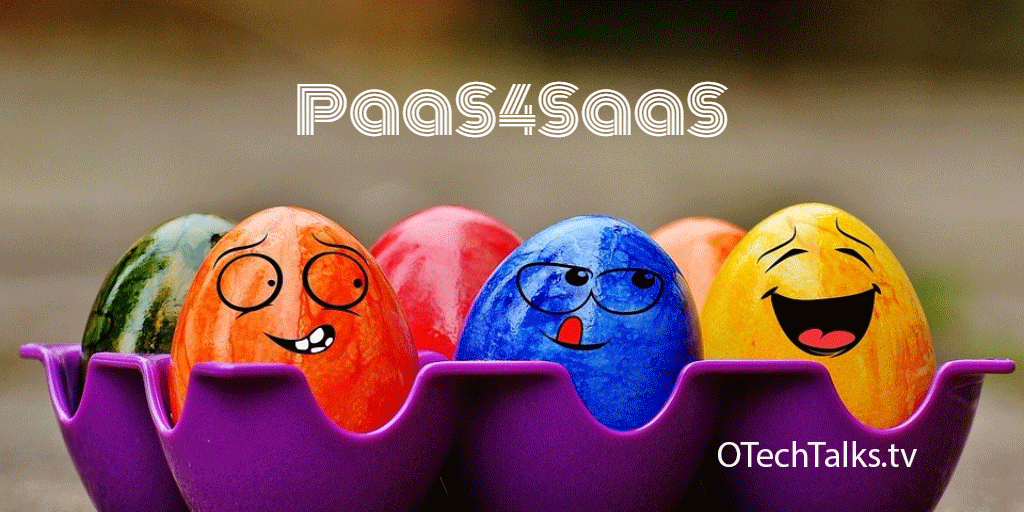
Oracle PaaS4SaaS is a term that reflected the use of Platform as a Service (PaaS) for Software as a Service (SaaS), what does it mean is to use PaaS products for your SaaS products/services. Uses of PaaS can be categories into a. to build extension/features to your Oracle SaaS application like any feature/extension to HCM/ERP Cloud applications, b. we can migrate our existing custom build application to PaaS as it is actually a development platform like JCS, c. Use Integration tools of PaaS to integrate hybrid deployed applications.
In this podcast, we specifically discussed the PaaS4SaaS option of adding additional features/functionality to Cloud HCM/ERP/CX applications. This extension through Java Cloud Service – SaaS Extension is our topic. What actually JCS-SX is and how it works and how we can use Oracle Applications Cloud User Experience Rapid Development Kit (RDK) to develop our own extensions. We explored how Oracle Tech consultant can transform their career to start learning now about JCS.
Java Cloud Service: We have seen over the past few years that due to complex requirements for custom extension development Java Cloud Service enterprise edition with Database Cloud service is the right fit for custom development. As it gives you full control over the development and management of Java as a PaaS model to fulfill high requirements due to the high workload of your organizations.
Visual Builder Cloud Service: VBCS is the low code development platform that is available now as a part of Oracle Integration Cloud. VBCS can be used to develop lightweight extensions development, integrate with external systems, and incorporate business processes. basically, as part of Oracle Integration Cloud you will be getting the following 3 products to achieve custom requirements:
- Integration with Oracle, non-Oracle applications including cloud, on-premise
- Process Cloud Service
- Visual Builder Cloud Service
Don’t forget to share your comments with me. Let’s together learn new technologies. We have not covered other PaaS offerings like SOA CS, ICS, Process Cloud Services, Document Cloud Service, BI Cloud Service and Mobile Cloud Service, etc.
20: Oracle e-Business Suite on Oracle Public Cloud
In this session, we will review how to take the Oracle e-business suite to Oracle Public Cloud, what are different options available today for EBS customers to move to Cloud.
LINKS AND RESOURCES MENTIONED IN THIS SESSION
Getting Started with Oracle E-Business Suite on Oracle Cloud (Doc ID 2066260.1)
Run Oracle E-Business Suite on Oracle Cloud today!
Thank you so much for Listening!
Join today OTechTalks.tv and Be Part of Tech Talk?
If you have some feedback/comments on this session or you want to suggest some new topic we should cover in future Podcast. Please leave a note in the comment section below!
If you enjoyed this episode and we together are learning new Oracle Technologies, please share it with other folks.
Also, please leave a candid review for the OTechTalks Podcast on iTunes! Your ratings and reviews will help the session on iTunes.
Please subscribe to the Podcast on iTunes to get automatic updates
19: Secret Recipe of Successful Oracle e-Business Suite R12.2.4 Upgrade
Upgrade to Oracle EBS R12.2.4 from EBS R11i or R12.1.3: in this session, we will reveal the secret recipe for successful R12.2 upgrade as Part12 session of 18 Overview of Upgrade of Oracle E-business Suite.
LINKS AND RESOURCES MENTIONED IN THIS SESSION
Installation Guide: Using Rapid Install Release 12.2 (12.2.0) Part No. E22950-14
Oracle E-Business Suite Release Notes, Release 12.2 (MOS Note: 1320300.1)
Thank you so much for Listening!
Join today OTechTalks.tv and Be Part of Tech Talk?
If you have some feedback/comments on this session or you want to suggest some new topic we should cover in future Podcast. Please leave a note in the comment section below!
If you enjoyed this episode and we together are learning new Oracle Technologies, please share it with other folks.
Also, please leave a candid review for the OTechTalks Podcast on iTunes! Your ratings and reviews will help the session on iTunes.
Please subscribe to the Podcast on iTunes to get automatic updates
18: Overview of Oracle e-Business Suite R12.2.4 Upgrade
Upgrade of Oracle EBS R12.2.4, an overview will be covered in this session, and in next session 19, we will cover the Secret Recipe for Successful Upgrade of Oracle E-business Suite.
LINKS AND RESOURCES MENTIONED IN THIS SESSION
Installation Guide: Using Rapid Install Release 12.2 (12.2.0) Part No. E22950-14
Oracle E-Business Suite Release Notes, Release 12.2 (MOS Note: 1320300.1)
Thank you so much for Listening!
Join today OTechTalks.tv and Be Part of Tech Talk?
If you have some feedback/comments on this session or you want to suggest some new topic we should cover in future Podcast. Please leave a note in the comment section below!
If you enjoyed this episode and we together are learning new Oracle Technologies, please share it with other folks.
Also, please leave a candid review for the OTechTalks Podcast on iTunes! Your ratings and reviews will help the session on iTunes.
Please subscribe to the Podcast on iTunes to get automatic updates
17: What is Oracle ACE Program
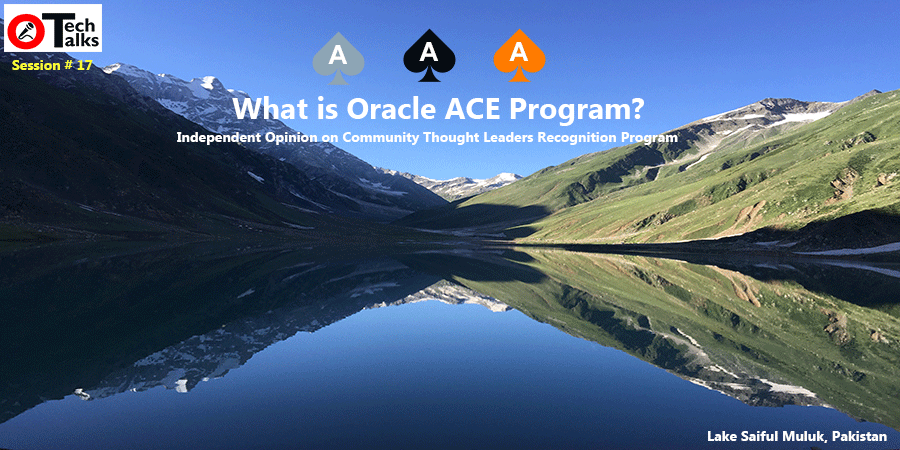
In this session, we will review what is Oracle ACE Program? And benefits of joining the ACE program. We will also discuss 8 steps criteria that lead Oracle Professionals to the ACE title. basically, I have shared my thoughts on the ACE program and benefits to get into the road of folks who believe in sharing knowledge and experience with other community users.
I have got Oracle ACE in May 2013 and it was a very happy moment for me to be part of the Oracle experts club who I use to follow and read tech content.
You can listen to another podcast: inside look on ACE Program.
LINKS AND RESOURCES MENTIONED IN THIS SESSION
- Oracle ACE Program
- Oracle ACE Program FAQ
- Nominate an Oracle ACE
- Middle East Oracle User Group
- Oracle ACE Directory
- Oracle Community Forum
Thank you so much for Listening!
Join today OTechTalks.tv and Be Part of Tech Talk?
If you have some feedback/comments on this session or you want to suggest some new topic we should cover in future Podcast. Please leave a note in the comment section below!
If you enjoyed this episode and we together are learning new Oracle Technologies, please share it with other folks.
Also, please leave a candid review for the OTechTalks Podcast on iTunes! Your ratings and reviews will help the session on iTunes.
Please subscribe to the Podcast on iTunes to get automatic updates
